One of the world’s most ancient nations — the nation of Azerbaijan — has the right to feel proud for its history, material and cultural monuments, literature, arts, and music heritage.
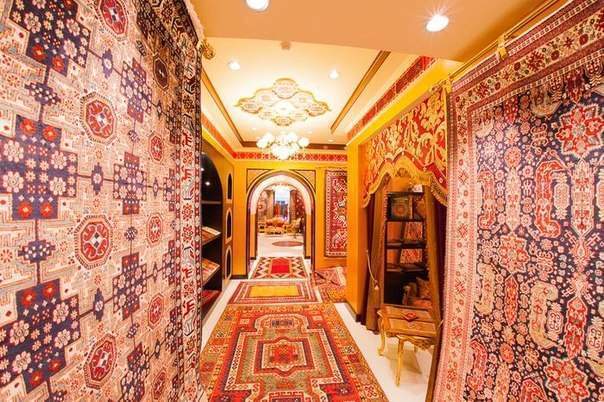
The wonderful nature, climate, natural resources of the country produced a significant impact on the artistic thinking and creation skills of Azerbaijani people as well. In spite of the long and difficult way undergone by different types of arts in Azerbaijan, they still represent unity and provide outstanding opportunities for the creation of a full idea of the fine arts of Azerbaijan. The folk arts of Azerbaijan are multi-colored, complete, and rich, as its natural resources. Folk art is connected with the daily life of people and daily life occupies a very special life in the fine arts as well. Folk arks cover a long period from ancient times to nowadays and including a variety of products from garments to housing goods and decoration. Quite obviously, the style of life, aesthetic tastes, the national image, and qualities, are strongly reflected in folk arts. One can easily come across numerous wonderful models of Azerbaijani folk arts in the world’s largest museums. The pieces of arts created by the skillful hands of Tabriz, Nakhichevan, Ganja, Gazakh, Guba, Naku, Shaki, Shamakhi, and Nagorny Garabagh can be found in large museum collections of Victoria and Albert of London, Louvers of Paris, Metropolitan of Washington, and Vienna, Rome, Berlin, Istanbul, Tehran, Cairo museums.
The history of folk arts in Azerbaijan has a long and interesting history. Works of art made from metal extracted from Nakhichevan, Migachevir, Gadanay, Ganja, and other places are approximately 5000 years old. Crockery, weapons, and adornments found here are not historical facts alone, but valuable sources which testify to the skills of the master.
Material and cultural models, found during archaeological excavations in the territory of Azerbaijan, testify that our ancestors made crockery, daggers, axes, belts, and adornments of bronze and used their daily life. This proves the ancient age of such types of activity as a copper-smithy and gold smithy.
There are those with portrayals, showing traditions, religious ideas, and even garments of people of that epoch among art patterns made from metal.
History, of ethnographical and artistic features of folk art, is reflected on the garments. These features are reflected both on garments of a certain form and its adornments and fine needlework, knitting.
Bronze needles and awls from the beginning of the bronze epoch (III millennium B.C ) were found during archaeological excavations in Azerbaijan as well. These findings prove that the ancient population of Azerbaijan could sue clothes for themselves. Little clay statues founded from Kultapa and Mingachevir (III millennium B.C) and seals of the V century B.C found in Mingachevir provided opportunities to have a certain idea of garments of that time. Clothing remnants sued from different silk materials are found in Mingachevir catacombs of V-VI centuries B.C. A number of adornments ( III-IV century B.C), made of gold, and clay crock of foot-gear form are well-grounded evidence, proving the old high material culture of Azerbaijanis.
Different pictures scraped on housing implements made from copper, bronze, gold, and adornments, prove the existence of fine art in Azerbaijan since ancient times.
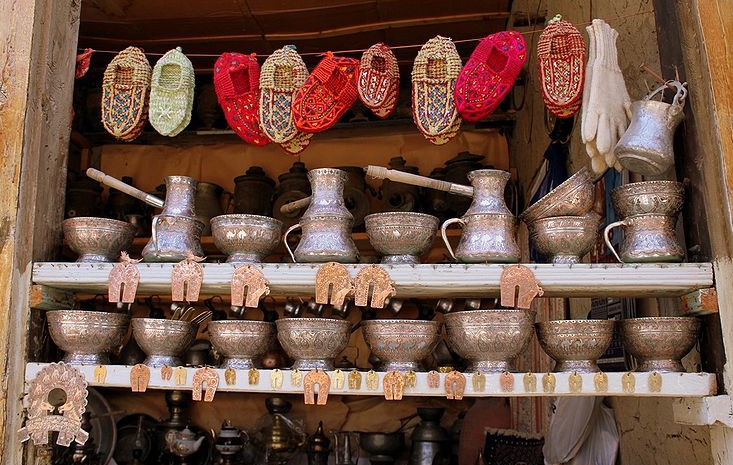
Horse-cloth with flowers on clay figure of horse (II millennium B.C.), found in Maku in South Azerbaijan, golden basin with a picture of the line (I millennium B.C), found in Hasanli hill near the Urmiya lake, and other findings show the ancient history of carpet-making, one of the branches of folk art in Azerbaijan.
Remains of palaz (a kind of carpet without pile) and a carpet of I and III centuries were discovered during an archaeological dig in Mingachevir.
According to an archaeological dig and written sources Azerbaijan people have been occupying with carpet-making since the bronze epoch (late II millennium – early I millennium). Herodotus, Klavdi Elian, Ksenofont and other world historians wrote about carpet-making development in Azerbaijan.
Carpets, weaved by separate carpet-making schools of Azerbaijan (Guba, Baku, Shirvan, Ganja, Gazakh, Nagorny Karabakh, Tabriz) in different periods, amaze people till nowadays. Most of them are kept in well-known museums of the world.
Gobustan rock pictures, pictures, belonged to the early bronze epoch (III millennium B.C) in Aychingilli and Parichingil mountains near the Zalkha lake in the Kalbajar region, rock pictures in the Gamigaya mountains in the north of Ordubad town have exception importance among the eldest patterns of fine art. Pictures about ancient people’s mode of life, welfare, labor, carved in the Gobustan rockeries, represent special interest. Different subjects, scenes on hunting, cattle breeding, planting, and other branches of household, human and animal pictures were carved in a dynamic way. The Gobustan rock pictures — pictograms cover multi-centuries old history from primitive communal order to feudalism.
Azerbaijan was rich in architectural pieces one of the branches of folk art along with works of fine art since ancient times. Maiden tower and Shirvanshahs palace in Baku, Momina Xatun and Yusif ibn Kuseyr mausoleums, created by architect Acami in Nakhichevan, Natavan’s home, pictures on walls of Shaki khan palace and other patterns are rare pearls of architecture.
Picture of people, dancing Yalli, represents special interest among the Gobustan rock pictures. This picture testifies Azerbaijan people’s interest in music since ancient times.
The motherland of Azerbaijan people possessed rich musical and cultural heritage is famous as Land of flames.
Azerbaijan music, enriching world musical culture with its rare pearls, has multi-centuries old traditions. Creators of folk music, handed over these traditions to generations, have a great role in the development of Azerbaijan music.
Folk songs, dances, ashug creations (folk poets and singers) have a specific place in Azerbaijan national music.
Mugams are the foundation of Azerbaijan national music. It is not accidental that UNESCO, a specialized organization of UN, entered Azerbaijan mugam into the list of world cultural heritage.
Our national music has been developing along with literature since ancient times. For instance, mugam developed along with Eastern poesy. Thus, singers, performed mugam, recited ghazals (a kind of poem) by Azerbaijan well-known poets as Nizami, Khagani, Fuzuli, Nasimi. Poetic forms of national poesy like Garayli, divani, tajnis along with goshma, mukhammas, ustadnama, gafilband are ashugs‘ favor forms.
Works of art, created by classics and contemporaries, take an honorable place in world cultural treasure. Works by M.F.Akhundov, N.Vazirov, M.S.Ordubadi, G.Zakir, M.A.Sabir, J.Mammadguluzade, M.P.Vagif, M.V.Vidadi, and other poets and writers hasn’t lost their aesthetic importance.
One of the art kinds, related to Azerbaijan literature, is theatre. The roots of Azerbaijan theatre art are related to people’s activity, mode of life, solemn and wedding traditions, range of vision. Elements of spectacle in rites, ceremonies, and games took important role in popular theatre. It was realistic and related to working categories. The repertoire of popular theatre consisted of short spectacles of ethical content. Popular theatre played an important part in the establishment of Azerbaijan’s professional theatre.
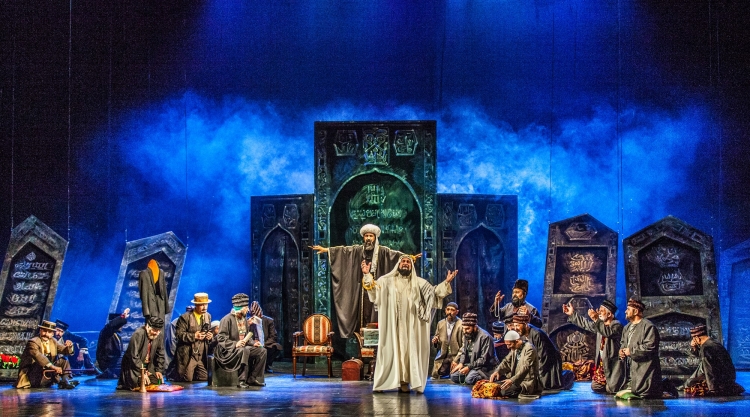
Roots of theatre art, dated to old times, started with spectacles „Vizier of Lankaran khanate“ and „Hadji Gara“ by M.F.Akhundov, staged in Baku in March and April 1973.
The repertoire of Azerbaijan theatre passed a difficult way of development, has been enriched now. Different spectacles, amazing spectators, are staged in Academic National Dramatic Theatre, Municipal Theatre, Pantomime Theatre, Theatre of Young Spectators and etc.
Cinematography, one of the most interesting and popular art kind of our time, penetrate into people’s lives and become an integral part of it. National cinematography opens the bottoms of the human heart and new live horizons. It gained great experience year by year and created a number of different works, reflecting our people’s lives and problems. These films were kept for future generations and became people’s spiritual knowledge.
Azerbaijan’s fine art is as old and rich as the history of our people. Research of theatre, cinema, music, and folk art, passed a long and difficult way of development, proves the high cultural heritage of Azerbaijan people. Culture and fine art workers of Azerbaijan always make efforts to spread our culture to the world and have achieved it partly. Entering of Azerbaijan mugam into world cultural heritage by UNESCO, rewarding of well-known film master R.Ibrahimbayov, screenwriter and producer by „Oscar“ and keeping of manual works and carpets, made by popular masters in famous museums of the world are obvious proves.
Azerbaijan is included in the UNESCO World Heritage List of two intangible cultural heritage sites — Icheri Sheher and rock art of Gobustan, where the Palace of the Shirvanshahs and the Maiden Tower is located.
At the same time, the list of intangible cultural heritage includes 11 elements:
1. Azerbaijan mugam (2008)
2. Azerbaijan ashug art (2009).
3. Novruz holiday (2009)
4. Traditional art of Azerbaijani carpet weaving (2010)
5. The art of playing the tara in Azerbaijan (2012).
6. Shooting at Chovgan with a Karabakh horse (2013).
7. The traditional art of making and wearing a woman’s headscarf and its symbolism (2014)
8. The art of blacksmithing Lahij (2015)
9. Lavash (2016).
10. Kamancha (2017)
11. The tradition of making and sharing dolma (2017).
The Memory of the World list includes an item. Medieval manuscripts about nature and pharmacy are kept in the Institute of Manuscripts of ANAS named after Mohammed Fizuli in Baku. The collection contains about 12,000 valuable manuscripts.
We believe that the cultural heritage of Azerbaijan will continue to be recognized by the world because our wealth is full of inexhaustible wealth!
The source of Azerbaijani literature is the rich and deep Azerbaijani folklore. Azerbaijan has one of the richest folklore treasures in the world. The traces of the mythological-artistic outlook are still manifest in folklore and classical literature.
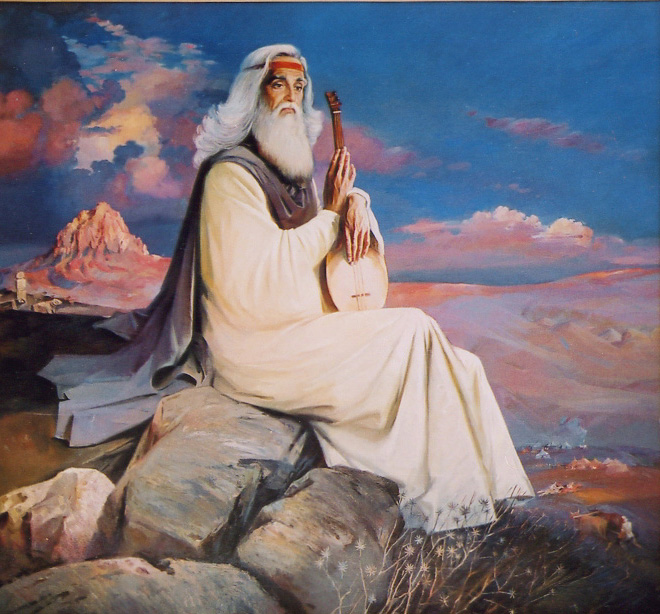
One of the peculiarities of Azerbaijani folklore is its commonality with the folklore of other Turkic peoples. Among the epics of common Turkic folklore, „Oghuzname“ are a special series. In the epic “Migration”, “Ergenekon”, “Shu”, “Return”, the whole problems of the prototurks in their entirety have their artistic-mythological reflection. Most of these samples were reflected in the work of the Turkish scientist Kashgarli Mahmud „Divanu lugat-it-turk“ (“Divan of the Turkish language”), who lived and created in the XI century. These epics embody the artistic and mythical outlook of the great migration of peoples.
Azerbaijani folklore has a rich genre. Fairy tales and epics from epic folklore genres, proverbs, and sayings expressing the wisdom of the people throughout history have had a strong influence on the folklore and classical literature of neighboring nations.
In the XVI-XVIII centuries, the genre of the epic developed especially, such powerful artists as Gurbani, Tufarganli Abbas, Sari Ashig, Khasta Kasym. Medieval love epics, mostly related to lore, are “Gurbani”, “Ashyg Garib-Shahsanam”, “Asli-Karam”, “Abbas-Gyulgas”, “Shah Ismayil-Gulzar”, “Tahir-Zohra”, “Alikhan Pari”, “Arzu-Gambar”, heroic epic “Koroghlu” is the product of this era. Unlike love epics, „Koroghlu“ continues the tradition of the „Dada Gorgud“ epic, collecting different branches, and therefore is called an epic.
The greatest monument of Azerbaijani folklore that has come down to us in writing is the epic „Kitabi-Dada Gorgud“.
The most ancient example of written literature is the Avesta, which appeared in the territory of the Medes in the 6th century BC and was authored by Zoroaster. Here, the dualistic worldview of the Azerbaijani people, the ideas of a primitive man about the struggle between good and evil are reflected in art.
The poems of the Azerbaijani poets of the 7th-8th centuries Abu Muhammad ibn Bashar, Musa Shahavat, and Ismail ibn Yasar to some extent differ from the Arabic poetry of that time in their critical spirit and original artistic features. The tradition of writing works of art in Arabic continued among Azerbaijani poets until the XI-XII centuries, and artists such as Khatib Tabrizi and Masud ibn Namdar created works of art in this language that enriched Azerbaijani literature.
From the 11th century, with the creativity of Gatran Tabrizi, the Azerbaijani school of poetry enters a new stage of development using another language — the language of dari. Gatra’s Divan, which came to us, played an important role in the further development of the Azerbaijani poetry school. Azerbaijan’s accession to the Seljuk state, created by the Oghuz Turks in 1054, not only stimulated the development of science, art, and literature but also completed the formation of the Turkic-speaking Azerbaijani people.
Azerbaijani literature In the 12th-century, the school of poetry, which had a strong influence on the further development of the Middle East and world literature, completed its formation, and its world-famous luminaries such as Khagani Shirvani and Nizami Ganjavi appeared. The twelfth and sixteenth centuries are considered the peak of the Renaissance of Azerbaijani literature due to the works of Nizami and other artists of his time.
In the literary environment of the palace – under the patronage of Shirvanshahs and Atabeys from the XIIth-century Azerbaijan states, such poets as Abul-ula Ganjavi (1096-1159), Mahsati Ganjavi (1089-1183), Khagani Shirvani (1126-1199), Felaki Shirvani (1126-1160), Mujangiraddin (-1190), Izzeddin Shirvani didn’t lose their high artistic and aesthetic significance.

Examples of 13th-century epic poetry include the anonymous poems of Dastani-Ahmad Harami and Gul Ali, „Kissey-Yusif.“ The South Azerbaijani poet Humam Tabrizi (1201-1314), who lived the entire 13th-century and the first decades of the 14th century and went through a long career, was also one of the prominent public and political figures and talented poets of this period. Among the many works written by Sheikh Mahmud Shabustari (1287-1320), known in Azerbaijani literature as a prominent representative of the Sufi movement, the poem „Gulshani-raz“ attracts more attention. In the 14th-century, Azerbaijani poets such as Suli Faqih and Mustafa Zarir also wrote works in their mother language on the theme of „Yusif and Zuleykha“ based on the Koran. The poem „Varga and Gulsha“ by Yusif Maddah, an artist of the same century, should be considered one of the best examples of epic poetry in the native language. All these works played a certain role in the further development of our epic poetry. Outstanding Azerbaijani poets and thinkers who wrote in Persian – Nasreddin Tusi (1201-1274), Maragali Ovhadi (1274-1338), Arif Ardabili (1311-) tried to create works of their scale, mainly based on Nizam traditions. In the Persian poem “Mehr and Mushtari” written by Assar Tabrizi (1325-1390), Nizami’s poems „Khosrov and Shirin“ and „Leyli and Majnun“ geniusly reflects pure divine love through the prism of the free friendship of two young people.
The principles of humanism, formed in literature and socio-political thought during this period, reached their apogee, especially in the work of Seyid Imadaddin Nasimi (1369-1417). Imadaddin Nasimi – after his great predecessor Nizami Ganjavi, is known in our literature as one of the ardent propagandists and heralds of the ideas of humanism.
The peak of the post-Nizamin ideas of the Renaissance in the Azerbaijani literature of the 12th-16th centuries was Muhammad Fizuli, known in Western oriental studies as the “poet of the heart”. Among them is the great contemporary of Fuzuli and, to some extent, his patron – the great Azerbaijani statesman and poet Shah Ismail Khatai (1487-1524) has a special place.
Artists such as Molla Vali Vidadi (1707-1808), especially Molla Panah Vagif (1717-1797), brought poetry closer to the people with their works written in a simple, lively language.
Azerbaijani literature at the beginning of the XIXth century, an important event in the historical destiny of the Azerbaijani people – With the incorporation of Azerbaijan into the Russian Empire, pro-Western tendencies in literature, as well as in culture as a whole, became much stronger. Under the influence of this, national and realist-secular motives take a leading position in the literature. Gasim bey Zakir (1784-1857) determines the direction of poetic development. The work of the southern poet Seyid Abulgasim Nabati (1812-1873), who lived and worked almost at the same time as Mirza Fatali Akhundzadeh, was based on the traditions of millennial Eastern poetry and, along with all its aesthetic beauty, did not go beyond propagating Sufi ideas. During this period, over shoulders of artists and thinkers such as Abbasgulu aga Bakikhanov (1794-1847), Mirza Shafi Vazeh (1792-1852), Ismayil bey Gutgashinli (1801-1861), who got acquainted with Russian and Western orientalists and poets and received advanced humanistic ideas from them, rises genius Mirza Fatali Akhundzadeh, it connects Azerbaijani literature with Russia and the West once and for all, and makes it one of the contemporary world pieces of literature.
During this period, based on the example of Europe and Russia, outstanding representatives of realist and romantic literature, such as J.Mamedguluzade (1866-1932), M.A.Sabir (1862-1911), H.Javid (1884-1944), M.Hadi (1880-1920), Sahhat (1874-1918), A.Shaig (1881-1959) raised Azerbaijani literature to the level of the best examples of world literary and cultural thought. Among them, representatives of realist literature J.Mammadguluzadeh and M.A.Sabir, romantic poetry M.Hadi, A.Shaig, dramaturgy H.Javid played a greater role in the development of Azerbaijan’s literary and social thought.
Firidun bey Kocharli (1863-1920) was the great enlightener and the author of the history of Azerbaijani literature. In general, repression is a bloody black page in the history of Soviet literature in Azerbaijan.
Among the artists who were repressed in those terrible years were very prominent representatives of Azerbaijani literature and art, literary criticism, and linguistics: the great playwright H. Javid, the genius poet M. Mushfig, the outstanding prose writer and literary critic S. Huseyn, the first (and last) author of the anthem, the famous poet A. Javad, the prolific writer and scientist Y. V. Chamanzaminli, professor of philology, polyglot scientist B. Chobanzade, rector of Baku State University, writer T.S. Shimurg, Khadija khanum Gaibova, who opened the first Eastern Conservatory. in Baku — an outstanding theologian-scientist, Baku veteran Mir Mohammad Kazym aga, folklorist-scientist H. Zeynalli, the most outstanding performers of tragic roles on our stage A. M. Sharifzade, U. Rajab and many others.
Among our emigrant intellectuals are Alibay Huseynzade, Ahmadbey Agaoglu, Mohammad Amin Rasulzade, Mirza Bala Mahammadzade, Alimardanbey Topchubashov, Jeyhun Hajibeyli, Samad Agaoglu, Ahmad Jafaroglu, Abdulvahab Yurdsever, Almas Yildirim, Banin (Ummulbanu), Nagy Huseyngali, Teymur Ateshli, Musa Zayam, Ibrahim Arslan, Ali Azertekin and dozens of others. M.S Ordubadi (1872-1950) was one of the well-known artists who developed the novel, especially the historical novel genre of Azerbaijani literature during this period. Samad Vurgun (1906-1956) is one of the most outstanding poets and playwrights of the Soviet era.

Poems written by Rasul Rza (1910-1981), mainly in free verse, play an important role in the development of poetic thought in Azerbaijan during the Soviet period.
Ilyas Efendiev (1914-1996) rendered great creative services in enriching Azerbaijani prose with lively, fresh, artistic images and colorful means of description, in the development of the lyric and psychological style in our drama. Ali Valiyev, Huseyn Ibrahimov, Huseyn Abbaszade, Bayram Bayramov, Jamil Alibeyov, Vidadi Babanli, Alaviya Babayeva, Suleyman Valiyev, Aziza Ahmadova, Afgan Asgarov, Gulhuseyn Huseynoglu, Alibala Hajizade, and others also contributed to the enrichment of Azerbaijani prose with new themes and heroes.
There are prose writers and poets in the 60s, such as Isa Huseynov, Mammad Araz, Sabir Ahmadov, Anar, Elchin, Sabir Rustamkhanli, Alakbar Salahzade, Farman Karimzade. Special mention should be made of Ismail Shikhli (1919-1994) and his novel „Deli Kur“. In the poetry and dramaturgy of such masters as Bakhtiyar Vahabzadeh, Nabi Khazri, Nariman Hasanzadeh instructive pages of folk history, lyric and psychological experiences prevail. The poems of these poets, as well as Gabil, which are always relevant, the poem „Nasimi“, many works of Adil Babayev, Islam Safarli, Huseyn Arif, Gasim Gasimzade, Aliaga Kurchayli are valuable examples of our literature.
Among those who prepared the artistic basis for the new stage of Azerbaijani literature and themselves are actively involved in this process are Ali Karim, Khalil Rza, Jabir Novruz, Mammad Araz, Fikret Goja, Fikret Sadig, Alakbar Salahzadeh, Isa Ismayilzadeh, Sabir Rustamkhanli, Famil Mehdi, Tofig Bayram, Arif Abdullazade, Huseyn Kurdoglu, Ilyas Tapdig, Musa Yagub, Chingiz Aliyoglu, Nusrat Kasamanli, Zalimkhan Yagub, Baba Veziroglu, and other poets should be noted.
During the periodization of the centuries-old history of Azerbaijani literature, the principles of civilization, the realities of literary and historical processes, literary trends in Azerbaijan, and the ideology of Azerbaijanism have been scientifically substantiated.
The new concept of periodization of the history of Azerbaijani literature covers the following stages: ancient Azerbaijani literature, Azerbaijani literature of the early revival, Azerbaijani literature of the Renaissance, Azerbaijani medieval literature, early modern Azerbaijani literature, educational realism of Azerbaijani literature, national democratic movement of Azerbaijani literature, the stage of socialist realism in Azerbaijani literature, the early period and the transition period.
It should be noted that the history of Azerbaijani literature is currently divided into the Ancient period, the Middle Ages, the New Age (ADR period), the Recent period (Soviet period up to the 60s, starting from the 60s), the period of Independence.
FOLKLORE
The history of folklore, as oral poetic creativity of Azerbaijani people, dates back to the time of the first people settled in the territory of Azerbaijan. Azerbaijan has got one of the richest folklore wealth in the world.
One can still find out rich and deeply meaningful folklore samples in Azerbaijan literature. The signs of mythological and belles-lettres experience are remained both in folklore and classical literature up today. The mythology of Azerbaijan is not of the systematic and full character in comparison with that of ancient India and ancient Greek. But it is possible to find out the traces of Azerbaijan mythology in Azerbaijan folklore. They are generally the elements of cosmogonic, seasonal, and ethnologic myths. Those mythic elements, being the result of artistic thinking of the primary form of human society, reflect cosmos and chaos, i.e. mixture in world life, disorder, the creation of world life(order) of this irregularity, and the reflection of all this in human society. Cosmos in mythic world-outlook, i.e. rules accepted by most of the people, reflects the process of mutual understanding between the major rule of the society- family, life, man, and nature. Separate details of the mythological world-outlook still remain in the texts concerning sorcery, cheers, curses, tales, godu, and the ceremony of counting (sayachy) of the folklore. The old Turkish mythological thinking is the leading motive In the majority of mythological texts. This could be seen in cosmogonic myths concerning the creation of the world, as well as in ethnologic myths concerning the origin of the ethnos and calendar myths concerning season processes. The creation of the mythological texts and their preservation in the form of the elements in folklore texts is closely related to human attitude towards nature and natural forces. The human desire to affect natural forces by word, movement, and dance the provoked necessity to create mythological texts and perform them. For instance, ceremonial songs and dances such as „Kosa-Kosa“, „Godu-Godu“, „Novruz“, „Khidir Nabi“ are of that kind.
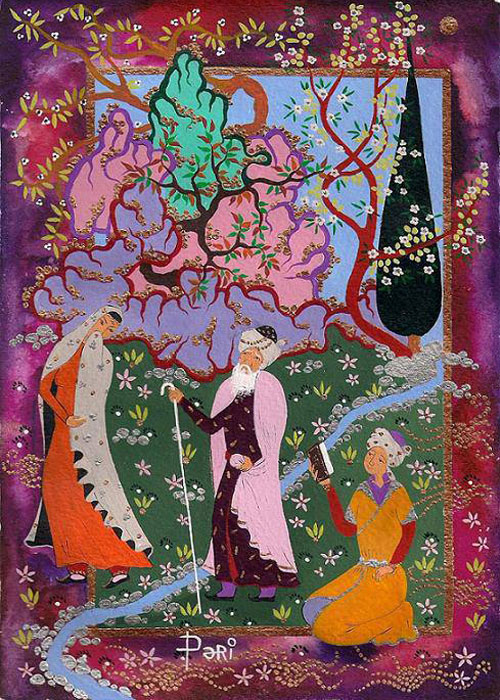
Common features with other Turkish people folklore is another peculiarity of Azerbaijan. Many coincidences in oral texts of these people prove that these samples were created in the same ethnic-geographical area. „Oguzname“s preserve peculiar series among the epics of common Turkish folklore. The main problems of prototurks found their thorough literary-mythological solution in such epics as „Koch“(„Camp“), „Ergenekon“, „Shu“, „Gayidish“(„Return“). The short content of the majority of those epics found its reflection in „Divani Lugat-it-Turk“(„Divan of Turkish language“) by XI century Turkish scientist Kashgarli Mahmud, which still preserve the literary-mythic world outlook of people in the period of migration.
Azerbaijan folklore is rich genre. Tales and epics, proverbs and sayings, reflecting the wisdom of the people, being the genres of epic folklore, greatly influenced the folklore and classic literature of the neighbors. Bayati-the specimen of the lyrical genre has a multisided literary-emotional reflection of people’s life. Ancient Turkish people had their own poetry and it was written in national syllabic and „barmag“ (‚finger‘) measures. The number of syllables in different poetic samples is different, but long poems of epical character and epics are generally of seven-syllable form. The poem of such structure is strongly remembered. Bayati-one of the richest genres of Azerbaijan folklore is based on seven syllables.
There are known two kinds of folklore genres-archaic and modern. Sinamalar (believes based on definite actions), sorcery, fortune-telling, oaths, prays, curses take a large position among the genre of archaic folklore. Nevertheless, this division is relative, for these genres are widened by new samples appearing during the long history of folklore formation.
According to the character of the event and the process of ceremonial folklore and labor, songs are known. Ceremonial folklore includes seasonal ceremonies, ceremonies concerning different natural processes, everyday life ceremonies, weddings, and funerals.
Bayaties are one of the richest genres of Azerbaijan folklore. They usually reflect lyrical-philosophical feelings of a human being in short poetic form. For instance, we may count lullaby, elegy, counting words, holavar (labour poems), vesfi-hal (praising), bayati-baglama, bayati-deyishme (competition in saying bayati), bayati-tapmaca (bayati-puzzles), and others as the forms of this genre. Bayati is the form of the poem containing four lines with seven-syllable in each. The form of rhyme is as follows: a-a-b-a. Ginas (the form of rhyming ) historically takes a large place in Turkish poetry, so we may come across bayati samples with ginas, too. One of the forms of bayati is the first line of which contains only rhyme. Such a kind of bayati can generally be seen in Karkuk folklore. The first two lines in bayati are somewhat like the entrance to the main meaning.
Folk songs are also among wide-spread folklore genres. These are poetic texts of different form with concrete musical motive. Singers still include such songs as „Aman nene“ („Oh, grandmother“), „Ay lolo“, „Sona bulbullar“ (‚Beautiful nightingales‘), „Susan sunbul“(‚iris spike‘) in their repertoire. The folk song is performed in solo, chorus and wrangling forms.
If the epic folklore genre is to be analyzed chronologically, legends should come first. The main distinctive feature of the legend is -the existence of fantastic elements and events. In comparison with fairy tales, having the same distinctive feature, the subject of the legend is not completed, it exists only in the form of a fragment. Based on the object described and the context of the event legends may be cosmogonic, zoonotic, toponymic, ethnographic, religious, historical, heroic, etc. The oldest legends tell us about the universe, the world, and the heavenly body.
Stories, as the wide-spread epic specimen of literature, occupy the next position after legends and tales among the folklore genres of Azerbaijan.
Proverbs and sayings are widely spread among the epic genres of Azerbaijan folklore as well. The proverbs and sayings, as the generalized conclusion and result of people century-old experience, are famous among Turkish people, and in many cases somewhat replaced the moral code in the society. The first samples of this genre could be seen in such classical written monuments as „Divanu lugat-it-turk“ by Mahmud Kashgari, „Kitabi- Dada Gorgud“ („The book of old Gorgud“). Special proverbs collection-„Oguzname“z, reflecting the wisdom of Turkish tribes are invaluable monuments of Azerbaijan folklore as well.
A great group of folklore specimens of Azerbaijan had especially been created for children. They are of lyric, epic, and dramatic content. Lyric includes the genres of lullaby and child songs; epic includes puzzle, tongue-twisted, Garavelli; drama includes children’s games and performances.
Middle centuries occupy a particular place among the levels of evolution of Azerbaijan folklore. In this period of the XII-XVIII centuries, the genre of epos had especially been developed. Great artists like Gurbani, Tufarganli Abbas, Sari Ashig, Xasta Gasim are the lived and created at this period.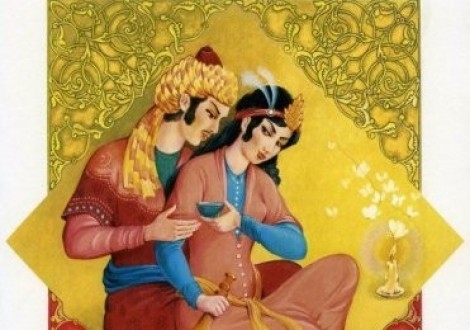
This period is also popular with the appearance of such love eposes as „Gurbani“, „Ashig Garib-Shahsanam“, „Asli-Kerem“, „Abbas-Gulgas“, “ Shah Ismail- Gulzar“, „Nahir-Zohra“, ‚Alikhan-Peri‘, ‚Arzu-Gamber‘, mainly connected with Irfan, and heroic epos ‚Koroglu‘. In comparison with love eposes ‚Koroglu‘ is the collection of different branches, thus continues the tradition of „Dada Gorgud“ epos. That is why it is called the epos. Though the main subject of „Koroglu“ is based on the concrete historical event- the movement of Jalairilar in Azerbaijan and Turkey in the XVI-XVII, some extra subjects were added to the monument in the process of formation. Here and there one can find mythic motives.
For the reason that the specimen of folklore is anonym, i.e. they do not have an author, ashug literature with concrete authors occupies a particular place in Azerbaijan folklore. The great representatives of the art of ashug, foundered in XVI century and still existing up today, are called „ustad ashuglar“-„masters“. The firs master ashug in Azerbaijan folklore was Gurbani. Gurbani was elder than Shah Ismail Khatai(1478-1524) and there was some kind of attitude between them. One can take some information about this artist from the history of Sefevids and epos „Gurbani“.
Three hundred year-long traditions of ashug art reed in the XIX century the great artist of people, Ahug Alesker(1821-1926). In the creation of Ashug Alesker lyrical and moral-didactic motives joined as a whole. The great artist influenced posterior ashug literature and the development of the written poem. During 105 year-long life, ashug reflected many historical events and persons in his creative activity.
In written form, The first specimen of Azerbaijan folklore came to our times by Herodot, the ancient Greek historian, in „History“ (V cent, B.C.). They are the reflection of people literary thinking concerning the reasons of collapsing Midiya, an ancient Azerbaijan state, and its occupation by Iran. The legends „Astiyag“, ‚Tomris‘ and others found their written reflection in the work of Herodot. Herodot, the work of which is not only the historical, but also a kind of fiction, literarily worked out Azerbaijan legends and created effective psychological scenes. The legend of ‚Tomris‘ deserves special attention from this aspect. Heroin Tomris, the warlord of Midiya which was destroyed by shah(king) of Iran, defeated the shah cutting off his head and sinking it into the barrel of blood, so that ‚he could quench his bloodthirst’…
Mythological aspect in the myth of ‚Astiag‘ is stronger. The main event is based here on dreams and forecast. The weakness of a man in changing the fate defined by divine powers has been presented in the example of Astiag tragedy. Same motives are widely spread in most ancient literature, as well as ancient Greek literature.
The greatest specimen of Azerbaijan folklore remained in written form till our days is the epos „Kitabi- Dada Gorgud“. Though different characters and motives of the epos influenced the following Azerbaijan folklore and classic literature, it has not been preserved thoroughly in an oral generation. So ‚Dada Gorgud‘ epos is also investigated as the specimen of written literature. The same principle is preserved in this article.
At present, valuable work is being done at the state level to draw attention to and promote Azerbaijani folklore. Because a nation without a past will not have a future.
Research of Azerbaijani folklore
Azerbaijan folk-lore is an area of creative work being a part of common Turkic oral literature and reflecting in self highest spiritual-moral values of the Azerbaijani Turks, the most leading inclinations of ethic and aesthetic thoughts. Habits of the Azerbaijani Turks, ceremonies, beliefs and faiths, historical knight morals, patriotism and love to land, parents, and dismal lyrical senses were described in this creative work fully and in a specific form.  Folklore of Azerbaijani Turks was formed at a base of different genres (lyrical, epic and dramatic) and has been divided into types according to the same styles.
Folklore of Azerbaijani Turks was formed at a base of different genres (lyrical, epic and dramatic) and has been divided into types according to the same styles.
The first stage of recording of Azerbaijani folk-lore covers 1830-1900 years. During this period the first examples of the folklore of the Caucasian nations, Azerbaijani Turks had been reflected in newspapers of Vedomosti, Tiflisskiye vedomosti, Novoe obazreniye, Kafkazskiy vestnik, Kafkaz“, and SMOMPK collections, which began publishing since 70-es of XIX century.
The first national press organ „Ekinchi“, which began publishing in 1875, and later on „Kaskul“ newspapers had continued this case decently.
The basic stage of gathering samples of Azerbaijani folklore in mass form covers the years 1900-1920. During this period activities of Eynali Sultanov and Mahmudbey Mahmudbeyov in the field of collecting, publication, and research of oral samples of folklore can be considered as the first steps of our folklore studies. Notable literary critic Firudin bey Kocherli had been included in the history of our folklore not just as a collector but a founder of Azerbaijani folklore studies. Hanafi Zeynalli that had special contributions in collecting, publication and analyzing folklore samples, is considered as one of the researchers classifying for the first time oral literature during those years (an author of books „Azerbaijani proverbs and sayings“ (1926), „Azerbaijani riddles“ (1928)“.
One of the persons that studied the theory of folklore, introducing the most modern research methods in Azerbaijani folklore studies of that time was Amin Abid. A.Abid is one of the authors of scientific lectures on folk songs, bayatis, ashug poems, syllabic rhythms, derived forms of Turkic seven syllabic poems, rhythm, repeating of similar sounds, alliteration, division, and other poetic forms.
Researcher Vali Khuluflu systematically engaged in collecting and publication of our folklore samples during 20-30-es. He published a book of El aşıqları (Folk ashugs) in 1927 and for the first time Koroglu epos (second publication in 1929) in Azerbaijan. Contributions of Salman Mumtaz and Hummat Alizade in the field of collection of Azerbaijani folklore samples can be marked particularly. S.Mümtaz had published in 1927 and 1928 the book „El shairleri“ (People poets), and recorded best samples of poems, bayatis and proverbs of Gurbani, Sari Ashug. In 1929 H.Alizade had published „Ashuglar‘ collection in two volumes and published fourteen sections and over fifty separate branches of „Koroglu“ epos from the repertoire of Azerbaijani ashugs.
Names of H.Arasly, M.H.Tahmasib, M.Seyidov, X.Koroglu, A.Akhundov, V.Valiyev, M.Hakimov, P.Efendiyev, A.Nabiyev, etc could be noted particularly for their roles in the development of our folklore studies since WWII till our date.
The current state of Azerbaijani folklore
Folklore is the memory and destiny of the people: the fate of each ethnos depends on the degree of its connection to the national memory. A nation that can return to its memory can rise to the top that makes it a nation among nations … The integrity and security of each nation as a nation and as a country depends on how the ethnocosmic memory maintains it … In order to objectively characterize the current state of Azerbaijani folklore, it is necessary to compare its work with the work done in the last century. Thus, the folklore of Azerbaijan ended the twentieth century with these theoretical and practical results: At the beginning of the century, the intellectuals of the nation, in the true sense of the word, fought hard for the collection of Azerbaijani folklore. Guided by the ideology of „There is no sign of my nation among these signatures“, they faced all difficulties to establish the spiritual signature of our nation among the signatures. Numerous folklore texts have been collected and published. In the 1920s-1930s, Azerbaijani folklore developed from a scientific and theoretical point of view. Continuing their research here, Soviet scientists invited to Azerbaijan supervised the formation of theoretical knowledge of young Azerbaijani folklorists from both a moral and a practical point of view. In the 30s, the entire intellectual potential of the nation, including folklorists, was ruthlessly destroyed, and the progressive development of Azerbaijani folklore at all levels was hampered. Since then, crippled folklorists began to form, faithfully serving the Soviet empire. Their task was to bring Azerbaijani folklore in line with the standards of Soviet-socialist ideology, and if this was not achieved, to create fake folklore texts in general. Although progressive folklorists of Azerbaijan at that time tried to save our folklore within the framework of their activities, their initiatives did not grow into mass activity and did not go beyond a small number of folklore publications and research. Although the regime began to soften in the 1970s and 1980s, the Soviet scientific stereotypes of „power“ ingrained in folklore prevented them from being reborn. The practice of falsifying folklore texts, in general, of creating false texts that are not original, has further developed. At the end of the century, the Institute of Folklore of ANAS saved Azerbaijani folklore and folklore studies from the maelstrom of destruction. Playing the role of a filter of history, he stood between the twentieth and twenty-first centuries, the second millennium and the third millennium, passed an entire era, and laid the foundation for a bright path to the future of the nation. The Institute of Folklore of ANAS, established by the will of the late President of the Republic of Azerbaijan, great leader Heydar Aliyev, not only guarded the folklore of the people but also guarded the souls of folklore martyrs who fell victim to the Soviet empire. Several books from the „Early Folklore Publications“ series were published and returned to the people. In particular, the folklore heritage of S.Mumtaz, A.Abid, H.Alizade, V.Khuluflu, B.Behjat, and other victims of the bloody repressions of the 1930s is being published and researched. The scientific-theoretical experience gained by the Azerbaijani folklore of the XX century is not a worthless stage for the Institute of Folklore of ANAS, but the experience of which it turned, studied, modeled, and modernized its intellectual activity at the level of all its aspects. An experience that is relevant today with all its successful and erroneous, useful and harmful, advantageous and disadvantageous sides. The Institute of Folklore is the heir and successor of all progressive traditions of Azerbaijani folklore of the 20th century and the denial of all shortcomings. The Institute of Folklore of ANAS has done a great job since its foundation, done a great job in collecting, publishing, and researching our folklore. The number and range of these works are rich. Before touching on them briefly, we want to talk about our latest big work. The Institute of Folklore of the National Academy of Sciences of Azerbaijan began publishing the „Azerbaijan Folklore Collection“ and published the first six volumes, one of the highest goals of Azerbaijani science in the third millennium AD, naming the name of Almighty God for national goals, for the goals of the nation, for goals that nationalize us as individuals. „Azerbaijan Folklore Collection“ is a new century project in its current goal and a millennium project in its strategic goal. With these first volumes, he laid the foundation for a national project, which Azerbaijani folklore dreamed of throughout the twentieth century, but never realized. Such a solid foundation has been laid that the spirituality of a nation can stand on it while the world stands…
In general, the Institute of Folklore publishes folklore texts with the following publications:
1. Anthology of Azerbaijani folklore;
2. Azerbaijan folklore collection;
3. Research on Azerbaijani oral folk literature;
4. „Dada Gorgud“ magazine.
Along with all this, an international folklore conference „From a common Turkish past to a common Turkish future“ is held here every year. Folklorists from all over the world are invited here.
With the strengthening of the state independence of the Republic of Azerbaijan, folklore science, one of its national and spiritual supports, is constantly developing.
The oldest sample of written literature of Azerbaijan is ‚Avesta‘, appeared in the VI century b.c. in the territory of Midiya, the author of which was Zardusht (Zoroaster). Dualist world outlook of Azerbaijan people, the ideas of a primitive man about the struggle between the good and the bad found here their literary reflection. The ideas of old people about the good and the bad powers controlling the world and the society found their literary-figurative reflection in ‚Avesta‘, written in the form of addresses of Zardusht to the head of good powers Ahura Mazda (Hormuzd). ‚Gatlar‘ (‚Layers‘), the most beautiful literary part of ‚Avesta‘, reflect philosophical-moral ideas of Zardusht about human being and the society, nature and an individual. We have not received ‚Avesta‘ in its primary, i.e. full form. This work was burned by Alexander from Makedonia in the IV century and only separate arts of it had remained in the memories of priests of Zoroastrianism, gathered together and translated to pahlavi language. The major features of the mythological world outlook of Azerbaijan people found their reflection in ‚Avesta‘ and reached our times. Mythological motives about the creation of the world, the first man, ‚golden period‘ of the society, the first fault and anger of the God and punishing of people with trouble, disease, disaster are widely-extended elements of world mythology.
‚Dada Gorgud‘ eposes, having found their root in mythological world outlook, were written under the name of ‚Kitabi-Dadem Gorgud‘ in the XI century of our era, those copies that we possess today are manuscripts copied in the XVI century.  According to Fridrix fon Didts, the first who investigated the monument, some mythological subjects of the epos, for instance, the topic of Tapagoz(Oneeyed), gave the beginning to the same topics appeared in ancient Greece. The character of Tapagoz in ‚Kitabi-Dada Gorgud‘ is elder in comparison with the character of Polifem in epos ‚Odissea‘ by Homer. Two manuscripts of ‚Kitabi-Dada Gorgud‘ are known today. One of them, Drezden copy, contains a foreword and twelve boys(separate tales in the epos) was taken to Germany by Germanic orientalist F.fon Dits and presented to the library of Drezden, the second copy, containing a foreword and six boys, was found in the Vatican in the 50-s of the XX century.
According to Fridrix fon Didts, the first who investigated the monument, some mythological subjects of the epos, for instance, the topic of Tapagoz(Oneeyed), gave the beginning to the same topics appeared in ancient Greece. The character of Tapagoz in ‚Kitabi-Dada Gorgud‘ is elder in comparison with the character of Polifem in epos ‚Odissea‘ by Homer. Two manuscripts of ‚Kitabi-Dada Gorgud‘ are known today. One of them, Drezden copy, contains a foreword and twelve boys(separate tales in the epos) was taken to Germany by Germanic orientalist F.fon Dits and presented to the library of Drezden, the second copy, containing a foreword and six boys, was found in the Vatican in the 50-s of the XX century.
According to the tradition, the authorship of the eposes belongs to Dada Gorgud. Aybek ad-Devadari and Fazlullah Rashideddin, the historians of the XIV century, wrote that he lived in the period of Prophet Muhammed and was sent to him as a messenger by Turkish people. The foreword of the epos also proves that Dada Gorgud was the contemporary of Prophet Muhammed. The main subject of the eposes are reflected in the following twelve boys: ‚The boy of Bugaj, the son of Dirsa khan‘, ‚The boy about spoliation of home of Salur Gazan‘, ‚The Boy of Bamsi Beyrek, the son of Baybura‘, ‚The boy of conviction of Uruz bek, the son of Gazan bek‘, ‚The boy of Deli Domrul, the son of Duxa Goja‘, ‚The boy of Ganturali, the son of Ganli Goja‘, ‚The boy of Yeynek, the son of Gazilig Goja‘, ‚The boy of killing Tapagoz by Basat‘,’The boy of Emra, the son of Bakil‘,’The boy of Segrek, the son of Ushun Goja‘, ‚The boy when Salur Gazan was prisoned to release his son Uruz‘, ‚The boy when Ich Oguz and Dish Oguz joined and kill Beyrak‘.
In some of the boys of Dada Gorgud, epos one may come across the signs of mythological world outlook. For instance, in the boy of ‚Dali Domrul‘ reflects the remnants of the worship of death and the explanation of it according to the religious ideas of the period when the epos was written. The character of Azrail, as in many other boys of the epos, was added to the epos after the acceptance of Islam and adapted to the general spirit of the epos. According to this, the same boy has much in common with ancient legends and myths of shumers, vavilonians, Egyptians about dying and enlivened Gods.
The period of copying out of the manuscripts of ‚Kitabi-Dadam Gorgud‘, remaining up today, dates to the XVI century. Though the prose and the poetry alternate in the boys, as in our middle century eposes, those extracts of the poetry less meet the demands of rules of middle age poetry. According to some research workers, firstly ‚Kitabi- Dada Gorgud‘ was written in prose, as well as other ancient Turkish eposes, later only motives that had been remembered were written in the form of the prose.
The main idea of Dada Gorgud boys embraces the defence of motherland and people, the struggle of old Oguses, representing the good power against the foreign occupants-the bad power, and many of moral-didactic views, actual up today. In the 50-s of the past century under the ideological depression of totalitarian soviet regime, the ‚Dada Gorgud‘ epos was forbidden as the monument instigating national quarrel and was rehabilitated only to the beginning of 60-s.
A Turkish proverb found in China sources belonging to 328 b.e. and scripts on stones of VI-VIII centuries a.d., made in the status of Turkish literature are in common Turkish context the specimens of written Azerbaijan literature after ‚Avesta‘. Those scripts have the character of epitaph-chronicles to heads of the states, but their literary quality is also high and reflects some idea about the development of Turkish literary language, and the formation of the system of images. The work of Mahmud Kashgarli is important for he recorded many of the samples of Turkish mythology and folk-lore, thus stabilized them. For example, the elegy dedicated to the death of Alp er Tonga, Turkish leader, lived in VII-VI b.c., reflects all the tenderness and beauty of old Turkish literary thinking.
Albanian literature should be considered one of the sources of classic written literature, for being created in the territory of Azerbaijan, the writing of which dates back to the V century. The elegy written by Devdek and dedicated to Javanshir, the leader of Albania, has much the same with that of dedicated to Alp er Tonga.
The poems of Azerbaijan poets Abu Muhammed ibn Bashar, Musa Shahavat and Ismail ibn Yesar, lived and created in Madina and Mekka, the centres of Islam Khilafatin VII-VIII centuries, differs from that time Arabic poetry for its struggling critical spirit, original artistic peculiarities. This fact was also approved by specialists. The tradition of writing literary works in the Arabic language continued till XI-XII centuries, Khatib Tabrizi, Masud ibn Namdar creates the works in this language, thus enriched the literature of Azerbaijan. Khatib Tabrizi, the great philologist of his time, had a great contribution to the study of literature. His work ‚Sherhul-Hemase‘ remains its authority among orientalists and literary critics for a thousand years. A lot of scientific research works are written about this work.
 With the creativity of Gatran Tabrizi (1012-1088) in the XI century, Azerbaijan poetic generation passes to a new stage of development, the use of skin language. ‚Divan‘ of Gatran Tabrizi, existing today, contains mostly medhiye-qeside(praising gesides) dedicated to the governors of the time, the foreword of these gasidas reflect the admirable description of nature and had a great role in the further development of Azerbaijan poetic school.
With the creativity of Gatran Tabrizi (1012-1088) in the XI century, Azerbaijan poetic generation passes to a new stage of development, the use of skin language. ‚Divan‘ of Gatran Tabrizi, existing today, contains mostly medhiye-qeside(praising gesides) dedicated to the governors of the time, the foreword of these gasidas reflect the admirable description of nature and had a great role in the further development of Azerbaijan poetic school.
In 1054 Azerbaijan is included into Seljugilar state created by Oguz Turkish people, which gave the start to the development of science, art and literature, and completed the formation of Turkish-language Azerbaijan folk. In works of Gatran Tabrizi, one of the greatest Azerbaijan poets of the XI century, one can feel the Turkish-Azerbaijan spirit and see many words and realities of Azerbaijan language. The poet used his mother tongue when came across with the difficulties of finding corresponding rhyme in Arabic and Persian languages. It goes without saying, that the language of Gatran Tabrizi is that of the Persian-writing artist with Azerbaijani (Turkish) thinking, and this peculiarity is a characteristic feature of Persian-language Azerbaijan poetry. This fact was also stated by Nasir Khosrov, the famous poet and scientist of Iran, who lived in times of Gatran Tabrizi and was personally acquainted with him, in his ‚Sayahatname‘ he mentioned that the knowledge of Gatran in Persian was weak.
XII century completes the formation of the poetic school, which later strongly influences Azerbaijan literature, as well as the literature of the Near and the Middle East and the that of the world; appear such world-famous coryphaeus as Khagani Shirvani, Nizami Ganjevi. In comparison with Khorasan literary school (heritage), which was characterized by wide use of archaic words and thus met with difficulties in expression of deep philosophical contexts, the representatives of Azerbaijan literary school lead the skin language to a new level, enriching poetic works of that language with Arabic words and phrases, thus successfully expressed the tender poetic essence and deep philosophical ideas. The palace literature, under the guidance of XII century Azerbaijan states Shirvanshahs and Atabeys, breeds such artists as Abul-Ula Ganjevi (1096-1159), Mesheti Ganjevi (1089-1183), Khagani Shirvani (1126-1199), Feleki Shirvani (1126-1160), Mudjireddin Beylagani (-1190), Izzeddin Shirvani, the works of which still keep their high literary-aesthetic value.
Representatives of the XII century Azerbaijan poetic school, are characterized by high poetic professionalism, the ability of maximal usage of poetic possibilities of words, as well as stable polysemy of poetic unities. There was also a strong inclination to folk art (folklore), folk-lore images, words and phrases of people living language and aphorisms.
The most attractive fact in the creation of Afzaladdin Khagani (1126-1199), well-known as one of the great poets of his time, is the deep figurativeness and scientific character reflected in each stanza and even a line. Well informed about most of the sciences of Islamic East, he presents all his knowledge not by rough, wearing, but by sweet, attractive, admirable poetic language. Being deeply aware of the sciences of his time, Khagani sometimes with hints expresses an idea which may be fit in whole work. Sometimes he uses ezop-language conclusions, that contradict dogmas defined by men of Shariat of his time, as well as poetic symbols. In poem ‚Tohfatul-Irageyn'(‚Gift of two Iraqs‘) (1156), the first epistolary couplet in Azerbaijan literature, by means of series of symbols and hints Khagani succeeded in revelling great differences between him and his time. Thus the creative activity of Khagani and Nizami is characterized by dialectic development. To them, nature and society are not frozen, they constantly develop and progress. The creative activity of Nizami from this aspect is a special stage in world literature. Khagani Tabrizi, getting tired of the pejorative influence of palace atmosphere, visited Mekka and never came back to palace; he settled and died in Tebriz. The grave of the poet is in the ‚Mausoleum of poets ‚ in graveyard Surhab Tabriz.
Khagani is also famous as one of the great lyrical poets of Azerbaijan literature. The best traditions of Azerbaijan poetic school are based in his gazals and rubais. The deep love of Turkism, another peculiarity of Azerbaijan poetic school, finds its reflection in the creation of Khagani. This aspect later finds its pick in the creative activity of Nizami.
Together with Falaki, Abul-Ula, Mudjireddin Beylagani, the ‚pupils‘ of Shirvan literary environment, XII century Azerbaijan poetic school includes such philosopher-poets as Shihabeddin Suhraverdi(1154-1192), the grew in South Azerbaijan.
XII century poetess Mesheti Genjevi, the life of which is full of legends and tales, is considered to be one of the masters of rubai after Omar Hayyam.
The second strong generation of Azerbaijan in this period grows outside the palace and more and more influences the literary-cultural environment. Word creators like Nizami Ganjevi (1141-1209) form democratic branch literature of this period. They were interested in literature, poetry not for earning their living, but it was the means of ideal-literary expression of humanist and patriotic feelings coming out of the depth of the heart, the means of popularization for lightening human life, for seeing happy a human- ‚the crown‘ of the created. With his unfading five poems (‚The Treasure of Secrets‘, ‚Khosrov and Shirin‘, ‚Leyli and Mejnun‘, ‚Seven Beauties‘, ‚Iskendername‘) Nizami Ganjevi brought quite new poetic voice and breath to the world literature. With his literary-philosophical wisdom, he understood it well and prophet-like foretold the immortality of his art. The heritage of Nizami had been the source of enthusiasm for poets up to our days and about 500 naziras (poems in resemblance) were written in different languages of the East and the West in resemblance to his works. It is for the creation of Nizami and other artists as great as him that XII-XVI centuries are considered to be the period of Renaissance in Azerbaijan literature.
The creativity of Nizami, well-known as ‚The genius from Ganja‘, is also of global importance, for western, i.e. west antic literary-cultural values of that time found their synthesis in his heritage as well as that of eastern ones. The creativity of Nizami may fully be appreciated as a new step in classical period. For in high humanist ideas of Nizami we may come across with rational, logical attitude towards the events and the subjects, to a man, to meaning and importance of the society, the attitude of a man who wakened from middle centuries mysticism and possessed healthy and wakeful mental activity. A man was created for happy life and no power may chance this godlike destiny. This is the main lightening linear idea of the whole creative activity of Nizami. The same idea will later again be revealed in works of artists of the European Renaissance.
Another character of the immortality of Nizami art is that he discovered the eternal problem of human psychology and showed the ways of its solution. The role of literature in the life of the mankind and its cultural development should here be searched. Without hundred year-long ethic-didactic popularizations of oral Azerbaijan folk literature and written literature under the leadership of such geniuses as Nizami, world-wide evil and violence, injustice would increase, modern achievements of the civilization would turn to a dream. The global calamity-Mongolian attacks, facing the pick of Nizami creative activity and salvation of his works from their fires, gave us a chance to derive benefit from Nizami heritage, that behind which our today’s thinking remains from the point of humanism.
One of the reasons for the greatness of Nizami creativity is the problems that he tries to solve. According to the poet, the state should be governed by a clever, enlightened person, who should support the harmonic attitudes of the people in the society. Being the head of the social environment, the quality of that society somewhat depends on his personality. The main problem discussed in the works of the poet is that the head of the state should fulfil the responsibilities that he took before God, and should do his best for happiness and comfort life of his people. Only in this case, there could be harmony in the development of individuals in the society, and only in this case purposes of God in the creation of a man could be fulfilled.
Nizami starting his creative activity with lyrical poems – gasidas, gazals and rubais, as the literary tradition of his time demanded, composed his ‚Divan‘ in a very short time period and became famous as a writer. He dedicated the whole his life to lyrical poems, and different painful, philosophical problems, that he could not express by large epic poems, were reflected by him laconically in rubais. Beginning with his first epic poem ‚Sirlar Xasinasi ‚(‚The treasure of secrets‘) (1174) up to ‚Iskendername‘ Nizami focused on the solution of actual problems of his time, as well as eternal problems of the world, perfecting work by work. This still constitutes a humanist conception of immortal Nizami art. The five epic poems of Nizami later were famous in the literary of the Near and the Middle East people under the name ‚Khamsa‘ (‚The five‘). Most of the followers of Nizami school wished to create ‚Khamsa‘, but only a few of them could realize their dream.
The first epic poem of Nizami ‚Sirler Xazinesi‘ (1174) is differentiated from other parts of ‚Khamsa‘ by the absence of a single subject line. But in the presentation of many problems here reflected, the author skillfully used different stories and tales. Using for this purpose different sources of his time poet presented the whole material in a high literary level. The poem is traditionally constructed from a foreword and 20 small articles and stories. With this first poem, Nizami proved the foundation of a new epic tradition in the Near and The Middle East literature and founded a whole literary school after himself.
The epic poem ‚Khosrov and Shirin‘ (1180) is the first romantic work of Nizami, i.e. it is the first among the poems with the completed image gallery based on the novel subject. Though the theme of the work is taken from the history of the dynasty of Iran Sasani leaders, in the presentation of most of the problems the poet take into consideration the events, persons and problems of his motherland. Nizami did not write historical-legendary work as his predecessor Firdovsi, Iranian poet did. He evaluates the genre of his epic poem as ‚hevesname‘ (‚encouraging letter‘) and dedicates it to praising of love. It is not by chance that the poet kept on the focus the moments of the life of the hero Khosrov Parviz with Shirin, the princess of Azerbaijan. The beauty, that is native to the poet is about to be the heroin. Though the genre of the plot is evaluated as ‚hevesname‘ by the poet, he praises not quickly passing interest and passion as his predecessors did, but pure love that morally enriches and perfects the man, love that raises him to divine level and changes his character from worst to best. The character of Farhad, one of the monumental characters of the poem, later inspired many of Nizami followers and was chosen as a chief character for many epic poems.
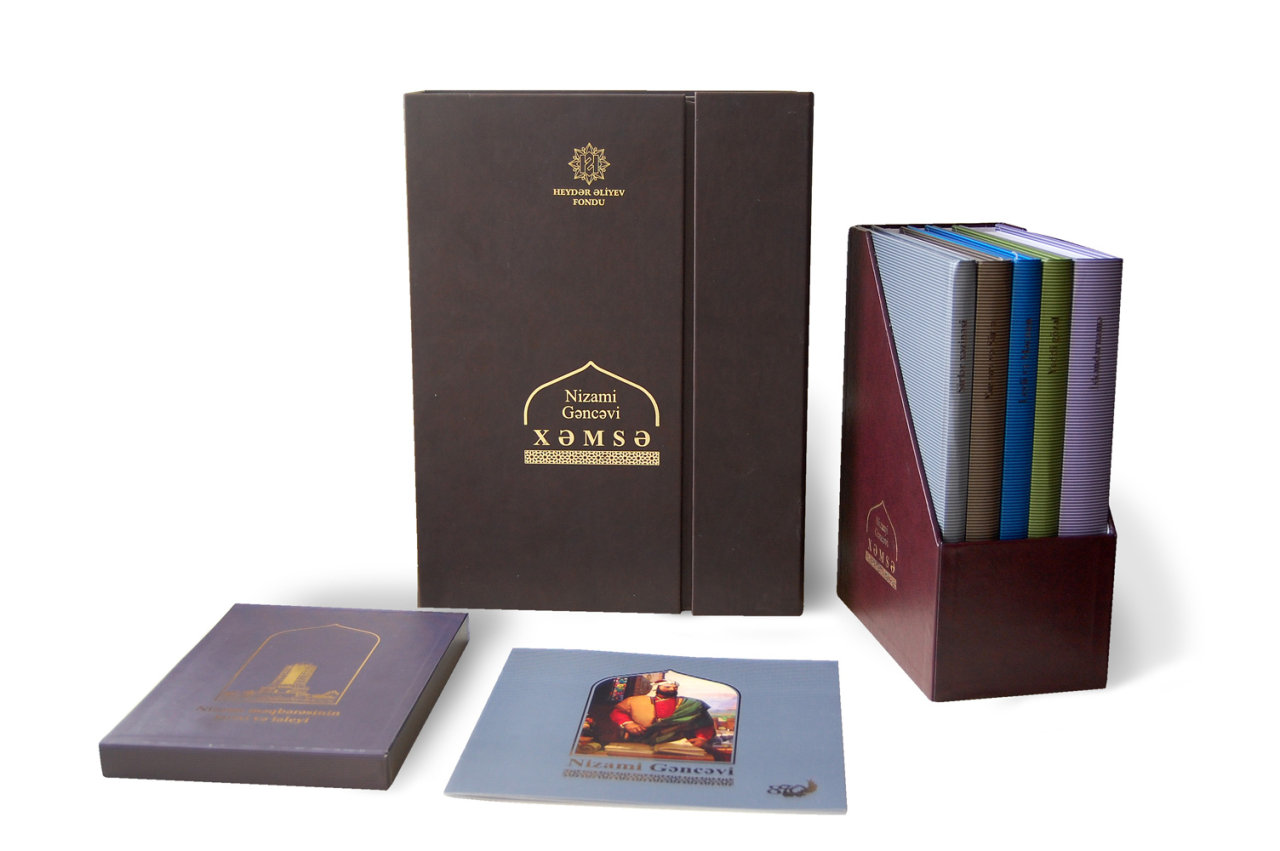
Nizami, reflecting the dynamic progress of the hero according to the type of romantic profession, at the end of his poem showed an unbelievable change of his hero into an ideal person under the influence of his love. The poet relates the tragedy of Khosrov with another historical event taken from Islam reality; prophet Muhammed in his letter to Khosrov invites him to Islam and Khosrov tears the letter into pieces showing his indifference. This extract was given as an addition to end the poem.
Description and praising of pure love, heightening a man and perpetuating his name are clearly seen in ‚Leyli and Mejnun'(1188), the third member of ‚Khamsa‘ composition. In this work, written by request of Shirvanshah Ahsitan, Nizami succeeded with his admirable ability to create immortal love epos. He is known to be the first artist in the Near and Middle East literature to write an epos of this theme. The chief heroes of the epic Leyli and Geys, named ‚Mejnun‘ (mad) by the society, which did not want to accept the idea of human freedom, turned into a personification of a human wish of freedom of. One of the main problems of the work is a new outlook to woman freedom. The poet rejects old traditions preventing the freedom and the progress of the society and the personality, puts forward and grounds the necessity of an idea about the rational freedom of a human in the society. The reason for the tragic end of the subject Nizami sees inn social environment surrounding a human, non-logical traditions of this society, animal instincts. He faces all it with natural environment, the world of animals that a man can not interfere. The poet shows that pure animals which are far from social influence, better understand the superiority and purity of Mejnun and gather round him. In the foreword of the epic Nizami gave an exposure to many faults and disformity of human society.
The rest epic poems of Nizami ‚Yeddi Gozel'(‚Seven Beauties‘)(1197) and ‚Iskendername‘ (1203) are the results of long-time scientific researches in the libraries, the logical conclusion of his observations. The theme of both of the works as defined by the author himself and used it as philosophical-poetic mean in the literary realization of a social ideal. Both the works have the historical base, but the author used the history as the background, and in most cases changed the real historical fact according to his aesthetic ideal. From this angle, these poems could be analyzed as a logical continuation of one another. The main idea that Nizami aims to solve as a humanist artist is human happiness and its ways. As in the middle ages, the responsibility for it was put on the leader and not the society, the philosophical and literary works reflected the same aspect of the facts. With the help of Isgender image, Nizami showed how fair and enlightener leader may have the capabilities of working for the happiness of society and harmonic development. In this aspect, we may see the progression of leader images created by Nizami from work to work and their corresponding to the demands of the society. The images of leaders beginning from Khosrov (‚Khosrov and Shirin‘) to Bahram Gur (‚Yeddi Gozel‘) and Isgender (‚Isgendername‘) reaches the level of a prophet who shows the right way to many people and restores the justice not only in his country Greece, but also in the whole world(in the second part of ‚Isgendername‘-‚Igbalname‘).
The great size of the art of Nizami and purity of his aesthetic ideal greatly influenced the following development of Azerbaijan literature, the principles of humanism and democracy defined by this great genius extended humanistic inclination not only in Azerbaijan but also in the whole Near and the Middle East and in a part of West literature.
THE LITERATURE OF THE MIDDLE AGES
At the beginning of the XIII century in Azerbaijan literature, developed in Arabian and Persian languages under the influence of objective historical reality, we notice that poets and artists creating in their mother tongue increase in number. The ancient literature gives its turn to the beginning of the middle ages in Azerbaijan literature.
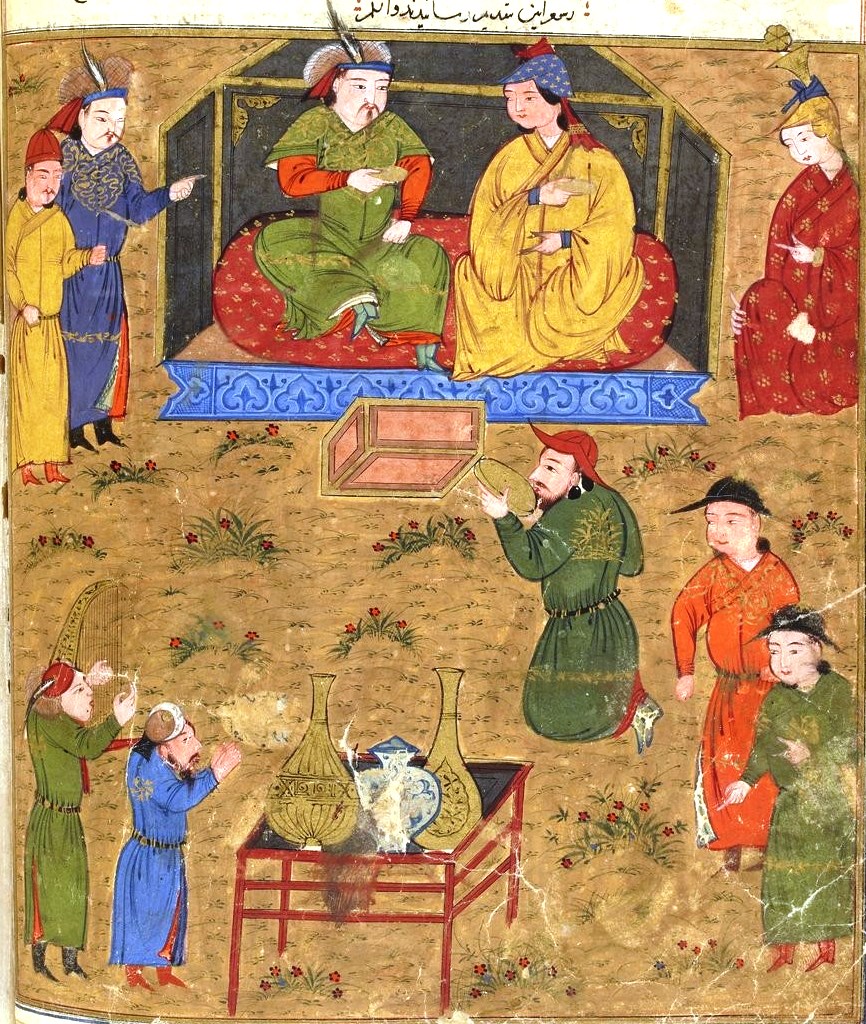
Lyrical poets like Izzeddin Hasanoglu and Sheykh Safiaddin Ardebilli mostly preferred to create worldwide poetic samples relating to the reality of the life, then lyric and epic samples with Sufi-mystic ideas created by the artists of other people. Three gazals of Hasanoglu in Turkish and one in Persian, a little divan of Sheykh Safi gives us a full description of native literature of that period and forms an idea that the future great poetry has got a strong foundation. The Sufi-mystic idea and characters weakly-defined in Hasanoglu’s gazals prove that this flow is gradually degraded. Existing poetic samples proves that he was a great poet, with a rich creative experience. They hope to find more of his poetic works.
Among the epic poetic samples of XIII century, we must name an anonymous ‚Dastani-Ahmed Harami'(‚The epos about Ahmed Harami‘) and the epic poem ‚Gisseyi-Yusif‘ by Gul Ali. Both of the works can be called the object of presentation of high humanist values of Islam, in both of them the authors call the reader to the well, justice, philanthropy, honesty, conscience and belief, on which Shariat of Islam is based, they call a man to keep far away from inhuman bad patterns. Different from Middle century European knight novels, the main aim here is not the presentation of the events in an attractive form, but that of moral ideas on which the epic is based.
‚Gisseyi Yusif‘ relating with sura ‚Yusuf‘ in Koran, speaks about honesty and sincerity and their favour to a man.
Humam Tabrizi (1201-1314), the poet of South Azerbaijan, lived and created the whole XIII century and the first decade of the XIV, was a well-known social-political figure and a talented poet of this time. We know the epic poem ‚Dehname‘ (‚Ten Letters‘) and a ‚Divan‘ in Persian by Humam Tabrizi. In his creativity, he used the school of Nizami Genjevi and pleasantly mentioned his name. The main idea in Humam Tabrizi’s creation is as same as in Nizami Genjevi: the admiration of humanism and a human beauty-the main peculiarity of Turkish national mentality.
The epic ‚Gulshani Raz‘ by Sheykh Mahmud Shabustary (1287-1320), well known in Azerbaijan literature as a representative of Sufism, deserves much attention in comparison with his other prosaic and poetic works. This work, written in the form of philosophical questions and answers, puts forward many scientific-social problems interested modern-outlook intellectuals and men of science of the time and they tried to find answers according to the knowledge of the poet.
Suli Fagih and Mustafa Zarir, Azerbaijan poets of the XIV century created works in mother tongue alike ‚Yusif and Zuleykha‘ written on the motives of Koran. The epic ‚Varga and Gulshan‘ by Yusif Maddah, the artist of the same period, is a corresponding specimen of epic poems written in the mother tongue. All abovementioned works played certain roles in the further development of epic poetry.
To overview the general progression of the that-period literature, XIII- XVI century works need a particular study. During the mentioned period, the native literature widens and progresses in quality and prevailed Persian-language literature, nevertheless part of literary creators kept the tradition of writing in Persian.
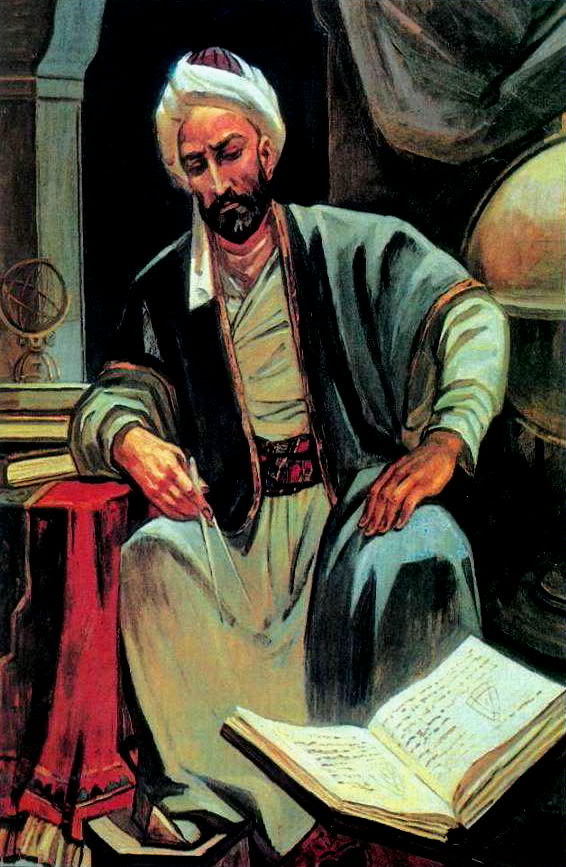
Famous Azerbaijan poets and thinkers wrote in Persian-Nasreddin Tusi (1201-1274), Maragali Ohvadi(1274-1338), Arif Ardabili(1311-) tried to create works following traditions of Nizami. Together with scientific-philosophical heritage Nasreddin Tusi, the author of fundamental moral-didactic work ‚Ahlaki-Nasiri‘, created literary-artistic work. Epic poems of Maragali Ovhadi ‚Jami-Jem‘ and ‚Dehname‘ are considered to be an honorable specimen of Azerbaijan epic poetry. Most of the philosophical and humanitarian problems mentioned in these works keep their actuality for different societies. Stagnation, hopelessness appeared in the society after Nizami, in many of the artists works, as well as in the epic ‚Mehr and Mushtari‘ by Assar Tabrizi (1325-1390) the pure feeling of love, found its genius description and admiration in ‚Khosrov and Shirin‘ and ‚Leyli and Mejnun‘ by Nizami, is looked upon as great and disinterested friendship between two young people. In the work with a difficult subject, we seize weak poetic completeness and clearness in comparison with the level of that of Nizami. At the beginning of the epic, the poet himself gives a high evaluation of the art of Nizami and praises its inaccessibility.
‚Jami-Jem‘, the largest work of Maragali Ovhadi, is of an encyclopedic character, giving an artistic description of most humanist ideas widely spread in the literary circle of that time. Alike the glass of Jamshid, the legendary ruler, informing him from everywhere of the world, the epic of Magarali Ovhadi discloses like in the mirror to the reader most of the aspects of human and social life, as well as natural events. Azerbaijan literature develops in world direction as in past centuries, and literature takes the position of a lively part of social and political life. That was why the creation of Gazi Burhanuddin (1314-1398), the poet and the ruler of the XIV century, was highly evaluated by Edward Brown, an English orientalist, as the first specimen of world poetry in Turkish literature. While reading chronicle ‚Bezm ve Rezm'(‚The assembly and the fight‘), by the historian of the palace Astrabadi, dedicated to life and activity of Gazi Burhanuddin, one greatly admire how such a great man could accompany his poetic activity with intensive and bloody struggle for realization of his ideals in terrible period of time and create ‚Divan‘, which keeps its importance today. Azerbaijan literary language, founded in the creation of Hasanoglu and Sheykh Safi reaches its pick in ‚Divan‘ of Gazi Burhanuddin, many poetic characters and phrases stabilize and is getting ready to the use of future artists. Gazi Burhanuddin is the first to use tuyug, the pure Turkish poetic genre. This genre is later met in the creativity of Nasimi and to ‚Divan‘ of a great poet of Uzbeks Alishir Navai.
The principles of humanism formed in literature and the social-political idea of this period reaches its pick in the creativity of Seyid Imadeddin Nasimi (1369-1417). The works of this great poet, are somewhat the next great step towards the world, humanism and democracy not only in the literature of Azerbaijan people but also that of the Near and the Middle East. Imadeddin Nasimi, after his predecessor Nizami Genjevi, is known as one of the publicists, messenger of ideas of humanism, philanthropy in our literature. While people wanted to relax after several-decade Mongolian oppression, Amir Teymur, the famous conflicting ruler of middle century East, starts his attacks and thus the new stream of protesting the cruelty and the violence starts. The creativity of Nasimi is the result of such humanist protest, of opposition to cruelty and violence, of the struggle for human rights. The ideas of Hurufism used by the poet was something like facing. The works of Nasimi released from that facing today amaze the modern reader with the deep humanist plot, the wealth of respect and love to a human. Different from other hurufists, wrote their works in a special coded language, firstly from his teacher Fazlullah Naimi, the purpose of Nasimi was to protest cruelty and violence in his native language, thus calling people to hate anti-human attitude, to strengthen the wave of protection. His idea of a wise man raised to the level of the divine, was dedicated to simple people realized their human rights, free from social ugliness and wild instincts, realized himself as a person. Not only the creativity of Nasimi but also the whole his life surrounded by legend and tale is a school of courage and bravery, insistence on one’s ideas, the fearlessness of death for a generation. The terrible punish given to the poet by reactionary priests for his freedom-loving humanist works-stripping off the skin while alive, made this great artist a model to the modern generation, as well as future one.
XV century in Azerbaijan literature is the crossing level between the picks Gazi-Nasimi and Khatai-Fizuli. Creation, at that period, of independent states Aggoyunlu and Garagoyunlu in the territory of the country brought some enlivening to literary life, developed native-language poem in character and the plot. Khalili, Hamidi, Kishvari, Hagigi, Sururi, wrote in the native language and Shah Gasim Anvar, Badr Shirvani, generally wrote in Persian, are inseparable from a literary picture of the period. The name of Jahanshah Hagigi (the reign 1436-1467), the head of Garagoyunlu state, should especially be mentioned among the names of the poets. As his predecessor Gazi Burhanuddin, he found the time to raise his head from the bloody fight and create his own divan. But his faith was as terrible as that of Gazi Burhanedin’s, his ‚brothers‘ Turks were killed by members of Aggoyunlu in terrible battles.
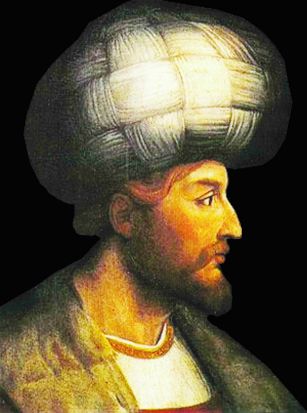
Hamidi, born in 1407 in Isfahan, the capital of Sefevids, 20 years lived in the palace of Fateh Sultan Mahammed for his personal application to Turkey in 50-s of the XV century, the author of a divan of lyrical poems, the historical work ‚Tavarixi-Ali-Osman'(‚The history of generation of Osman‘), ‚Jami-suxanguy‘ (‚Speaking piyala‘), about fortune-telling and autobiographic ‚Hasbihalname‘ is a well-known representative of XV-XVI century Azerbaijan literature.
One of the great representatives of XV century Azerbaijan literature is Nematullah Kishveri. He generally wrote his poems under the influence of Navai but showed new original poetic style in Azerbaijan poetic school. Using original poetic characters in poetry, Kishvari occupies a unique place in Azerbaijan literature. He lived in the palace of Sultan Yagub, the ruler of Aggoyunlu and was acquainted with his contemporary, Habibi, malikkushuara (monarch of the assembly) of Aggoyunlu palace.
The creativity of the that-period poets as Habibi, Shahi, Suruhi played a great role in the formation of the poetry of Khatai and Fuzuli. This is proved by the fact the great Fuzuli under the influence of Habibi’s poem and wrote rich with devices taxmis to one of his ghazals.
In the XV century Azerbaijan literature, literary Azerbaijan language, which in many aspects was, till that period, common with the literary language of other Turkish people, possesses distinctive features and since XVI century continues its traditions as independent literature. XVI century Bagdad literary environment is especially characterized by deep influence to the national poetry. We may come across with names of that-time poets, influenced by Bagdad environment, in ‚Gulshani Shuara‘ (‚The Garden of poets‘) by Ahdi Bagdadi, the memoirist of the XVI century and in ‚Mejmeul-Hevas‘ (‚The assembly of the chosens‘) by Sadig bey Sadigi, the librarian of Shah Abbas, the role of which is indisputable in attaining wisdom of Fuzuli.
In XII-XVI centuries Azerbaijan literature the next pick of Renaissance ideas after Nizami is Muhammed Fuzuli, well known as ‚heart poet‘ in western orientalism. The creativity of Fuzuli had not appeared by itself, great artists helped to form the personality of Fuzuli during a definite period of time. Shah Ismail Khatai(1487-1524), the great statesman and poet of Azerbaijan, the contemporary and somewhat patron of Fuzuli, occupies a particular place among them.
Shah Ismail Khatai is the founder of dynasty playing a particular role in the social and political history of Azerbaijan. In the face of poet-ruler, Khatai continued and developed the traditions of his predecessors Gazi Burhanuddin and Mirza Jahan Hagigi, and during his 36 years long life he did not only create and stretch the great state of Azerbaijan but also prepared the ‚passage‘ to Fuzuli pick with his special role in development of native literature. The literary heritage of Khatai includes works written both in different genres of lyric and that of poem-couplet. Different from Fuzuli, who paid great attention to the scientific character of the poem and the usage of poly-layered poetic figures, Khatai preferred to write in the plain native language, and created poetic samples such as goshma, gerayli, varshagi, bayati, which are considered to be of secondary importance in classical poetry. His epic ‚Dahname'(‚Ten letters‘) of sweet language is the first work written in Azerbaijan language on this theme. The poem presents ten letters from Lover to Beloved written in the form of epical-lyrical tahkiye. Gazels given in the text serve to disclose the mood of the heroes.
Khatai checked his capacity in the didactic genre and created the epic ‚Neshhetname‘, calling to breeding and training of the younger generation. Shah Ismail Khatai, coming on reign when he was 14 and during 20-year long-ruling creating a great empire, as well as with his rich artistic heritage aries the feelings of admiration and proud in the hearts of the following generation. Political activity, life and creative activity of Khatai awoke deep interest not only in Azerbaijan but also in world orientalists. Under the influence of such interest, the life and creativity of Shah Ismail Khatai, Azerbaijan poet and a statesman is still object of investigation of different generations of orientalists.
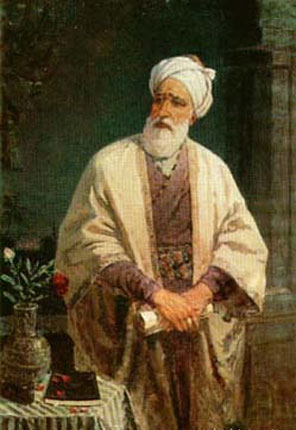
In Western civilization the creativity of Muhammed Fuzuli (1494-1556) is often compared with Barokko; the smallest poetic details found here their place, nothing is extra or unknown, poetic elements hardly seen with a simple eye, form ‚monolith‘ artistic organism in harmony. According to an individual artistic miracle, the creativity of Fuzuli can be compared with the great artists, the masters of a word, such as Dante, Shakespeare, Pushkin, bred by the world mentality history-long; all these artists are immortal for admirable beauty coming out from their poetic talent. That is why classic Azerbaijan literature realizes its eternity is displayed in a new perspective for different cultural-social generation at a different historical period. So every passage-period has its own Nizami, Fuzuli, Vagif and they different from Nizami, Fuzuli and Vagif of the previous generation and turn into the carrier of new cultural-aesthetic, social-ideological functions.
Globalism seen in Nizami shows itself in immortal works of Fuzuli written in three leading living languages of whole Islam culture- Arabic, Persian and Turkish. The poet has ‚Divans in three languages, philosophical treatise ‚Metleul-Etigad‘ in Arabic. ‚Divan‘ in Persian prevails in number, while ‚Divan‘ in Turkish in quality. His qasidas written in native language may be called purls of this Genre in the middle century literature. The epic ‚Leyli and Mejnun'(1536) written in Azerbaijan language, is a unique sample of this genre. It is true that Nizami created works on the same theme in Persian, Navai, Zamiri and Hagigi has that of in Turkish before Fuzuli. But all these epics lack the interpretation of love as Fuzuli did, i.e. Fuzuli managed to create something different from abovementioned. Though the beginning of the epic presents the work as a metaphor to divine love, the whole poem is full of lively, real, accepted by all its contradictories human characters created by Fuzuli.
Fuzuli played a great role in further development and purification of Azerbaijan literary language, turning into the language of high-level poetry. He also played a great role in the development of the language of prose by a gift ‚Shikayetname‘. The main text of the largest work of the poet ‚Hadigatus-Suada‘ (‚The garden of the luckiest‘), dedicated to the misfortune of torturer imams, is written in prose, but here and there Fuzuli used poems according to the subject of the context.
Fuzuli is the artist read not only in Azerbaijan but a great geographical-ethnical area where Oguz-Turkish language is excellently understood. The works of Fuzuli are famous in Iran, Turkey, Tatarstan, Uzbekistan, and even Uygurstan up today.
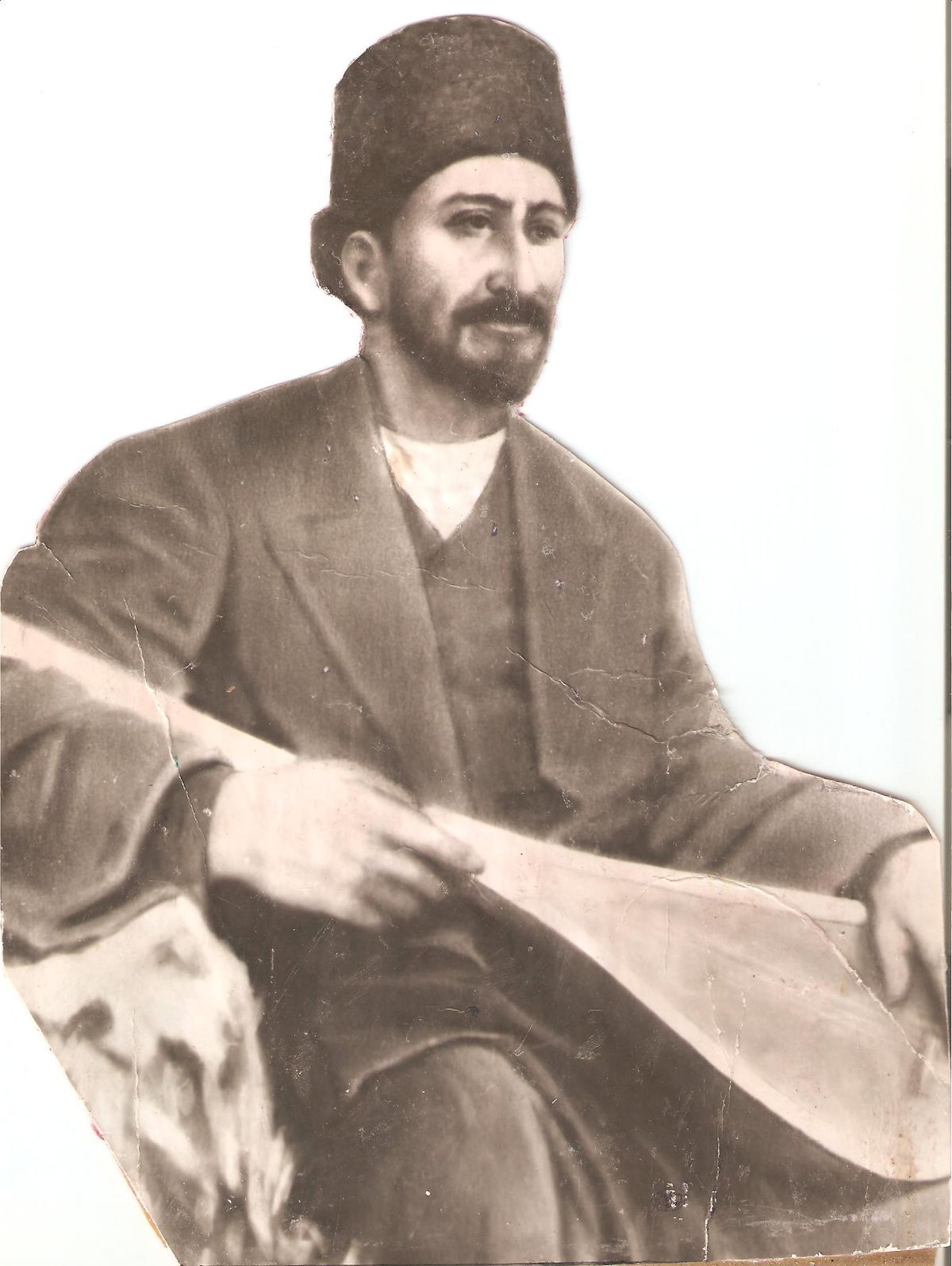
XVI-XVII centuries in Azerbaijan literature are also famous as the period of formation of middle century love and heroic eposes. In the works of Gurbani, Ashiq Abbas Tufarganli, the representatives of oral folk-lore we are about to see the same experience of Fuzuli in written poetry. Perfect love eposes like ‚Ashig Garib‘, ‚Abbas and Gulgaz‘, ‚Asli and Kerem‘, heroic epos ‚Koroglu‘ as the heir of ‚Kitabi-Dadam Gorgud‘ are the products of this period and are added into the repertoire of folk artists. Folk poetry samples goshma, gerayli, varsagi, bayati, known to us from the time of Shah Ismail Khatai, progresses. In order to show how Azerbaijan eposes of Middle Centuries effect, it is enough to mention that the subject of ‚ Koroglu‘ influenced Turkmen, Uzbek, Tajik, Armenian, Georgian folk-lore and created their own eposes.
Under the influence of another representative of folk creation-ashugs, in XVII-XVIII centuries Azerbaijan literature approaches to life and lively language, this was the foundation of the passage to realism in Azerbaijan literature. Though the traditions of Fuzuli still have a strong effect, such artists as Saib Tabrizi, Govsi Tabrizi, Muhammed Amani tried to be free from this effect. In the works of Shakir, Nishat and Mahjur, the poets of XVIII century Shirvan literary environment, we may see the description of different problems of the time, as well as an artistic expression of anxiety about the terrible life condition of simple people.
Molla Veli Vidadi (1707-1808), especially Molla Panah Vagif (1707-1797), with their works written in plain, lively language brought the poetry close to the people. In Vidadi’s epic ‚Musibatname‘ many of historical events and personalities found their high poetic-vivid description. In this period the poetry tries to avid the control of special individuals, and embraces the all, becomes more popular. People quickly approach to and join with aesthetic values. The creativity of Vagif plays a particular role in this meaning. With simple, real, world beauty images, from classic romantic art, he made a great step towards realism and defined the further direction of the development of the literature. Vagif was also a famous political figure of his time, for a long time defined the foreign affairs of Karabakh khanate. XVIII century in Azerbaijan literature serves is a passage between middle ages and the beginning of a new period.

At the beginning of the XIX century, an important event happened in the history of Azerbaijani people – the admission of Azerbaijan into the Russian Empire, – which strengthened western tendencies both in culture and literature. Under this influence national and realistic-world motives in literature rush to the first plan. Under the immediate influence of Molla Panah Vagif’s creativity, in Garabagh literary environment appears a representative of critical-realistic satire Gazim bek Zakir(1784-1857), and for along-term period defines the direction of poetic development. Both in the creativity of Zakir and his contemporaries, the traditions of Ruzuli are worked in a new level. The best representatives of this tradition were Seid Aculgasim Nabati (1812-1873) in Southern Azerbaijan, Seyid Azim Shirvani (1835-1888) and Hurshud Banu Natavan (1830-1897) in Nothern Azerbaijan. Seyid Azim dedicated the whole of his life to pedagogical activity, is famous in Azerbaijan literature also as a great enlightener, and the theme of many of his works is about the instruction and education of a younger generation. His satires in the spirit of that of Gasim bey Zakir’s is characterized by exposing many of social faults and negative patterns of the men of his time.
As many cultural people of the world, the XIX century period of Azerbaijan literature is characterized as the time of quick progress, the insistent movement to humanist ideals and enlightenment, the time of first serious step towards grounding of power of the brain. Especially after joining of Northern part of Azerbaijan to Russia, in spite of reactionary and colonial charter of the event, one can notice some literary-cultural progress in comparison with the Southern part of the country. It is enough to mention, that the creativity of south Azerbaijan poet Seyid Abulgasim Nabati (1812-1873), the contemporary of Mirza Fatali Akhundzadeh, with its aesthetic beauty, covered only the ideas of Sufism and the thousand-year tradition of the East.
In the surrounding of the men of art and ideas of the period, such as Abbasgulu aga Bakikhanov (1794-1847), Mirza Shafi Vaseh (1792-1852), Ismail bey Gutgashinli (1801-1861), closely acquainted with Russian and western orientalists and poets, and their progressive humanist ideas, you may see the personality of Mirza Fatali Akhundzadeh, who presents Azerbaijan literature to modern world literature and relates it with Russian and the West.
A. Bakikhanov is a great social figure, who managed to synthesize western ideas with the traditional art of the East in Azerbaijan literature, a scientist and a poet. His literary and scientific works, dedicated to Azerbaijan reality had been translated into Russian and Germanic in his life and was also praised in the press of Europe. Fredric Bodenshtedt, the German orientalist, took his master Mirza Shafi Vazeh’s poems to Europe, translated it into Germany and published them. ‚Nagmeler‘ (‚Songs‘) of Mirza Shafi, translated into any European language, brought popularity to F. Bodenshtedt and he rejected the authorship of Mirza Shafi… ‚Rashid bek and Saadat Khanum‘, the first successful new Azerbaijan realistic prose by I. Gutgashinli, was published in Warsaw in French.
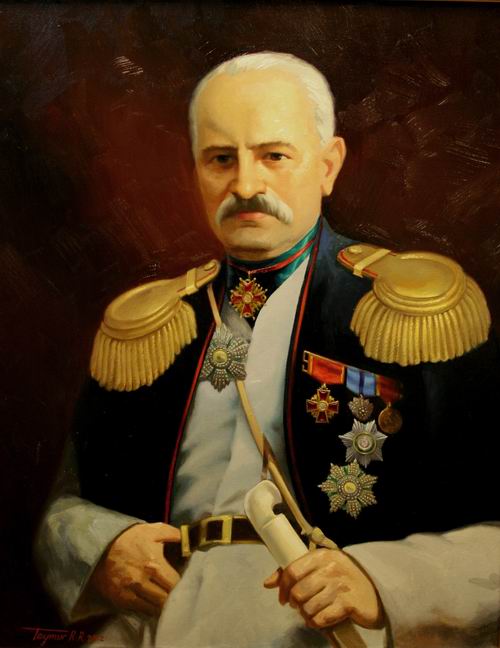
Realistic-enlightener view of Mirza Fatali Akhundzadeh (1812-1878) plays a particular role in the further development of Azerbaijan literature and created a stable basis for developing the genres of modern western literature such as drama, novel, tale, short story, narrative, an epic poem and so on in Azerbaijan literature. His first six dramas created in 1850-1855 formed a literary school in the literature of the Near and the Middle East after him. Deep ethic beginning, the motives of humanism, love of justice, sincerity and honesty, generally characterized Azerbaijan literature is again worked over and developed in Akhundzadeh’s creativity and is suggested to the future generation. Continuing the advanced traditions of Azerbaijan literature, Mirza Fatali Akhundzadeh was not only a writer, a poet, but also a philosopher, a social figure, who saw the purpose of his creativity in supporting the happiness of his people. Giving great importance to the art and the literature in the enlightenment and achieving modern literary-cultural, scientific values by his people, Mirza Fatali Akhundzadeh was the first creator of works in drama in the East. His six comedies gathered under the name ‚Namsilat‘ („Hekayeti-Molla Ibrahimkhalil kimyager“, „Hekayeti-Misyo Jordan hekimi-nebatat and Dervish Mestelishah jadukuni-meshur“, „Hekayeti-khirs guldurbasan“, Serguzeshti-veziri-khani-Lenkeran“, „Serguzeshti-merdi-khesis (Haji Gara)“, „Murafie vekillerinin hekayeti“) was published in Tiflis (today’s Tbilisy) in 1859. M.F.Akhundzadeh, was not the apologist of Russian tsarism, as some investigators use to think, with the language of aesop, with hints he criticized the policy of colonialism of Russian empire when necessary. His prosaic works as „Kemaluddovla mektublari“ (1865), „Aldanmish kevakib“ (1857) revealed the faults of the society and political structure of his country as well as Iran’s past and state structure.
The literary-aesthetic direction chosen by Mirza Fatali Akhundzadeh for his people culture, bred in the second half of the XIX century such realists-enlighteners as S.E.Shirvani (1835-1888), N.Vezirov (1854-1926), A.Hagverdiyev (1870-1933) and served to progress literature and culture not of only Azerbaijan, but also of neighbouring people. The special role in active development of literary-cultural life belongs to the multisided newspaper ‚Ekinchi‘ (1875-1877) printed by naturalist-scientist H.Zardabi (1837-1907). Many literary-social discussions and debates found here their reflection, helped to strengthen and development of humanistic traditions of Azerbaijan literature.
Religious-didactic poetry eloped together with the tendency towards realism-enlightenment in the XIX century Azerbaijan literature. The main representatives of this tendency are south Azerbaijan poets Raji, Dilsuz, dexil, Gumri and others, who wrote mersiye. Under the influence of advanced literary process in northern Azerbaijan, the artists of southern Azerbaijan tried to create world products. „Salabiyye“ („The letter about the fox“), by Muhammed Bagir Halhali(1829-1900), „Kitab yuklu eshek“ (1888) (‚Donkey with books‘), by Abdurrehim Talibov, „Ibrahim beyin seyahatnamesi“ (‚The trip of Ibrahim bey‘), by Zeynalabdin Maragayi (1892) are the corresponding samples of realistic-world literature.
Another branch of the XIX century literature, inclined to the East creation was formed in literary meetings. The literary meeting „Gulustan“ in Guba was ruled by Abbasgulu aga Bakikhanov Gudsi, „Acumeni-shuara“ („the assembly of poets“) in Ordubad by Haji aga Fagir Ordubadi, „Fovcul-fusaha“ („the group of orators“) in Lenkoran by Mirza Ismail Gasir, „Beytus-Sefa“ („The house of Sefa“) in Shamakhi by Seyid Azim Shirvani, „Mejmeush-shuara“ („the group of poets“) in Baki by Muhammed aga Jumri, „Divani-hikmet“ in Genja (later in Tiflis) by Mirza Shafi Vazeh, poetic meeting „Meclisi-uns“ in Shusha by Khurahud Banu Natevan, „Mejlisi-feramushan“ („the meeting of lost“) by Mirza Mohsun Navvab. There was a close relation between poetic meetings and the poets correspondent to each other. The XIX century literature created a foundation for XX century literature, a new higher level of Azerbaijan literature.
Alike many other people included once into the Russian empire, the first decades of XX century Azerbaijan literature make a special level in literary-cultural life of Azerbaijan. With their own creativity well-known representatives of realistic and romantic literature, based on the pattern of Europe and Russia, such as J.Mammedguluzadeh (1866-1932), M.A.Sabir (1862-1911), H.Javid (1884-1944), M.Hadi (1880-1920), A.Sahhat (1874-1918), A.Shaig (1881-1959), raised the level of Azerbaijan literature to one of the best patterns of literary-cultural conception of the world. J.Mammedguluzadeh and M.A.Sabir, the representatives of realistic literature, M.Hadi, A.Shaiq, that of romantic poetry, H.Javid that of dramaturgy, played a greater role in the development of the literary-social idea of Azerbaijan.
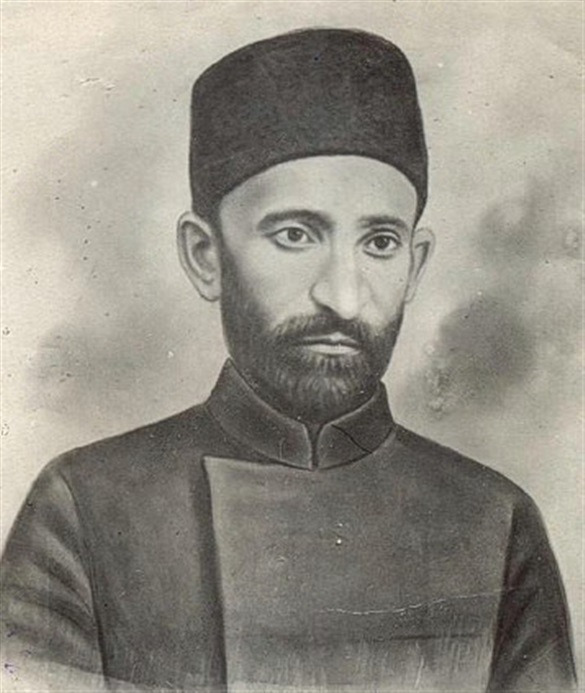
Under the editorship of the great artist and a social figure, J.Mammedguluzadeh people get acquainted with periodical ‚Molla Nasreddin‘, firstly published in 1906 in Tiflis, for 25 year-long periods of time played an important role in literary-cultural and social-political life and parallel to it in its realistic-humoristic style „Fuyuzat“, 32 times published under the editorship of famous publicist, philosopher and social figure A.Huseynzadeh (1864-1940), which with their serious and romantic style served to enlighten and develop our people.
Among literary figures of the time Jalil Mammedguluzadeh (1866-1932), the author of „Hophopname“ Mirza Alekber Sabir (1862-1911) had a greater role in ideal-aesthetic development of Azerbaijan literature. Their realist and satiric works criticizing lack of culture, fanaticism, prejudice and ignorance had remained their importance and actuality up today.
Enlightening dramaturgy, developed with the traditions of M.F.Akhundzadeh, became richer with comedies and the tragedy by Najaf bey Vezirov(1854-1926) ‚Musibeti-Fakhreddin'(1894), written at the complete of XIX century, comedies and such tragedies of Abdurrahimbey Hagverdiyev(1870-1933) as „Dagilan tifag“, „Bekhtsiz javan“ (1900), „Aga Muhammed shah Gajar“ (1907), „Shamdan bey“, „Nadanlig“, „Nadir shah“ by Nariman Narimanov (1870-1925), „Oluler“ (1909), „Anamin kitabi“ (1920) by Jalil Mammedquluzadeh.
Works in the romantic-historical topic of dramaturgy are created by Huseyn Javid (1882-1944) in 1910-1918, such as „Ana“, „Maral“, „Sheykh Sanan“, „Sheyda“, „Uchurum“, „Iblis“.
A Great event happened at the beginning of the XX century in the history of Azerbaijan was the creation of the Azerbaijan Democratic Republic (1918-1920). Its 23-month year-long life is significant with the creation of particular literature of that time. Together with the well-known pen-masters J.Mammedguluzadeh, A.Shaig, A.Hagverdiyev, U.Hajibeyov appeared interesting works of such young artists as J.Jabbarl?, A.Javad, Ummigulsum. Those works praised the liberty of Azerbaijan, the victory of the Turkish army in our country with rescue-mission, the heroism of Azerbaijan soldiers, national three coloured flags. Ahmad Javad(1892-1937), showing particular activity that time, wrote the words to the national anthem of first Republic. That work, the composer of which was genius U. Hajibeyov is now the anthem of Azerbaijan Republic.
THE LITERATURE OF THE SOVIET PERIOD
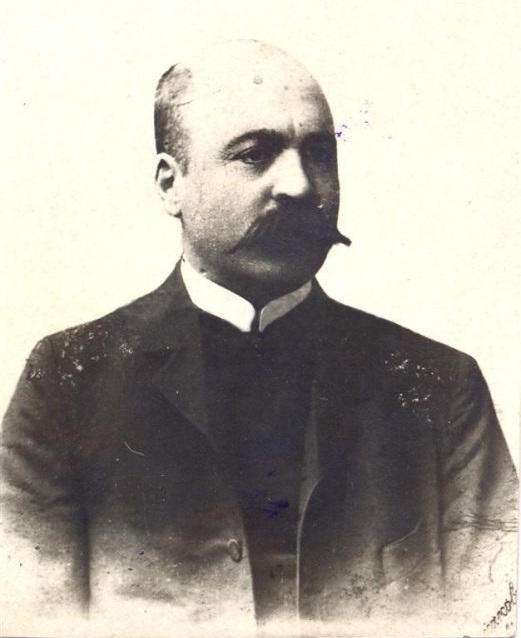
The Bolshevik Russia could not stay indifferent to the formation of independent Azerbaijan, which bordered with such Islamic countries as Iran and Turkey, in the southern borders of the communist empire. As a result, the first democratic government of Azerbaijan was overthrown by the 11th Red Army. This resulted in the establishment of a soviet government in Azerbaijan. J.Mammedguluzadeh and Huseyn Javid saw the true face of ‚the proletarian dictatorship‘ and ‚the paradise of communism‘ and seized its anti-Azerbaijan policy beforehand.
The repressions of the 1930s began in the very first months that the Soviet power was established. The first intellectual victim of that period was Firidun bey Kocherli (1863-1920), shot by Armenian dashnaks in a Ganja prison. He was the director of the Gazakh Teachers Seminary, the well-known scientist and literary critic, the author of the first multi-volume history of Azerbaijani Literature, and a great enlightener. Those repressions represent an extremely sad page in the history of Azerbaijani literature in the Soviet period. Many guiltless workers and peasants were among sentenced for no particular reason. The intellectuals were, however, the main victims of the Bolshevik and Dashnak persecution. It was evident that by means of murdering, deportation and sending to prisons of the best intellectuals of Azerbaijan, the Stalinists were trying to prevent the nation from self-recognition, to destroy moral traditions and turn the nation into blind slaves of the communist ideals. The executors of those „special“ merciless orders, which came from the higher circles, were terribly afraid of intellectuals and were therefore merciless to scientists, who knew history, philosophy, language, alphabet, culture, psychology, national mentality. They exercised a similar approach to writers, poets and dramatists, who with their literary works written in the native language and closely associated with the national spirit, were preventing the destruction of national ideals; and to creative intellectuals as a whole.
Among the repressed artist of that time were well-known figures of Azerbaijan literature, arts, literary criticism and linguistics. The list includes, among others, the great dramatist H.Javid; a talented poet M.Mushfig, well-known prose writer and literary critic S.Huseyn; a poet and author of the first and only anthem of the Republic of Azerbaijan A.Javad; literary man and scientist Y.V.Chamanzeminli; the professor of philology, political scientist B.Chobanzadeh; the rector of the Baku State University and writer T.Sh.Simurg; the founder of the first Oriental Conservatoire in Baku Khadija Khanum Gayibova; a theologian scientist and Gazi of Baku Mir Mahammad Kazim aga; folklore expert H.Zeynalli, the great performers of tragic roles on our stage A.M.Sharifzadeh, U.Rajab and many others… Except for Y.V.Chamanzeminli and H.Javid, who died in the deportation and in prison, all the others were shot dead. Murderers did not pay attention to the age of their victims – they were judged and punished very quickly. One of the first translators of Gurani-Kerim in Azerbaijan, the Baku Gazi Mir Mahammad Kazim aga was shot at the age of 83 and M.Mushfig at the age of 29. In difficult and contradictory social condition Mikayil Mushfig (1908-1937) enriched the national poetry with immortal works alike „Ohu, tar!“ (Sing, Tar). He only had time to create for 10 years, the smallest period known in the history of world poetry. Nevertheless, the works published during this period left deep traces in national literature. Mushfig’s works are known for exciting feelings, romantic moods, fluency in the language. All these attributes ensure everlasting popularity and high artistic values of Mushvig’s works.
Because of the global events in the first decades of the XX century and the social concussion in the region, especially after the occupation of the ADR and the following repressions of the 30s the creative intellectuals of Azerbaijan were constantly persecuted, and were obliged to migrate in order to survive and continue their literary activity.

Those who were taken as prisoners of war and prohibited from returning to their homeland during the war against the German fascism had to find a shelter abroad and are scattered now through Asia, Africa, Europe, America and even Australia.
All intellectuals who migrated from Azerbaijan had something in common – they retained, represented and popularized the national literature and cultural mentality of Azerbaijan, the ideas of Azerbaijanism everywhere they settled. They did their best to draw the attention of foreign powers and communities to the troubles Azerbaijan was facing. Some of those who migrated from Azerbaijan is still writing today and got vast heritages of literature, scientific-philological articles and publications. These are Alibey Huseynzadeh, Ahmed bey Agaoglu, Mahammed Emin Resulzadeh, Mirza Bala Mahammedzadeh, Alimerdanbey Topchubashov, Jeyhun Hajibeyli, Samed Agaoglu, Ahmed Jaferoglu, Abdulvahab Yurdsever, Almas Ildirim, Benin (Ummulbanu), Nagi Sheykhzamanli, Mammad Sadiq Aran, Huseyn Jamal Yanar, Teymur Ateshli, Musa Zayam, Ibrahim Arslan, Ali Azertekin and many others. After Azerbaijan regained its independence the „Caucasian Days“ novel by Ummulbanu, „The Black Epos“ collection of poems by A.Ildirim, „Siyaseti-furuset“ monograph by A.Huseynzadeh and „Azerbaijan poet Nizami“ (‚The poet of Azerbaijan Nizami‘) by M.A.Rasulzadeh, stories by J.Hajibeyli, publicism of M.B.Mahammedzadeh were published in Baku.
The dependence of literature on strict directives, violations of the freedom of the word, limitation of literature fantasies with the state policy and other negative facts led to depression, pessimism and passiveness in literature and cultural life.
Nevertheless, this period brought such talents as J.Jabbarli, M.Mushfiq, S.Vurgun, O.Sarivelli, R.Rza – greatly talented artists who frequently affected ideological frames with their Aesopian language. This fact rejects the theory that the literature was entirely dependent on the socio-political situation. We may prove it with a series of strongly patriotic poems ‚Southern Cities‘, the poem ‚A Mother and A Postman‘, gazelles dedicated to the pure feeling of thwart love written by Suleyman Rustam (1906-1989). He was strongly influenced by „The Golden Pens“ by Aliaga Vahid (1895-1965) and started his creative life as a Komsomol poet. The delicate and deeply meaningful gazelles, created by the great poet Aliaga Vahid (1895-1965) during the period, when gazelles were deemed as an outdated and stylistically limited genre by the official circles, were immortalized by the love of people.
One of the most famous novelists was M.S.Ordubadi (1872-1950), who wrote several famous historical novels particularly. Novels „A Sword and A Pen“, dedicated to the Atabeyler state of Azerbaijan and great Azerbaijani poet Nizami Ganjevi, as well as ‚The Misty Tebriz‘, about the freedom movement in the south, written by him, have still preserved their historical and aesthetic value. It is impossible to forget about the role of Y.V.Chemenzeminli, the author of the novels „Iki od arasinda“ („Gan ichinde“) and „Gizlar bulagi“, Suleyman Rahimov (1900-1983), the author of the epopee „Shamo“ and the novel „Sachli“, Mir Jalal (1908-1978), the author of the novel „Achiq kitab“ and laconic tales, Abulhasan Alekberzadeh (1904-1986), the author of the epopee „Dostlug galas?“ and the novel „Yokhushlar“, Mirza Ibrahimov(1911-1993), the author of the novels „Gelejek gun“ and „Pervane“.
The dramaturgy of the Soviet period is inseparable from the names of Huseyn Javid, Suleyman Sani Akhundov, Jafar Jabbarli, Mirza Ibrahimov, Samed Vurgun, Sabit Rahman, Anver Mammadkhanli, Ilyas Efendiyev, Shikali Gurbanov and others. Huseyn Javid (1882-1941) is a great playwright and a poet who enriched the literature of Azerbaijan with genre and the theme during his 30 year-long creativity. His works widened the sphere of the themes in our literature, brought global and deep conflicts, tender-hearted, passionate characters to our dramaturgy. He founded the genre of tragedy in verse with such works as „Ana“, „Sheykh Sanan“ and „Iblis“. In the Soviet period, e enriched his creativity with plays „Peygamber“ (1922),(the Prophet‘), „Topal Teymur“ (1925), (‚Lame Teymur‘) „Knyaz“ (1929), „Sayavush“ (1933), „Khayyam“ (1935), „Iblisin intigami“ (1936) (‚The revenge of the Devil‘) and the epics „Azer“ (1923-1932).
Being the heir and the successor of the national dramaturgy founded by M.F.Akhundzadeh, Jafar Jabbarli (1899-1934) enriched it with the problems and the heroes presented in „Ogtay Eloglu“, „Od gelini“, „Sevil“, „Almas“.

Samad Vurgun (1906-1956) was one of the great poets and play-writers o the Soviet period Azerbaijan literature. He philosophically perceived the mysterious beauty of Azerbaijan nature, the history of the heroism of Azerbaijan people, our humanist values and reflected them in his poems and epics with a special romantic significance. The past century Azerbaijan poetry is bound, for the national character of its language, harmony, figurativeness to the creativity of S. Vurgun, his poem ‚Azerbaijan‘, epic poems ‚Aygun’and „Mugan“, as well as dramas in verse „Vagif“ and „Insan“. The importance of ‚Vagif‘ in the process of self-realization of Azerbaijan people in the period of constant suppression of the Soviet regime, can be compared with the role of ‚Korolu‘ opera by Uzeyir Hajibeyov.
The poems and the epics written by Rasul Rza (1910-1981) in free measure played a particular role in the development of poetic conscience in the Soviet period of Azerbaijan literature. The poetry of innovator R.Rza is distinguished with philosophical lyricism, the vividness of the ideas and the emotions and original poetic characters. His philosophical poems from series of ‚Rengler‘ (‚Colours“), lyrical epic poems ‚Fuzuli‘ and „Gizilgul olmayaydi“ are the best patterns of Azerbaijan poetry.
One of the major peculiarities of Azerbaijan literature in the Soviet Period as its constant ruling by ideological organs, the direction of literary activity by directives. The main was: the resolution ‚About the policy of the Party in artistic literature‘ by CC RK(b)P is 1925, the decision ‚About reconstruction of literary-artistic organizations‘ by CC CUK(n)P in 1932 and ‚About the periodicals ‚Zvezda‘ and ‚Leningrad“ in 1948, the decision ‚About the condition of Azerbaijan Soviet Literature and measures for its improvement‘ by CC Azerbaijan K(b)P is 1948, the decision ‚About literary-artistic criticism‘ by CC Sov.UKP in 1972 and many other political directives. The artistic method of socialist realism defined at the First Common United Congress of Soviet writers in 1934 restricts the activity of the artists and made them continue their creation within definite frames. After criticism of ‚Zvezda‘ and ‚Leningrad‘ for supposed misinterpretation of the soviet way of life and swelling of faults in social life one may notice in Azerbaijan literature the appearance of patterns based in ‚conflictlessness‘, as well as in the literature of other people of USSR.
Ilyas Efendiyev (1914-1996) is distinguished with his special role in enrichment of Azerbaijan verse with vivid, lively, artistic characters and different devices, as well as development of psychological-lyrical style of dramaturgy. A generation of actors and producers had been grown up in performances staged upon 15 plays created by him during half of the century (‚Sen hemishe menimlesen“, „Mehv olmush gundelikler“, „Mahni daglarda galdi“, „Bullur sarayda“, „Hurshidbanu Natavan“), appeared ‚the theatre of Ilyas Efendiyev‘. Ali Veliyev, Huseyn Ibrahimov, Huseyn Abbaszadeh, Bayram Bayramov, Jemil Alibeyov, Vidadi Babanli, Eleviyye Babayeva, Suleyman Veliyev, Azize Ahmedova, Afgan Asgerov, Gulhuseyn Huseynoglu, Alibala Hajizadeh and others brought new themes to Azerbaijan verse and filled it with new personages.

Beginning with the 60-s, softening of social-political atmosphere and with the weakening of ideological ties of USSR, appeared young talented artists with works criticizing political situation of that time. Among them were such prosaists and poets as Isa Huseynov, Mammad Araz, Sabir Ahmedov, Anar, Akram Aylisli, Elchin, Sabir Rustamkhanli, Alekber Salahzadeh and Ferman Kerimzadeh. One should especially name Ismayil Shikhli (1919-1994), recently started his creative activity and his novel ‚Deli Kur ‚. Like their predecessors, the abovementioned artists used the symbols and the language of Aesop. This process was already irrevocable and could be evaluated as the ‚beginning of the end‘. The cross to the 60-s got its beginning and continued with the participation of the generation of 40-s and 50-s and the earlier periods. Many works of an innovator Rasul Rza (1910-1981), especially poems known under the name „Gizilgul olmayaydi“ and „Rengler“, „Sari dana“, „Kefli Iskender“, „Men torpagam“ Should be considered to be the first patterns on this aspect. The novel „Yeralti chaylar denize akhir“, by Mehdi Huseyn (1909-1965), well known as prosaist, play-writer and critic, reflects the real description of the fortunes of the personages with the same mood. Nevertheless, the great event of the literature of 60-90-s the appearance of ’sixtieths‘. So after this appearance turned into the real moral opposition to military regime with whole its spirit and essence, thus played an active role in the moral ideal formation of today’s national movement for democracy and independence.
First of all the ‚Sixtieths‘ deepened its attitude towards the man and his inner world. The literature always based on the man and it goes without saying that literature was named ’study of human nature‘. The attractive point is that the ‚Sixtieths‘ returned the topic of a ‚man‘ into the literature as a new problem of the time. The depth of the moral-psychological world of a person, an individual, simple members of the society were the aspect which interested them. The time, the moral reality in their narrative and stories were not understood as ’social system and structure‘ but as the aesthetic world of conscience, as the criterion of ethics and culture and turned into the subject of literary analysis. Thoughts and imagination of the heroes in these works contradicted the conception of ‚a soviet man‘ in the literature. The popular personages of the ‚Sixtieths‘ are pure lovers of justice, whose strangeness was looked upon as madness, who could not find their place in the society and thus sometimes wandering, nevertheless being the real human, admiring human feelings. In novels and narratives of historical character, we often see the view of the history of the state system, the past rich with the heroism of the people urged to forget their national beginning and state traditions under socialist suppression, their dreams of freedom and independence.
Movement for freedom of word and thought, for freedom of political thought, pluralism, national sovereignty and social justice, began in the literature and continued in 70-90-s, realized its perspective purposes after Azerbaijan get political independence and sovereignty.

In the poetry and dramaturgy of such artists as Bahiyar Vahabzadeh (1925), Nabi Khazri (1924), Nariman Hasanzadeh (1931) we may seize the abundance of honourable pages of the history of people and corresponding lyrical and psychological moments. Poems of abovementioned poets, as well as the poems, different with their actuality and the epic ‚Nasimi‘ by Gabil (1926) the works of Adil Babayev, Islam Safarli, Huseyn Arif, Gasim Gasimzadeh, Aliaga Kurchayli, are valuable patterns of our literature.
Ali Kerim (1931-1969), Khalil Rza (1932-1994), Jabir Novruz (1933-2002), Mammad Araz (1933-2004), Fikret Goja (1935), Fikret Sadig (1930), Alekber Salahzadeh (1941), Isa Ismayilzadeh (1941), Sabir Rustamkhanli (1946), Famil Mehdi (1934-2002), Tofig Bayram (1934-1991), Arif Abdullazadeh (1940-2002), Huseyn Kurdoglu(1934-2003), Ilyas Tapdig (1934), Musa Yagub (1937), Chingiz Alioglu (1944), Nusrat Kesemenli (1946-2001), Zalimkhan Yagub (1950), Ramiz Rovshan (1946) and other poets created new basis for new level of Azerbaijan literature and played an active part in this process.
Anar (1938) is one of the talented representatives of New Azerbaijan verse. The first successful original patterns of Anar’s narration is ‚Agg liman‘ (‚White port‘)(1967). He is also famous as a play-writer and the scrip writer. The scripts of „Dede Gorgud“, „Uzun omrun akkordlari“ (‚Chords of a long life‘), the dramas „Sheherin yay gunleri“ (‚Summer days of the city‘), „Tehmine and Zaur“ are ones enlarging Azerbaijan literature.
Elchin (1943) is representative of the same flow. The narrations „Dolcha“, „Baladadashin ilk mehebbeti“, „Shushaya duman gelir“, series of stories, novels „Mahmud and Maryam“, „Ag deve“, „Olum hokmu“ , palys „Menim erim delidir“, „Menim sevimli delim“ brought him to the level of well-known representatives of modern Azerbaijan literature. Being at the same time a literary critic is the author of monographs „Tenqid ve edebiyyatimizin problemleri“ (‚Critics and the problem of our literature‘), „Klassikler ve muasirler“ (‚The classics and the contemporaries‘), „Cazibe sahesi“ (‚the sphere of attraction‘).
MODERN SOUTHERN LITERATURE
After the division of Azerbaijani lands between Russia and Iran in the first quarter of the 19th century, the literary process in the North and South, which underwent the same literary and cultural development throughout history, began to acquire different features. Due to the lack of education and writing in the Azerbaijani language in the south for many decades, the development of literature, of course, lags far behind the development in the north. The literary and cultural life of South Azerbaijan, which was briefly liberated only during the national liberation movements, developed rapidly, and then again for a long time became a victim of the chauvinist Persian regime. One of such short-term awakening stages took place in 1918-1920 under the leadership of Sheikh Mohammad Khiyabani, and the other is 1945-1946 under the leadership of Seyid Jafar Pishavari. In those years, books and textbooks were published in their native language, and literary samples, written mainly in the spirit of patriotism, were widely published in the national press. Young talents, who first took up the pen in the mid-1940s, were able to continue their work on the pages of the Azerbaijani-language magazine „Varlig“ more than thirty years after the victory of the Islamic Revolution. Among the southern masters, we can name such writers and poets as Hammal, Karimi, Nitgi, Biriya, Sheyda, Sonmez, Sahand, Sahir, Okhtay, Savalan, Farzana, many of whom died and some of whom are still working. It is worth noting the exceptional role of the magazine „Varlig“ in the development of contemporary southern literature, which has been published for more than twenty years and was founded by one of the great scientists and public figures of Azerbaijan Javad Heyat.
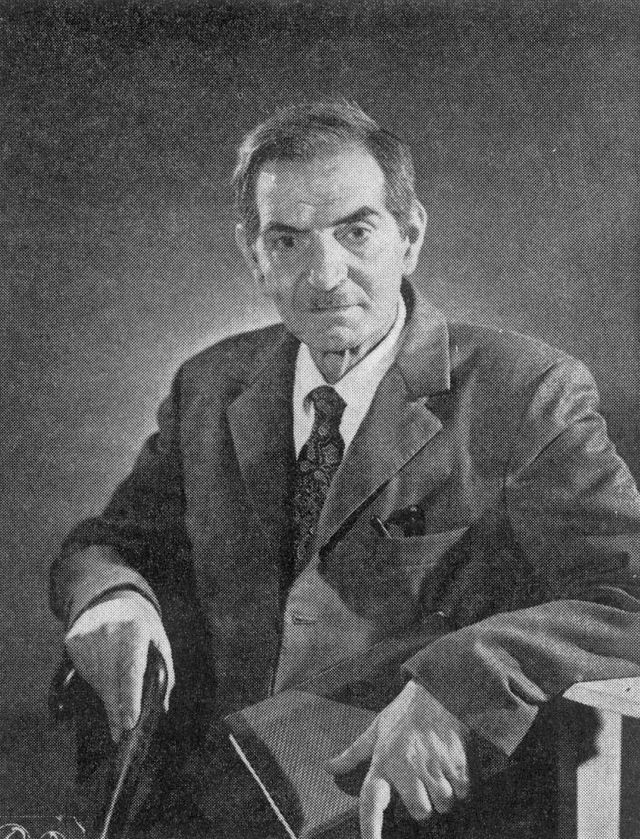
However, speaking about the literature of South Azerbaijan, it is important to note the special place and role of Mahammadhuseyn Shahriyar (1904-1988) among its many representatives. Having received his secondary and higher education in Persian, Shahriyar began his poetic career under the influence of the works of the great Nizami Ganjavi, Hafiz Shirazi, S.A Shirvani, and was known as one of the prominent representatives of modern Iranian and Azerbaijani poetry. Preferring public lyrics in art, Shahriyar speaks extensively about the painful problems of our modern world. His greatest work in the Azerbaijani language is the two-part poem „Hello Heydar Baba“. Dozens of responses have been written to this work, both in South and North Azerbaijan and in Turkey. At present, the literary process is developing in South Azerbaijan. Artists such as B.Azeroglu, A.Tuda, M.Gulgun, H.Bulluri, S.Tahir, who continued their work in the North by the will of fate, enriched the Azerbaijani literature created in both sides with valuable examples.
Literary genres that emerged in the modern style in South Azerbaijan and Iran began with the stories of Mirza Fatali Akhundzadeh translated from Azerbaijani-Turkish into Persian.
His novels „Deceived Stars“ and „The Story of Yusif Sarraj“ are especially noteworthy. These works, translated by Mirza Jafar Garajadagli in the middle of the 19th century, had a great influence on the development of South Azerbaijani literature. This was followed by The Journey of Mr. Ibrahim by Zeynalabdin Maragali, The Profession of Mohsin by Abdul Rahim Talib, and The Book of Ahmad Safi Talib. These works laid the historical foundation for a new genre of storytelling in Iran. Contemporary prose became widespread in southern Azerbaijan during the Constitutional Revolution. Although there were very few prose writers in Tabriz and Azerbaijan during the constitutional period, at that time these works were mainly published in political magazines and newspapers. The most important of these is Jalil Mammadguluzadeh’s „Molla Nasreddin“ magazine. Mirza Jalil also published his first story, ‚Khan’s Rosary‘, about village life. This work has had a great influence on the work of most of Iran’s writers. In this story, the author describes how the Azerbaijani peasants were tired of the oppression of the khans and lived in superstition. The content of the work has been loved by readers for many years. After Moll Nasruddin, Ahmad Basirat published another Turkish-language magazine – Molla Ami. He also published a 110-page book, Animal Testimonies. Here the character of people is revealed in the language of animals. Two years later, Mirza Hassan Rushdie published a book of stories, Amsali Logman. The work is written in the Tabriz dialect. As we have mentioned, these works are considered to be the basis of modern prose in South Azerbaijan in scientific sources. These realistic works also influenced the work of other Turkish writers writing in Persian. In 1950-1975, world-famous works were created in South Azerbaijan. During this period, in 1961, the famous writer of Tabriz Gulamhuseyn Saedi published his book „Bayal mourners“ and thus signed one of the most famous short stories in the world. This work is known as one of the most famous stories in the world about the rural life of Azerbaijan. During this period, Samed Behrangi’s work „Little Black Fish“ also appeared as a world-famous work. Bahrangi’s stories became especially popular among children and teenagers. According to experts, Behrengi is considered the founder of the genre of realist writing for children and adolescents in Iran. Our contemporary prose is still not independent today. They are not able to write great literary works in their national language, because our writers who are not educated in their native language always have to face this problem. Therefore, in the literature of South Azerbaijan, either Turkey or North Azerbaijan was used in our prose. The formation and development of any literature should not only reflect reality but also comply with the norms of the literary language. Today, many of our poets are developing the norms of the literary language. This is a very good and successful step. Recently, our prose writers have been making great efforts in this direction. Now in South Azerbaijan, it is very important to think globally and create in the national language. The foundations of a new wave of literature in our national language are being prepared. It is very important to pay attention to translation work in order to further strengthen the activity in this direction. That is, reading the world in your language is as important to us as air and water. Thus, reading and studying modern ideas and using the achievements of the world art of speech can contribute to the further development of our worldview.
From the beginning of the 19th century, as a result of Russian invasions, Azerbaijani literature was divided into two branches. While North Azerbaijani literature was formed under Russian knowledge, South Azerbaijani literature also faded within the classical framework and became imitation literature. Although folk literature developed during this period, the language of fiction fell behind in this process. In addition to ashug poetry, examples of oral literature such as folk epics, tales, anecdotes, riddles, and bayats were at a high level. At the same time, however, classical literature has become increasingly weak. Ghazal and especially lamentation were the main places in the literature of South Azerbaijan. Dilsuz, Raji, Purqam, Shuayi, Ahi, and Mugbil are known as important mourning poets of the 19th century. Among the first representatives of new literature in South Azerbaijan, Abdul Rahim Talib, Zeynalabdin Maragali and Mirza Ali Tabrizi were among the leading poets. At the beginning of the twentieth century, Azerbaijani writers, thinkers, and public figures turned their eyes to the world and, in the light of what had happened, laid the groundwork for our future literature and culture. In particular, as a result of relations with the Turkish press, along with rapprochement in language, literary and political relations were formed. At a time when literary thought in Azerbaijan intersected in parallel with literature in Turkey, it was not far from the good of two different thoughts. One of them was Islamism, and the other was a social movement. Among the famous figures of this period are Jalil Mammadguluzade, Mirza Alekper Sabir, Aligulu Gamkusar, Omar Faig Nemanzade, Ali Nazmi, and others.
At the beginning of the twentieth century, the poets of South Azerbaijan took advantage of the events in the world, especially around them, and showed interest in political, mass, and realistic literature, using this process to create our truly national literature. So, our poetry has become popular and modern since the days of the Constitution. The new poem of South Azerbaijan begins with Khabib Sahir. Khabib Sakhir took the first steps in the emergence of a new poem and wrote bold poems. In 1914 he published his book „Shadows“, and two years later his book „Shagayeg“ in the form of free poetry. In these books, both the content was new, and the author showed his position as a realist poet. So, Sahir sent a poem from heaven to earth. He uttered new words, in a new form, and took great strides in the revival of our political, satirical, and epic poetry. He is the first poet to criticize the past and destroy traditional poetic thought. Over the past 60 years, many Iranian poets have benefited from the Sahir in terms of thought and form. In other words, Habib Sahir, one of the great figures of South Azerbaijani literature in the 20th century, was considered one of the most important poets in the Turkic world. Although writing in Turkish was banned for many years when Persian language and literature existed in Iran, Shahriyar, the greatest poet of modern Turkish literature, grew up during this period. The new stage of Shahriyar’s creative period is considered to be 1950-72. During these years, he became known as a world poet due to his poems in Turkish. He gave a great impetus to the development of our national literature, publishing such great works as „Hello, Heydar Baba“, „Turkic language“, „Letter to Muhammad Rahim“, „Sahandia“. Shakhriyar is a romantic and realistic poet. He took the theme of his poems from real life and expressed it in a simple and natural language that people can understand. Due to his rich vocabulary, he also devoted a lot of space to literary expressions. He also skillfully used the fluent and simple style of folk literature. Shahriyar, unlike Persian in Iran, raised the Turkish language, which is in danger of losing its literary and artistic value, to the skies forever with his work „Hello Heydar Baba“. One of the poets of South Azerbaijan is Bulud Garachorlu (Sahand). In the suffocation of the Pahlavi regime, he composed the epics of Dada Gorgud in his „Word of my Saz (instrument)“, showing the glorious past of his people — the Turkish nation, and the greatness of their national consciousness. A total of 6460 lines, „The Word of My Music“ was also published in Turkey and Northern Azerbaijan. With this work, Bulud Garachorlu managed to prove the power of the Turkish language. In his other poems, love for the homeland, freedom, and national rights are expressed in high artistic language. Sahand also left a deep mark on the development of contemporary poetry in South Azerbaijan, urging all poets to write in their native language.
In the last 60-70 years, political motives have developed in the works of poets who wrote in South Azerbaijan. Alirza Nabdil (Okhtay) was one of the poets who lived and worked in the Pahlavi period. Although his works are short, they are a reflection of the way of life of our national and human thought. In Oktay’s world of cognition, war and art are inseparable. The main aspect of his ideal and works is Man and his highest value, freedom. It was these qualities that made Oktay a tireless traveler on the road to freedom.
After the overthrow of the Pahlavi regime, the dark clouds disappeared and a new era began in South Azerbaijani poetry. With the publication of Hamida Raiszadeh’s (Sahar) book of poems „Blues“, a new atmosphere appeared in our contemporary literature and our literature in our native language was revived. In his poems in the book „Blues“, he expressed a completely different form and vivid description, representation, and desire in his thoughts and feelings, and was able to boldly express his hidden sorrows in literary and artistic form, touching on the modern desires and difficulties of the time.
Contemporary poetry in South Azerbaijan is manifesting itself in a different form. Today, many poets reflect the mass problems and try to express in the language of poetry the political pressures, public rallies, feelings of mass discontent, and nationalist thoughts, ranging from the financial difficulties in the South. In recent years, the Student Movement has emerged in the South, and in this environment, students have continued to publish different publications. So that, all young writers, in spite of everything, try to write in Turkish. However, all grammatical structures were in Persian, in short, they thought in Persian and wrote in Turkish.
Now the current creative situation in South Azerbaijan can be summarized as follows:
1- Some people are in favor of the development of only modern and avant-garde literature, while others are in favor of modernizing the literature of the past by re-perceiving it and instilling new features.
2- Some people summarize the literature in poetry, and some only in prose.
3- In the field of language used in our modern literature today, some advocate writing in Anatolian Turkish, which is common in Turkey, some in Turkish in Northern Azerbaijan, and some in common Turkish.
4- In our contemporary literature, the main contents in both poetry and prose are homeland, freedom, exile, separation, love, longing, and so on. Written works, especially in poetry, speak more of a return to national identity and absolute protest. There is a great need for literary critics for the further development of our literature. So, it is very important to have a critic to strengthen young writers. Because the critic is considered as a bridge between the written work and the reader, and there is a great need for every work of art, especially literary works, to pave the way for new successes.
The Anthology of South Azerbaijani Literature (Contemporary Period), a joint project of the Center for Azerbaijani Studies of the European Azerbaijan Society and the Institute of Literature of ANAS, was recently published by TEAS Press Publishing House in Baku.
The anthology contains short biographies and works of about 100 talented representatives of the new literary generation who have written and created in South Azerbaijan over the past 30 years. The anthology includes poems and stories of writers who wrote in the style of folk poetry, divan literature, as well as under the influence of various literary trends that have recently spread in Europe.
Togrul Athab, Togrul Athab, along with writers such as Ruqayya Kabiri, Kiyan Khiyav, Said Muganli, Heydar Bayat, Ismail Ulker, Hadi Garachay, Nadir Azhari, Mahammadrza Lavai, Sayman Aruz, Ulker Ucgar, Ramin Jabbarli, Meliha Azizpur, who got acquainted with the wide readership in the collection. Works of Murtuza Majidfar, Nadir Pashazade, and other writers in their native language are presented to readers for the first time.
The collection also includes prose works in the style of „Flash fiction“ formed in Europe in the 60s of the last century and based on minimalism, small volume, as well as poems that reflect some of the possibilities and transformations of postmodernism.
Along with the writers and poets who wrote in Iran, in the works of young southern writers from all over the world, the landscape of literary thought is distinguished by its diversity. Poems and stories of young poets and writers are distinguished by new themes, form searches, and creative experiments. Along with the peculiarities of South Azerbaijani literature, the style of North Azerbaijani poetry and many Turkish poets, especially Nazim Hikmet’s poetry, is felt.
Despite the limited opportunities for language, publication, and propaganda, the new generation confirms and promotes its national presence in the South, and continues its literary search to meet new trends in world literature.
A collection consisting of 364 pages is an important anthology of poetry and prose on contemporary South Azerbaijani literature. The compiler of this richly published anthology and the author of the foreword is Parvana Mammadli, Doctor of Philosophy in Philology. The anthology is intended for specialists in Azerbaijani literature, students, and literature lovers.
LITERATURE IN THE INDEPENDENT REPUBLIC OF AZERBAIJAN
After Azerbaijan gained state independence and recognized it as an equal member of the world community, Azerbaijani literature considers such problems as the occupation of lands by the aggressor Armenia, the problems of life at the level of developed societies, the upbringing of the younger generation in the spirit of patriotism, the promotion of friendly and cultural ties of the Azerbaijani people with those near and far peoples, further development of universal human ideas in the context of new globalization. Those who are free from all kinds of ideological prohibitions and do not see any reason for confrontation in this field condition the development of literature with the more theoretical and aesthetic competition. From this point of view, it is necessary to note the existence of postmodernist tendencies in the Azerbaijani literature of recent times. However, the main development trends of Azerbaijani literature are based on the glorification and celebration of the Azerbaijani ideology. At the end of the 20th century, at the beginning of the 21st century, the revival of the current literary process, the arrival in the creative world of new talented authors, literary collectives that were once published at long intervals due to financial difficulties, and even faced the threat of closure: magazines “ Azerbaijan „,“ Literary Azerbaijan „,“ Zvezda „,“ Gobustan „and“ Literaturnaya Gazeta „are regularly published by a special decision of the government of Azerbaijan, regular funding of these media from the state budget was of great importance.
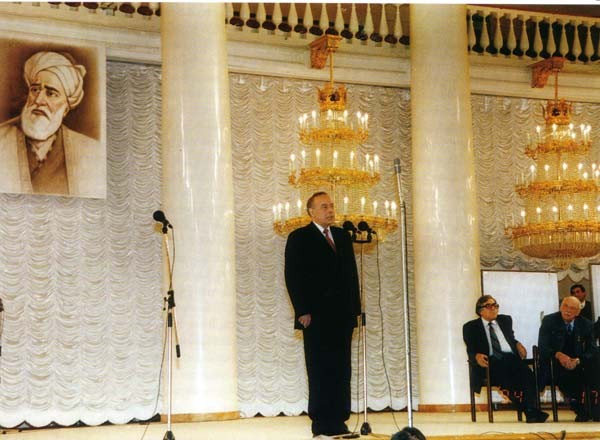
The restoration of state independence was marked by several very important events in the field of assessment of the classical heritage in Azerbaijan by new criteria. Large-scale celebration of the 1300th anniversary of the epic „Kitabi-Dadam Gorgud“ and the 500th anniversary of M.Fuzuli on the initiative and under the direct leadership of our national leader Heydar Aliyev and the participation of many world leaders in the summits of both events became a bright celebration of literature, spirituality, and culture in a free Azerbaijan. Fuzuli’s 500th anniversary was widely celebrated not only in Azerbaijan but also in Turkey, Iran, Iraq, Russia, Uzbekistan, China, and other countries. These events have given a new impetus to the development of literary science in Azerbaijan. Scientific-critical text and mass publications of „Kitabi-Dadem Gorgud“, new monographic researches about this magnificent oghuzname were published. All works of Fuzuli (collection) were published in 6 volumes. A new series of fundamental research on the life and work of the great artist was presented to fans of his talent. The commendable services of scientists working at the Azerbaijan National Academy of Sciences, including the Institute of Literature named after Nizami, are undeniable.
The decrees of President Ilham Aliyev on the republishing of Azerbaijani literature in the Latin alphabet and the creation of the Azerbaijan National Encyclopedia in 2004, as well as large-scale measures taken in this regard in the country, are also a great guarantee for the development of Azerbaijani literature and literary criticism.
Azerbaijan is already reaching the world meridians with its national culture, literature, art, and masters. Celebration of the 100th anniversary of the world-famous Bulbul in Moscow, Tbilisi, and Ankara, the 80th anniversary of the famous composer Gara Garayev in Moscow and Paris, the 80th anniversary of the famous singer Rashid Behbudov in Moscow, the 1300th anniversary of the epic „Kitabi Dada Gorgud“ Celebrations at a high level in Baku and Paris, with the participation of Turkic-speaking heads of state and representatives at the UNESCO headquarters, once again presented independent Azerbaijan to the world and awakened a sense of national pride in the hearts of each of our compatriots. Attention and care for our cultural heritage are carried out at the state level, the services provided for the development of Azerbaijani culture are highly valued and encouraged.
The Institute of Literature named after Nizami of ANAS has published a book entitled „Azerbaijani literature of the independence period“ dedicated to the 25th anniversary of the restoration of state independence of the Republic of Azerbaijan. The book, prepared in two volumes (1890 pages) under the guidance of the director of the institute, academician Isa Habibbayli, is a monograph.
The book examines the formation of the literature of the independence period, general features, modern development trends, and essays are dedicated to the main creative figures.
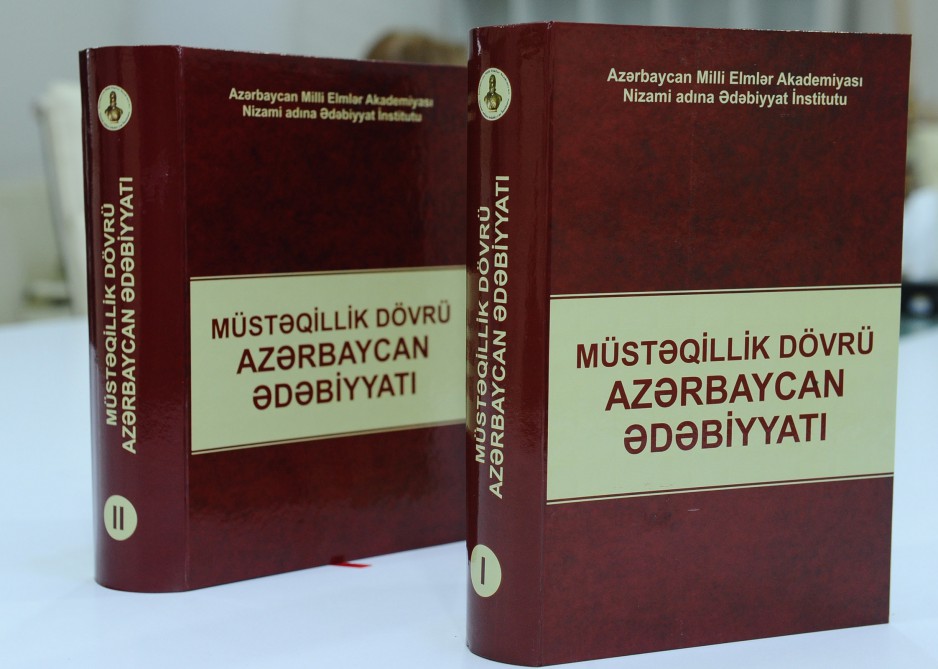
The two-volume book opens with an extensive article „Foreword“ by the scientific editor, vice-president of ANAS, academician Isa Habibbayli „Honorable way of independence and independence literature.“ The article describes the socio-political and historical-cultural situation in the literature of the independence period. Attention is drawn to the historical role of the great leader Heydar Aliyev in the formation of the literature of the new period and the saving mission that saved the Azerbaijani people from a deep abyss. Allocating a worthy place to modern literature, great importance is attached to the continuation and development of the creative mission of the Great Leader President Ilham Aliyev, the presentation of the republic in the context of advanced world culture. At the same time, the article comprehensively interprets the nature, typological features, creative principles and methods, development trends, and perspectives of the independence period literature.
The first volume of the book is called „Azerbaijani literature of the independence period in the 1990s“ and here the stage of formation of independence literature is characterized as „transitional literature“. „Themes and trends in the literature of independence“, „The road from Bloody January“, „Reflection of the Karabakh war in literature“, „Prose in the 1990s“ and other thematic and problematic divisions allow us to imagine the literary and artistic landscape of the period.
The second volume of the book deals with modern literature, which has found its full expression based on independence since the XXI century, and is called „Azerbaijani literature of the independence period at the modern stage.“ Modern Azerbaijani literature, which tends to full pluralism, a free creative choice is considered here mainly by genres, and the richness of ideas, themes, and poetics are revealed.
In modern Azerbaijani literature, along with realism, the manifestations of magical realism, existentialism, decadence and modernism, avant-garde, and postmodernism are recorded and considered separately in the book. The issues of children’s literature, literary criticism and modern theory, integration of Azerbaijani literature into the world, and its relations during the independence were also studied and presented in separate chapters.
The book „Azerbaijani literature of the independence period“ includes summary essays, as well as portrait essays about more than fifty writers and poets. In particular, the essays on Hidayat, Kamal Abdulla, Agil Abbas, Movlud Suleymanli, and others in the second volume allow us to follow the literature of the period in literary figures.
The two-volume book „Azerbaijani literature of the independence period“ was prepared in the eponymous department of the Institute of Literature with the active participation of employees of other departments. In total, 45 authors worked on the book.
The scientific editor of the book is academician Isa Habibbayli, the editor-in-chief is a doctor of philological sciences Tehran Alishanoglu.
On the 70th anniversary of the Azerbaijan National Academy of Sciences, President Ilham Aliyev recommended our scientists to write a book on the occasion of the 25th anniversary of Azerbaijan’s state independence. The book „Azerbaijani literature of the independence period,“ written in response to the call of our President, is a jubilee gift of the Institute of Literature to the literary and cultural community, as well as a scientific report on the 25th anniversary of our independent statehood.
- Manisa khatun Mehseti Genjevi
- Khagani Shirvani
- Nizami Genjevi
- Mirza Shefi Vazeh
- Mirza Feteli Akhundov
- Seyid Azim Shirvani
- Mirza Alekber Sabir
- Jalil Mammadguluzadeh
- Huseyn Javid
Manisa Khatun Mehseti Ganjavi
(1098-1188)

Manisa Khatun Mehseti Genjevi, one of the founders of the new poetic school and poetic exhibition in XII century Azerbaijan literature, played a great role in the creation and development of the idea of humanism in our literature. Different opinions about her are known to us. The poetess is a heroine of the epos ‚Amir Ahmed and Mehseti“ of the time. The works of Mesheti had been copied out during her life and a divan was created. They say, that the divan of the poetess existed till the beginning of the XV century and was disappeared at the end of that century after the occupation of Heart by Abdulla khan Ozbek. As one of her rubais tells, she tried her hand also in gazals and qitas. As the divan of the poetess is considered to be disappeared for today, her poems, mainly containing rubais had been gathered up from different historical and literary sources, memoirs, and from the epos ‚Amir Ahmed and Mehseti“.
Though we may come across some information about her beginning with the Mehseti period, a great Russian scientist Y.E.Bertels states, that there didn’t exist any such poetess and she was not the heroine of the epos. The idea is denied by the fact that the name of the poetess is shown in praising of the sultan of Seljugs Togrul II in the foreword of ‚Khosrov and Shirin‘ by Nizami, as well as in a story in ‚Ilahiname‘ written by the contemporary of Mesheti, the great Sufi poet Farideddin Attar.
Mir Abbas Mirbagirzadeh, who first mentioned the name of Mesheti in the 20-30-s of the XX century, came to a conclusion that the poetess was born in 491 (1097-1098); he considered that Mesheti described in „Amir Ahmed and Mehseti“ was 20 years old, and this fact approaches her to the period of the palace of sultan Mahmud Seljugi (1117-1132). Iranian authors also based on this fact when speaking about her. This fact is shown by the German scientist Fritz Meyer, in his work ‚Gozel Mesheti‘, written in 1984, where he proved the abovementioned dates (491 (1097-1098)in the analysis of a rubai, the date of which was known. The article ‚The dates of born and the passing away of Mesheti‘ in the journal of NASA ‚Meruzeler'(‚Reports‘). About 200 authors and investigators spoke about Mecheti till up today.
1) Shahab Tabrizi gathered rubais, gitas, and gazals from different sources in Iran and for the first time in 1957 created a divan of about 200 poems of the poetess.
2) The German scientist Fritz Meyer created a result of the 20-year hard work monograph ‚Gozal Mesheti‘ in 1963, giving 257 rubais and about 30 poems of the poetess.
3) The Azeri scientist, professor, the doctor of philological sciences Khalil Yusifov wrote „Mehseti Genjevi“, where at the end he gave the translations of about 190 rubais of Mesheti into Azerbaijan keeping its original measure of eruz.
4) Rafail Huseynov created the scientific-publicists monograph „Mehseti nece varsa“ (‚Mesheti in her original‘).
Mesheti wrote in Persian so popular at that time. The rubais of Mezheti taken from „Amir Ahmed and Mehseti“ 11 times were translated into Azerbaijan with the syllabic measure. The rubais of Mesheti have also been translated into Russian, English, German, French and Italian languages.
Khagani Shirvani (1126-1199)
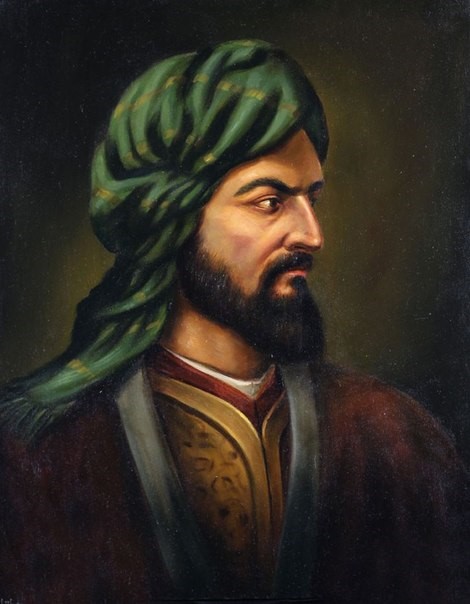
The real name of the poet was Ibrahim, the name of his father was Ali. His full name in samples of the Middle Ages is Abu Badil Afzaladdin Ibrahim ibn Ali Najjar ibn Osman ibn Ibrahim Hagaigi Hassanul-Acem Khagani Shirvani. Haqaiqi, Hassanul-Acem, and Khagani are his pen-names, Afzaladdin is his nickname, Abu Badil is his kunya and Shirvani is the name of his birth-place.
Khagani was born in 1126 in Shamakhi. His first education he got from his uncle (father’s brother) and showed a deep interest in different sciences of the time. Showing his poetic talent in his youth Khagani was had been invited to the palace and get fame. The poet had been arrested it the result of intrigues and envies of the people of the palace. Later the poet visited the Near East countries and reflected his impressions in poetic works. At the end of his life the poet spent in Tebriz and died there in 1199. He was buried in „Shairler qebiristanligi“ (‚the poet’s graveyard‘).
The rich literary heritage of Khagani consists of the divan of lyrical poems of 17 thousand stanzas, the epic „Tohfatul-Irageyn“, 60 letters- the interesting patterns of verse. The poems in divan are qasida, gazal, medhiye, mersiye, rubai and so on. The qasidas „Shiniyye“ and „Medain harabeleri‘, the poems ‚Habsiye‘ and the epic ‚Tohfatul-Irageyn‘ are of a social and political character.
Though the works of Khagani are in Persian and Arabian languages, for many innovations brought to the poem by him and for literary and artistic peculiarities, he represented the school of Azerbaijan.
Many well-known Oriental poets wrote naziras-imitative poems to Khagani’s literary works. The investigators of Azerbaijan, Iran, Russia, India, Pakistan, and that of Eastern Europe took an active part in the investigation of the poet’s heritage. Among Azerbaijan scientists investigating life and creativity, we may count the academician Hamid Arasli, the Caucasus peasant Herischi and Mammadaga Sultanov.
Translation of some of the poetic works of Khagani into the Azerbaijan language is the achievement of M. Rahim, A.Vahid, M.Mubariz, and others.
Nizami Genjevi
(1140-1209)

Nizami Ilyas the son of Yusif is a great master of words and philosopher of the XII century culture of Renaissance. He was born, got his education, and created in old Ganja, situated on ‚ipek yolu‘ the way of silk, along which the eastern and the western culture are mixed. In the XI century, being the center of Aran, it was a city of highly developed culture, with a state palace, medrese, medical and scientific institutions. It was also the center of education in literature, history, philosophy, astrology, mathematics, and the religious sciences.
The first biographical information about Nizami’s personality was recorded 300 years after his passing away, thus there is no exact information about his age, the dates of his birth and death, about his visits, his parents, and relatives. So the information given about him is only the supposition of the scientists. Nizami mentioned himself, his father, grandfather, and his mother.
Alike his predecessors and contemporaries Nizami started his activity by writing gazals and qasidas. Being unsatisfied with it he inclined to create his work in the genre of epic novel-epos, extending since the XI century after Firdovsi. His first attempt in this direction was created about his forties „Makhzanul-asrar“, the original pattern of epic couplet genre of the XII century. The work is characterized as a combination of the tale the epos in belles-lettres. The tales and the eposes reflect the major features of the epic genre-language, devices and the context of the belles-lettres. The mesnevi (couplet) contains 13 eposes and 7 stories. As a rule, the eposes and the stories followed the articles and decoded and gave an artistic analysis of their philosophical and ethical significance and the symbols.
„Makhzanul-asrar“ (‚The treasure of secrets‘) begins with tovhi and minacat, and forewords about praising and Ascension of the Prophet. It tells about the origin and the essence of Allah, that he is single, he is the creator, he is the inventor and the beginning of everything, he appointed Muhammed excellency (s) to be a prophet to accept and to represent Him, also about Gurani-Kerim (Koran) sent to the Prophet as a book of knowledge for Moslems, etc. there is an essential-contextual relation between the artistic parts of the book and the forewords, time-to-time ayes of Koran are mentioned here. Thus ‚The treasure of secrets‘ can be named a complete Islamic literary work about the world, a perfect man, and a perfect society.
The second work of Nizami ‚Khosrov and Shirin‘ was written in 1180 and dedicated to Jahan Pahlavan, the ruler of Azerbaijan. Though the theme of the work is about the history of pre-Islamic Iran, the poet used a verse different from Firdovsi. Alike the literary works of ‚Khamsa‘ ‚Khosrov and Shirin‘ begins with minacat, praising and Ascension of the Prophet, addresses to the king. In the part of the book where the poet tells about its creation, he also gives the philosophical characteristics of love, here described. He calls it cosmic love and: ‚there is no other mehrab of the destiny as love…, the world is (completely full of ) the love‘. As to him if love falls on to the heart of the stone, it will attract the inner jewellery of it. It is the love that draws iron to a magnet.‘ With these words, Nizami wished to see beautifully described universal and real love in the hearts of Turan and Iran expressing his wish indirectly by the personages of Khosrov and Shirin. The poet made a hint describing Shirin as a princess of Turan from the family of Afrasiyab. He had a political aim in presenting all abovementioned to the state of Atabeys.
In this literary work, Nizami tries to solve social-political problems by means of love and moral evolution, but orgy and voluptuousness of Khosrov brings a great obstacle in front of him; he has been killed by his son Shiruya, as in saying ‚The ash is the son of the fire'(„Odun oglu kul olar“) Coming to a philosophical conclusion poet points to the periodicity of natural life and says:’Realise yourself to recognize the reality with density, if so, in spite of far distance the destiny is like a mirror in front of you. You are made of two worlds.‘ Nizami states that though a human body may be perfect in the four elements, he should avoid the characters and the differences of those elements. He gives examples of natural events and calls a man to moral-sensitive evolution and to avoid physical pleasures. In the face of a naturalist, Nizami tries to solve social problems with natural philosophy.
‚Khosrov and Shirin‘ is an original pattern also for literary- artistic structure and the style. The competition between Khosrov and Shirin and reading of gazals by Barbet and Nakisa under musical accompaniment praising the heroes prove that the philosophy of life is reflected in the relation of music and poetry.
The subject of ‚Leyli and Mejnun‘ written by Nizami in 1188, with the request of Shirvanshah Akhsitan, had been taken from pre-Islamic Arabic folk-lore, the central subject is the nature of Arabia and the life of badavies. The poet tried to show processes that platonic love in the lives of tribes carried in the period of Islam. While the center of translation and investigation founded in Bagdad in the VIII century spread the ancient and old Greek literary-philosophical works, rabis in the IX-X centuries showed great interest toward the love adventures of Mejnun and Leyli and gathered their rayets. The process of Islamisation mentioned in stories happened during this period.
In the Islamic period, social ethics found it to be humiliating and unpermittable to manifest love gazals, but the uluhiyyet of love in the life of uzries denies any kind of prohibitions. This is named wandering or ‚madness‘ in Islam. Nizami explains love from the aspect of Renaissance philosophy, to be the main rule of life and says there is no opposition to this love. Majnun sees love in Kaba, in the desert, in the sky, and ask Kaba and the stars to help his love.
The natural love of Mejnun files for it could not pass the obstacles crested by tribal traditions. The main attention in the literary work is paid to deep contradictions of innovation, new life, and the sense of the renaissance with antiquity and ignorance which was so peculiar at the beginning of the Renaissance.
In foreword of this poem, Nizami criticizes Akhsitan’s idea to rich the epic with Arabic-Persian words and to avoid Turkish elements and character. He names Leyli and Mejnun the Turks with Turkish language living among the Arabians. The abovementioned thoughts were the characteristic features of the XII century Azerbaijan renaissance.
The epic “Heft Peyker‘ (‚the seven beauties‘) written by Nizami in 1197 is dedicated to the ruler of Maraga Agsungur Korpe Arslan, alike Leyli and Mejnun‘, is a work of the renaissance the theme of which is taken from the history of the dynasty of Sasani rulers. The plot of the epic is based on love, social life, and statehood of the VIII-X century when Midiya-Greek literary-philosophical cultures synthesized in the period of Islamic renaissance. The love described in the epic is alike that of between ‚Khosrov and Shirin‘, ‚Leyli and Mejnun‘, i.e. cosmic-world. This love as to its nature creates peace and equality between the parties and destroys all the excited contradictions.
In the given epic the cosmos is established in the Earth in the pattern of seven domes. Each of these domes, symbolizing seven planets for their particular color and character are adapted to the character and the deeds of human inner and other body-members and thus reveal the beauties and the faults of human ethics. According to this conception, for its origin, a human is the combination of perceptible(material) and mental (moral-spiritual or mental-passionate) worlds.
„Faziletli adamların sheheri‘ by Farabi greatly influenced the poet for the creation of ‚Seven Beauties‘ („Yeddi gozel“). In the former, the body was compared with a city, a country. The conception of antic Zoroastric and Greek natural-philosophical ides found their literary reflection in this epic.
‚Isgendername‘, supposed to be written in 1200-1203 was dedicated to his dear Nusrateddin Abubekr, by the writer’s own wish. The theme of this work also was taken from the history of Iran-Greek wars. This is the main peculiarity of the East renaissance.
The aim of Nizami in this work is not the description of the wars, but the introduction of eastern culture to the greek and thereby the synthesis of the two cultures. When Iskender burnt Iranian teshkeders, the philosophers around him insisted that he should take the texts of ‚Avesta‘ written on the leather, send them to Greece and translate and learn them. Greek scientists confirm that antic greek scientists studied and used the natural-philosophical conceptions of the mugs and. As Nizami writes, Iskender looks upon the real events related to the culture and the society absent in his motherland as the miracle of life. He meets different countries, people, and cultures along his way, gets acquainted with the school of Indian charbaks, arrive to the diamond field on his way back to the north, the soldiers gather the pieces of the diamond with them. The most important cultural point of the work is Iskender’s presentation in the country without ahead‘. He admired the life, thinking, the system of ruling based on equality in this country. Iskender hears about the water of life in the northern darkness and tried to find a way there. The search of sources of eternity existed in the ancient cultures; in shumer epics. This source, in Shumer epic, is shown in the east, possible on the islands of the Caspian lake of the lake Urmu. The aborigen of the island Uminanitdin knows the way out. According to Zoroastric traditions, the source of eternity is the plant ‚Hoym“.
Iskender on his way to the darkness with the Prophet Khizir, losses his way, Khizir finds the water of eternity, drinks it, and informs Iskender about it.
Thus Iskender gets the opportunity of prophecy, the pick of mental evolution, not in Greece, but after getting acquainted with the culture, scientific-philosophical world outlook of the east during his trip. According to this aspect „Iskendername“ is the final completed work of renaissance in the literary-philosophical creativity of Nizami.
Mirza Shefi Vazeh
(1794-1852)
Mirza Shefi Vazeh is one of the prominent representatives of Azerbaijan literature in the first part of the XIX century.

Shefi was born in 1794 in Ganja in a little fanily of a bricklayer. His religious educationhe got in medrese, he perfectly mastered Arabic and percian languages, and get introduced with the works of famous poets of classic East literaure. At the beginning of the 30-s Mirza shefi worked as a teacher in a medrese of Ganja and taught nastal (a kind of signature in Arabic and Persian) to children. With his artistic talent and deep knowledge of ideal-literary dignity of the poets of the East, he started his creative ctivity in his youth and wrote poems under the pseudonym of Vazeh.
In 1840 Mirza Shefi came to Tiflis (Tbilisi) and was appointed to the position of a teacher of Azerbaijan language in primary school for girls. In 1846 he returned to Ganja and again started to work as a teacher at a new school. After 4 years Vazeh returnes to Tiflis and became a teacher of Azerbaijan and Percian languages at nobles gymnasium in Tiflis.
Mirza Shefi died in 1852 and was buried in the Tbilisi Moslem graveyard.
In 1844 Vazeh organized a literary society in Tiflis under the name of „Divana-hikmet“. The prominent Azerbaijan poets, Abasgulu aga Bakikhanov, Mirza Fatali Akhundov, and others who lived in Tbilisi at that time attended that society. Fridrix Bodenschted, a German poet and interpreter working as a teacher at that gymnasium, created close relations with Mirza Shefi, took the lessons of Persian from him, and became one of the members of the society. In 1846, returning to Germany Bodenschted took the divan of written poems of Mirza Shefi Vazeh, translated his poems into Germany, and published some of them in the book ‚Min bir geje‘ (‚1001 nights‘) in 1848, in 1851 he printed all the poems under the name of „Mirza Shefinin shergileri“(‚The songs o Mirza Shefi‘). Those poems quickly spread about Germany and admired the readers. Soon the poems had been translated into French, English, Russian, and other foreign languages and Mirza Shefi turned into a world-wide famous poet.
The whole his life Mirza Shefi Vazeh was busy with his creative activity and under the influence of the representatives of classic oriental poetry especially, Hafiz, Sadi, Rumi and Fuzuli, gazals, muhammases, rubais, gitas, hajvs (pamhplets) of a highly ideological-literary character, and created a precious heritage. But we have received very few of his poems. Most of them are translated into German.
The poems of Mirza Shefi Vazeh are different in theme and idea. An important part of them is dedicated to love. They describe feelings and anxiety, joy and trouble experienced by the poet in his own life.
The poet also created poems of critical-satiric character. Here he sritisize the social drawbacks of feudal socity, religious fanatism, dishonest and ignorant priests using the religion for their personal purposes.
Mirza Feteli Akhundov
(1812-1878)

Mirza Feteli Akhundov is a prominent writer, thinker, and social figure who played a great role in the development of new period Azerbaijan literature and social, political, and philosophical ideas.
Fatali was born in 1812 in Nukha (today’s Sheki). The first education he got in mollakhana (the house of mollas). In 1818 Fatali is taken under the care of Akhund Alesker, the uncle of his mother. Being a prominent clergyman of his time, Akhund Alesker noticed the talent and intellect of little Fatali and decided personally to be busy with his education and breeding. He taught him Persian and Arabic languages, Koran, religious-philosophical sciences, introduced him to prominent representatives of classic East literature.
In 1832 Akhundov continued his religious education in a madrasa in Ganja and made friends with teacher Mirza Shefi Vazeh. Being a talented and a man of independent thought, Mirza Shefi Vazeh affected the world experience of young Mirza Fatali. Under this influence, Akhundov denied being a clergyman and decide to deal with world affairs.
In 1833 M.F.Akhundov studied in a Russian primary school in Sheki. Since 1834 he had been working in the position of an interpreter on Eastern languages at the chief Caucasus office of Russia in Tiflis. Beginning with that period he had been working as a translator on civil, and for some time on diplomatic and military affairs near chief judges of Caucasus during the whole his life.
In Tiflis, M.F.Akhundov was surrounded by a multi-sided and important situation. Here he improved his knowledge of Eastern literature, philosophy, and history. Also, he got knowledge about the new period literature, culture, social-political and psychological thinking of Western Europe and that of Russia, as well as the world sciences.
While served, M.F.Akhundov hardly worked as a poet, playwriter, literary critic, philosopher, and sociologist, created a rich heritage.
Since 1857 and during the whole of his life, M.F.Akhundov struggled for correction of the Islamic alphabet and replacement of it by the Latin alphabet at the beginning of the 70-s. He was famous in the Near East and in the countries of Europe as the first ‚reformer‘ of the Arabic alphabet.
The great Azerbaijan writer, thinker, and social figure M.F.Akhundov died on 1878 February 26(or march 10according to the new calendar), and was buried in Tiflis.
Beginning his creativity in his youth as a poet and from time to time continuing his poetic creativity, under a pen-name ‚Sabuhi‘, M.F.Akhundov created in Azerbaijan and Persian languages the patterns of classical poetry, as well as that of in folk genres, such as goshma, gerayli, mukhammes, also written in verse letters, satiric and etic-didactic poems nad gasidas. ‚Sherg poemasə'(‚Oriental epic‘) dedicated to the passing away of A.S.Pushkin, his goshma and mukhammases wrote under the influence of his predecessors M. P.Vagif and G. Zakir, ‚Yeni Elifba haggənda‘ (‚About new alphabet‘), satire criticizing viziers of Nasreddin shah, the ruler of Iran and other didactic poems are of special importance among his works.
M.F.Akhundov remained in Azerbaijan literature became famous as a great dramatist. At the 50-s of the XIX century with his high comedy talent, Mirza Feteli wrote comedies „Hekayeti-Molla Ibrahimkhalil kimyager“(1850), „Hekayeti musyo Jordan and dervish Mestelik shah“, „Jadugini-Meshur“ (1850), „Hekayeti-Khirs guldurbasan“ (1851), „Serguzeshti-veziri-khani Lenkeran“ (1852), „Hekayeti-merdi khesis“ (1852), and „Murafie vekilleri“, thus founded the national dramaturgy in Azerbaijan literature. With those 6 comedies, he strengthens relations of Azerbaijan literature with real-life and major actual social and moral problems of his time, brought new themes and ideas reflecting necessary demands and needs of the people, founded new realistic literature. In his comedies, we find the description of the life of Azerbaijan people in 30-50-s, the characters of that time families, social and moral conditions of that time, and also various and colorful descriptions of different social layers and classes.
As a master of comedies, M.F.Akhundov was famous not only in his motherland but also in Moslem countries of the Near East, in Russia, and the West European countries.
In 1857 M.F.Akhundov wrote the narrative „Aldanmish kevakib“ and founded a new type of literary prose in Azerbaijan literature. In the narrative he supports the conception of European enlighteners as ‚the world is ruled by healthy mind‘ and he criticized social faults of feudal-despotic ruling in Iran and the heads of the state and popularized the ideas of enlightenment and humanism. Akhundov’s narration ‚Aldanmish Kavakib‘ is one of the original and splendid patterns of world prose of enlightenment.
In the 50-70-s of the past century, he wrote a series of literary-critical articles in Azerbaijani and Persian languages, and his role as literary critic of Azerbaijan literature is considered to be invaluable.
The criticism of critical-formalist and religious-mystic literature, popularization of new realistic literary principles are the main plot and the problems in his literary-critical and aesthetic views.
In the 60-70-s of the XIX century, M.F.Akhundov worked as a philosopher and a sociologist and created a philosophical treatise as „Kemaludovle mektublari“ philosophical-sociological works as „Hekim ingilis Yuma javab“, „John Stuart Milli azadlig hagginda 2, „Mollayi-Rumi ve teskifi“ and others. By these words, he made a change in the philosophical, political and social idea of Azerbaijan and the Moslem countries of the Near East, founded a stable basis of the ideology of enlightenment.
The typological peculiarities of the word ideology of enlightenment found their wide, deep, and right reflection in philosophical treatises and other philosophical works of M.F.Akhundov. Alike prominent representatives of the enlightenment of XVII century Western Europe and that of Russia in 40-60-s of the XIX century, in his philosophical-sociological works, M.F.Akhundov confronted the feudal-despotic ruling, system ruling of the feudal state, feudal social relations and legal institutions, religion as ideological and moral support of feudalism, middle- century religious-ideological experience, sociological education and the rules of instruction and education and thus popularized new state structure-parliamentary ruling, new social relations and rules, new liberal- democratic and moral-ethic thinking, as well as new period scientific-cultural achievements in the European countries.
M.F.Axundov was famous as a writer and a philosopher having a great role in the development of new-period literary-philosophic ideas of Azerbaijan and the Moslem people of the Near East. He is also considered to be one of the representatives of the movement for the ideology of enlightenment in the world.
Seyid Azim Shirvani
(1835-1888)

He is well-known as a talented lyric and satirist of the XIX century Azerbaijan literature. He is also known for his educational poems and prosaic stories and fables. Seyid Azim was born in 1835 on July 10 in Shamakhi, when he was 7-8 years he lost his father Seyid Mahammed, and left with her mother to Dagestan to his grandfather Molla Huseyn. He lived there for 10 years and there his first education. In 1835 when he was 18 he returned to Shamakhi and here he lived the whole of his life and worked over his literary and scientific-pedagogical creativity. He opened a school and gave their lessons. He also gave lessons at school ‚Mejlis‘ crated by Seid effendi Unsizadeh attached to Shamakhi ecclesiastical society. After S. Unsizadeh moved to Tiflis Seyid Azim ruled that school. Since 1877 he at the same time began to work as a teacher of sheriat and the native language at Shamakhi city school. According to the pedagogical experience that he got in the period of his work as a teacher, he wrote a manual for pupils of Iltisav School, but all his attempts to publish it were desperate. The bodies prohibiting him from this action were that-time government powers of Tsarism.
S.E.Shirvani contributed poems and articles of educational, ethical, and didactic character to all national press organs of the XIX century: ‚Ekinchi‘ (1875-1877), „Ziya (Ziyayi-Gafgasiyye)“ (1879-1884), and „Keshkul“ (188 -1891). The poet considered the publishment of ‚Ekinchi‘ to be a tremendous event in the social and cultural environment of Azerbaijan. He represented it with a lyrical poem, but he needed about a year to understand the essence of literary and cultural ideas popularized by the newspaper. Since the middle of 1876, the progressive, educational poems of Seyid Ezim had been often published in the newspaper ‚Ekinchi‘, then in „Ziya (Ziyayi-Gafgasiyye)“ and „Keshkul“. Thus he became famous as a poet-enlightener in the history of literature.
Seyid Azim was at the head of ‚Beytus-Shafa‘, a literary school functioning in Shamakhi, at the same time he kept close relations and share his poems with the literary societies of Baki, Karabakh, Lenkeran, and other centers of culture. S.A. Shirvani directed from his contemporaries by tender lyrical gazels of deep sense and ideal-aesthetic peculiarity, and realistic poems. His satiric poems, with their literary-ideal character, formulated the genre of satire in Azerbaijan literature and thus gave it social shape. Among greatly appreciated satires of Shirvani, we may name „Gazi saggalini yandirir“(Gazi burns his beard), „Mustahidin tehsilden gayitmasi“ and others… The poet also has a scientific work „Shirvan khanliginin tarixi“ (‚The history of Shirvan Khanate‘).
S.E.Shirvani died in Shamakhi in 1888. His works had regularly been published in books and there exist many articles, dissertations, and monographs about him. His life and creativity are also studied in schools.
Mirza Alekber Sabir
(1862-1911)

M.A. Sabir, popular as a real national poet in Azerbaijan literature was born in 1862, May 30 in Shamakhi. His first education Alekber got in mollakhana (the school for mollas), then he went t school opened by S.E.Shirvani, and in his early ages began his creative activity. The first literary works of Sabir were analyzed and edited by his teacher, the famous poet S.E.Shirvani, who gave his young pupil his own advice. The pen-mane of Alekber was ‚Sabir‘. His first poems, calling character, coming out from the spirit of the XX century were published in 1903 in the newspaper ‚Shargi-Rus‘.
His poems of social character were published in ‚Hayat'(The Life) and satiric poems in „Bir mejlisde on iki kishinin sohbeti“ (Talks of 12 men at a meeting) in 1905 and 1906. The fame and talent of Sabir as a poet riched its pick in pages of the journal ‚Molla Nasreddin‘. His first satiric work in the journal was „Millet taraj olur, olsun, ne ishim var?!“(Let the nation be destroyed, be it far from me) which founded a revolutionary satiric school with him at its top. Sabir’s poetry at the same time played a great role that ‚Molla Nasreddin‘ became popular. The poet published his „Hop-hop“, „Gulayan“ (Laughing), „Aglar gulayan“ (Crying laughing), „Chayda chapan“ (Galloped in the river ), „Gabagda geden zenjirli“ (The chained going ahead), „Mejzub“, „Nizedar“, „Yetim gəzjəg“(Poor little girl), „Goja iranlə“ (An old Iranian) and other secret satiric poems not only in ‚Molla Nasreddin‘ but also in press organs as „Bahlul“, „Zanbur“, „Hayat“, „Irshad“, „Teze hayat“ (New Life), „Seda“, Hagiget“ (The truth), „Gunesh“ (The sun), „Yeni hagiget“ (New truths).
Sabir’s works (poems for children) were also published in journals „Dabistan“, „Rehber“, and the manuals „Birinji il“ (The first year ), „Ikinji il“ (The second year), „Yeni mekteb“ (A new school). We may also name famous poems of the poet as „Faxriyya“, „Satiram!“, „Bura say!..“, „Okhutmuram, el chekin!..“, „Pula tavajjoh“, „Khasisin heyfi, varisin keyfi“, „Nefsin gezeti, eglim merezi“, „Istigbalimiz laglagdir“, „Istigbal bizimdir“, „Shekibai“, „Ruhum!“ and others. Along with his satiric poems, he published publicist articles and articles of a different kind in the periodicals (in newspapers „Hayat“, „Irshad“, „Taze hayat“ etc.), where he touched upon major social-national problems of the time. Those articles were „Geyrat“(Honour), „Islamiyyetin insaniyyetperverliyi“(Humanity of Islam), „Juma“( Friday), „Zaman ne isteyir?! Amma biz…“(What does time wants?! And we…). Sabir is also the author of topical satires.
Together with his literary activity after examinations in 1908 M.A.Sabir got the right of teaching, opened a school in Shamakhi under the name of ‚Ummid'(The Hope), gave their lessons, later worked as a teacher at a public school in Balakhani village of Baki. He took n active part in the foundation of libraries-reading houses, staging shows for theatre, and other mass cultural measures. With his literary creation and deeds, to ‚elimination of troubles‘ brought by Azerbaijan abolishment by Armenian aggressors, he showed himself as a real citizen
M.A.Sabir died of liver disease on June 12 in 1911. His works were regularly published under the name ‚Hophopname‘. Many scientific articles, monographs, and dissertations had been dedicated to him.
Jalil Mammadguluzadeh
(1866-1932)
At the beginning of the XX century Jalil Mammadgulu oglu Mammadguluzadeh, who is named together with world literature classicists, was famous as the creator of Azerbaijan literary school of critical realism and of the revolutionary-democratic and satiric journal ‚Molla Nasreddin‘, also as writer innovator, dramatist, journalist, literary and cultural figure, found a new way in national literature. He popularized the ideas of humanism, democracy, and freedom.

J. Mammadguluzadeh was born in Azerbaijan, in ancient Nakhchivan, he studied Arabic, Persian languages, and graduated from the Azerbaijani section of Gori Teachers Seminary of Georgia(1882-1887). Here he studied the cultures of the East and Europe, the creativity of W.Shakespeare, M.Volter, V. Hugo, A.S.Pushkin, L.Tolstoy, N.Gogol, and others and became famous as a prominent writer and a dramatist.
The great master of short stories, the author of wise comedies, a prominent journalist, a citizen, and an intellectual J. Mammadguluzadeh were troubled with the faith of both parts of Azerbaijan, the North and the West, he reflected people dream of freedom, their difficult life and criticized bordering countries, exploiting powers, social backwardness, passivity, and fanatism.
His work at newspaper ‚Shargi-Rus‘ in Tiflis in 1905, the publication of literary works and slogans about revolution and freedom in printing-house ‚Geyrat‘, deep investigation of social-political events and the life of the people formed him as an artist with a new world outlook. He created new works under the influence of the events of 1905. His tales „Pocht gutusu“ (Post-box), „Usta Zeynal“ (Master Zeynal), „Iranda hurriyyet“ (Liberty in Iran), „Rus gizi“ (Russian girl), „Konsulun arvadi“(Consul wife), „Gurbanalibey“ and many others turned into a new event in Azerbaijan literature and in that of the Near East. The comedies „Oluler“, „Anamin kitabi“, „Deli yighinjaghi“, „Kamancha“ opened a new page in Azerbaijan literature and tagged on the Azerbaijan scene. „Oluler“ got succession in the theatres of Turkey, Rusia, Iran, Middle Asia, people stretched along the bank of the Volga, and Turkish people of the Northern Caucasus, and resulted in the creation of new literary and artistic figures.
Another character brought fame to J. Mammedguluzadeh in social thought, the history of literature and culture of Azerbaijan, beginning with 1906 during 30 years was the publication of revolutionary satiric journal ‚Molla Nasreddin‘ in Tiflis, Tebriz, Baki and other great cities, together with O.F.Nemanzadeh, A.Gamkusar and other his friends indeed. This journal played a great role in the national-moral, literary-cultural development and renaissance of our people, as well as that of the Near East.
His works have been published in the edition of 100 000 copies. 100 year anniversary of the poet’s birth was celebrated in the world according to the decision of UNESCO in 1996. J. Mammedguluzadeh is with us today-in independent Azerbaijan.
Huseyn Javid
(1882-1941)
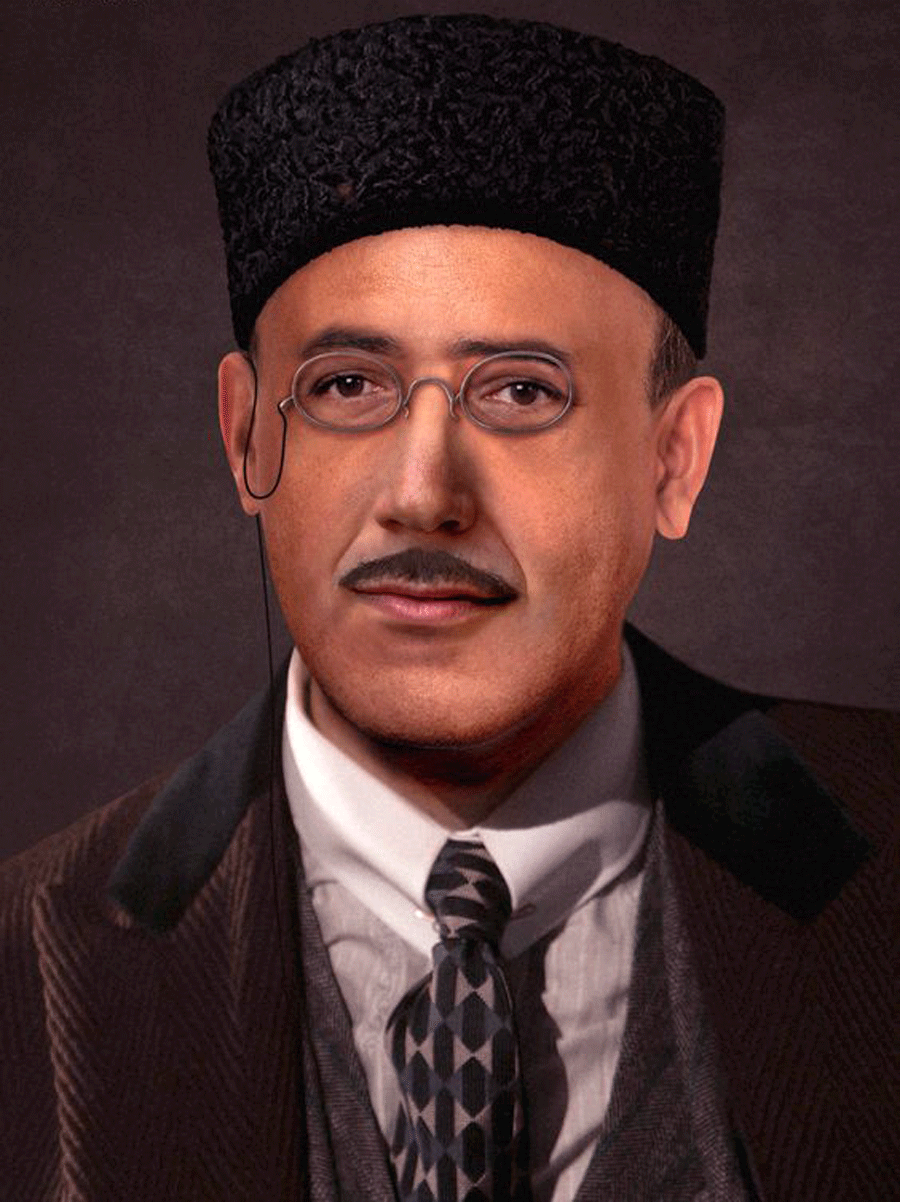
Huseyn Abdulla oglu Rasizadeh was born on 24.10.1882 in Nakhchivan and died on 5.12.1941 in the province of Irkutsk in deportation.
He is a prominent poet and dramatist of Azerbaijan. He was born in Nakhchivan in the family of a clergyman, the primary education he got there in mollakhana, the secondary education in a new-method school ‚Mektebi-Terbiye‘ founded by M.T.Sidgi, a prominent intellectual and teacher(years 1894-98). Here he writes the first poems in classical style under the pen-names ‚Gulchin‘ and ‚Salik‘. In 1899-1903 he had been to Southern Azerbaijan and continued his education in Talibiyye school of Tebriz. He had graduated from the literary section of Istanbul University (1909) and gave lessons first in Nakhchivan, then in Ganja, Tiflis, and in 1915 in Baki.
Javid’s literary heritage was inspired by ancient Eastern culture, having an important, gradually sparkling, the ever-living position taken in Azerbaijan culture, literary thinking, and the treasure of the theatre, as well as from patterns of Azerbaijan classical poetry and from deeply moral-philosophical samples. He is one of XX century Azerbaijan romantism.
Javid’s heritage is literary rich in genre and form. He is the author of lyrical poems, lyrical and epic poems, the first prosaic tragedy and dramas in Azerbaijan literature. His first book of poems „Kechmish gunler“ was published in 1913. Lyrical poems of social, philosophical and ethical Caracter prevailed at the beginning of his creativity („Oksuz Anver“, „Choban turkusu“, „Kichik serseri“, „Dun ve bu gun“, „Gadin“, „Gormedim“, „Veremli gəz“ etc.) where he gave the description of troubles of a human in the family and in his life, tyranny, and injustice of the time and difficulties brought by it. In „Mezlumlar uchun“, (1914) „Guruba garshə“, „Herb ve felaket“ (1916) „Herb allahə garshəsənda“ (1917) is the reflection of hatred to the wars and imperial policy, bringing troubles to the mankind.
Huseyn was generally known as a dramatist. His philosophical and historical tragedies, family-life dramas created a new step in Azerbaijan dramaturgy, from the point of stylistics, the norm of writing, the innovation of the form, and enriched the culture of the national theatre in a new sense. He highlighted worldwide, social and political, and cultural problems in a special way. The first prosodic play ‚Ana‘ (Mother) (1910) praises nobility, loyalty, courage, in tragedy ‚Maral‘ (1912) he speaks of the personality and freedom of a woman, in the first prosaic tragedy of Azerbaijan literature ‚Sheykh Sanan'(1914) he protests national and religious fanatism separating people.
The same ideas are repeated in the drama „Sheyda“ (1917), and the epic „Haggini sen mubarize ile ala bilersen“ (1918).
In tragedy ‚Iblis‘ (1918), having a particular place in his creativity, all reactionary, pressing forces of the time, imperialist spheres – the best cultural wilds of the XX century are generalized in the personage of ‚Iblis'(The Devil).
In historical dramas written by him in 20-30-s, such as „Peygamber“ (1922), „Topal Teymur“ (1925), „Sayavush“ (1933), „Khayyam“ (1935), the role of historical figures, the ruler and the people, free thought and reaction are the main problems he overviewed with poetic language.
Javid’s poetry is different for its literary artistism, deep emotiveness, and sincerity.
BOOK HOUSES OF AZERBAIJAN
Despite the fact that the history of the development of the book in our territory begins in the XI century, the history of its foundation dates back to the old ones — when the first state was created. It is known from historical sources that in the V century there was an alphabet of 52 letters in Caucasian Albania, so a number of books of that time were translated into Albanian, and the first libraries were created in churches and schools. In connection with the arrival and spread of Islam in the territory of Azerbaijan, libraries began to be created in madrasas and schools, which led to the wide spread of reading culture among the people. Thus, the peak of the development of library work dates back to the XI century. At this time, the faces of the most valuable works were copied and placed in various libraries for protection, which led to an increase in the number of book houses.

The literary connoisseurs, intellectuals, respected, well-known, and statesmen of his time often had their own libraries. In these libraries, there were books from different parts of the world. Among them, the most famous ones — the library of Bahmaniyar, the foundation of which was laid in the XI century, considered valuable in the world; Library of Khatib Tabrizi, the first Azerbaijani literature theorist founded at the junction of XI-XII centuries; “Seyyidina” library of Nasreddin Tusi with more than 400,000 copies of books created in the XIII century in interest; it is the “Rashidiyya” libraries of Rashidaddin consisting of two buildings and the library of the City University.
Books were brought here to the first University of Azerbaijan — “Rashidiyya”, the library of the City mosque, and the healing centers from Iran, Egypt, China, Greece, Byzantium, and other countries.
After the development of the bookwork in Azerbaijan in the Middle Ages, palaces, religious, scientific, and personal libraries began to form. The Shirvanshahs‘ Palace Library (XII century), Tabriz library (XIII century), Aggoyunlu and Garagoyunlu libraries (XIV-XV centuries) can be mentioned among the palace libraries. In the XVI century, prominent Azerbaijani statesman Shah Ismail Khatai laid the foundation of Tabriz Palace Library. In 1522, Shah Ismail signed the state decree on “library activity”. The main place in the world of religious literature was occupied by the Sheikh Safi Observatory in Ardabil. Already in the 40s of the XIX century, new national public libraries, private libraries of prominent figures of the world of science and art of that time began to emerge.
At the beginning of the last century, the intellectuals of Azerbaijan set up a bookstore and a charity Society for the creation of new libraries and reading rooms. Azerbaijan Democratic Republic (1918-1920) A.Sabir and Baku State universities ‚ libraries were established.
In 1920, there were 965 schools in Azerbaijan, 50 libraries in Baku and surrounding areas, and 100 libraries in the regions.
Currently, there are 12,000 libraries in Azerbaijan, the largest of which are: M.F.National Library named after Akhundov, Central Scientific Library, Library of scientific Medicine, Library of Baku State University, Presidential Library, Republican Youth Library named after Jafar Jabbarli.
There are also book houses junction in Azerbaijan — Baku Book Center, Libraff, Ali and Nino and a number of book houses, where examples of classical and contemporary world literature are presented.
PRESIDENTIAL LIBRARY
The Presidential Library of the administration of the president of the Republic of Azerbaijan was established in 2003 on the basis of two rich libraries of the Republic. One of them was the Central Committee of the Communist Party of Azerbaijan, The library of the S.M.Kirov House of Political Education, the second-the Central City Library (former The Central Library named after V.I.Lenin). Central Party Library was established in 1920 under the Baku Party Committee in 1934, Azerbaijan Communist Party Central Committee S.M. It was included in the composition of the political education House named after Kirov. Since then, the library of the political education House, the main library of the country’s network of party libraries, has operated until the end of the Soviet period.
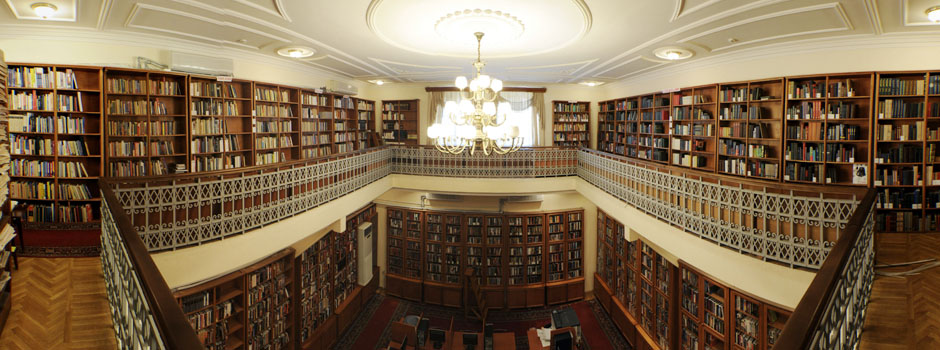
The Central City Library is also (formerly the central library named after V.I.Lenin) was one of the public libraries of Baku with a rich history and its activity dates back to 1870. In Soviet times, this library became a Central Library with the decree of the Baku Public Education Department. This library was distinguished for its high level of library-bibliographic service and activity in the field of holding mass events. The library of the president, created on the basis of the fund of political education House Library and Central City library, continuing the best traditions of those libraries, in a short period of time began to provide high-quality library-bibliography and information services to its consumers. 2004, December 17, First Lady of the Republic of Azerbaijan, President of Heydar Aliyev Foundation, UNESCO Goodwill Ambassador Mehriban Aliyeva visited the library, took interest in works done here, and gave valuable recommendations to employees. In 2005, on December 9, by the Order of the president of the Republic of Azerbaijan, the library was given the status of a sector of the Department of affairs. Since then, all employees of the library are civil servants. On June 2006, 27, President of the Republic of Azerbaijan Ilham Aliyev visited the library, got acquainted with its activity, took interest in the application of modern information technologies in the library, gave instructions on enriching the foundation, and strengthening the material and technical base of the library. In accordance with these tasks, the library is used for modern personal computers and other computing devices, network equipment, equipment for the printing, etc. equipped with. In 2009, by the Order of the president of the Republic of Azerbaijan on July 22, Presidential Library was given the status of Department of the administration of the president of the Republic of Azerbaijan.
Rare examples of literature in different languages published in the XVI-XIX centuries and early XX centuries are kept in the library fund. Literature on economy, politics, state-building, law, philosophy, statistics, history, literature and linguistics prevail in the fund. The periodical press fund of the library includes 250 magazines, newspapers, and other periodicals published in our republic and other countries. At present, special attention is paid to the provision of the fund with electronic publications in the library.
The mission of the Presidential Library is to provide an excellent library-bibliography service to civil servants working in higher state bodies and other executive bodies, as well as other students whose information interests correspond to the profile of the library with documents in the library fund, various primary documents and bibliographic information resources created here.
The application of new technologies in the Presidential Library, in particular, the creation and development of resources based on new information carriers, the replenishment of library funds with electronic documents, the latest type of documents, is of particular importance. In the library, ИРБИС 64 the software and technical capabilities of the library automation system are practically mastered. Currently, among all users of ИРБИС 64, one of the libraries, which fully implements the functions and technical capabilities of its modules, is the Presidential Library. The bibliographic apparatus of the library (SBA) includes the fund of reference and bibliographic publications, various catalogs and cartotages, as well as an electronic catalog. The database of the electronic catalog includes a book, a compact disk, a map, a note publication, a bibliographic record of the dissertation abstract, and other documents. A special feature of the bibliographic apparatus of the Presidential Library is that for the first time in our republic a large number of information resources are being created here, which allows paying fractographic surveys in accordance with the profile.
The relations of the library with the presidential, parliamentary, and government libraries of other countries, international libraries, and information organizations are expanding year by year. The Presidential Library participates in all events and projects with the participation of the leading libraries of the Republic. Since May 2004 the library is a member of the “International Association of creators of electronic libraries and new information technologies” (EBNIT). Since that year, he is a permanent participant in the annual International Conference “Crimea” (Ukraine) and LIBCOM (Russia). The Presidential Library has an intensive relationship with IFLA, the most influential organization in the field of library work in the world. Representatives of the library took part in IFLA annual councils and conferences held in Great Britain (Glasgow), Italy (Milan), Sweden (Gothenburg) and Finland (Helsinki). The library has been a member of IFLA since 2009 and participates in elections to the governing bodies of the organization. IFLA President Ellen Tise visited Presidential Library in November 2008, 25. In 2013, the library was elected a member of the Standing Commission on Government Information and Official publications of IFLA. Representatives of the Presidential Library participated in the Joint Conference of Azerbaijani and Swiss librarians in Switzerland in 2011, the Founding Conference of the Eurasian libraries Union held in Ankara in 2012, and the events held in the framework of the program “American libraries and protection of Cultural Heritage” organized in Washington with the support of the US State Department in the same year. With the Presidential Library of Belarus, exchanges of official newspapers and magazines are regularly held. Library Of The Presidential Administration Of Russia, B. There are also close relations with the Yeltsin Presidential Library, the Russian Parliamentary Library, the library of the Presidential Administration of Kazakhstan, and the Russian state general scientific and Technical Library. As a result of close relations with the UN office in Azerbaijan, the library is currently provided with most publications of this organization.
Depending on the tasks performed, the corresponding organizational-management structure of the Presidential Library was formed. This structure includes 5 functional departments that perform work on purely library technologies and processes and 7 sections in their composition. Another department deals with the operation of engineering and technical facilities of the library, logistics, and other technical issues.
Departments:
- Bibliography Department of literature on public administration and country studies;
- Department of library fund;
- Department of information-bibliography and library services
- Recruitment, book processing, and e-catalog Department
- Department of library work automation and electronic resources.
Sectors:
- Electronic information publications section;
- Department of rare Literature Fund;
- Art Literature Fund;
- Periodical Press fund Section;
- Translation section of electronic publications;
- Information-bibliography service department;
- Subscription section.
Azerbaijani music was developed throughout the centuries. The traces of ancient music of Azerbaijan were found in a number of monuments, excavated in time of archaeological digs, as well as in rock carvings of Gobustan (18-3 millennium B.C) and Gemigaya (3-1 millennium B.C). Kitabi Dede Gorgud (8th century), creative works of Nizami, Fizuli provide full coverage of medieval music art, music genres, and musical instruments. The records of such prominent medieval scientists of Azerbaijan as Sefiaddin Urmevi (18th century), Abdulgadir Maragai (17th century), Mir Movsum Nevvab (19th century) pointed out the highly developed art and culture of music and mastery performance and cited theoretical issues of music in medieval Azerbaijan.

The first written monument of our country epos Kitabi Dede Gorgut, containing several chapters, related to music and citing the names of different musical instruments, testifies that out music art possesses ancient history.
The first book on music dates back to the 13th century. Two prominent scientists and musicians of Azerbaijan Sefieddin Urmevi (1217-1294) and Abdulqadir Maraghai made a great contribution to the development of the theory of Near and Middle Eastern music in the 13-15th centuries. Booklets Kitabi el-Edvar and Seferiyye by Urmevi established the science of music of Azerbaijan and laid the foundation for its further development. Urmevi entered the history of Azerbaijan as the founder of the school „System“ and tabulator science. The system musical notation, created by Urmevi, was the most perfect system of that period.
Booklets that followed the creative works of Maragai, did not deal with complex theoretical problems of the theory of Eastern music or in case they dealt, they repeated those of Urmevi, just interpreting them in different ways. The main advantage of these booklets was their practical importance. The creative works of that period include the booklet Negavetil Edvar by the younger son of Maraghai Abdulaziz Chelebi and Megasid el-Edvar by his grandson Mahmud Chelebi
A booklet „About Music“ by Mirza Bey is one of the interesting works, created in South Azerbaijan in early 17th century.
Beginning in late 19th-century music meetings, associations and circles (by Mahmud Agha in Shamakhy, Kharrat oghly, Mir Movsum Nevvab in Shusha, Meshedi Malik Mansur in Baku). In the 1880th M.M.Nevvab and Hadjy Husu organized meetings of Musicians, which were dedicated to the discussion of esthetic problems of music, mastery performance and mugam. Meetings were attended by famous singers and saz players Meshedi Djemil Amirov, I.Abdullayev, S.Shushinskiy, Sadykhdjan and others. Hadji Husu, the progeny of Kharrat Gulu, is one of the great representatives of vocalism of Shusha. He studied mugam, improved a number of them and created new mugam s. Mirza Sadyg Esed oghly was a maestro of tar of the 19th century, the reconstructed tar and created the tar of modern type. Meshed Zeynal, Meshedi Djamil Amirov, Shirin Akhundov, Gurban Primov were all representatives of this art.
There are a number of cities in the world, which absorbed music by its stones, tower and its atmosphere. These are Vienna (Austria), Neapol (Italy) and Shusha (Karabakh, Azerbaijan). There exist a popular saying that infants in Shusha even cry under the music of mugam.

Prominent representatives of the Shusha Caucasus Conservatoire successfully represented Azeri music and glorified it all over the world. Shusha is the home of Mir Movsum Nevvab, Kharrat Gulu, Hadjy Husu, Sadikhdjan, Meshedi Isi, Abdulbaghy Zulalov, Djabbar Qaryaghdyoglu, Kechedji oghly Memmed, Meshedi Memmed Ferzeliyev, Islam Abdullayev, Seyid Shushinskiy, Bulbul, Zulfi Adygozelov, Khan Shushinskiy, Meshedi Djamil Amirov, Qurban Pirimov, composers Uzeyir Hadjybeyov, Zulfugar Hadjybeyov, Fikret Amirov, Niyazi, Afrasiyab Bedelbeyli, Soltan Hadjibeyov, Ashraf Abbasov, Suleyman Aleskerov, and singer Rashid Behbudov. Yet this list is not a complete list of musicians of Shusha.
In the early 20th century, in the atmosphere of socio-economic and cultural growth, U.Hadjibeyov laid the foundation of the culture of modern professional music of Azerbaijan and created a synthesis of composer creations and folklore music. That caused the interference of Western and Eastern cultures. In 1908 U.Hadjibeyov staged the opera „Leyli and Medjnun“ at the theatre of H.Z.Tagiyev, thus, laying the foundation of opera not only in Azerbaijan but in the entire Muslim East and became the founder of the genre of mugam -opera. Realizing that the new genre will be difficult to comprehend, U.Hadjibeyov, referring to the poem by Fuzuli „Leyli and Medjnun“ and genres of folklore music, created a stage work, corresponding to the spirit of that period and moral needs of people.
U.Hadjibeyov is also the founder of musical comedy in Azerbaijan. Musical comedies of social character („Husband and Wife“, 1910, „Either this or that, 1911, Arshin Mal Alan, 1913) based on composed folklore songs and dance music. His musical comedy Arshin Mal Alan (staged in 1913) was a great success. The comedy was translated into English, German, Chinese, Arabic, Persian, Polish, Ukrainian, Belarus, Georgian and other languages (nearly 70 languages), staged in 120 theatre in Moscow, Istanbul, New-York, Paris, London, Teheran, Cairo, Beijing, Berlin, Warsaw, Sofia, Budapest, Bucharest and other cities and repeatedly put on screen (in Baku, 1916-1917, in USA in the 1930th, in Soviet Azerbaijan, in 1945 and 1960). With Rashid Behbutov (1915-1989), playing the principal role, the opera gained worldwide popularity. The popular actor of the USSR R.Behbudov sang folklore and composed songs, played the role of Balash of the opera Sevil by F.Amirov. He was also the founder and leader of the theatre „Mahni“. Opera „Either this or that“ by U.Hadjibeyov, was put on screen in Yalta in 1919 and for the second time it was put on film a the film studio Azerbaijanfilm in 1956.
The 1930th was marked by the rise in Azerbaijan music. That period accounted for the establishment of collectives, symphonic orchestras (1920, at present Azerbaijan State Symphonic orchestra after U.Hadjibeyov), chorus (1926), Orchestra of Folklore musical instruments (1931), dance ensemble (1926), Azerbaijan State Philharmonic Society (1936), Azerbaijan Union of Composers (1934), Musical Comedy Theater (1938, now after Sh. Gurbanov), as well as the scientific research office of music (1931) under the Azerbaijan State Conservatoire to study and propagandize the folklore music of Azerbaijan.
In the 1920th R.M. Gliyer created the opera Shahsenem (staged in 1927) based on the epos Ashyg Garib, using the folklore music of Azerbaijan. The opera strengthening the achievements of world music was the first initiative to create opera on the basis of patterns of Azeri folklore music.
U.Hadjibeyov is also the author of the popular heroic people „Koroglu“ (received the USSR state award in 1941). The opera, marked for its innovative ideas, reflected the national spirit and psychological profundity. U.Hadjibeyov attaining the harmony of genre composition of folklore music, intonation devices and expressive means of opera music created masterpieces of national opera. The opera includes scenes of people’s life and deep characters of the main heroes. The role of Bulbul was played by Koroghlu over 400 times. 1920 -1940th are marked by the appearance of new composers.
In the early 1930th works (the first and the second fantasy by U.Hadjibeyov) are written for symphonic orchestras (Solemn march of U.Hadjibeyov, „In the streets of Azerbaijan“, „Dance of free woman“, „March of Azerbaijani march RV-8 of Muslim Magomayev) and folklore musical instruments
The theme of patriotism and heroism, which rose from the war of 1941-1945, was reflected in songs, in compositions for folklore musical instruments (by U.Hadjibeyov, S.Rustemov), in the opera „Motherland“ by G.Garayev and C.Hadjiyev (presented the USSR State award in 1946, the first symphony by Dj.Hadjiyev, G.Garayev and S.Hadjibeyov (first creations of the symphonic genre of Azeri music). The opera „Khosrov and Shirin“ by Niyazi (1942), romantic ghazals by U.Hadjibeyov „Without you“ and „Sweetheart“ were also the creative works of the period of war. The founder of a new genre of ghazal U.Hadjibeyov created the synthesis of declamation, turned into the language of music and melodies of cantilena type using the poetry and speech with great mastery. The entire music achieved great progress through the year of the Great Patriotic War.
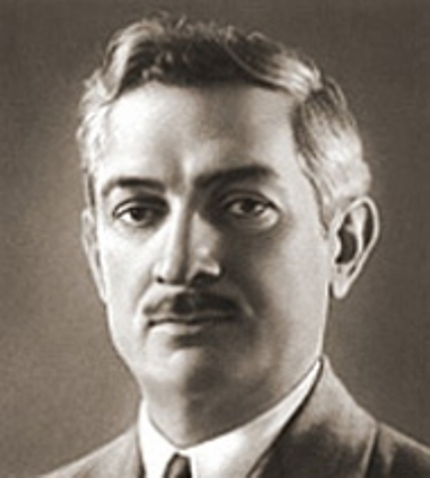
In the post-war period the national music experiences new growth. The music of Azerbaijan was the success not only in our country but also in the countries abroad.
The ballet „Seven Beauties“ by Gara Garayev (1952, based on the analogous poem by Nizami, choreograph P.A.Gusev, Azerbaijan Theater of Opera and Ballet) opened a new stage in the history of Azeri music. The ballet „Seven Beauties“ played a critical role in the development of ballet in Azerbaijan as it founded the new musical dramaturgy in the ballet art of Azerbaijan.
The ballet „The path of thunder“ by U.Hadjibeyov was staged in the Theater of Ballet and Opera of Leningrad in 1958 (Lenin’s award in 1967, based on the analogous novel by P.Abrahams, choreograph-K.M.Sergeyev). The author, bringing the tragic love of the main character to a sharp conflict, created a modern play specifically from the point of view of its musical composition. The play combines a clear musical concept, brilliant characters, and folklore music of South Africa.
S.Hadjibeyov created the ballet „Gulshan“ (1950, the state award of the USSR, 1952), which reflected contemporary life. Operettas „Gozun Aydyn“ by F.Amirov (1946), „The crane“ by S.Rustamov (1947), „Ulduz“ (1948) are the examples of this genre.
In the 1950th the symphonic music was marked for a particular rise. Urgent socio-political problems of that period were reflected in various symphonic creations of composers. F. Amirov entered history as the founder of a unique genre of symphonic mugam. The composer developed the theme, momentum, and other stylistic peculiarities of mugam from the symphonic point of view. The vividness of the play of orchestra, genre diversity, and profundity of characters, peculiar of Amirov’s symphonic creations, were reflected in different works of that period.
The symphonic art of Dj. Hadjibeyov was marked by the profundity of psychological ideas of its characters, the sharp dramatic development of music, the epic nature of its melodic. A number of symphonic compositions of S. Hadjibeyov (his second symphony, 1946) fully covered the theme of the Great Patriotic War, while the music of his other creations was decorated with vivid colors of the genre.
Dj. Djahangirov mainly created vocal-symphonic compositions (the poem „On the other side of Aras“, the state award of the USSR in 1950, the cantata „Fuzuli“). The vocal-symphonic poem „On the other side of Aras“ was a new genre, which combined both symphonic and cantata-oratorical features of music. The rise in the song genre was closely connected with the creative activity of S.Rustamov, T.Guliyev, R.Hadjiyev, Dj. Djahangirov, G.Huseynli, A.Rzayeva. At that time a number of songs were written to films and drama plays and the art of performance was also widely spread. The first state string quartet (A.Aliyev, M.Taghiyev, R.Seyidzade, S.Aliyev, winners of the international contest (1957, Moscow) of the sixth world festival ) was established in 1957. The new generation of singers included the popular singer of the USSR F.Ahmedova, ballerina L.Vekilova, honored worker of fine arts Dj. Hadjibeyov (conductor), etc. The first session of the Union of Composers of Azerbaijan (beginning from 1990-called the Union of Composers and Musicians of Azerbaijan) took place in 1956.
The 1960-1980th were marked by the creative activity of the elder generation of composers, the appearance of new composers, significant progress in all genres, and the expansion of international contacts.
Composers of Azerbaijan frequently addressed opera and ballet in their creative activities. Ballets „The legend of one love“ (1961) by A.Melikov, „Epos about Nasimi“ (1973 The State award of the Azerbaijan SSR in 1974), and „One thousand and one night“ by Fikret Amirov (1979; the state award of the USSR in 1980) is famous worldwide.
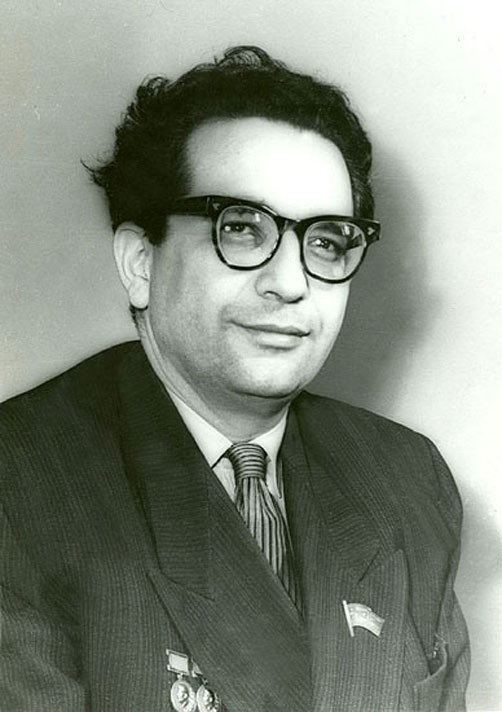
Symphonic and chamber music of Azeri composers began to spread in the countries abroad. Symphonic Mugams by F.Amirov „Shur“ and „Kurd-ovshani“, by Nizami „Rast“ as well as symphonic compositions by G.Garayev and U.Hadjibeyov were introduced in different countries and received high appreciation. Compositions by A.Melikov, Kh. Mirzazade, A.Alizade, F.Alizade, F.Garayev, Dj. Guliyev etc. gained success in Europe, America, and Asia. Singers from Azerbaijan frequently go on tour to foreign countries. Popular singers R.Bahbutov, Niyazi, Z.Khanlarova, M.Magomayev. etc were widely renowned. Singers as F.Gasymova (1977, Italy, the first place), Kh.Gasymova (1981, Athens, the first place; the second prize of the eighth international competition after P.I.Chaikovsky (Moscow, 1982), pianist F.Bedelbeyli (1967, Gradets-Kralove, CSSR, 1968, Lisbon, Portugal, the first prize), young pianists M.Guseynov, M.Adygozelzade, etc. were the winners of various competitions. Such contemporary conductors as R.Abdullayev, Dj.Djafarov, Y. Adygozelov, T.Goychayev, G.Imanov, R.Mustafayev, N.Azimov made the creations of composers clear to the audience and propagandized them.
The list of art workers, who contributed to the preservation and development of the traditions of mugam and folklore art includes popular singers Kh. Shushinsky, R.Muradova, Sh.Alekperova, A.Aliyev, S.Gadimova, F.Mehreliyeva, T.Ismailova, A.Babayev, I.Rzayev, honored singers Z. Adigozelov, H.Guseynov, Q.Rustamov, C.Akberov, A.Qasimov, popular players of tar A. Bakikhanov, H.Mamedov, B.Mansurov, A.Quliyev, R.Quliyev, honored figures A. Dadasov, M.Muradov, F.Alekberov, popular kamancha player H.Aliyev, honored kamancha players H.Mirzaliyev, T.Bakikhanov, Sh. Eyvazova, F.Dadashov, honored drummer Ch.Mehdiyev, accordion players Abutalib (A.Yusifov), Kor Akhad, Kerbelayi Letif, T.Demirov, A.Israfilov, saz players A.Nasibov, etc.
Pop and jazz music of Azerbaijan is developing successfully as well. T.Guliyev, R.Hadjiyev create compositions for the State Jazz Orchestra of Azerbaijan (art director Niyazi, music director-T.Guliyev), established in 1941. P.Rustembeyov (saxophone), A.Bunyadzade, D.Baghyrzade, etc were the first performers of the orchestra. The State Variety Show Orchestra of Azerbaijan (1956, art director R.Hadjiyev), pop ensemble „we are from Baku (1957), Pop orchestra of the Azerbaijan Television and broadcasting (1960, art director and conductor T.Ahmedov), quartet „Gaya“ (1960, later vocal ensemble, art director T.Mirzayev), Azerbaijan State Theater of Songs (1966, art director and soloist R.Behbudov), Azerbaijan State Pop and Symphonic Orchestra (1975, art director and soloist-M.Magomayev) were established and played a critical role in the development of pop music of Azerbaijan. In the postwar period opera singers (R.Atakishiyev, L.Imanov) had a great impact on the improvement of pop art in Azerbaijan. The creative activity of R.Behbudov and M.Magomayev added to the pop art of the country.
Popular artists Sh.Alekperova, G.Mamedov, M.Babayev, F.Kerimova, E.Rehimova, Y. Rzazade, G.Agayev, I.Guliyeva, honoured artist A.Ganiyev as well as H.Hadiyeva, A.Islamzade and others took an active part in the propaganda of pop songs.
Mustafazade made a great contribution to the development of jazz music in Azerbaijan. He was the founder and the leader of ensembles „Sevil“ and „Mugam“ and took first place in the eighth International jazz contest (Monte-Carlo, 1978). R.Babayev, V.Sadigov, A.Guseynov, Dj.Zeynalli, A.Mustafazade, and other performers of jazz are also well-known.
These include the oratorios „Garabag Shikeste“ and “ Caravan of grief“(1999) by V.Adygozelov, the symphony „Cry of Garabagh“ (2001) by T.Bakikhanov, the ode „Motherland“ (1993) by A.Alizade, the seventh symphony by N.Mamedov, dedicated to the Hodjaly tragedy (1998), the cantata „Azerbaijan, you are right“ (1992), the poem by H.Khanmemmedov „My saz is crying“, written for folklore musical instruments (devoted to martyrs of Karabakh, 1991), the cantata „Martyrs of my land“ {1990) and „I miss you, Shusha“ (1999), by S.Ibrahimova, created for tar and string orchestras, etc.
The ballet „Trip to the Caucasus“ by A.Alizade, based on the creation of A.Dyuma, was staged in 2002. The one-act ballet by T.Bakikhanov „Good and evil“ (1990), ballets „Sheykh Senan“ by H.Mamedov, „Alibaba and forty robbers“ (1990) were created at that period.
In the period of independence composers of Azerbaijan take part in different music festivals, international contests, world cultural and musical projects, represent Azeri music abroad, thus introducing it worldwide.
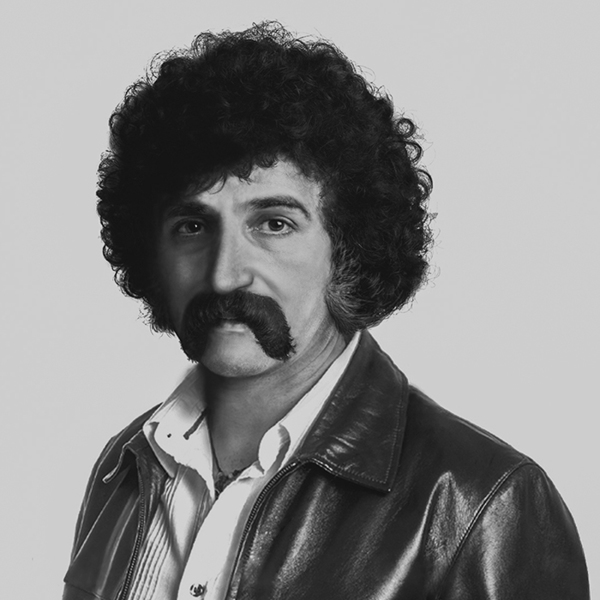
Creations of A.Melikov, V.Adygozelov, Kh.Mirzazade, A.Alizade, T.Bakikhanov, F.Garayev, I. Hadjibeyov, F.Alizade, Dj. Guliyev, E.Dadashva, R.Gasanova, G.Mamedov, F.Guseynov were introduced in Turkey, Norway, Holland, Cyprus, USA, Switzerland, Germany, Thailand, and other countries and won the first prizes in influential competitions. The first nights of compositions by A.Melikov (Symphony No 7), V.Adygozelov (the oratorio „Chanaggala“) were held in Turkey, while creative works by T.Bakikhanov („Seasons of North Cyprus“, „The suite of North Cyprus“) were first introduced in Cyprus. Compositions by F. Garayev („Khutba, Mugam, Sure“, „The disaster of Babil“, 2000), F. Alizade („Mirage“), R.Gasanova („The Sky“) were performed in Holland. The participation of F.Alizade („Dervish“) and Dj. Guliyev („The Caravan“) in the Silk Road was a success. F. Guseynov won first place in a contest, held by UNESCO and Japan (the Concerto for a symphonic orchestra „A trip across time“) and was also presented the UN award for his oratorio „Let it be peace in the world“.
The professional performer of mugam A.Gasymov has conferred the gold medal of UNESCO for his contribution to the development and perfection of the art of mugam in 1999. Compositions of U.Hadjibeyov, G.Garayev, and F.Amirov were successfully performed by the Azerbaijan State Symphonic Orchestra (art director and conductor-popular art worker R.Abdullayev) at an international festival, held in France. The brilliant performance of the Azerbaijan State Chamber Orchestra, State Dance Ensemble, and a group of art workers at the International Exhibition „Expo-2000“, held in Germany, was in the limelight of that period.
The first night of the opera „Khan kizi Natavan“ (December 2003) by V. Adygozelov, devoted to the poetess of Azerbaijan Natavan, was held in 2003. This creation of the prominent composer occupied a fitting place in the history of the development of national opera.
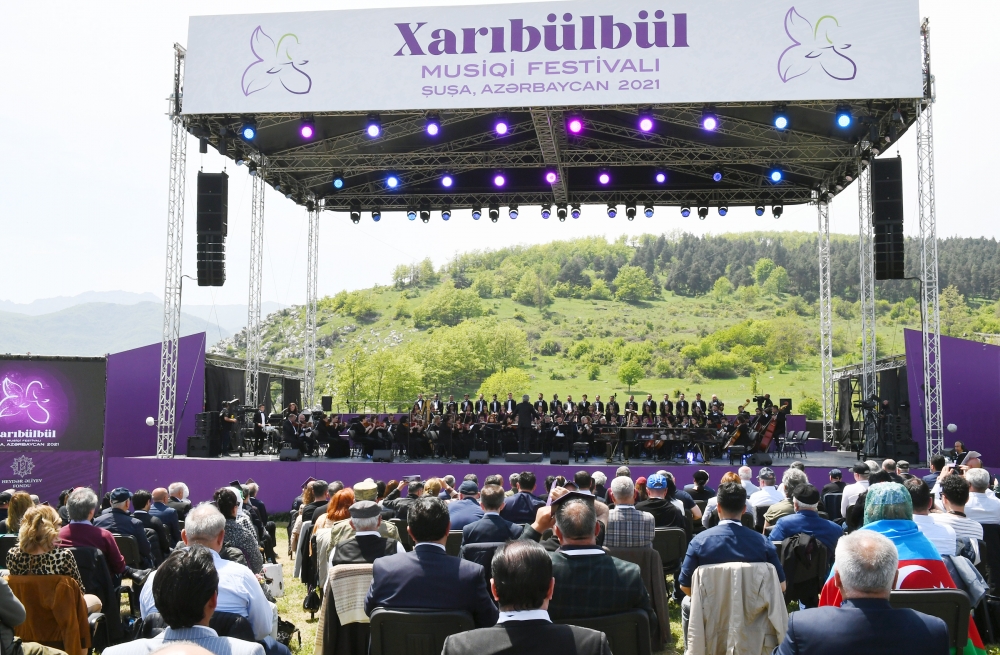
In 2006, Shostakovich Festival was initiated by Mstislav Rostropovich, a world-renowned musician. The festival is dedicated to the 100th anniversary of the birth of a great Russian composer. In 2007, the Vela festival in Italy was performed successfully by the Azerbaijan State Symphonic Orchestra (Artistic Director and Conductor, People’s Artist R.Abdullayev). In 2007, Baku hosted the Fourth International Competition of vocalists named after Bulbul. About 70 vocalists from Russia, Ukraine, Georgia, Belarus, Turkey, Uzbekistan, and Kazakhstan participated in this prestigious competition. In 2007, the First International Mstislav Rostropovich Festival was organized in Baku by the Heydar Aliyev Foundation. Within the framework of the festival, the premiere of the opera „Garabagname“ by the composer Firangiz Alizade was held at the Azerbaijan State Opera and Ballet Theater. In 2007 F. Alizade was awarded the title of „Artist of the World“ by UNESCO.
On the initiative of the President of the Republic of Azerbaijan Ilham Aliyev, 29 years later, on May 12-13, 2021, the Haribulbul music festival was reorganized on the mysterious Chydyr plain of the cultural capital of our country, Shushi.
On the first day of the festival, organized by the Heydar Aliyev Foundation, the musical creativity of different peoples living in our country was presented on the theme “Multiculturalism in Azerbaijani music”. In their performances, musical groups and performers of different nations living in different regions of our country conveyed the idea that everyone, regardless of nationality and religion, has one homeland, and that every citizen lives for this land.
GREAT MUSIC FIGURES

Mir Mohsun Navvab (1833-1918) — astronomer, literary critic, painter, calligrapher, and musicologist.
Mir Mohsun Navvab’s famous musical treatise Vuzuhul-Arqam was first published in Baku in 1913 (his work Kashful-Haqiqati-Masnavi, dedicated to music, is also known). In this treatise, Mir Mohsun investigates the origin of some dasgah’s (The vocal-instrumental whole performed by the mugam trio) and the roots of their names, the connection of mughams with poetic texts, the relationship between the performer and the listener, their optimal location in terms of acoustics. For the first time, the Nawwab uses the term dasgah, referring to the six dasgahs known in Karabakh at that time: Rast, Mahur, Shahnaz, Rahavi, or Rahab, Chahargah, and Nava. According to the Nawwab, the composition of the dasgah often depends on the taste and ability of the performer. In this work, the scientist mentions 82 songs and mugams performed by Karabakh musicians. Mir Mohsun investigates the origin of several mughams and the etymology of their names. Thus, he connects the names of Azerbaijan, Nishapur, Zabuli, Baghdadi, Shirvani, Gajari, Shah Khatai and other mughams with the people who played a role in their creation and place names. Rast mugam is a spring breeze, Rahavi is a raindrop, Chahargah is a thunderstorm, Dugah is a spring, Humayun is a flight of birds, Nava is a sigh of unfortunate lovers, Mahur connects the murmur of water, Shahnazi is associated with the chirping of nightingales, Ushaggi is associated with the flight of birds, Uzzali associated with the movement of meteorites.
Navvab was also interested in mathematics, chemistry, and astronomy. He put two telescopes in his house and built a small observatory and a chemistry laboratory. In his textbook „Kifayatul-etfal“, written as a textbook in 1899, he compiled tables on the location of celestial bodies and solar eclipses. The scientist conducted experiments with his students in a chemistry laboratory and checked copies provided by medieval chemists. The number of advice he gave to young people in the book of exhortations was more than 500. The ethical views of the well-known pedagogue and scientist were reflected in his books such as „Kifayatul-etfal, Nurul-Anvar“ and „Pandname“. Undoubtedly, Navvab made his greatest contribution to the art of Karabakh and all of Azerbaijan with his artistic creativity. We have his many watercolor paintings, book miniatures, and patterns on several buildings and mosques.
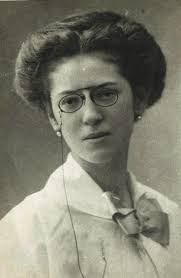
Khadija Osman gizi Gayibova (1893-1938) — an artist and one of the first female pianists of Azerbaijan.
As a result of her father’s efforts, Khadija entered the St. Nina Girls‘ School. In addition to his secondary education, he received an excellent piano education.
However, the education of Mrs. Khadija, who lost her father, sister, and brother to tuberculosis, remains incomplete. In the next few years, Mrs. Khadija began teaching at a Russian-Muslim school for women, and in 1919 she moved to Baku with her family. After the occupation of Baku by the Soviet army, she was appointed head of the Oriental Music Department at the People’s Commissariat of Education of the Azerbaijan SSR. Mrs. Khadija, considered one of the founders of the Eastern Conservatory established in those years, soon became famous for her classical mugam works performed on the piano.
From 1927-1931 she studied at the composition faculty of the Azerbaijan State Conservatory. In 1933, she was arrested and charged with counter-revolution. However, Mrs. Khadija was released three months later due to lack of evidence, soon resumed her professional activities. In 1934, she joined the research staff of the Azerbaijan State Conservatory and was commissioned to study the musical heritage of Azerbaijan.
However, in 1938, Khadija was arrested for the second time. According to the decision of the Special Troika of the KGB of the Azerbaijan SSR dated October 19, 1938, Gayibova Khadija Osman gizi was sentenced to be shot with confiscation of property for her connection with the Turkish consulate and espionage activities. The sentence was carried out one week later in Baku. In 1954, Khadija’s daughter Sultanova Alangu appealed to the Ministry of Internal Affairs of Azerbaijan for information about her mother. On April 28, 1955, the investigator of the special department of the State Security Committee Menyayev stated in connection with the application of A. Sultanova: According to the decision of the Judicial Board on Criminal Cases of the Supreme Court of the Azerbaijan SSR dated February 14, 1956, Gayibova Khadija Osman gizi was acquitted and on February 29 her daughter Alangu received a document for this purpose.
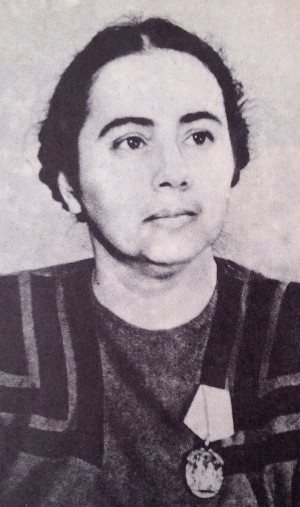
Kovkeb Kamil gizi Safaraliyeva (1907-1985) — pianist, pedagogue, professor, the first pianist-pedagogue of Azerbaijan, methodologist.
In 1915, Kovkab entered the Marinski Secondary School. At the same time, she also took music lessons in piano class. In 1916 she continued her education at the music college.
In 1926, Kovkab Safaraliyeva graduated from the Music College and, despite being very young, she was invited to work at the Turkish Women’s Seminary. Here she began her first pedagogical activity. It is in this seminary that the acquaintance and joint activities of the great duo — Uzeyir and Mrs. Kovkab begin.
After graduating from the Music College, Safaraliyeva entered the piano department of the State Conservatory. She learns from valuable specialists of her time. What she learns from them, she teaches a new generation years later in this very music center. She first worked as an intern-pedagogue and then as a teacher of a special piano class. Kovkeb Safaraliyeva graduated from the Azerbaijan State Conservatory in 1932, and in 1952 became a professor at the same educational institution.
Mrs. Kovkab, who made a great contribution to the development of music education, established a secondary music school (now the Bulbul School) at the Conservatory in 1937 and was its director.
Kovkeb Safaraliyeva is the author of several scientific-methodical textbooks, a collection for piano, and articles on music.

Ashraf Hasan oglu Hasanov (1909-1983) — conductor of an orchestra, teacher, People’s Artist of the Azerbaijan SSR, one of the first Azerbaijani conductors with professional education.
Ashraf Hasanov performed at the Azerbaijan State Opera and Ballet Theater Uzeyir bey Hajibeyov’s „Koroglu“, „Leyli and Majnun“, Muslim Magomayev’s „Shah Ismail“, Reinhold Glière’s „Shahsenam“, Mikhail Glinka’s „Ivan Susanin“, Giuseppe Verdi’s „La Traviata“, „Aida“, „Rigoletto“, „The Tsar’s Bride“ by Nikolai Rimsky-Korsakov and „Snow Maiden“, „Carmen“ by „George Bizet“, „Comedians“ by Rucero Leonkovallo, „Aleko“ by Sergei Rachmaninoff, „Mermaid“ by Alexander Dargomyzhsky, „Peter Tchaikovsky“, „Iolanta“, „Mozart and Salieri“, Nikolai Rimsky-Korsakov’s „Shahrizad“ and Igor Morozov’s „Doctor Aybolit“.
He conducted the symphony orchestra under the Azerbaijan Radio Committee.

Lyudmila Karagicheva-Bretanitskaya (1920-2015) — musicologist, pedagogue, honored art worker of the Republic of Azerbaijan, candidate of art history.
L.Karagicheva is one of the leading figures of Azerbaijani musicology. The main theme of the scientific activity of the musicologist, who has a great creative ability and range, is the work of Gara Garayev. Attention is drawn to her works on „Gara Garayev“, „Garayev ballets“, „African musical folklore in Garayev’s ballet“ Lightning Roads“, symphonic engraving „Don Quixote“ and other works by Garayev. Lyudmila Karagicheva was one of the first musicologists to give lectures on contemporary art to her students.
Her monograph on the composer and conductor Niyazi and articles on various topics related to Azerbaijani music was also published. She worked at the Conservatory before moving to Moscow (1988).
Adelaide (Adila) Irza gizi Mammadova (1922-2015) — musician, scientist, pedagogue, public figure.
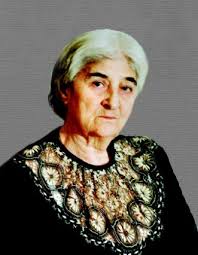
After graduating from high school, she studied at the Tbilisi Law School under the People’s Commissariat of Justice of Georgia and began her career. In 1977, when the Memorial Museum of Bulbul, the founder of Azerbaijan’s professional vocal art, was established, Adelaide Mammadova was appointed its director. For more than 40 years, Adelaide has been a protector and active promoter of Bulbul’s legacy. Due to her hard work, the Bulbul Memorial Museum, one of the first house-museums of the republic, contains more than 6,000 documents reflecting the life and work of the famous artist, including posters, letters, and editions of opera performances, as well as his cultural, materials related to scientific, pedagogical and social activities. Due to her efforts, Bulbul’s memorial house-museums were established in Baku and Shusha. In addition to being the director of the museum, she was also a tireless researcher of Bulbul’s rich heritage. Adelaide Mammadova was the author of many books and articles dedicated to the scientific activity and multifaceted creativity of the prominent vocalist. Unfortunately, after the occupation of Shusha by the Armenian armed forces in 1992, Bulbul’s memorial house-museum was savagely destroyed.
Ms. Adelaide’s work was highly appreciated and she was awarded the Order of Glory, one of the highest awards of the Republic of Azerbaijan, and the Honorary Diploma of the President of the Republic of Azerbaijan.
Azad Khamza oglu Aliyev (1928-1994) — violinist, People’s Artist of Azerbaijan.
In 1951-1971 he was a member of the Azerbaijan State String Quartet.
He was the first performer of works for violin by Azerbaijani composers. His repertoire includes works by Russian and Western European composers. He was a laureate and diploma winner of international competitions as part of a quartet.
From 1970-1976 he was the concertmaster of the Azerbaijan State Symphony Orchestra, and since 1951 — the teacher of the Azerbaijan State Conservatory.
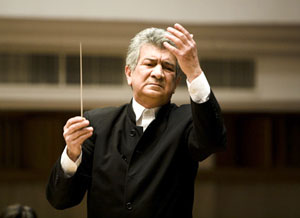
Rauf Janbakhish oglu Abdullayev (1937) — conductor of the Azerbaijan State Philharmonic Symphony Orchestra, professor, People’s Artist of Azerbaijan.
In 1965-1984 he was the chief conductor of the Azerbaijan State Opera and Ballet Theater named after M.FAkhundov, in the 70s he was one of the founders of the Modern Music Chamber Orchestra and BAKARA ensemble since 1984 artistic director and chief conductor of the Azerbaijan State Symphony Orchestra named after Hajibeyov, artistic director and chief conductor of the Ankara State Opera and Ballet Theater in 1991-1994, participant of international music festivals and projects. For more than 20 years, he has conducted about 30 opera and ballet performances (both classical and modern repertoire) as the theater’s chief conductor. He has conducted famous bands in many countries (Russia, Germany, the Netherlands, Switzerland, France, Turkey, Egypt, USA, Italy, UAE, etc.). His repertoire includes works by many Western European, Russian and Azerbaijani composers.
In 1970 he was awarded the title of Honored Art Worker of the Azerbaijan SSR, in 1979 the Honorary Decree of the Supreme Soviet of the Azerbaijan SSR, twice the Best Conductor of the Year in Turkey for his work as a conductor at the Ankara Opera and Ballet Theater from 1993 to 1997. In 2017, he was awarded the Order of Independence.
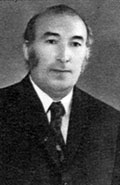
Nazim Asadulla oglu Rzayev (1925-2007) — Azerbaijani conductor, professor.
Nazim Rzayev was the conductor of AOBT(Academic Opera and Ballet Theater) in 1958-1960, and in 1960-1963 he had an internship at the Bolshoi Theater in Moscow. From 1964 he was the artistic director and chief conductor of the Azerbaijan State Chamber Orchestra. In the last years of his life, he worked in Turkey. He conducted several works by Uzeyir Hajibeyov. In the 1984-1985 theater season, he was the founding conductor of Uzeyir Hajibeyov’s musical comedy „Arshin mal alan“ at the Ankara State Opera and Ballet Theater.
In 1977 he was awarded the title of People’s Artist of the Azerbaijan SSR, in 1980 he was awarded the USSR State Prize, and in 1974 the Azerbaijan State Prize.

Farhad Shamsi oglu Badalbeyli (1947) — pianist, rector of the Baku Music Academy named after Uzeyir Hajibeyov.
In 1965-1969 U. At the Azerbaijan State Conservatory named after Hajibeyov (in the class of Professor M.R.Brenner) from 1969 to 1971 he studied at the graduate school of the Moscow State Conservatory named after Tchaikovsky (in the class of associate professor B. Davidovich). Farhad Badalbeyli became famous after successful performances at the B. Smetana International Competition named after B. Smetana (Czechoslovakia, 1967, III Prize and Award for the best Smetana performer) and Vianna da Motta (winner of the International Piano Competition in Lisbon, Portugal, 1968).
Today, F. Badalbeyli is actively engaged in concert work. The pianist’s tours include Bulgaria, Germany, Greece, Denmark, Israel, Italy, Cuba, Norway, Portugal, Tunisia, Turkey, Finland, France, the Czech Republic, Slovakia, Switzerland, Yugoslavia, Japan, and other countries. Music organization, enlightenment is the second important field of activity of F. Badalbeyli. In 1986-1989, he was the first deputy chairman of the board of the Azerbaijan Music Society. On the initiative of F. Badalbeyli, the Baku Art Center (he was the head of this place in 1987-1996) and the Society of Musical Figures of Azerbaijan (currently he has been the chairman of this society since 1989) was established.
Since 1995, he has been a member of the Friends of Azerbaijani Culture Foundation. Since 1971, F. Badalbeyli has been teaching at the Azerbaijan State Conservatory (associate professor since 1976, professor since 1983). Since 1991, F. Badalbeyli is the rector of the ASC(Azerbaijan State Conservatory), which was transformed into the Baku Music Academy named after U.Hajibeyov on his initiative.
GREAT MUSIC FIGURES — COMPOSERS
~.jpg)
Agshin Aligulu oglu Alizade (1937-2014) — Azerbaijani composer, professor.
In 1962, he graduated from the Baku Conservatory, Jovdat Hajiyev’s composition class.
The sonata, which he wrote in his student years, was awarded a first-degree diploma at the I All-Union Competition for Young Composers, and then his first symphony was awarded the first-degree diploma at the Transcaucasian Spring Festival. Written for 16-string instruments, his „Express“ is an interesting experiment for aleatoric and sonorous techniques. „Bayatilar“ is a unique experiment in Azerbaijani music, more monodic.
The common features of Agshin Alizadeh’s work are virtuoso ethnography, deep philosophical generalization, emotional breadth, constructiveness, oriental colorful decor, and serious form proportion. His main works are „Babak“ ballet, „Journey to the Caucasus“ ballet, „Waltz of Hope“ ballet, 5 symphonies, „Bayatilar“ for choir, „Tantana“, „Azeris“ cantatas, „Mother Land“, „Ancient Lullaby“, „Pastoral“ for chamber orchestra, „Like an Ashug“, „Jangi“, „Village Suite“, „Children’s Suite“, sonata for piano, „Epic“, „Ancient games“, „Portrait“, choreographic symphony, etc.
He has written more than 50 songs for films, cartoons, and performances.

Arif Jahangir oglu Malikov (1933) — Azerbaijani composer and artist, professor.
In 1960, he graduated from the Azerbaijan State Conservatory named after Uzeyir Hajibayov in the composition class of Gara Garayev. From that year he began to teach there and now works there as a professor and head of the department of composition.
The work of the composer Arif Malikov is distinguished by bright talent and originality. In his works, he combines the traditions of national music with the achievements of 20th-century music and acts as an artist with a progressive mindset.
His work is characterized by high ideas, rich content, deeply emotional and psychological expression of images. The first great work based on the libretto of the famous Turkish poet Nazim Hikmet — the ballet „Legend of Love“ brought world fame to Arif Malikov. One of the composer’s next creative successes was the ballet „Poem of Two Hearts“ based on the book „Book of Two Hearts“ by Uzbek writer Sh. Rashidov.
Arif Malikov’s works are performed in many countries around the world — Russia, USA, Great Britain, France, Japan, Turkey, Brazil, Austria, Norway, Finland, Italy, Egypt, Thailand, Yugoslavia, Bulgaria, Romania, Hungary, Czech Republic, Slovakia, Poland, Germany performed in Uzbekistan, Kazakhstan, Moldova, Ukraine, and Georgia.
In 2016, Arif Malikov’s „Complete Collection of Notes“ consisting of 28 volumes was published.
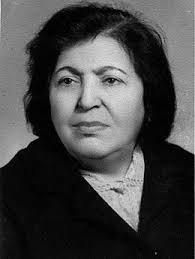
Agabaji Ismayil gizi Rzayeva (1912-1975) — the first female composer of Azerbaijan.
Ms. Agabadji received her higher musical education from the tar player and composer Said Rustamov, and in mugham from Mirza Mansur Mansurov.
She studied composition at Uzeyir Hajibeyov’s class at the Azerbaijan State Conservatory and was one of his favorite students. U.Hajibeyov, A.Badalbeyli, and J.Hajiyev teach her music-theoretical subjects. A year later, she was admitted to the first orchestra of folk instruments created by Uzeyir Hajibeyov, and in 1938 took part in the Decade of Azerbaijani Art in Moscow. She is the first female composer to receive professional music education both in Azerbaijan and in the whole East. The first work she composed was „Young Patriots March“.Song and romance become the leading field of A.Rzayeva’s creativity. Glorifying the labor heroism of our heroic oil workers she wrote „Neftchi Gurban“, bringing tears of joy to the eyes of parents „Bride is coming to our house“, „Don’t Sing Beauty“, „Shepherd Black“, „Doll“ which opened a sweet and miraculous world before the eyes of little girls „Swallow“, „My White Dove“, „Masters of Tomorrow“, „Little Captain“, „I am Carnation“ and other works have a worthy place in our national culture. A.Rzayeva also tried to expand the genre range of her work. In this sense, it is possible to mention her musical stage works („Love of the Sun“, „Do not argue“), variations, two sonatas, plays written for oboe, tar, and kamancha, suite „Festivity“ for folk instruments. The inclusion of a clarinet in the orchestra of folk instruments is also connected with the name Agabaji Rzayeva.
She was a deputy of the Supreme Soviet of the Azerbaijan SSR for several convocations, was twice awarded the Order of the Red Banner of Labor, the Order of the Badge of Honor, and various medals. In 1960, she was awarded the honorary title of Honored Artist.
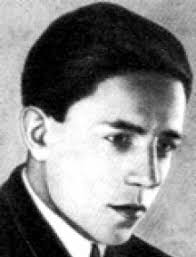
Asaf Zeynalabdin oglu Zeynalli (1909-1932) — Azerbaijani composer.
In 1923-1926 he graduated from the Baku Music College, in 1931 from the composition department of the Azerbaijan State Conservatory, in the class of Uzeyir Hajibeyov. In 1929-1931 he worked as head of the music department and chairman of the Union of Proletarian Musicians of Azerbaijan at the Turkish (Azerbaijani) Workers‘ Theater. Tofig Guliyev and Gara Garayev were his students for some time. The first romances in the history of Azerbaijani music are associated with the name Asaf Zeynalli.
Despite living for 23 years, he has left an undeniable mark on the art of national music. He is the founder of national romance, piano, and symphonic music. His romances „My Country“, „Border Guard“, „Chadra“, „Question“, „Seyran“ are the pearls of our national vocal music. He is the author of the series „Children’s Suite“ for piano, the play „Chahargah“, „Mughamsayagy“ for violin and piano, 2 fugues, „Fragments“ for symphony orchestra, music for theater performances, folk songs. He did a great job in collecting, transcribing, and processing Azerbaijani folk music. He compiled a textbook called „Primary Music Literacy“.
He also composed music for Jafar Jabbarli’s „Sevil“, „Return“, H. Nazirli and S. Rustam’s „Flame“, A. Hamid’s „Indian Girl“, V. Kirshon’s „City of Winds“ performed at the Turkish (Azerbaijani) Workers‘ Theater, with the „Children’s Suite“ for the first time in the history of Azerbaijani music laid the foundation of the repertoire of children’s music. Asaf Zeynalli recorded several Azerbaijani folk songs. The most famous work is considered the novel „My Country“, written in the words of Jafar Jabbarli.
He records about 70 Azerbaijani folk songs. He goes to Karabakh to collect samples of Azerbaijani folk music, and there he fell ill. The bedridden composer returns to Baku for treatment. While in the hospital, he wrote his last symphony on the wall of his room and asked his brother to copy his work from the wall to paper. Unfortunately, no one fulfills his last will…
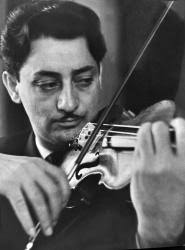
Azer Huseyn oglu Rzayev (1930-2015) — Azerbaijani composer, professor.
He received his primary education at the 11-year music school of the Azerbaijan State Conservatory named after U. Hajibeyli in the class of Professor S. Bretanitsky in violin and at the same time in the class of children’s creativity Boris Zeidman. Then he continued his education at the Azerbaijan State Conservatory, where he graduated with 2 specialties in 1953: the class of Professor B.Zeidman in composition and the class of Professor A.Amito in violin. In 1953, he began working as a violin teacher at a 10-year music school and as a concertmaster-accompanist at the conservatory.
A.Rzayev became known as a composer for the first time with Concerto No. 1 for symphony orchestra with violin. The composer was awarded the title of laureate of the International Competition of Composers in Warsaw in 1955 for this work. He has been a member of the Union of Composers of Azerbaijan since 1954, a member of the Board of the Union of Composers of Azerbaijan since 1957, as a chamber ensemble teacher, headteacher, and professor at the Azerbaijan State Conservatory, he was a sound director in the Radio and Television Committee, artistic director of the State Philharmonic named after M. Magomayev, director of the Azerbaijan State Academic Opera and Ballet Theater.
Instrumental music genres play a key role in the composer’s work. He has performed 3 concerts for symphony orchestra with violin, 6 poems, including „Lust for Life“, „Nasimi“, „In Memory of My Father“, „Baku-90“ symphony, „Fadai-Vatan“ for orchestra with violin, „Poem-concert“ for cello and symphony orchestra, „Thought“ and „Gaytagi“ for tar and symphony orchestra, Concerto for piano and symphony orchestra, also he is the author of an operetta „Haji Karim’s Journey to the Moon“, a large number of chamber and instrumental works, music for performances.
Since 1963, he has been the author and host of a series of programs on television and radio: „Pages from the history of Azerbaijani music“, „On the orchestra’s musical instruments“, „Portrait of our composers“, „World of Music“. In 1997, he created the „Children’s Symphony Orchestra“ at the Bulbul Secondary Music School.

Javanshir Rahim oglu Guliyev (1950) — famous Azerbaijani composer.
In 1968 he entered the Tar Department of the Faculty of Folk Instruments of the Azerbaijan State Conservatory named after Uzeyir Hajibeyov. Two years later he entered the Conservatory’s Faculty of Composition and in 1975 graduated from the class of prominent composer, Professor Jovdat Hajiyev.
While still a student, J.Guliyev began his experiments in composition. In the „First Quartet“, which he wrote in his sophomore year, he succeeded in revealing a new style of music by synthesizing national music, which is the main creative principle of the future, with modern compositional techniques. The work was met with great interest by the audience, liked and for a long time was the cause of creative debates in terms of „nationality and modernity.“ It was performed at several inter-conservatories in the then Union of Composers of the USSR and aroused great interest. Later, several other works composed by J.Guliyev in this style were performed in various European countries and America and received great sympathy.
Javanshir Guliyev is the author of the first military anthem of modern Azerbaijan. For the first time, J.Guliyev included saz and zurna in symphonic and symphonic-jazz orchestras and used them as the main instruments. He started working as a sound director at the Azerbaijan State Committee for Television and Radio Broadcasting in 1973 when he was a student and worked in that position for 17 years.
From 1990-1993 he was the artistic director of the Azerbaijan State Concert Union. In 1980-1998 he worked as a teacher at the Azerbaijan State Conservatory named after Uzeyir Hajibeyov — Baku Music Academy, in 1994-2003 at the Azerbaijan State University of Culture and Arts. In parallel, from September 1, 1992, to 2005 he worked as the director of the music department at the Academic National Drama Theater. He has been an associate professor at the Azerbaijan National Conservatory since 2003, a professor since 2005, and a professor at the Faculty of Performing Arts of the Middle East University of the Turkish Republic of Northern Cyprus since 2005.
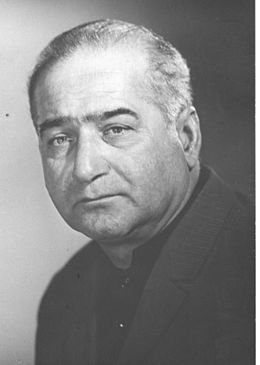
Jahangir Jahangirov (1921-1992) — composer, teacher, choirmaster.
He studied at the Baku Music School named after A.Zeynalli, in 1951 at the Azerbaijan State Conservatory in the composition class of B.Zeydman. Jahangir Jahangirov’s work in the field of the choir is considered the pinnacle of Azerbaijani choral art, founded by Uzeyir Hajibeyov. Starting from 1949, the composer led the choir created under the Azerbaijan Radio and worked with this ensemble for more than 15 years. The majority of songs, composed by him for the first time were played by the chorus, which he led. After that, he was the artistic director of the Song and Dance Ensemble at Azerbaijan State Philharmonic Hall. In 1959 he was an Honored Art Worker, in 1963 a People’s Artist, and in 1950 a laureate of the USSR State Prize.
Jahangir Jahangirov’s work is distinguished by its diversity. The composer has choral and instrumental pieces of music, operas, and beautiful songs. Examples include the composer’s interesting work in the field of choral music, the poem „Across the River Aras“, the 12-part composition „A Song About Friendship“, the choir numbers of the operas „Azad“ and „Khananda’s Fortune“, the cantatas „Fuzuli“, „Nasimi“, „Ashug Ali“, the oratorio „Sabir“, oda he wrote with Suleyman Alasgarov and dozens of choir miniatures can be shown. Of these works, the cantata „Fuzuli“ brought great fame to Jahangir Jahangirov. In the cantata, he was able to reveal the magnificent image of the great poet with the uniquely impressive and heartwarming musical language of his inner world. The text of the cantata is based on Fuzuli’s three ghazals. Each ghazal, in turn, combines a part.
His songs „Mother“, „Moonlight Night“, „Baku“, „Morning Star and Me“, „Hey, Girl“, „Grey-eyed“ and other songs are memorized. Jahangir Jahangirov also appealed to the works of classics, wrote soulful songs and romances.
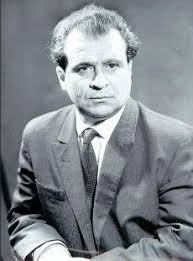
Ahmad-Jovdat Ismayil oglu Hajiyev (1917-2002) — famous Azerbaijani composer, rector, and professor of Baku Music Academy
After graduating from high school, he studied at the Azerbaijan State Conservatory in 1935-1938, and at the Moscow Conservatory in 1938–194 and he continued his education, which was incomplete during the war, and in 1947 graduated from the class of composer Dmitry Shostakovich.
Jovdat Hajiyev, who played a great role in the development of the Azerbaijani school of composition, rendered incomparable services in the training of professional musicians in Azerbaijan. He was a wonderful teacher who brought up several generations of Azerbaijani composers. Jovdat Hajiyev’s services in the development and promotion of Azerbaijani music culture were highly appreciated. He was twice awarded the USSR State Prize, was awarded many orders and medals, including the highest award of the Republic of Azerbaijan – the Order of Glory.
J.Hajiyev, one of the founders of the music symphony in Azerbaijan, touched upon the most important problems of his time in his symphonies and symphonic poem „For Peace“ and reflected them in a lyrical dramatic way. His opera „Motherland“ was composed together with Gara Garayev, and his chamber-instrumental and piano works also play an important his work. He composed a one-part „Symphony“ which was his first major work during his student years, and two symphonic poems, „Azerbaijan Suite“, string quartet, and other works. In 1945, he was awarded the USSR State Prize for his opera „Motherland“ written together with Gara Garayev.
Jovdat Hajiyev is the author of eight symphonies, as well as oratorios, ballads, sonatas, scherzos, and quartets, as well as several valuable works for the choir.
The Eighth Symphony of Jovdat Hajiyev „Time Has Chosen Him“ is dedicated to the President of Azerbaijan Heydar Aliyev.
Eldar Bahram oglu Mansurov (1952) — Azerbaijani composer.
In 1968-1972 he studied in the piano class of the secondary music school named after Asaf Zeynalli, in 1974-1979 at the composition faculty of the Azerbaijan State Conservatory named after Uzeyir Hajibeyov in the class of professor Jovdat Hajiyev. He is the author of the rock opera „Seven Beauties“, rock ballets „Cleopatra“ and „Olympus“, 5 symphonies, symphonic mugham „Mahur-Hindi“, a concert for violin and symphony orchestra, many symphonic, chamber, and choral works. He has composed music for some films and performances and is the author of more than 3,000 songs and instrumental music. He delivered lectures on the history of mughams at the International Symposiums held in Samarkand in 1983 and 1987.
He has been a member of the USSR since 1981, the Union of Composers of Azerbaijan, and the Union of Cinematographers of Azerbaijan since 1999.
For his contribution to the development of Azerbaijani culture, he was awarded the honorary title of „Honored Art Worker“ in 2005 and „People’s Artist“ in 2012.
Composer Eldar Mansurov’s song „Bayatilar“ was first performed in 1989. „Bayatilar“ immediately gained popularity and was widely distributed in the former Soviet Union in 1990 with a large circulation by the company „Melody“. Bayatilar, written to the words of the poet Vahid Aziz, is still one of the favorite songs. Since then, this long-lived song has traveled the world. Bayatilar’s music is used by various performers in Turkmenistan, Russia, Turkey, Greece, Germany, Italy, Spain, France, Romania, Bosnia and Herzegovina, Croatia, USA, England, Sweden, Canada, Israel, Arab countries, and even as far away as Brazil.

Emin Sabit oglu Mahmudov (Emin Sabitoglu) (1937-2000) — Azerbaijani composer.
After graduation from musical school in Baku, he entered Gara Garayev’s class at Baku Conservatoire, in 1954. Two years later he was transferred to Moscow State Conservatory named after Tchaikovsky (Yuri Shaporin’s class).
In 1961, he began to work as music editor in the film studio „Azerbaijanfilm“. In consecutive years he worked as art director of the State Philharmonic Hall and also taught at State Conservatory((now Baku Music Academy) named after Uzeyir Hajibeyov. He wrote a symphony, three symphonic poems, three cantatas, a string quartet, a poem for violin and piano. However, several music genres have been a major part of his works.
He composed more than 600 songs, 9 musical comedies, and pieces of music for nearly 40 films. The songs „Valleys“, „Good morning, Baku“, „Far Green Island“, „Mountains“, „Mercy is a Good Thing“ are some of his many works. He has many compositions written for plays that even he does not know the exact number. Along with theatres in Baku, he composed music for theatres in Sumgayit, Ganja, Lankaran, Mingachevir, and Nakchivan.
President of the Republic of Azerbaijan Ilham Aliyev has signed an order to celebrate the 80th anniversary of Emin Sabitoglu. To ensure the implementation of the Order of the President of the Republic of Azerbaijan No. 3142 dated August 5, 2017 „On the celebration of the 80th anniversary of Emin Sabitoglu“ on December 1, 2017, the Azerbaijan State Academic Philharmonic Hall hosted a jubilee evening dedicated to the 80th anniversary of Emin Sabitoglu, one of the talented representatives of the musical art, a prominent composer, People’s Artist, laureate of the State Prize, Order of Glory.

Afrasiyab Badalbey oglu Badalbeyli (1907-1976) — Azerbaijani classical composer, conductor, libretto player.
Afrasiyab Badalbeyli is the author of the first ballet in Azerbaijan. He is the author of the first Azerbaijani ballet, entitled Giz Galasi (The Maiden Tower), which he composed at the age of 33. In the following years, he wrote the operas „Nizami“ and „Soyudlar aghlamaz“ („Willows Don’t Cry“) and reflected his name in golden letters in our cultural history. He composed background music for theatrical plays. He widely promoted our national music on Azerbaijani radio and television. Desiring to acquire perfect knowledge, Afrasiyab Badalbeyli entered the Azerbaijan State Turkish Music College in 1924 and at the same time the Department of Linguistics of the Oriental Faculty of the Azerbaijan State University. He composed music for Jafar Jabbarly’s staged play „Od Galini“( „Bride of Fire“) which was highly appreciated by art lovers. For a long time, he worked as an assistant conductor in the Moscow and Leningrad Opera and Ballet Theaters. From 1938 to the end of his life he worked as a conductor at the Azerbaijan State Opera and Ballet Theater. At the Music College, Afrasiyab Badalbeyli is studying violin in the class of teacher S.L. Bretanitsky. The talented young man quickly achieves the ability to play fluently and on May 22, 1925, he performed as a concertmaster of the second violin in the orchestra accompanying Uzeyir Hajibeyov’s operetta „Arshin mal alan“ staged by the students of the technical school.
Along with the violin, Afrasiyab Badalbeyli, who also achieved an impeccable style of playing the tar, joined the orchestra in 1926 as accompanist of the second group of tar players during the folk instrument orchestra’s tour in Moscow and Minsk.

Aziza Vagif gizi Mustafazade (1969) — pianist, composer, and jazz performer.
At the age of 17, Aziza’s mugham-influenced style helped her win in the Thelonious Monk piano competition in Washington. It was around this time that she moved to Germany with her mother. Aziza released her debut album, Aziza Mustafa Zadeh, in 1991. Her second album, Always, won her the Phono Academy Prize, a prestigious German music award, and the Echo Prize from Sony. She has since performed in many countries with many jazz and traditional luminaries and released several more albums, the most recent being Contrasts II, released in 2007.
On May 27, 2018, she was awarded the honorary title of People’s Artist of Azerbaijan.
Aziza Mustafazade currently lives in Germany.
Aziza visited Azerbaijan in June 2007 for the Baku Jazz Festival, starring in her own concert at the Azerbaijan State Academic Opera and Ballet Theater. At the end of the festival, she performed in the open air at the concert at the Green Theater. At that concert, she performed a very spectacular performance of „Shamans“.

Fikrat Amirov (1922-1984) — Azerbaijani composer.
Fikrat Amirov is one of the leading figures of XX-century Azerbaijani music. No matter how wide the genre of F. Amirov’s music, symphonic and musical stage genres play a leading role in his work. He created a new genre called symphonic mugham, his most famous pieces include works such as „Shur“, Kurd Ovshari „, „Gulustan Bayati-Shiraz“. F. Amirov’s symphony „Nizami“, glorifying the native land „Azerbaijan Capriccio“, „Azerbaijan Suite“, „Azerbaijani gravures“ are valuable pages of the composer’s heritage.
F. Amirov’s opera „Sevil“ based on Jabbarli’s drama laid the foundation of lyrical-psychological opera for the first time in Azerbaijan (the play was first staged in 1953 at the Azerbaijan State Opera and Ballet Theater named after Akhundov). He also created interesting works in the genre of musical comedy, such as „Urakachanlar“, „Gozun aydin“. F.Amirov’s beautiful ballets „One Thousand and One Nights“ and „Nasimi“ are the works that won the sympathy of the audience.
The first examples of the Azerbaijani concert genre were created by F. Amirov. Several of his concerts, especially „Concert on Arabic themes“ written with E.Nazirova for piano and orchestra, are among the most performed works by Azerbaijani pianists.
His „12 miniatures for piano“, various plays, „Star“, „Azerbaijani lands“, „My Flower“, „I will smile if you smile“, and other romances and songs are still frequently staged today. He also composed interesting background music for dramas, „The Great Support“, „I Was Not Beautiful“ and other films.
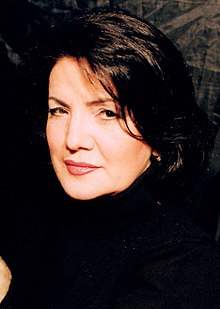
Firangiz Aliaga gizi Alizade (1947) — outstanding composer of Azerbaijan, UNESCO Peace artist.
She received her first music education at the Azerbaijan State Conservatory at the secondary music school for gifted children. Later she studied composition and piano at the Azerbaijan State Conservatory. From 1972 to 1974 she worked as an assistant to Gara Garayev, and in 1974 began teaching at the Azerbaijan State Conservatory (now the Baku Music Academy). F. Alizadeh defended his dissertation in 1994 and received the degree of candidate of art history, and in 1998 the title of professor.
Alizade’s activities are multifaceted and broad. F. Alizade has established herself in the international arena as a composer, pianist, conductor, musician, and public figure. As a pianist, she played an important role in popularizing the modern works of A. Berg, P. Hindemith, and other foreign composers of the 20th century in our country was the first performer of the works of many Azerbaijani composers. In the presentation of her works, she acts both as a pianist and as a conductor.
F.Alizade is the author of several musical works in different genres: „Intizar“(waiting anxiously), „Your name means the Sea“, „Legend about the white horse-drawn boy“ operas, „Empty Cradle“ and „Stadt-Granitza“ ballets, „Habil sayagi“, „Mugham sayagi“, „Oasis“ „,“ Dervish „,“ Absheron „- instrumental works for various compositions,“ Silk Road „concert, Concerto for Cello and Orchestra „Lamentation“, „Dedication“ for large symphony orchestra, etc. works.
From works written and performed in recent years by order of foreign music groups: „Wake up!“ for cello (Paris, France, 2005), „Caspian“ for quintet (New York, USA, 2006), „Fire“ for flute, clarinet, violin and percussions (Seattle, USA, 2006); „Optical Identity“ ballet (Singapore, 2007); „Al Kamandjaty“ mystery (Rome, Italy, 2007), „Dastan“ (Epic) for violin (Austburg, Germany, 2007), „Sea“ for piano, cello and chamber orchestra (Bern, Switzerland, 2008), „Your name means the Sea“ opera (Houston, USA, 2011), Khananda, „Mugflagamenco“ for flamenco performer and ensemble (Amsterdam, Netherlands, 2011), „Impulse“ for violin and piano (the USA, 2012), „Landscape“ for piano (France, 2012), etc. can be noted.

Mirfaig Miri oglu Sujaddinov (1947) — composer.
In 1965, Faig Sujaddinov entered the piano department of the Asaf Zeynalli Music College. In 1969, he began working in the orchestra at the invitation of the head of the Variety Orchestra of the Azerbaijan State Radio and Television Committee Tofig Ahmadov. In the 80s of the XX century, Faig Sujaddinov stopped working in the Variety Orchestra and continued his education at the Azerbaijan Pedagogical Institute of Languages.
In 1977 he was admitted to the composition faculty of the Azerbaijan State Conservatory, and graduated in 1981. In the 2000s, Faig Sujaddinov lived and worked in Turkey and Kirp. In the 2000s, Faig Sujaddinov lived and worked in Turkey and Kirp. His works include a concerto for piano and symphony orchestra (1990), a string quartet (1991), a concerto for piano and chamber orchestra (1992), a concerto for chamber orchestra (1993), „The Ataturk“ oda for choir and symphony orchestra (1994), jazz compositions for ensembles of different compositions (1996).
He has been the People’s Artist of the Republic of Azerbaijan since 2006, and in 2007 he was awarded the Order of Glory of Azerbaijan. On September 14, 2015, he was awarded a personal scholarship by the President of the Republic of Azerbaijan.
.jpg)
Khayyam Hadi oglu Mirzazade (1935) — composer.
In 1957 he graduated from the Azerbaijan State Conservatory named after Uzeyir Hajibeyov and has been working there since that year. From 1969-1983 he was the head of the composition department.
In 1970, he was awarded the Lenin Komsomol Prize of Azerbaijan, in 1975 and 1986, the State Prize of the Republic of Azerbaijan, in 1972, the Honored Art Worker of the Republic of Azerbaijan, and in 1987, the People’s Artist of the Republic of Azerbaijan.
The prominent composer was awarded the Order of Glory in 2000.
Ballet „White and Black“, symphonies I and II, symphonic poem „Sketches – 63“, „Memory“, „Moroccan Rhapsody“, „Concert“, „Concerto“ for violin and orchestra, „4 miniatures“ for orchestra with voice, also he is the author of a 2-string quartet, solo sonatas for separate instruments, 12 preludes for piano, „Ithaf“ for soprano and piano, pop and jazz plays, and popular songs.
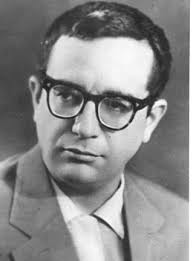
Gara Abulfaz oglu Garayev (1918-1982) — composer, teacher.
In 1926, Gara Garayev first entered the junior music school at the Azerbaijan State Conservatoire. Since 1930, he studied at the music school at the Azerbaijan State Conservatory in the piano class with Professor Georgy Sharoev, and since 1935 he studied at the Azerbaijan State Conservatory in the composition and fundamentals of Azerbaijani folk music. From 1938 to 1940 he studied composition at the Moscow State Conservatory. P.I. Tchaikovsky.
In 1937, Garayev joined the Union of Composers of Azerbaijan SSR. Returning from Moscow, in 1941 he became the artistic director of the Azerbaijan State Philharmonic Hall named after Muslim Magomayev. In 1944, he was deputy chairman of the Azerbaijan Composers‘ Union. In 1946, he began working as a teacher in the composition class at the Azerbaijan State Conservatory, and in the same year was elected a member of the organizing committee of the Union of Composers of the USSR. In 1953, the first performance of the ballet Seven Beauties was staged at the Leningrad State (Small) Opera House.
In 1963, during a tour of the Leningrad Small Opera House, he visited the Arab Republic of Egypt in connection with the performance of the ballet „Seven Beauties“ in Cairo. In 1964, during the tour of the Bolshoi Theater of the USSR, he took part in the „Warsaw Autumn“ contemporary music festival in connection with the performance of the ballet „Path of Thunder“.
The first performance of the Third Symphony took place on April 21, 1965, in Moscow and on June 2 in Baku.
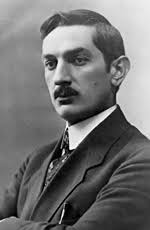
Muslim Mahammad oglu Magomayev (1885-1937) — Azerbaijani composer, conductor, pedagogue, folklorist, public figure.
He was one of the founders of the Azerbaijan Professional Musical Theater. The first large-scale musical work by Muslim Magomayev was the opera „Shah Ismail“ written in 1916. In this work, the composer skillfully used the main elements of the opera, such as arias, duets, polyphonic choirs, as well as examples of national folklore. The opera, which premiered on March 7, 1919, has been performed about 400 times so far.
Muslim Magomayev’s creative heritage includes opera „Nargiz“, symphonic works such as “ On the Fields of Azerbaijan“, „Dance of the Liberated Azerbaijani Woman“, „Dervish“, „Waterfall“, symphonic works such as radio anthem, „Jeyrani“, „Turaci“, „Chechen dance“, „Spring“, „Our Village“, „Army of Fuel oil“.
He composed music for Jalil Mammadguluzade’s „Dead“ and Jafar Jabbarli’s „In 1905“. Together with Uzeyir Hajibeyov, he compiled a collection of „Azerbaijani Turkish folk songs“ and recorded more than 300 Azerbaijani folk songs and dances.
Muslim Magomayev, who was appointed the music director of Baku Radio, tried to perform the best works on air, ordering new songs and compositions for composers. On his initiative, a concert of the mugham „Night of Chahargah“ was organized on the radio. At the same time, the Azerbaijani radio was opened by Muslim Magomayev’s radio anthem.
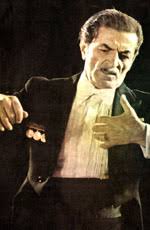
Niyazi Zulfugar oglu Tagizade-Hajibeyov (1912-1984) — conductor and composer.
Niyazi’s first great success in conducting was connected with the Days of Azerbaijani Art held in Moscow in 1938. Here he conducts Uzeyir Hajibeyov’s „Koroglu“ and Muslim Magomayev’s „Nargiz“ operas.
Niyazi worked at the Azerbaijan State Academic Opera and Ballet Theater, the Leningrad Opera and Ballet Theater, and the Azerbaijan State Philharmonic.
During his years at the Philharmonic, „The Humayun“ folk instruments ensemble was established on his initiative. Having received an offer to work abroad, the conductor chose Turkey and achieved many successes at the Ankara Opera and Ballet Theater and the Istanbul Opera Theater. He went on tour to many countries around the world.
He also succeeded in composing. The symphonic mugham „Rast“, the opera „Khosrov and Shirin“ and the ballet „Chitra“ have a special place in Niyazi’s composition. He received the Jawaharlal Nehru International Award for his ballet Chitra, based on the famous Indian writer Rabindranath Tagore’s philosophical drama Chitrangada.
Maestro Niyazi was awarded many state awards, the honorary title of People’s Artist of the USSR, orders, and medals.
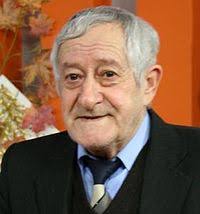
Ogtay Kazimi (1932-2010) — Azerbaijani composer, author of the first rock operetta in Azerbaijan.
While studying at the music school, he composed his first song „Lucky Children“. O.Kazimi entered the composition faculty of the Conservatory named after Uzeyir Hajibeyov in 1957 and studied in the class of Jovdat Hajiyev. In 1966-1967 he worked as a teacher at the Sumgayit Music College, and then as the head of the teaching department. During his years in Sumgayit, O. Kazimi created the „Experiment“ variety orchestra. Later, the composer worked as a music editor at the Philharmonic and taught at the Faculty of Folk Instruments at the Asaf Zeynalli Secondary Music School. O.Kazimi’s songs have had a special place in the repertoire of „Dan ulduzu“(Morning Star) ensemble for many years. The songs of the famous composer were performed by Rashid Behbudov, Zeynab Khanlarova, Shovkat Alakbarova, Eldar Akhundov, Flora Karimova, Yalchin Rzazade, Ilhama Guliyeva, Ogtay Agayev, Mammadbagir Bagirzade, Zumrud Mammadova, and other famous singers. His concerts for folk instruments, vocal symphonic poem dedicated to the President of Azerbaijan Heydar Aliyev („Awake Night of the Nation“), „Karabakh Rhapsody“, solemn overtures, music composed for about 60 theatrical performances („Crystal Palace“ staged at the Academic Drama Theater), „Sword and Pen“, „Fitna“, „Hope“, „Conquest of Edirne“, etc.), „Sheikh Sanan“ staged at the Russian Drama Theater, „Dogs“ staged at the Chamber Theater, operettas staged at the Musical Performance Theater („Golden Wedding“, „Stories of Danabash Village“, „Crazy World“) operettas were memorized, songs of different styles made a charming contribution to the content of Azerbaijani art and were distinguished by their historical significance.
O.Kazimi’s creativity was highly appreciated by the state. He was awarded the honorary titles of Honored Art Worker (1992), People’s Artist of the Republic of Azerbaijan (2006), and the Presidential Scholarship. O.Kazimi is the author of the first rock opera in Azerbaijan.
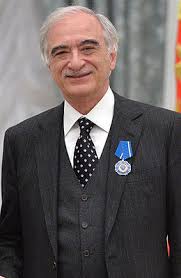
Polad Bulbuloglu (Polad Bulbul oglu Mammadov) (1945) — Azerbaijani composer and singer.
He took his father’s nickname — Bulbul as a surname. In 1968, he graduated from Gara Garayev’s class at the Azerbaijan State Conservatory. Polad is known as the author and performer of many popular songs. He is the author of music for films, plays, symphonies, symphonic poems, and other works.
Ambassador Extraordinary and Plenipotentiary of the Republic of Azerbaijan to Russia Polad Bulbuloglu was awarded the Prize of the Holy Prince Nevsky. The Ambassador was awarded by the Russian Interregional Public Fund.
Polad Bulbuloglu was awarded for his services in maintaining peace, understanding, and strengthening the bonds of friendship between the peoples of Russia and Azerbaijan.
Because of his honest presentation to the international community of Azerbaijan’s struggle for territorial integrity, in his statements and interviews, despite the natural restrictions imposed on diplomacy, he insisted on the uncompromising position of our country, despite misunderstandings and contradictions in public opinion, although that society is not yet ready for any risky step during his visits to Nagorno-Karabakh — for the work done in the interests of Azerbaijan among Armenians, for his outstanding contribution to our great culture by staging the ballet „Love and Death“ in Moscow, the capital of the Russian Federation, he was named „Person of the Year 2009“ in Azerbaijan for his efforts to create an image of our country in terms of morality and patriotism. He was awarded the Order of Honor on February 3, 2015.
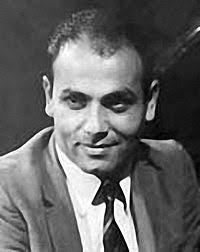
Rafig Farzi oglu Babayev (1936-1944) — Azerbaijani composer.
In 1943, Rafig entered Music School № 160, where he created his first jazz quartet. In 1950 he entered the piano class of the A.Zeynalli Music School, studied in the class of R.S.Levina. In addition to his studies at this school, he works as the musical director of the Folk Instruments Ensemble. He was also interested in jazz music and improved his improvisation skills. Later, Rafig Babayev devoted himself entirely to jazz music and, after graduating from the Baku Conservatory in 1959 as the musical director of the ensemble, went on long tours to different cities of the Soviet Union. Returning to Baku, Rafik Babayev met the famous singer Rashid Behbudov. When Rashid Behbudov founded the Song Theater in 1967, Rafig Babayev was invited to the position of musical director of the theater. R.Babaev and R.Behbudov are preparing a large theatrical concert program.
All these years, Rafig continues his creative activity in the field of jazz music, constantly doing working, and participating in jazz festivals. Rafig Babayev’s ensemble won the 1967 Tallinn International Jazz Festival. His composition performed in „Bayati-Kurdish“ style is especially noted. Gennady Stepanishshev (flute, saxophone), Rauf Sultanov (bass guitar), Alasgar Abbasov (guitar), Sayavush Karimi (org, keyboard instruments), Jamil Amirov (keyboard instruments), Tofig Jabbarov (percussion instruments), Firuz Ismayilov (synthesizer), Ramin Sultanov (percussion instruments), Emil Hasanov (bass guitar), Vagif Aliyev (percussion instruments), Emil K.Hasanov (bass guitar) and other professional musicians performed. In those years, Rafig Babayev was also engaged in public affairs, organizing various competitions, and festivals. All his creative activity has always been associated with pedagogical work with young instrumental musicians and vocalists.
In 1991, Rafig Babayev formed the Jangi folk-jazz ensemble and established a Recording Studio to assist in the implementation of music projects. Using folk instruments, he enriched them with extraordinary harmony, melodiously creating beautiful compositions, combining, at first glance, the contradictory features of the world — the music of the West and the East. In 1993, Rafik Babayev was named People’s Artist of Azerbaijan.
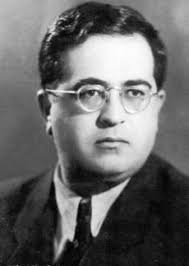
Soltan Ismayil oglu Hajibeyov (1919-1974) — composer, conductor, teacher.
During his years of study at the conservatory, the composer turned to different genres to master the technique of his chosen art. He wrote two preludes and a sonata for piano, as well as the songs „Conversation of Flowers“, „Song of Oil“ to the words of I. Zamanli and romances „Bird“, „Lonely Sail“, string quartets, symphonic variations.
In 1945, the Turkmen Opera and Ballet Theater commissioned S. Hajibeyov to write the opera „Kamina and Gazi“. The symphonic part of this piece is called „Caravan“. One-piece consists of three parts. This is due to his circle of images: the arrival of the caravan, the excitement of natural phenomena, the departure of the caravan. The work is based on „Shur“ mugham. In 1946, the Second Symphony appeared. There is a search for new dramatic situations, new ways of expression. The themes of the composer’s works for children are different. There is both pioneer life (4 pioneer songs) and descriptions of nature („New Year“, „Spring“, etc.).
In 1953, the composer wrote 6 children’s songs: „Playful ball“, „Lullaby“, „Violet“, „Spring has come“, „Christmas tree“, „Pioneer anthem“. The children’s opera „Alexander and the Shepherd“ was written in order of the Baku Pioneer House. It is based on a part of Nizami’s „Alexander’s Letter“.
In 1950, S. Hajibeyov wrote the ballet „Gulshan“. This work, dedicated to a modern theme, touches on human relationships, moral qualities, and aesthetic themes.
S. Hajibeyov composed music for many performances. Among them are M. Ibrahimov’s „Love“, „Peasant Girl“, S. Vurgun’s „Human“, S. Akhundov’s „Love and Revenge“, S. Rahman’s „Aligulu is getting married“ and many other works.

Said Ali oglu Rustamov (1907-1983) — composer, conductor, teacher.
Said Rustamov’s graduation from the Teachers‘ Seminary, and later from the Azerbaijan State Pedagogical Institute, his knowledge of pedagogy, as well as methods of teaching various subjects, and his experience in this field created the basis for his recognition as a master pedagogue in music education.
Although he was one of the main compilers of the textbook „Music Literacy“ for music schools and wrote the first textbook „Tar School“, in 1931 he was the artistic director and assistant conductor of the first orchestra of folk instruments in our country, later, he became the artistic director and chief conductor of the orchestra, the head of the song and dance ensemble of the club named after Fioletov, during his tenure as head of the Azerbaijan State Song and Dance Ensemble, he became known as a teacher known for his teaching abilities. During the years when Rustamov was repeatedly elected to the Baku City Council, he worked tirelessly to improve the cultural life of workers. As a member of the Board of the Union of Composers of the USSR, S.Rustamov also carried out extensive and purposeful work. His voice came from the most prestigious assemblies of the International Congress. He has repeatedly been the chairman and member of the jury at the World and All-Union festivals for folk instrument performers.
A high assessment was given to the extensive activities of the great artist, ardent patriot Said Ali oglu Rustamov. He was awarded the title of Honored Art Worker in 1938, People’s Artist of the Republic of Azerbaijan in 1957, and the USSR State Prize in 1951. He was awarded the Order of the Red Banner of Labor and the Order of Friendship of Peoples three times and several medals.

Shafiqa Gulam gizi Akhundova (1924-2013) — the first professional female author of an opera in the East.
In 1943–1944, Shafiga got her primary education at Baku Musical School named after Asaf Zeynally, where he was taught by Uzeyir Hajibeyov. Then, in 1956, she continued her education at Azerbaijan State Conservatoire named after Uzeyir Hajibeyov, where she graduated from the class of B. Zeydman. In 1998, Shafiga Akhundova has conferred the title of People’s Artist of Azerbaijan and in 2005 she was awarded the Shohrat Order.
In 1972, Shafiga Akhundova composed her first opera „Galin gayasi“ (Bride’s rock) and became the first female composer in the East. Ms. Shafiqa also composed several beautiful songs („Leyla“, „Bakhtiyar eller“, etc.), the operetta „Ev bizim, sirr bizim“(Our Home, Our Secret), plays for string quartet, „Aydin“ for drama theater, „Goodbye India! „,“ Why do you live?“ and, so on. also she is the author of music for children’s performances such as „Clown’s Tale“, „Rabbit’s Birthday“, etc. His beautiful lyrical songs and romances composed to the poems of Azerbaijani poets are very popular among the people.
The composer not only wrote a song, but also applied it to a complex and difficult genre, and went down in history as the first woman to write an opera in the East. In 1971, she fascinated music lovers with the opera „Bride’s Rock“.

Tofig Alakbar oglu Guliyev (1917-2000) — composer, pianist, conductor, one of the founders of Azerbaijani jazz and pop music.
İn 1934, he became a student of Baku Conservatoire, where he studied in two faculties – fortepiano (in professor I.S.Aysberg’s class) and composer (in professor S.G.Strasser’s class) and graduated from the Conservatory in 1936. In 1931, Tofig Guliyev wrote a song to Mirza Alakbar Sabir’s poem – „About a schoolboy“ according to his teacher’s advice. At the beginning of 1935, Tofig Guliyev began to work as a conductor at Azerbaijan Drama Theatre. In 1936, mugham recordings „Rast“, „Segah“, „Zabul“, „Dugah“ were released by him (jointly with composer Z. Bagirov). At the initiative of Uzeyir Hajibeyov, he was sent to the Moscow State Conservatory to continue his education. Soon a pianist began working in the orchestra led by A.Tfasman.
He returned to Baku in 1939 and in 1941 founded the Red Army ensemble. He wrote various patriotic songs for the ensemble, which is part of the 402nd division. In 1943, the ensemble was divided into two groups. One of them, called Red Naval, was managed by Tofig Guliyev. After the end of the war, Tofig Guliyev began his composer activity at Azerbaijan State Russian Drama Theatre named after Samad Vurgun, Azerbaijan Drama Theater named after Azizbayov, Azerbaijan State Theatre for Young Spectators named after Maxim Gorky. He also started working in the field of cinema in the 1940s.
In 1954, he began to teach at the Azerbaijan State Conservatoire named after. In 1956-1958, several of his songs were included in the „Azerbaijani songs“ music volume. In 1958, the composer became the artistic director and then director of the Azerbaijan State Philharmonic Hall. In 1960-1970 he participated in many international conferences, festivals, and art days. In the late 70s of the XX century, he created many children’s and youth music competitions, including „Baku Autumn“. From 1969 to 1979 he headed the Union of Composers of Azerbaijan. From 1990 to the end of his life he served as chairman of the Union of Composers of Azerbaijan.
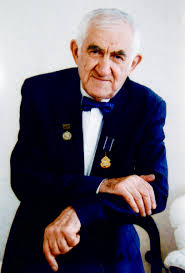
Tofig Ahmadaga oglu Bakikhanov (1930) — composer.
Tofig Bakikhanov received his first musical education at the ten-year music school (now Secondary Music School named after Bulbul) under the Azerbaijan State Conservatory named after U.Hajibeyov (now Baku Music Academy) from the Honored Teacher of the Republic M.I.Simberov on violin. Then he continued his education at the Azerbaijan State Conservatory, where he graduated in two specialties – in 1953, in the class of Professor G.Garayev on the violin. During his student years, T. Bakikhanov was engaged in performing activities and worked as a soloist in the Azerbaijan State Symphony Orchestra, as well as in the symphony orchestra of the Azerbaijan Radio.
T. Bakikhanov’s works are dominated by chamber-instrumental and symphonic genres. He wrote three ballets („Caspian Ballad“, „Oriental Poem“ and „Good and Evil“), 3 musical comedies with composer Nariman Mammadov („One of the six girls is a fairy“, “ Mammadali is going to resort „, “ The girl is in a hurry to a date“), 25 concerts for symphony orchestra with tar and various instruments, 20 sonatas, 5 symphonic mughams („Nava“, „Shahnaz“, „Rahab“, „Humayun“, „Dugah“), 8 symphonies, 6 symphonic poems, 26 sonatas in the field of chamber music, works for various ensembles, more than 100 songs and romances.
In 1973, he was awarded the honorary title of Honored Art Worker of the Republic. In 1983 he became a professor. In 1991, he was named People’s Artist of the Republic of Azerbaijan. In 1996, he was elected Doctor of Arts of the Azerbaijan National Academy of Arts. In 1994-2000 he was a laureate of the award named after Abbasgulu aga Bakikhanov. He was also awarded the Order of Glory in 2000. At the VII International Dance Festival in Paris in 1969; In 1998, 2000, 2001 he performed at the II, IV, V international music festivals „Bellapais“ in the Turkish Republic of Northern Cyprus, in Moscow, Tbilisi, and in recent years in Istanbul, Izmir, Tehran, Bulgaria.
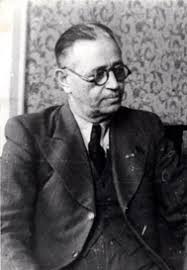
Uzeyir Hajibeyov (1885-1948) — composer, musicologist-scientist, publicist, playwright, pedagogue, and public figure, founder of modern Azerbaijani professional music and national opera.
Uzeyir bey Hajibeyov began his artistic career with journalism. He appeared in „Kaspi“, „Hayat“, „Irshad“, „Taraggi“, „Haqiqat“, „Iqbal“, „Yeni Iqbal“ newspapers and „Molla Nasreddin“ magazine he published many articles, feuilletons and satirical miniatures on important socio-political and enlightenment issues of the time under the headings „Ordan-burdan“, „O yan-bu yan“, etc. with secret signatures „U“, „Filankes“, „Behmankes“.
Uzeyir Hajibeyov decided to create a national opera in the Azerbaijani language to arouse people’s interest in musical performances. Hajibeyov’s opera „Leyli and Majnun“ performed on January 12, 1908, in Baku at the theater of Haji Zeynalabdin Tagiyev laid the foundation of opera not only in Azerbaijan but in the whole Muslim East.
The young composer wrote mugham operas „Sheikh Sanan“, „Rustam and Sohrab“, „Shah Abbas and Khurshidbanu“, „Asli and Karam“, „Harun and Leyla“ one after another. The origin of the first operetta in the East is also connected with the name of Uzeyir bey. The musical comedies „O olmasın, bu olsun“(If Not That One, Then This One), „Arshin mal alan“ make him very popular. The culmination of Uzeyir’s work is the „Koroglu“ opera. In this work, the author could create exhaustive arias and mass choir scenes based on the rules of classical opera.
He collected and recorded more than 300 folk songs, wrote anthems, cantatas, fantasy, songs, and romances, works for chamber and choir. The music of the national anthem of the Azerbaijan Democratic Republic and now independent Azerbaijan belongs to Uzeyir Hajibeyov. The song „Chırpınırdın, Qara Deniz“ composed by A.Javad is very popular not only in Azerbaijan but also in Turkey. The romances „Sevgili canan“ and „Sensiz“ performed by Muslim Magomayev are considered to be some of the most valuable pearls of the Azerbaijani musical treasury.

Vagif Aziz oglu Mustafazade (1940-1979) — composer, pianist, founder of the jazz-mugham style.
In 1963, he graduated from Baku State Musical School named after Asaf Zeynally and a year later accepted to the Baku Music Academy. Vagif gives small concerts here, performs in clubs, mainly plays classical jazz, blouses, and dance songs.
Since 1964, he has been the head of the ensemble Orero, the Caucasus jazz trio, the Leyli and Sevil women’s vocal-instrumental ensembles, and the Mugham instrumental ensembles. Laureate of international jazz competitions and festivals (Tallinn-66, Tbilisi-78, Monte Carlo). In 1979, a new festival was held in Monaco in unusual conditions. According to the terms of the festival, the author, performer, and country of the work must remain secret. After the festival, we are given a native name out of hundreds of unknown names. Azerbaijan, Vagif Mustafazade. He returns home from the jazz festival with the White Royal award and prepares for the next concert.
He is the author of a concerto for piano and symphony orchestra, symphony „Mugham“ (incomplete), several jazz compositions and plays. Vagif Mustafazade is the founder of Azerbaijani jazz music and the founder of a new jazz idea (motto). He created a synthesis of Azerbaijani music, mugham with classical American jazz music. His new motto is called Jazz-Mugham. He is the architect of the Azerbaijan Mugham Jazz Movement. In 1979, the author of the „Mugham“ symphony, Vagif Mustafazade, who saw the elements of jazz in the improvisations of mugham, created an original genre and was awarded the honorary title of Honored Artist of the Republic of Azerbaijan.

Vasif Zulfugar oglu Adigozalov (1935-2006) — composer.
In 1953 he entered the Azerbaijan State Conservatory named after U.Hajibeyov. He continues his education in the class of Gara Garayev on composition and Simuzar Guliyeva on piano. In 1959 he graduated from the same educational institution in two specialties.
He began his career in 1958 as a music editor at the Radio and Television Committee. Later he was the executive secretary of the Union of Composers of Azerbaijan, editor-in-chief of the State Philharmonic named after M. Magomayev, director of the Baku Music School named after A. Zeynalli. From 1972 he worked as a teacher at the Azerbaijan State Conservatory named after U. Hajibeyov. In 1990, he was elected First Secretary of the Union of Composers of Azerbaijan.
In 1973 he was awarded the title of „Honored Art Worker“, in 1988 he was awarded the honorary title of People’s Artist of the Republic.
He has been a Professor since 1989 and a State Prize Laureate in 1990
In 1995, he was awarded the Order of Glory. He headed the department of „choir conducting“ at the Baku Music Academy.
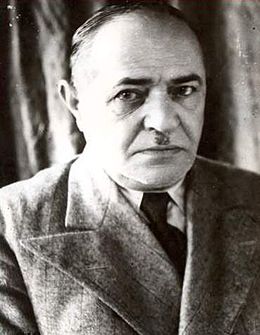
Zulfugar Abdulhuseyn oglu Hajibeyov (1884-1950) — composer, one of the founders of the Azerbaijan State Theater of Musical Comedy.
Zulfugar Hajibeyov is the author of the first Azerbaijani operetta — Young at Fifty Years Old (1910). The operetta is the first example of the comedy genre on the Azerbaijani stage. Both the text and the music are written by Zulfugar Hajibeyov. The first performance of the play took place in April 1911 at the Georgian Noble Theater in Tbilisi (Georgia). Later the operetta was performed in Baku, Nakhchivan, Yerevan, and Shusha. The works of Zulfugar Hajibeyov played an important role in the musical art of Azerbaijan. Folklore was used in the opera „Ashig Garib“, which brought a new trend to the work of Azerbaijani composers. In 1917, he also designed special costumes for the staging of an opera with a fantastic plot called „Three Lovers or Malikmammad.“ However, due to pressure from the Soviet government, the play was not staged.
„Village girl“, „Shepherd girl“ and „Soldier’s song“, which became popular in the first quarter of the XX century, are the first songs of the composer. The role of Zulfugar Hajibeyov in the formation of Azerbaijani classical music is also great.
In 1932, he composed a symphonic play entitled „Dance of Slave Women.“ In addition, Zulfugar Hajibeyov created several cantatas. In 1935, together with his son Niyazi, he wrote music for the first Azerbaijani sound film based on the play of the same name by Jafar Jabbarli — „Almaz“. Zulfugar Hajibeyov’s last work was a cantata written in 1950 with Zakir Bagirov.
GREAT MUSIC FIGURES — MUGHAM TRIADS
.jpg)
Mirza Asad oglu Sadig (1846–1902) or Sadigjan — musician, tar player, composer, and artist who perfected Azerbaijani tar.
Like all the people of Shusha, Sadig tries himself in the performance of folk songs and mughams from an early age. The point is that during the condolences in Muharram since singing lamentations was considered a good deed, poor families who could not invite well-known singers to their homes, taught their children to sing from an early age. There were even special music festivals and schools in Shusha for this purpose. Almost all famous singers and musicians took students and taught them. Many of the graduates of these assemblies and schools later became famous throughout the East, gaining respect at weddings, concerts, and folk festivals.
Sadigjan is one of the most famous tar players in Azerbaijan. Sadikjan perfected the tar and expanded the possibilities of virtuoso playing in this instrument. He added jingana (two pairs of strings) and root strings, increasing the number of strings from 5 to 11. He also completely changed the system of grip on the neck of tar, reducing their number from 27-28 to 22. Sadigjan introduced important innovations in Azerbaijani mugham, improved „Segah“ and „Mirza Huseyn Segahi“ and improved „Mahur“ mugham. The origin of „Mahur-Hindi“, „Orta Mahur“, „Zabul Segah“, „Kharij Segah“, „Mirza Huseyn Segahi“, „Etim Segah“, „Choban Bayati“ in Azerbaijani mugham is connected with Sadigja’s creativity and Azerbaijani history.
In the 1890s, an ensemble was formed in Shusha under the leadership of Sadigjan. The ensemble included well-known singers and musicians of that time. Well-known students of the style — Gurban Pirimov, Mashadi Jamil Amirov, Mashadi Zeynal Hagverdiyev, Shirin Akhundov, Mardi Janibeyov, Hamid Malibeyli, and others.
Jabbar Ismayil oglu Qaryagdioglu (1861–1944) — khananda (singer), composer, musician.
.jpg)
Jabbar Qaryagdioglu grew up in the second half of the 19th century and is one of the most prominent singers in the history of Azerbaijani music. A new stage in the art of Azerbaijani singing is associated with his name. Jabbar Qaryagdioglu took mugham lessons at Harrat Gulu’s school in Shusha. At the same time, the rich musical environment of Shusha played an exceptional role in the development of Jabbar. The Russian poet S. Yesenin called him „the prophet of Eastern music“. Jabbar, who was very popular in Karabakh, Ganja, Shirvan, and Baku, was also known in the Caucasus, Central Asia, and Iran. Jabbar Qaryagdioglu was the first singer in the history of music that perform mugham from the theater and concert stage. Thus, Jabbar Qaryagdioglu played the role of Majnun in the musical stage „Majnun at Leili’s grave“ staged in Shusha in 1897 under the direction of prominent writer-dramatist Abdurrahim bey Hagverdiyev. He was also an active participant in the „Oriental Concerts“. Jabbar performed in Shusha with a group of musicians by Mirza Sadig Asad oglu, in 1900-1905 in Baku with tar player Mirza Jafar and kamancha player Mashadi Gulu. In 1905, he formed a trio of tar player Gurban Pirimov and kamancha player Sasha Oganezashvili. The trio has been active for more than 20 years. During 1906-1912, Jabbar Qaryagdioglu’s voice was recorded on a gramophone in Kyiv, Moscow, and Warsaw by „Sport-Record“, „Extafone“ and „Gramophone“ joint-stock companies. These are the first records in the history of Eastern music. On his return from Warsaw in 1912, he gave „Oriental Concerts“ in Moscow. J.Garyaghdioglu performed all classical mughams and many tasnifs with great skill. In particular, his „Heyrati“, „Mansuriyya“ zarbi mughams, „Mahur“, „Shahnaz“ mughams are unique examples in our musical history. Jabbar knew classical poetry perfectly. Unlike his predecessors, Jabbar for the first time in the art of singing sings ghazals in the Azerbaijani language in mughams and tasnifs. He performed ghazals of Fuzuli, Gasim bey Zakir, Seyid Azim Shirvani, Khurshidbanu Natavan, and other Azerbaijani poets at concerts and gatherings. It was by singing ghazals and poems in his native language that he spread mugham among the people. Jabbar was also known as a composer and poet. Among the classifications created by him are „Istekanin deshilsin“, „Tiflisin yollari“, „Iravanda khal galmadi“, „Nakhchivan gediyinden asheydim“ and others. About 300 songs and tasnifs performed by him were recorded in the Scientific-Research Cabinet of Folk Music headed by Bulbul at the Azerbaijan State Conservatory, many songs and tasnifs were transcribed and published by U.Hajibeyov, M.Magomayev, S.Rustamov.

Kechachioglu Mohammad (Mohammad Mashadi Khalil oglu) (1864-1940) — Khananda.
He learned the art of singing at the school of Harrat Gulu in Shusha and from the famous singer Mashadi Isi. Along with other prominent representatives of the Karabakh school, he developed the art of mugham in his work and spread the fame of Azerbaijani mugham everywhere. His repertoire included classical mughams, tasnifs, and folk songs. The singer, who has a wide range, strong and ringing voice, skillfully sang all mugham dasgahs and zarbi mughams. Kechachioglu Mohammad was a singer who was demanding of his art and always worked tirelessly on himself. With his mugham s such as „Zaminkhara“ and „Humayun“, he was able to captivate the audience and amaze them with his unique performance.
Kechachioglu Mohammad sang classical mughams, as well as „Nava“, „Mahur“, „Bayati-Gajar“ mugham in an original way, with its peculiarities. At the same time, he was especially known as a propagandist of zarbi mughams. The singer also won the sympathy of the people with his performances at Oriental concerts. It was especially popular for him to sing scenes with Jabbar Qaryagdioglu from Fuzuli’s poem „Leyli and Majnun“ as a duet.
His tours should also be noted. Along with singing, he was also engaged in pedagogical activities. Kechachioglu Mohammad devoted all his energy and knowledge to the development of our music culture. In 1926, on the initiative of Uzeyir Hajibeyov, Kechechioglu Mohammad was invited to the Azerbaijan State Conservatory. He brought up many Azerbaijani singers here.
Mashadi Mammad Farzaliyev (1872-1962) — Khananda from Karabakh.
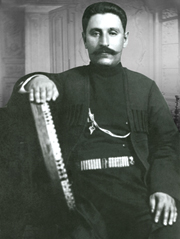
From a very young age, he lived and sang in Ganja, and later in Tbilisi, Batumi, Vladikavkaz, Istanbul, and other cities. He was known as a prominent artist in the Caucasus, Central Asia, Turkey, and even many European countries. While in Shusha, Mashadi Mammad performed at weddings and folk festivals. For the first time, he had great success at the Oriental concert at the Khandamirov’s theater in Shusha.
„Bayati-Kurd“, „Rast“, „Shur“, „Chahargah“, „Zabul-Segah“, „Kurdu Shahnaz“, „Heyrati“, „Mansuriyya“, „Simayi-shams“, „Karabakh Shikestasi“ sung by Mashadi Mammad , „Arazbari“, „Kerami“, „Afshari“ and other mughams were met with great sympathy by the public. Mashadi Mammad was also more famous as a master of „Shushtar“.
Mashadi Mammad Farzaliyev received an invitation in 1912 from the Sport-Record company operating in Warsaw. The voice of the Azerbaijani singer is recorded in Warsaw. Accompanied by tar player Gurban Pirimov, Mashadi Mammad sang about 40 mughams, tasnifs, and songs. After this success, another invitation came from Kyiv. The famous artist recorded mugham and folk songs on a gramophone record by the company „Extrafon“. Mashadi Mammad sang Natavan’s ghazals the most in his mughams and songs. Mashadi Mammad, known as a famous singer, was invited to Tbilisi (Georgia) in the spring of 1913 by the People’s House named after Zubalov. In 1926, Mashadi Mammad Farzaliyev gave concerts in many cities of Russia, Poland, Germany, France, Belgium, England, Austria, Romania, Turkey, and Iran.
.jpg)
Mashadi Jamil Amiraslan oglu Amirov (1875-1928) — tar player, composer, musician.
Although Mashadi Jamil showed great interest in tar from an early age, due to his financial situation, he was a tailor’s apprentice. He soon became famous as a tailor in Shusha and even opened a shop. One day, one of the wedding tar players in Shusha came to Mashadi Jamil and asked to sew a dress for him. In return, Mashadi Jamil asks the tar player to teach him to play a few songs on the tar, as a result, Mashadi Jamil connects his life with music. Mir Mohsun Nawwab’s musical meetings played an important role in his development as a musician. Mashadi Jamil accompanies Mashadi Mahammad Farzaliyev, Malibeyli Hamidi, Musa Shushinsky, and later Bulbulu and Seyid Shushinsky in Ganja assemblies.
In 1910, Mashadi Jamil was invited to the Gramophone Company in Riga with a group of musicians. Here he writes several mughams and folk songs. In 1911 he went to Istanbul, Turkey to study music. He has been living and studying in Istanbul for about two years. Mashadi Jamil was an active propagandist of Azerbaijani music in Turkey. For the first time, Turks see the tar playing on the chest in Mashadi Jamil. Turkish magazine „Shahbal“ publishes a large article about Mashadi Jamil and Azerbaijani music and a photo of him with tar.
Mashadi Jamil is also one of the first in the history of Azerbaijani music to record mughams. In 1912, he recorded „Heyrati“ mugham and published it in „Shahbal“ magazine. Returning to Ganja in 1913, Mashadi Jamil also brought a bow and oud. In 1915, after a long career, Mashadi Jamil wrote the opera „Seyfal-mulk“. After two performances in Ganja, he was invited to Tbilisi (Georgia) and on June 3, 1916, he was staged at the Kozyan Theater in Tbilisi (now the Georgian State Opera and Ballet Theater). After Tbilisi, the opera will be staged in Yerevan. After returning to Ganja, he wanted to open a music school in the city but was not allowed by Tsarist Russia. However, Mashadi Jamil opens a mugham course. Artists such as Seyid Shushinsky, Bulbul, Zulfu Adigozalov, Ali Javad oglu, Abdurrahman Farajov, and Musa Shushinsky benefit from this course. After the establishment of the USSR, Mashadi Jamil created a drama troupe in Ganja. In 1923, after a long struggle, Mashadi Jamil finally received permission to open a music school in Ganja, and in the first year, 39 students were admitted to the school. Mashadi Jamil’s son Fikret Amirov, Ganbar Huseynli, Telman Hajiyev, and others are students of this school. Mashadi Jamil Amirov wrote the operetta „Namuslu giz“ in 1923, and this work was successfully staged in Ganja.
Abdullayev Islam Abdul oglu (1876-1964) — Khananda.

He is one of the prominent representatives of the Karabakh mugham school. In the history of Azerbaijani music, Islam Abdullayev is known as a unique performer of „Segah“ mugham.
He was called „Segah Islam“ by the people due to his special enthusiasm and ability to perform „Segah“ mugham and all its variants — „Zabul-Segah“, „Mirza Hussein segahi“, „Orta Segah“, „Kharij Segah“. Islam Abdullayev studied at Shusha city school.
He studied mughams from musicologist Mir Mohsun Navvab, singer Haji Husu and many famous singers of Karabakh, he mastered the art of singing and began to perform accompanied by tar player Mirza Sadig Asad oglu. Islam Abdullayev became famous in Azerbaijan and abroad due to his beautiful and impressive voice and unique performance ability.
In 1910-1915, „Segah“, „Bayati-Gajar“, „Shahnaz“, „Shushtar“ mughams, and several tasnifs performed by Islam Abdullayev were recorded on gramophone records by „Sport-Record“ and „Extrafon“ recording companies.
Islam Abdullayev was a wonderful teacher. He played a great role in the development of singers such as Khan Shushinsky, Yagub Mammadov, Sahib Shukurov. Towards the end of his life, he moved to Aghdam, where he taught mugham at a music school and became a master of many singers.

Gurban Bakhshali oglu Pirimov (1880-1965) — the first People’s Artist of Azerbaijan, musician, tar player.
Gurban, who received the blessing of his teacher Sadigjan at the age of 15, accompanies famous singers at Karabakh weddings. At one such wedding, singer Islam Abdullayev saw Gurban playing the tar and took him on. In 1905, Gurban had a successful history. Because at one of the Ganja weddings, Jabbar Qaryagdioglu likes him to play the tar and, with the consent of Islam Abdullayev, brings the young man to Baku. Accompanied by famous singers, the tar player is most often associated with Khan Shushinsky.
Honored Artist of the Republic Firudin Alakbarov, who has been in contact with Gurban Primov for 30 years, has interesting memories of the tar player. He says that Uncle Gurban was an artist who knew our mughams deeply. When the Gurban uncle played the tar, a spark came out of his mizrab: „In his time, there were few microphones. But he never used a microphone. His loud music spread throughout the hall. As soon as he hit the strings, he forced everyone in the hall to listen to him.“
Yes, he had his musical features. These were his discoveries, the warmth of his heart. Those who know Pirimov remember that he was also very funny. He always jokingly told the tar players that when someone suddenly throws a stone at you on the way, quickly hide your hands. Protect only your hands. Gurban Primov was right. It was those hands that amazed us and created miracles. The music filtered by the magic of those hands could conquer everyone’s heart. Today, our masters continue the path of great artists and do not forget their predecessors. But in the words of Gurban Primov, „Learning is the key to being a master. But every master must have his fingers.“
Mirza Mansur Mashadi Malik oglu Mansurov (1887-1967) — tar player.

Mirza Mansur Mansurov took advantage of the Baku mugham meetings held at the house of his father Mashadi Malik Bey and decided to become a musician. The prominent tar player has been teaching mugham at the State Turkish Music School organized by Uzeyir Hajibeyov since 1920, and at the Azerbaijan State Conservatory in 1926-1946. At the initiative of Uzeyir Hajibeyov, he developed the first mugham curriculum for the tar class.
Young composers Tofig Guliyev and Zakir Bagirov first wrote musical notes for the mugham s „Rast“, „Duga“ and „Zabul“ performed by Mirza Mansur in the mid-1930s. In 1940, Mirza Mansur Mansurov was awarded the honorary title of Honored Art Worker of the Azerbaijan SSR.
As a creative musician, he also made some changes in the structure of the tar (joining the curtains, strengthening the tar ashugs, etc.). He even made a tar in the new structure. One of the two tars made by Mirza Mansur in a new format in 1934 is successfully demonstrated at the exhibition of art instruments in Paris and the other in Istanbul.
Mirza Mansur has raised a generation of talented musicians in Azerbaijan. Among them are Said Rustamov, Khurshid Agayeva, Anvar Mansurov (son of Mirza Mansur), Rashid Efendiyev, and others.
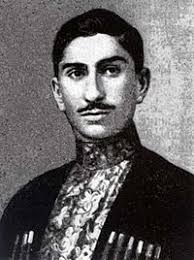
Seyid Shushinsky (1889-1965) — Azerbaijani khananda.
Seyid Shushinsky, who had a unique and beautiful voice, first studied with the Navvab for two years to master the secrets of the art of singing. His next teacher was Jabbar Qaryagdioglu. Seyid Shushinsky sang „Chahargah“, complex mugham, with great skill, and he always started it not from „maya“ but from „Mansuriyya“, he raised his voice and dis zangula’s with great skill, and then descend to the „maya.“ Interestingly, in the last years of his life, the 74-year-old Seyid sang „Mansuriyya“ with the same enthusiasm.
Along with the ghazals of Hafiz Shirazi, Mohammad Fuzuli, Seyid Azim Shirvani, Seyid Shushinsky also appealed to the poems of Huseyn Javid and Mirza Alakbar Sabir. Sabir’s poem „Millat neje taraj olur olsun, ne ishim var“ (No matter how much the nation was plundered, I don’t care) was performed in „Mukhalif“. Seyid Shushinsky was the first singer to recite poems and gazals on political and social topics, urging people to fight. He also sang a number of warlike songs. „Ayil ey millat“ (Wake up, nation), „Men bir Turkam“ (I am a Turk), „Millat istarsa“ (If the nation wants), and so on.
He was friends with such artists as Seyid Shushinsky, Mirza Jalil, Abdurrahim bey Hagverdiyev, Huseyn Javid, Huseyn Arablinsky. He provided financial support for the publication of several issues of Molla Nasreddin magazine. In general, Seyid Shushinsky was a great patron, he helped a lot of theater actors of that time, and he played several roles as an actor. Besides „Chahargah“, Seyid Shushinsky was a great performer of mughams such as „Mahur“, „Nava“, „Masnavi“, „Osmani“, „Arazbari“, „Heyrati“. As an innovative artist, he combined many mughams and sang them in a new version. („Rast-Humayun“, „Gatar-Bayati“, „Shur-Shahnaz“) Seyid Shushinsky performed „Dilkesh“ for the first time in „Rast“ and „Kurdi-Shahnaz“.
Seyid Shushinsky, as a consultant, provided great assistance in writing the symphonic mugham s „Shur“ and „Kurdi-Ovshari“, first created by our famous composer Fikret Amirov and gaining world fame.
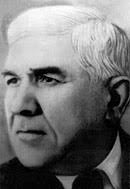
Ahmad Mammadrza oglu Bakikhanov (1892-1973) — tar player, pedagogue, musician.
Ahmadkhan Bakikhanov received his first education in Iran, where he mastered the secrets of tar playing and mugham from master tar players, and from 1920 he played and taught at music meetings and concerts in Baku. From the 1930s, at the invitation of Uzeyir Hajibeyov, he taught mugham at the ASC(Azerbaijan State Conservatory), and later at the ASMS(Azerbaijan State Music School). He was the organizer and leader of the ensemble of folk instruments at the Azerbaijan Radio. Since 1973, the ensemble has been named after Ahmad Bakikhanov. This ensemble accompanied many prominent singers — Jabbar Qaryagdioglu, Seyid Shushinsky, Huseyngulu Sarabski, Zulfu Adigozalov, and others. Tarzan A. Bakikhanov has a great contribution to the promotion of Azerbaijani folk music, especially mughams. He was a deep connoisseur of the art of mugham and was known as a skilled performer of „Nava-nishapur“ and „Abu-ata“ mughams. At the same time, many melodies and colors created by him are widespread in folk performances.
A. Bakikhanov is the author of such note publications as „Azerbaijan folk colors“ (1964), „Azerbaijan rhythmic mughams“ (1968), „Mugham , song, color“ (1975). These collections are a valuable tool for teaching and researching folk music. His mugham program for music schools is still used in tar teaching.
A. Bakikhanov devoted most of his life to the education of musicians: Habib Bayramov, Ahsan Dadashov, Sarvar Ibrahimov, Aliaga Guliyev, Alikram Huseynov were his students. He was a mugham teacher of many composers (Arif Malikov, Haji Khanmammadov, Nariman Mammadov, etc.). Iranian musicians Ali Salimi and Adil Akhundzadeh were his students.

Zulfu Samad oglu Adigozalov (1898-1963) — Khananda, mugham connoisseur, commentator, and propagandist of tasnifs and folk songs.
Jabbar Qaryagdioglu, who listened to Zulfu Adigozalov’s performance at a mugham evening in Shusha, invited him to Baku. In 1927 he moved to Baku and passed the exam of U. Hajibeyov, G. Pirimov, M. Magomayev, and others to work in the „House of Defense“ (now the Philharmonic), at the same time he worked in the Radio Broadcasting Committee.
Zulfu Adigozalov was a bass singer. He created a unique school of singing in the full bass and middle tessitura of the mugham. Well-known singers Abulfat Aliyev, Sahib Shukurov, Hajibaba Huseynov, Alibaba Mammadov, Yildirim Hasanov, Agakhan Abdullayev, Talat Gasimov, and others are followers of his school.
„Rast“, „Mahur-Hindi“, „Segah-Zabul“, „Bayati-Shiraz“, „Humayun“ mughams also several tasnifs, „Nabi“, „Men Gedirem Zangilana“( I’m going to Zangilan), „Dedim bir buse ver“( I said kiss me), „Keklik“( Partridge) and so on performed by the singer and recorded on tape and gramophone records. Such folk songs are the pearls of the Azerbaijani musical treasury. It was during the performance of our ancient classical mugham s, tasnifs, and folk songs that the singer introduced innovations in the art of performing with his unique breath and style while retaining their traditional form and structure.
Zulfu Adigozalov independently interpreted mugham as a micro-series, combining separate relevant sections. From this point of view, good examples are the mugham s „Iraq-Punjab“, „Hasar-opposition“, „Vilayati-Dilkesh“.

Khan Shushinsky (Isfandiyar Aslan oglu Javanshir) (1901-1979) — Khananda.
When he was 16 years old, his teacher named him „Khan Shushinsky“ because he performed the „Kurd-Shahnaz“ mugham amazingly — through the way of Tabriz singer Abdulhasan khan. Jabbar Qaryagdioglu and Seyid Shushinsky also had a great influence on khan’s upbringing as a singer.
In the 1920s, Khan Shushinsky came to Baku and expanded his performing activities. Along with „Mahur-Hindi“, „Bayati-Gajar“, „Gatar“ mughams, „Karabakh Shikestasi“, „Arazbari“, „Heyrati“ zarbi mughams, folk songs, and tasnifs took a big place in the khan’s repertoire. Khan Shushinsky sang folk songs with special enthusiasm, instilling new shades in them.
In 1934, Khan Shushinsky achieved great success at the first Transcaucasian Art Olympiad in Tbilisi (Georgia) and received the first prize. He also represented Azerbaijani musical culture at a high level and worthily in other countries.
He also taught at the Azerbaijan State Music School and created a new generation of mugham singers. As a truly creative artist, Khan enriched the treasury of national music with new songs. From this point of view, his songs „Gamarim“, „Shushanin daglari“(Shusha’s mountains) were memorized. Khan Shushinsky also addressed the composer’s songs in his work. In this sense, he was the first singer of Uzeyir Hajibeyov’s song „Gara goz“ (Black eyes) and sang it with great pleasure. In 1960, he established the „Mugham Studio“ under the auspices of the Azerbaijan State Philharmonic, where he taught young singers the secrets of mugham.
Yavar Abbas gizi Kalantarli (1902-1979) — Khananda.

Everyone in their generation loved mugham and music. But little, sweet, lovely Yavar was told, „A girl should not sing.“ So he ran to the coal roof and sang there until his heart was empty. The doctor who examined her when she was a famous singer was surprised: „There is a strange harmony in your voice as if you were working in a coal mine.“ Yavar’s relatives tried their best to keep her away from art and the stage. But one day her pleasant voice attracted the attention of composer Uzeyir Hajibeyov. They could not object to the composer’s proposal. Yaver completed a one-year music course in 1922.
She saw the stage and loved to sing, and then she got married. After marriage, she was sure that her dream of a stage and her desire to sing came to an end. On November 5, 1924, Yaver sang „Mahur-Hindi“ mugham at the event dedicated to the 5th anniversary of the Soviet power in the two-story building of the House of Education. She was accompanied by Badalbey Badalbeyli on tar and Jamo Jabrayilbeyli on violin. After that, Uzeyir Hajibeyov advised her to go to the mugham circle. Yaver Kalantarli took lessons from famous singers Jabbar Qaryagdioglu and Seyid Shushinsky. However, all this led to her divorce from her husband of 18 years. Even after losing her only child, she did not appear on the stage. At Hajibeyli’s insistence, she returns to the stage.
She was a soloist of the Azerbaijan Radio and the Azerbaijan State Opera and Ballet Theater.
She performed parties from Leyli, Leyli’s mother („Leyli and Majnun“, Uzeyir Hajibeyov), Asli („Asli and Karam“, Uzeyir Hajibeyov), Arabzangi („Shah Ismail“, Muslim Magomayev).

Mansurov Bahram Mashadi Suleyman bey oglu Mansurov (1911-1985) — musician, prominent tar player.
Bahram Mansurov has witnessed music festivals organized at home since childhood. Mugham connoisseurs, musicians, and singers from all over Azerbaijan would gather at these gatherings. Not only prominent musicians benefited from these meetings, but also our famous poets and writers such as Seyid Azim, Khurshudbanu Natavan, Abdurrahim bey Hagverdiyev were in close contact with it and wrote poems in this honor. These assemblies have served as a kind of „people’s conservatory“ since 1863. This music center later became a school of life for many. There was a lot of tar in their house. As soon as his father left the house, little Bahram immediately took one of the tar hanging from the wall and played on it, unconsciously unrooting it and hung it on the wall. Mashadi Suleiman, who saw Bahram’s passion for tar and music, always said to him: „I feel that you will suddenly play the tar. You don’t need to be taught.“ Indeed, from the age of eight, Bahram pressed tar to his chest and tuned his childhood dreams in the fragile strings of tar.
When Bahram Mansurov was 19 years old, Muslim Magomayev invited him to the first orchestra of folk instruments, and then to the Opera and Ballet Theater as a soloist. Bahram Mansurov works on the opera stage with such luminaries as Huseyngulu Sarabski, Yaver Kalantarli, Huseynaga Hajibababayov, Alovsat Sadigov, Hagigat Rzayeva. Rubaba Muradova, Sara Gadimova, Abulfat Aliyev, Gulkhar Hasanova, Zeynab Khanlarova, Mais Salmanov, Bakir Hashimov, Gulu Asgarov, Arif Babayev, Nazakat Mammadova, Baba Mirzayev and others. he attracts these artists to the theater and prepares them for performances. Throughout his career, Bahram Mansurov has accompanied many leading singers — Jabbar Qaryagdioglu, Seyid Shushinsky, Zulfu Adigozalov, Khan Shushinsky, Hajibaba Huseynov, and others with his tar at concerts. He is the first Azerbaijani musician to perform Azerbaijani mughams on a gramophone record and CDs through UNESCO and disseminated them all over the world. He represented Azerbaijan at the International Mugham Symposium held in Samarkand in 1978 and 1983. After Sadigjan, Bahram Mansurov was the only tar player who preserved and promoted classical Azerbaijani mughams. All mughams, daramad, diringa, tasnif and ranglar oglu from his performance were recorded by his son, composer Eldar Mansurov.
Hajibaba Huseynali oglu Huseynov (1919-1993) — Khananda.
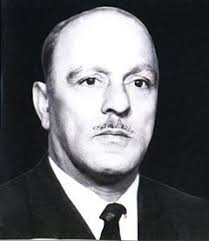
He grew up in a clergyman family. At an early age, he used to sing in mosques and mourning ceremonies. Hajibaba Huseynov, who received a record of singer Zulfu Adigozalov in 1938, repeats what Zulfu sings and imitates it. After the end of the war in 1945, Sara Gadimova, a well-known singer at the time and also Hajibaba Huseynov’s sister-in-law, introduced Hajibaba Huseynov to Ahmad Bakikhanov, a prominent pedagogue and tar player. Ahmad Bakikhanov employs young Hajibaba in his ensemble. Hajibaba worked in that ensemble for three years. Due to his strong memory, he mastered the samples of religious music and mughams he heard and began to write ghazals, mastering the rules of aruz. At that time, Hajibaba Huseynov learned the subtleties of mugham from the singers, musicians, and Ahmad Bakikhanov who performed with the ensemble, and until the end of his life, he considered Ahmad Bakikhanov as his main master. Although his vocal range was not so wide, his timbre was impressive and pleasant. The singer’s diligence and ability to combine poetry and mugham with high artistic taste, which he gained as a result of his hard work and search for art, was highly appreciated by mugham connoisseurs and music lovers.
After the death of Zulfu Adigozalov in 1963, Ahmad Bakikhanov invited Hajibaba Huseynov to teach mugham at the Azerbaijan State Music School. Until the end of his life, Hajibaba Huseynov taught at that school for 30 years and trained singers. Among the students of the singer we have prominent artists — Nazakat Mammadova, Gadir Rustamov, Sakhavat Mammadov, Zaur Rzayev, Teymur Mustafayev, Agil Malikov, Safar Mirzayev, Sabir Aliyev, Bilal Aliyev, Zabit Nabizade, Sahib Ibrahimov and others. Although our prominent artists Agakhan Abdullayev, Mammadbagir Bagirzade, and Alim Gasimov were not direct students of Hajibaba Huseynov, they benefited from his performance and represented the school that he founded. Numerous tasnifs created by Hajibaba Huseynov have entered the musical heritage and are widespread in mugham performance.
Elman Karim oglu Badalov (1929-1991) — kamancha player.

He was engaged in music from a young age and played the tar and kamacha.
He performed in the spectacles and concerts of the Aghdam State Drama Theater, was a laureate of the II Festival of Azerbaijani Youth (1957). In addition, he studied physics and mathematics at the Aghdam Pedagogical School and worked as a teacher (1947-1951). He received professional music education at the Azerbaijan State Music School (1957-1961) and the Azerbaijan State Conservatory (1975-1980).
From 1958 until the end of his life he was a soloist of the Orchestra of Folk Instruments named after S. Rustamov (Azerbaijan Television and Radio Broadcasting CJSC) and accompanist of the kamancha ensemble. Elman Badalov performed with concerts as a soloist and in mugham triads, toured in many countries (Turkey, Japan, Denmark, Sweden, Norway, etc.), and performed at international music festivals.
On kamancha he played Bayati-Shiraz, Dilkesh, Shushtar and, etc. He skillfully performed mughams and works of composers.
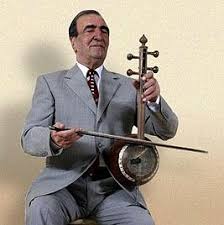
Habil Mustafa oglu Aliyev (1927-2015) — kamancha player.
At the age of seven, he was admitted to the seven-year Aghdash Music School No 3 in the district center. He has been in love with the kamancha ever since. After graduating from the seventh grade and music school, he entered the pedagogical school. Habil Aliyev came to Baku in 1952 and entered the kamancha department of the secondary music school named after Asaf Zeynalli. He began to learn the secrets of the art of mugham from the famous tar player Gurban Pirimov and the famous singer Khan Shushinsky. Gabil’s performance attracted the attention of the composer Soltan Hajibeyov. Considering Habil’s potential, the composer advised him to work in the Philharmonic. Habil Aliyev began his career in 1953 at the Azerbaijan State Philharmonic named after Muslim Magomayev, first as an accompanist in a dance ensemble, and then as a kamancha player in a trio. Habil Aliyev, who accompanies concerts of artists such as Seyid Shushinsky, Hagigat Rzayeva, Khan Shushinsky, Zulfu Adigozalov, Mutallim Mutallimov, Shovkat Alakbarova, Sara Gadimova, Fatma Mehraliyeva, takes advantage of their immortal heritage, works harder, and does not get tired of training for hours. Habil gave new kamancha life to „Segah“, „Bayati-Gajar“, „Bastanigar“, „Bayati-Shiraz“, „Rahab“, „Bayati-Kurd“, „Jahargah“, „Rast“, „Zabul“ mughams. Habil Aliyev has toured in the former Soviet republics, as well as in many countries around the world, including Turkey, America, Germany, England, France, India, Pakistan, Iran, Egypt, Switzerland, the Netherlands, Tunisia, Japan, Syria, Mozambique, and others.
The master performer not only performs music masterly but is also the author of beautiful songs. More than 15 songs written by him are still sung by famous musicians. Gabil Aliyev’s compact discs with Azerbaijani mughams and folk songs have also been released in the USA, France, Japan, Italy, and Greece.
Alibaba Balaahmed oglu Mammadov (1930) — Azerbaijani khananda, composer.
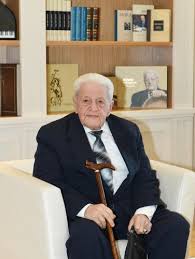
The unique mugham atmosphere of Baku and Absheron villages played an important role in Alibaba Mammadov’s upbringing as a singer. Alibaba Mammadov received his musical education in 1953-1958 at the Azerbaijan State Music School in the class of singer Seyid Shushinsky.
From 1945 he was a soloist of the Azerbaijan State Philharmonic, from 1978 to 1988 he was a soloist of „Azkonsert Birligi“. In 1968, at the initiative of maestro Niyazi, he founded the Humayun Folk Instrument Ensemble at the Azerbaijan State Philharmonic and still leads it. Alibaba Mammadov has benefited from prominent Azerbaijani singers and is known as a master singer who opened his way in the art of mugham.
Recordings of „Rast“, „Bayati Shiraz“, „Rahab“, „Dashti“ and other mughams performed by him with great skill are kept in the AzTV Foundation. Alibaba Mammadov has created more than 100 songs and tasnifs, which are included in the repertoire of singers.
„Yasha mehebbetim, yasha ureyim“(Long live my love, long live my heart), „Gel bize, yar“( Come to us, my love), „Bir denesen“( You are one of a kind) and, etc. These songs, written in the words of Azerbaijani poets such as Fuzuli, Vahid, Mikayil Mushvig, Suleyman Rustam, Bakhtiyar Vahabzade, are preserved in the tape recordings of many prominent singers at the AzTV Foundation. Alibaba Mammadov has been teaching mugham at the Baku Music College since 1963 and has worked hard to raise a generation of young singers. Alibaba Mammadov has also repeatedly been a member of the jury in mugham competitions.
Arif Babayev (1938) — Khananda, professor.
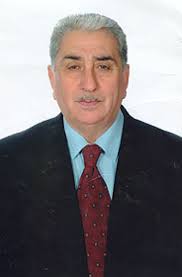
He graduated from the Azerbaijan State Institute of Culture and Arts (1962). He worked at the Azerbaijan State Philharmonic (1963-1966), the Azerbaijan State Opera and Ballet Theater (1966).
He created a unique style of performance based on the traditions of artists such as Seyid Shushinsky, Khan Shushinsky, Zulfi Adigozalov. Starting from 1960, Arif Babayev’s creative path was connected with Baku. He studied at the Azerbaijan State University of Culture and Arts. Arif Babayev was first invited to the Azerbaijan State Philharmonic and then to the Azerbaijan State Opera and Ballet Theater as a soloist, created memorable images on the stage of this theater in the mugham operas such as Majnun, Karam (U. Hajibeyov — „Leyli-Majnun“, „Asli and Karam“), Ashig Garib (Z. Hajibeyov — „Ashig Garib“), Jamal (Sh. Akhundova — „Gelin Gayasi“). All mugham performances by Arif Babayev were recorded and entered the AzTR Foundation.
In 1982, he began working as the first mugham teacher at the Bulbul Secondary Music School. Then, in 1984, he was hired as the first mugham teacher at the Azerbaijan State Conservatory.
In 1990, he became a mugham professor for the first time in history. The singer was awarded the People’s Artist (1988), Professor (1996), „Glory“ (1998), and „Independence“ (2008), „Honor“ (2018) orders. Arif Babayev is one of the prominent representatives of the Karabakh school of singing in the second half of the 20th century.
„Shur“, „Seygah“ mugham dastgahs, „Arazbari“, „Karabakh shikestasi“ zarbi mughams have a special place in his work. In particular, Arif Babayev sang „Segah“ mugham in a unique style. The singer is also very popular as a performer of tasnifs and folk songs.

Janali Khanali oglu Akbarov (1940) — Khananda, actor.
Janali Akbarov learned the secrets of mugham from his father. Janali Akbarov studied music at the Azerbaijan State Music School in Baku. He learns the rules of singing mugham from his teachers Seyid Shushinsky and Khan Shushinsky and improves his performing skills.
Janali Akbarov has been a soloist of the Azerbaijan State Philharmonic since 1965, and of the Azerbaijan State Opera and Ballet Theater since 1976.
The singer has several memorable characters in mugham operas: Majnun and Ibn-Salam (U.Hajibeyov — „Leyli and Majnun“), Shah Ismayil (M.Magomayev — „Shah Ismayil“), Ashig Garib (Z.Hajibeyov — „Ashig Garib „). Janali Akbarov has repeatedly toured abroad — Germany, Mali, Austria, and others.
He achieved great success at the Oriental Music Symposium in Samarkand and the Oriental Music Festival in Kuybishev. All mughams performed by Janali Akbarov were recorded. Janali Akbarov is currently raising a generation of young singers as a mugham teacher. He is the head of the „Mugham Art“ department at the Azerbaijan State University of Culture and Arts.
In 2002 he was awarded the Order of Glory. Janali Akbarov died on October 22, 2021. The master artist was buried in the Second Alley of Honor.

Agakhan Minakhan oglu Abdullayev (1950-2016) — Khananda.
In 1973, he was invited to work as a mugham teacher at the Abilov House of Culture. From 1977 he worked as a mugham teacher at the music school named after A.Zeynalli.
He started performing on the stage of the Philharmonic in 1975. He has given concerts in many countries such as Russia, Kazakhstan, Georgia, Uzbekistan, USA, Canada, Germany, Netherlands, Sweden, Belgium, Austria, France, Australia, India, Iraq, Tunisia, Turkey, Iran, and others.
In 1992 he was awarded the title of Honored Artist of the Republic of Azerbaijan, in 1998 he was awarded the title of People’s Artist of the Republic of Azerbaijan. He was a presidential pensioner.
In 2000, he was awarded the Honorary Decree of the Collegium of the Ministry of Education of the Republic of Azerbaijan, In 2001, he was awarded the Simurg National Award Fund of the Republic of Azerbaijan, in 2002, the Humay National Award, and in 2003, the Long Live Azerbaijan Award.
On May 10, 2015, he was awarded the Heydar Aliyev Foundation’s Golden Plane International Prize.
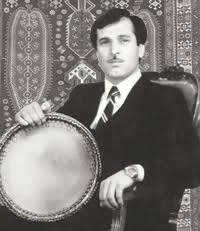
Sakhavat Amirkhan oglu Mammadov (1953-1991) — Khananda.
Sahavat’s voice sounded beautifully in Segah, and his soul was attached to Segah. Most of the songs he sang are in the taste of „Segah“. „Ay Beri Bakh“ (Look at me), „Uja Daglar“( High Mountains), „Yar Bize Gonaq Gelecek“ ( The Lover Will Visit Us), „Ay Çiçek“ (Flower), „Sarı Bulbul“ ( Yellow Nightingale), „Kulek“ (Wind) and, etc.
Entering the Music College named after Asaf Zeynalli in 1971, Sakhavat learned the secrets of mugham from the master singer, „People’s Artist“ Hajibaba Huseynov. In 1976, he became a soloist of the folk ensemble „Humayun“. Sakhavat Mammadov, who studied at the State Institute of Arts in 1983-88, represents Azerbaijani mugham in many countries. The instrumental ensemble „Karabakh“ created by him still lives as one of the masterpieces of the singer.
The Karabakh instrumental ensemble was formed in the first years of the Karabakh events. With „Karabakh“, Sakhavat traveled not only in Karabakh but also in the USSR and European countries, conveying the realities of Azerbaijan to the world along with our mugham.
Sakhavat Mammadov had a unique voice. The singer died in a car accident on September 30, 1991. Due to the war, the tombstone ordered to be placed on Sakhavat Mammadov’s grave in Baku could not be delivered because of the heavy fighting in the village. Then the village was occupied. The headstone with Sakhavat Mammadov’s picture, date of birth, and death engraved on it remained in the yard of his house in Baku.

Alim Hamza oglu Gasimov (1957) — Khananda and actor.
He took mugham lessons at the Baku Music School named after Asaf Zeynalli in 1978-1982 and at the Azerbaijan State Institute of Arts in 1983-1989.
He made his first appearance on Azerbaijan Television in 1979. In 1980, he participated in the 22nd Olympic Games in Moscow. In 1982, he won the first Republican mugham competition. In 1983 he joined the International Music Symposium in Samarkand. In 1989, he gave concerts and participated in festivals in Moscow, Paris, Monet, Cologne, Bochum, West Berlin, Fragsburg, Basel, Geneva, Lie, Amsterdam. Since 1991 he has been a member of the Municipal Theater of Paris — „DE-LE-Ville“.
In 2000, his „Love’s Deep Ocean“ disc ranked ninth on the European World Music Map and was played on the radio in 47 European countries. In 2000, he was elected a member of the European Assembly of Rare Voices.
He currently works at the Asaf Zeynalli Music School and the Baku Music Academy. He is a soloist of the Azerbaijan State Opera and Ballet Theater.
In 2009, Alim Gasimov was one of four Azerbaijanis among the world’s 500 most influential Muslims in a competition held by Georgetown University in the United States and the Center for Strategic Studies in central Jordan.
On May 26, 2012, Alim Gasimov shared one stage with Sabina Babayeva from Azerbaijan in the final of the 57th Eurovision Song Contest in Baku. In 2015, the opening ceremony of the European Games began with a live mugam performance by Alim Gasimov.
GREAT MUSIC FIGURES — SINGERS

Huseyngulu Malik oglu Rzayev (Huseyngulu Sarabski) (1879-1945) — Azerbaijani opera singer (lyric tenor), actor, director, pedagogue, theater figure.
From childhood, he was distinguished by a great passion for music and a good voice.
As he wrote in his memoirs, „During the Period of Muharram, he sings religious songs, also listens and studies mughams and songs at festivities, weddings and celebrations“. When he was 12 years old, he saw a theatrical performance for the first time: it was Mirza Fatali Akhundov’s comedy „Adventure-Vaziri-Khani-Lankaran“ performed by amateurs under the name „Khan Sarabi“. Huseyngulu, whose real surname was Rzayev, later took the stage nickname Sarabski, which echoed this strong impression.
Huseyngulu Sarabski came to the theater at a difficult time. He tried to withstand the criticism and sometimes threats of those who considered the theater a „satanic act“ and acting a „profession unsuitable for a man.“ Nariman Narimanov, Abdurrahim bey Hagverdiyev, Rahim bey Malikov, his colleagues Huseyn Arablinsky, Jahangir Zeynalov, and others played a great role in the arrival of Huseyngulu Sarabski to the theater, in his choice and development of acting. Huseyngulu, who first played the role of Rasul in Nariman Narimanov’s play „The Trouble of the Tounge (to get into trouble for talking too much)“ in 1902, later played several different roles in the plays of Mirza Fatali Akhundov, Najaf bey Vazirov, Abdurrahim bey Hagverdiyev. He performed not only in the national repertoire but also in the works of William Shakespeare, Heine, Schiller, Gogol, translated into Azerbaijani. The impressive mugam „Hijaz“, which he performed as an Arab traveler in the play „Almansur“ by Heinrich Heine, transported him to the new world of Azerbaijani culture – musical theater, opera. Sarabski attracted the attention of Uzeyir Hajibeyov, who was working on the first opera of Azerbaijan and the East at that time, „Leyli and Majnun“. Uzeyir Hajibeyov, realizing the natural and lively potential of Huseyngulu Sarabski as an opera artist with an attractive voice and knowledge of mughams, invited him to play the lead role in his opera – the role of Majnun. This role brought Huseyngulu Sarabsky, in the true sense of the word, national love and fame. This role was, perhaps, a turning point in the attitude of those who consider acting a „clownery“. As the actor himself wrote, „those who pointed at him in time, looked at him with contempt, now called him Majnun, applauded and greeted him with respect.“ For more than 30 years on stage, he played this role 400 times, he becomes known as the irreplaceable Majnun of the Azerbaijani scene.
Huseyngulu Sarabski in the history of national opera, in Uzeyir Hajibeyov’s operas and operettas Karam („Asli and Karam“), Sheikh Sanan („Sheikh Sanan“), Shah Abbas („Shah Abbas and Khurshidbanu“), Sohrab („Rustam and Sohrab“), Sarvar („If Not That One, Then This One“), Marjan bey („Husband and wife“), Asgar („Arshin mal alan“), Shah Ismail in „Shah Ismayil“ by Muslim Magomayev, Ashig Garib in Zulfugar Hajibeyov’s „Ashig Garib“ wrote his name in history as the first performer of these roles.
Khurshid Gajar (1894-1963) — opera singer, one of the first Azerbaijani women to receive vocal education outside Azerbaijan.

Honored Art Worker of the Republic of Azerbaijan received his vocal education in 1915 at the Moscow Conservatory. After graduating, he worked in the art department of the People’s Commissariat of Education in Moscow, was a soloist of the Moscow Variety Ensemble. In 1924-34 he worked at the Azerbaijan Opera and Ballet Theater, played in performances such as Gulzar („Shah Ismail“, M.Magomayev), Khurshidbanu, Gulchohra and Asya, Gulnaz („Shah Abbas and Khurshidbanu“, „Arshin mal alan“, “ If Not That One, Then This One “ U.Hajibeyov), Mikaela (“ Carmen „, J.Bize) and others.
Since 1934, she worked in „Azerneshr“ as the director of the music publishing house she created on her own initiative, at the same time, in 1935, she created a studio at the Azerbaijan Opera and Ballet Theater prepared operas „Demon“ (A.Rubinstein), „Tsar’s Bride“ (N.Rimsky-Korsakov) performed by students. She played a role in recording mugams such as Duga, Rast, Segah-Zabul.
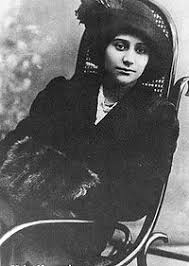
Shovkat Hasan gizi Mammadova (1897-1981) — The first professional Azerbaijani female singer (lyrical coloratura soprano), Azerbaijani opera singer, and teacher.
Sensing Shovkat’s desire for music, her father sent her to Baku in 1910 with the help of millionaire HZ Tagiyev. In 1911, with the help of Zeynalabdin Tagiyev and his wife Sona, she entered a music school in Milan, Italy. However, in 1912, her aid was cut off and Mammadova had to return to Russia. She continues her education at the Tbilisi Music School. After graduating from a music school in Tbilisi (1910), in 1911 she left for Milan to continue her education, where she took lessons from the famous singer D’Ambrosio. In 1917-21 she studied at the Kyiv Conservatory, where she promoted Azerbaijani music in concerts with R.Glier. On her initiative, the Baku Theater Technical School was opened in 1923, and a music publishing house was established. She first performed on the stage of the Azerbaijan Opera and Ballet Theater in 1921 as Violetta („La Traviata“, J.Verdi), and was a soloist of the theater until 1948 (intermittently). On the Azerbaijani opera stage, she connected the best traditions of Russian and world vocal art with the features of national music. She was twice awarded the Order of Lenin, 2 Red Banners of Labor, and the Order of the Badge of Honor.
Since 1921, she has performed in Russia, France, Italy, Iran, and Georgia. During her visit to Italy, she re-entered the Milan Music School, where she completed her unfinished education in 1912, in 1927–1930. Later, she performed at the Azerbaijan State Academic Opera and Ballet Theater. In 1923, she established the first music publishing house in Azerbaijan and the Baku Higher Theater School (now The Azerbaijan State University of Culture and Fine Arts). She also gave professional vocal lessons to students at the Azerbaijan State Conservatory until her last days.
In 1923, at the initiative of Sh. Mammadova, the Baku Theater Technical School was opened, and in 1923-1925 she worked as its director and director of the music publishing house.
Main parties: Rosina („The Barber of Seville“, G.Rossini), Lakme („Lakme“, L.Delibes), Gilda („Rigoletto“, G.Verdi), Olympia („Hoffman’s Tales“, J.Offenbach), Marguerite de Valois („Les Hugenots“, G.Meyerbeer), Snow Maiden („Snow Maiden“, N. Rimsky-Korsakov), Antonida („Ivan Susanin“, M.Glinka), etc. The parties Shahsanam („Shahsanam“, R.Gliere), Nargiz, Gulzar („Nargiz“, „Shah Ismayil“, M.Magomayev), Gulchohra („Arshin mal alan“, U.Hajibeyov) have a special place among her work. Her repertoire included Azerbaijani folk songs, chamber and vocal works by Russian and Western composers. She has performed in Tbilisi, Odesa, Moscow, Kyiv, Leningrad, Tashkent, Paris, and Tabriz. She was the first chairman of the Azerbaijan Theater Society. In 1945-81 she worked as a teacher at the Azerbaijan State Conservatory.
Bulbul (Murtuza Mashadi Rza oglu Mammadov) (1897-1961) — Azerbaijani opera singer (lyric-dramatic tenor), tasnif (Azerbaijan national music genre. It is performed before or after the mugam) performer, researcher of music folklore, founder of Azerbaijan’s professional vocal art.

In 1907, Bulbul began to study music at the Shusha mollakhana (Muslim ecclesiastical school). In 1909, Bulbul moved to Ganja. This is where the fame of the young singer begins. In 1911 he was invited to perform in Tbilisi, in a summer house where public meetings were held. Here he met a famous Georgian singer. He started his stage career in 1916. From 1920 he was a soloist of the Azerbaijan State Academic Opera and Ballet Theater (then the opera troupe of the United State Theater). In the first years of his activities, he played in Uzeyir Hajibeyov’s opera „Leyli and Majnun“ (Ibn Salam), „Asli and Karam“ (Karam), in Z. Hajibeyov’s opera „Ashig Garib“ (Garib). In 1927 he graduated from the Baku Conservatory. He went to Milan, Italy to continue his education. In 1931, after graduating from the Milan Conservatory (class of Giuseppe Anselmi, Delliponti, and R.Grani), he returned to Azerbaijan and began teaching at the Azerbaijan State Conservatory. In 1932, on his initiative, a research cabinet studying Azerbaijani folk music was established at the Azerbaijan State Conservatory. Since 1945, the Institute of Arts of the Azerbaijan Academy of Sciences has been studying Azerbaijani folk music. In 1938 he was awarded the title of People’s Artist of the USSR. In 1940 he was elected professor. In 1950 he was awarded the USSR State Prize. He was elected a deputy of the Supreme Soviet of the Azerbaijan SSR. He was twice awarded the Order of Lenin of the USSR, 2 Orders of the Red Banner of Labor, the Order of the Badge of Honor, the Garibaldi Order of Italy, and medals.
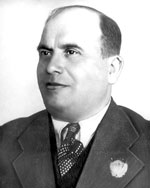
Huseynaga Hajibababayov (1898-1972) — opera singer (lyric tenor).
Huseynaga studied at the Alekseysky School in Baku, and then at the educational institution organized by the famous theater figure Habib bey Mahmudbeyov. In 1910 he was admitted to the choir of the theater troupe of the „Nijat“ cultural and educational society, since 1913 he worked in the theater troupe of „Safa“ cultural and educational society, in the group „Muslim opera artists“ led by Huseyngulu Sarabski, he worked as a dramatic and musical theater actor in „Administration of brothers Zulfugar bey and Uzeyir bey Hajibeyov“. From 1919 to August 1925 he worked in the troupe of the National Drama Theater, from the autumn of 1925 he worked as a soloist at the Azerbaijan State Opera and Ballet Theater.
Along with many dramatic characters in various troupes, he performed the female characters in operas and operettas such as Leyli, Asli, Khurshidbanu, Gulchohra, and Jahan aunt, Gulnaz („Leyli and Majnun“, „Asli and Karam“, „Shah Abbas and Khurshid banu“, „Arshin mal alan“ and „If Not That One, Then This One“, Uzeyir Hajibeyov), Garib’s mother („Ashig Garib“, Zulfugar Hajibeyov), Gulzar („Shah Ismayil“, Muslim Magomayev).
His mastery was demonstrated by the main performances that he performed from 1925 to 1972: Tsar Brendey, Indian Guest („The Snow Maiden“ and „Sadko“, Nikolai Rimsky-Korsakov), Garib („Ashug Garib“, Zulfugar Hajibeyov), Sarvar, Askar, Majnun, Karam („Mashadi Ibad“, „Arshin Mal Alan“, „Leili and Majnun“, „Asli and Karam“, Uzeir Hajibeyov), Lensky („Eugene Onegin“, Pyotr Tchaikovsky), Alyar, Shah Ismail („Nargiz“ and „Shah Ismail“, Muslim Magomayev), Count Almavivo („The Barber of Seville“, Coachchino Rossini). Opera artist Huseynaga Hajibababeyov was awarded the honorary title „Honored Artist“ of the Republic of Azerbaijan in 1934, and in 1938 – „People’s Artist“.
Hagigat Ali gizi Rzayeva (1907-1969) — singer (soprano), teacher. She is one of the first female singers to perform on the Azerbaijani stage.
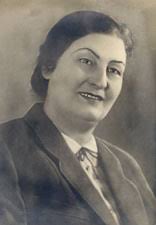
Young Hagigat’s interest in opera and the stage arose after she went to an amateur theater club in Baku. After checking her voice, composer Muslim Magomayev hired her at the Azerbaijan Opera Theater. However, despite the dissatisfaction of her family, Mrs. Hagigat has since dedicated her life to opera forever.
In 1928-1932 she studied at the mugam department of the Azerbaijan State Conservatory, took lessons from Jabbar Qaryagdioglu, Seyid Shushinsky, and Gurban Pirimov. From 1927 to 1952 she was a soloist of the Opera and Ballet Theater, a performer of mugam and folk songs. Arabzangi („Shah Ismail“ — Muslim Magomayev), Leyli, Asli, Telli („Leyli and Majnun“, „Asli and Karam“, „Arshin Mal Alan“ — Uzeyir Hajibeyov), Shahsanam („Ashig Garib“ — Zulfugar Hajibeyov) are the main stage images she created.
As for Hagigat Rzayeva’s film career, she has appeared in very few films. But when we look at these films, we see that she is not only an opera singer but also a very talented film actress. Especially in the film „Stepmother“, she played the role of Gamar aunt so naturally that no one else could play this character like her. Aunt Gamar is a negative character in the film. She completely rejects the fact that her son-in-law Arif will bring a new mother to Ismayil, and doubts that Dilara will be a good mother till the end of the film. She even used the words „You will see! She will not be a mother to Ismail. Stranger woman can never be like his own mother and never will“ — the quote is engraved in the memories.

Rashid Majid oglu Behbudov (1915-1989) — singer.
Rashid, who had studied in the school choir since childhood, entered the railway technical school in 1933. During his studies, he worked in a student amateur orchestra.
At the end of 1943, he was invited to star in the film „Arshin Mal Alan“ based on the operetta of the same name by Uzeyir Hajibeyov at the Baku Film Studio. In 1944, a concert was held in the summer hall of the Azerbaijan State Philharmonic Society. The film was released in 1945 and soon gained great popularity not only in Azerbaijan but throughout the Soviet Union. In 1946, Rashid Beybudov was awarded the Stalin Prize for his role Asgar in this film.
He performed at the 1949 World Festival of Youth and Students in Budapest.
In 1946-1956 he was a soloist of the Azerbaijan State Philharmonic Society, in 1953-1960 he was a soloist of the Azerbaijan State Opera and Ballet Theater named after M.F. Akhundov, in 1957-1959 he was the organizer and head of the Azerbaijan State Concert Ensemble. Since 1966, he organized the Azerbaijan State Song Theater, which organically combines various genres of music and pop art, such as jazz, ballet, pantomime, and until the end of his life was its soloist and artistic director.
Along with all Soviet republics, Rashid Behbudov, who performed in Argentina, Bulgaria, Belgium, Chile, China, Ethiopia, Finland, India, Iran, Iraq, Italy, Egypt, Turkey, and other countries, performed Azerbaijani folk songs and played a huge role in popularizing vocal works of Azerbaijani composers abroad. Rashid Behbudov wrote a book „In Far India“ about his visit to India.
Maria Titarenko (1917-2002) — Azerbaijani opera singer.
While studying at the Azerbaijan State Conservatory, M.Titarenko attracted the attention of Uzeyir Hajibeyov, and the brilliant composer invited him to play the part of Nigar in the opera „Koroglu“.
So, in 1943, she began working in the opera house, and in 1944, together with the unique performer of the part Koroglu Bulbul, she sang the part of Nigar in Azerbaijani. Of the 35 stage images created by M. Titarenko, 6: images from the operas „Koroglu“, „Azad“, „Nizami“, „Vagif“, „Sevil“ and the image of Gulchohra performed by Valida Vazirova in the adaptation of the play, the operetta „Arshin Mal-alan „(actress Leyla Badirbeyli) is performed in Azerbaijani. In the Russian-language version of the script, the character was performed only by Titarenko. She has performed leading roles in the operas Faust, La Boheme, Iolanta, Eugene Onegin, The Snow Maiden, Masquerade, and others.

Gulkhar Ibrahim gizi Hasanova (1918-2005) — opera singer (soprano).
In 1935-1937 she studied at the Baku Theater College, in 1959 she graduated from the Azerbaijan State University.
G. Hasanova began her stage career at the Azerbaijan Theater for Young Spectators (1936-1942). She was hired by the Azerbaijan State Opera and Ballet Theater in 1942 on the advice and assistance of Uzeyir Hajibeyov. The next fate of a talented artist with a melodic voice is connected with the stage of the Azerbaijan State Opera and Ballet Theater. Here she created bright, colorful images of women. Since 1980 she has been working as a theater teacher.
In her performance Asli, Khananda girl („Asli and Karam“, „Koroglu“, U.Hajibeyov), Shahsanam („Ashig Garib“ Z.Hajibeyov), Mrs.Taravat („Bahadir and Sona“, S.Alasgarov), Anna („Bride’s Rock“, Sh. Akhundova) and other parties are distinguished by great professionalism and originality. The culmination of her work was the strong, bold Arabzangi created by Muslim Magomayev in the opera Shah Ismail and the roles of Leyli and Leyli’s mother in U.Hajibeyov’s „Leyli and Majnun“. After finishing the stage, G.Hasanova taught young singers the secrets of performing in the national mugham opera. G.Hasanova was awarded the „Order of Glory“ of the Republic of Azerbaijan.
Shovkat Feyzulla gizi Alakbarova (1922-1993) — Azerbaijani singer.

After graduating from Huseyngulu Sarabski’s class at the Asaf Zeynalli Music School, she began performing.
In 1938-1945 she was a soloist of the Azerbaijan State Song and Dance Ensemble. From 1945 she worked as a soloist of the Azerbaijan State Philharmonic. Shovkat Alakbarova’s performance was characterized by high vocal culture, emotionality and lyricism, and skillful improvisation for mugham.
In 1937, she participated in the competition of amateur groups and with her performance attracted the attention of masters such as Uzeyir Hajibeyov, Said Rustamov, Bulbul. At the final concert at the Opera House, Shovkat Alakbarova sang „Karabakh Tragedy“ and was in the top three along with Fatma Mehraliyeva and Gulaga Mammadov. This competition laid the foundation for Shovkat Alakbarova’s entry into professional music. Folk songs, mugams, composer’s songs performed by Shovkat Alakbarova, who started working as a soloist of the Philharmonic in 1945 become very popular in Azerbaijan.
The repertoire of Shovkat Alakbarova, who has successfully performed in many cities of the USSR, France, Switzerland, Sri Lanka, Afghanistan, India, Egypt, Algeria, Iran, Turkey, Poland, and other foreign countries included mughams such as Segah, Qatar, Shahnaz, songs by Azerbaijani composers and oriental songs.

Tukazban Maharram gizi Ismayilova (1923-2008) — Azerbaijani singer.
In 1939-1944 she studied at the Music College named after. Asafa Zeynalli and began performing as a professional singer. Tukazban Ismayilova, who first began her career in 1944 as a singer in the choir of the Azerbaijan Radio Committee (1946-1949), giving concerts on the front as part of the campaign brigade during the Second World War, was a soloist of the Azerbaijan State Philharmonic in 1948-1956.
She was a soloist of the Azerbaijan State Tour-Concert Union (1978-2008). In 1994-2004 she worked as a teacher at the Art Gymnasium. Tukazban Ismayilova, a prominent representative of the great generation of great artists of our national music, was distinguished by high-performance skills and stage culture. Tukazban Ismayilova, who has dedicated more than sixty years of her life to mugham, has worked hard for the development of our music. Classical Azerbaijani mugams and folk songs are sung by her have forever entered our history. Her repertoire includes mugam, tasnif, folk songs („Kurdun Gozeli“, „Yeri, dam usta yeri“, „Karabakh Shikestasi“, „Garagoz“, etc.) and songs by Azerbaijani composers. „Gatar“, „Kharij Segah“, „Shahnaz“ and other mughams and songs sung by her in a unique style enriched our national musical treasury. Tukazban Ismayilova was an outstanding artist in our culture. Many songs and classifications are widespread due to her unique performance.
Tukazban Ismayilova deservedly represented Azerbaijani culture during her tours in many countries of the world (Germany, Poland, Iraq, Iran, Turkey, Egypt, Algeria, etc.). The merits of Tukazban Ismayilova in the development of Azerbaijani musical culture were highly appreciated. In 1993 she was awarded the People’s Artist of the Republic of Azerbaijan, in 1998 — the „Order of Glory“ of the Republic of Azerbaijan.
Mikayil Azafli (Mikayil Jabbar oglu Zeynalov) (1924-1990) — Ashug.

Mikail Azafli was a master ashug who wrote with great enthusiasm, developed the art of ashug, and became a classic during his lifetime. The ashug-poet, who wrote poems under the stage-name „Coshgun“ (Passionate) at an early age, soon took the nickname of his native village. As Professor Maharram Gasimli rightly points out, Azafli is one of the artists who created real works of art in all forms of ashug poetry and duly continues the classical ashug traditions. „Azafli dubeyti“ ( the name of the lyrical ashug melody), „Azafli beautification“, „Azafli art“, „Azafli world“, „Azafli geraylisi“ ( In Ashug poetry: an eight-syllable form of poetry consisting of four lines in each verse), „Azafli anthem“, „Mikayili“, „Azafli mountains“, „Azafli sea“, „Mazahiri“, Saz tunes such as „Azafli muhammasi“ ( the genre of folk poetry — poem), „Shah Sarayi“ were memorized.
It was not accidental that Azafli was elected a member of the Presidium of the All-Union Music Society. This was an appreciation and respect for Azafli Mikayil’s musical talent. Ashug’s archive contains an official letter dated November 12, 1987, from the First Deputy Chairman of the Society VM Sameilenko. Azafli was repeatedly invited to Moscow and first took part in the festival in Moscow in 1954 and was awarded medals.
Ashug Mikail Azafli was against communism and expressed it in his poems. He was convicted in 1961 of theft and possession of a weapon in his home and sentenced to four years in prison. Prison life gave the artist as much experience as he could at a university. His poems describing his life in prison were memorized while he was still in prison.
Although Azafli’s poetry was widespread among the people, it didn’t appear in the press until the mid-1980s. By this time, the foundations of the Soviet system had begun to crumble. Therefore, with the help of writer Nahid Hajiyev, who held a leading position on Azerbaijan Television in the 80s, an hour-long program dedicated to his work was aired with the participation of the ashug. The program was met with great interest. Later, „Writer“ Publishing House published the artist’s book „Old Eagle“ (1987). On May 17, 1989, Azafli Mikayil was awarded the honorary title of „Honored Cultural Worker“ by the Decree of the Presidium of the Supreme Soviet of the Azerbaijan SSR for his great contribution to the development of literature and art.

Rauf Israfil oglu Atakishiev (1925-1994) — singer, lyric tenor, pianist, teacher.
He graduated from the Moscow State Conservatory in the class of Konstantin Nikolaevich Igumnov (1873-1948) and took vocal lessons from Antonina Vasilievna Nezhdanova (1873-1950). He was a soloist of the Opera and Ballet Theater.
On the stage of the Azerbaijan Opera and Ballet Theater, he performed the role of the Asgar in Hajibeyov’s musical comedy „Arshin Mal Alan“. In the film „Arshin mal alan“ made in 1965, Asgar’s songs were performed by Atakishiyev.
He played parts in Lensky („Eugene Onegin“, P. Tchaikovsky), Alfred („Traviata“, G.Verdi), Almaviva („The Barber of Seville“, G.Rossini), Faust („Faust“, S.Guno), Balash („Sevil“) „, F. Amirov).
He was a lyrical-dramatic tenor and a pianist. In the theater, he played parts in Asgar („Arshin mal alan“), Faust („Faust“), Earl Almaviva („The Barber of Seville“, Gioachino Rossini), Prince Sinoda („Demon“, Anton Rubinstein), Hoffman („The Tales of Hoffmann“, Jacques Offenbach), Malkhaz („Daisi“, Zacharia Paliashvili), Alfred („Traviata“, Giuseppe Verdi), Edmond („The Bells of Corneville „, Robert Planquette), Anatoly („The Fate of Man“).
He is the first performer of the song „I met a girl“ more popular in the performance of Rashid Behbudov. The song was first performed in 1957 in the film of the same name, filmed at the Stalinabad film studio of the Tajik SSR.
Fatma Mehraliyeva (1926-2000) — Singer (lyrical soprano).

The performance of an 11-year-old girl who sang the folk song „Guba’s white apple“ at the music festival attracted the attention of genius Uzeyir Hajibeyov. And so Fatma came under the protection of the great composer.
In 1940, she got a job in the ensemble „Sazchi Girls“ under the Azerbaijan State Philharmonic. In the melancholy voice of the young singer, the musical samples written by the genius Uzeyir Hajibeyov on the theme of patriotism are becoming more popular and introduce the performer. The name of F.Mehraliyeva, the first singer of Samad Vurgun’s song „Sister of Mercy“ with music by Uzeyir Hajibeyov, quickly became famous. The songs he sang during World War II are included in the gold fund of the Azerbaijan National Radio.
Thus, successfully moving on the path of art, F. Mehraliyeva finds fame as a skilled performer of mughams, folk songs, and tasnifs, as well as composer songs. Due to this fame, she was invited to the film „Arshin mal alan“ based on the operetta of the same name by Uzeyir Hajibeyov in 1945 and played the role of Telli in the screenplay. Performing on the stage of the Philharmonic for many years, the artist, who won the hearts of thousands and millions with her voice and performance, managed to make a mark with songs as „Olmaz-olmaz“, „Gubanın ag alması“(Guba’s white apple), „Azerbaijan maralı“ (Azerbaijani deer), „Ahu kimi“ (As a gazelle), „Garagila“ (Blueberry), „Mugan gizi“ (Mughan girl), „Unuda bilmirəm“ (I can’t forget) and etc.
It is a fact that in the history of Azerbaijani mugham only Fatma Mehraliyeva skillfully sang „Kesme shikeste“. This requires special tones. Although many female performers wanted to, they could not sing this piece of music as she did.

Alipanah Alasgar oglu Panahov (1926-1978) — ashug-poet, honored cultural worker of Azerbaijan (1967). Member of the Writers‘ Union of Azerbaijan (1974).
He has been in the art of ashug since 1948. He skillfully played 32 traditional ashug tunes on the saz. Ashug Panah composed 18 ashug songs („Dilbar“, „Yeddi gardash“ (Seven brothers), „Azerbaijan“, etc.). At the same time, he composed songs, that must be menshioned „Nə gesheng bezenmisen“( How beautifully you dressed up!) is one of them. He skillfully sang epics like „Gahraman shah Najaf“(Hero king Najaf), „Asli and Karam“, „Ashug Garib“ and etc. at meetings. Ashig Panah is the author of 2 epos („Peace“, „Cotton Growers“) and up to 128 goshma (a form of an Azerbaijani poem).
In the works of Ashig Panah, gerayli and goshma play a key role. They express patriotism, diligence, devotion to nature, to country, high human qualities, and other important qualities worthy of a poet-ashug. Among his poems are „Dilbar“, „Injiyer“ (She will be offended), „I fell in love“, „Our girls“, „Mother Kura“, and from the goshma’s „Desin“ (Let her tell), „Children“, „Speak“, „Lover’s“, „Stand by this side“, “ I saw“ and so on. names can be mentioned. Feelings of love, the lover’s desire for help from his half, and the description of nature play an important role in his „Dilbar“ poem. The beauty of the Kura River is reflected in „Mother Kura“. Ashug Panah fond of this river. So he treats her the same as his mother and calls her „Mother Kura“. This reflects the fact that the river passed through Absheron and reaches Baku. In the goshma „Stand by this side“ the author talks about calling a distant beloved to his side, about her bushy eyebrows, the way she looks, about her laughter, about his request to reduce flirting, and also compares her hair to strings of his saz, and tells her that no one can compare with his lover. The song „I saw“ is mainly about the homeland. He talks about the diligence of the heroic sons and daughters, the fact that there is no place like Nakhchivan, Karabakh, Mil, Mugan generally like Azerbaijan and it is like a resemblance to paradise, and the existence of ancient history of the homeland is reflected in the comparison with Koroghlu.
Rubaba Khalil gizi Muradova (1933-1983) — Azerbaijani singer (messosoprano).

She studied at the drama theater in Sabirabad. Alasgar Alakbarov saw her by chance and invited her to the Baku Philharmonic. From 1954 she was a soloist of the Azerbaijan State Opera and Ballet Theater. In 1955 she graduated from the class of Seyid Shushinsky at the Baku Music School named after A.Zeynalli. In 1971 she was awarded the title of People’s Artist of the Azerbaijan SSR. She was a singer with a strong, impressive and varied voice, with an original style of performance. From 1954 she was a soloist of the Azerbaijan State Opera and Ballet Theater.
She played main parts in: Leyli („Leyli and Majnun“ — Uzeyir Hajibeyov), Asli („Asli and Karam“ — Uzeyir Hajibeyov), Khananda Giz („Koroglu“ — Uzeyir Hajibeyov), Arabzangi („Shah Ismail“ — Muslim Magomayev), Shahsanam („Ashig Garib“ — Zulfu Hajibeyli), Sanam („Gelin qayası“ (Bride’s Rock) — Sh. Akhundova) and others. She was a skilled performer of mugham, tasnif and folk songs.
She was awarded the „Badge of Honor“.

Lutfiyar Muslim oglu Imanov (1929-2008) — Azerbaijani opera singer (dramatic tenor).
Lutfiyar Imanov was born on April 17, 1929 (according to other sources in 1929) in the village of Petropavlovka (now Sabirabad, Azerbaijan). As a schoolboy, he first tried himself in the role of an actor in 1943 at the Sabirabad State Drama Theater. At the age of 18, he became the head of a drama club. From 1948 he worked as an art director in Sabirabad city house of culture. In 1957 he graduated from the vocal department of the Baku Music School named after Asaf Zeynalli. In 1968 he graduated from the faculty of theater studies of the Azerbaijan University of Culture and Arts. In 1954-1956 he was a choir soloist of the Azerbaijan Television and Radio, in 1956-1957 he was a soloist of the Azerbaijan State Variety Orchestra, in 1956-1959 he worked at the Azerbaijan State Theater of Musical Comedy. He made his debut in Moscow in 1957 in the title role in the opera „Koroglu“ by Uzeyir Hajibeyov. From 1958 until the end of his life he was a soloist of the Azerbaijan State Academic Opera and Ballet Theater. In 1965 he had an internship at the Bolshoi Theater in Moscow, and in 1975 at La Scala Theater in Milan, Italy. Since 1968 he has starred in over 30 operas. He performed Azerbaijani and world songs at concerts. Has toured to Iran, Italy, Germany, India, Canada, USA, Turkey, and several Arab countries. He was engaged in teaching activities. In Soviet times, he taught at the Azerbaijan State Conservatory (professor), in 1991-1995 – at the opera houses of Istanbul and Izmir. In 1996 he performed at a concert in memory of Vivaldi in Italy and the Millennium Song festival in Germany. He played in Carmen, Faust, Othello, Troubador, Aida, Rigoletto, and other classical operas. In 1987-1991, he was the chairman of the Union of Theater Workers of Azerbaijan. In 1980 and 1985 he was elected a deputy of the Supreme Soviet of the Azerbaijan SSR.
Islam Tapdig oglu Rzayev (1934-2008) — Azerbaijani singer.

He was one of the worthy successors of the Karabakh school of singing. He received his professional music education at the Azerbaijan State Music School in Baku (1951-1956), studied mugham dasgahs in the class of Seyid Shushinsky, and became deeply acquainted with the secrets of the art of singing. He also took mugham lessons from Zulfi Adigozalov and Hagigat Rzayeva and improved his skills. Then he continued his education at the Azerbaijan State University of Culture and Fine Arts, and in those years began to work as a soloist of the Azerbaijan State Philharmonic.
„Chahargah“, „Bayati-Kurd“, „Mahu-Hindi“, „Rast“ mugham dasgahs, which he sang with great skill, were included in the fund of AzTV and enriched the treasury of Azerbaijani music. He also composed several songs, including „Gel inad etme“ (Don’t be stubborn), „Daglar bashi“ (Mountain tops), „Almadaran“(Apple picker). He also referred to the composer’s works, such as Jahangir Jahangirov’s „Nasimi“, „Ashig Ali“ and others. performed a solo part in his cantatas.
He has been on more than 70 tours and has represented Azerbaijani culture in countries such as Colombia, Peru, Cuba, Japan, India, and Nepal. He was also engaged in pedagogical work, and his students were recognized as worthy successors of the singing school. After graduating from the Baku Music College named after Asaf Zeynalli, he was a soloist of the Azerbaijan State Philharmonic for many years. He worked as the artistic director of the Mugham Theater for about twenty years. He trained about 120 young performers and was awarded the Order of Glory by the President in 2004 for his services to the development of Azerbaijani art.

Firangiz Yusif gizi Ahmadova (1928-2011) — singer.
In 1955 she graduated from the Azerbaijan State Conservatory. In 1946-1951 she was a soloist of the Azerbaijan Radio Choir and in 1951-1988 of the Azerbaijan State Opera and Ballet Theater.
She has successfully performed in operas by Azerbaijani, Russian, and Western European composers. Main parts: Nargiz, Gulzar („Nargiz“, „Shah Ismayil“, M.Magomayev), Nigar („Koroglu“, U.Hajibeyli), Sevil („Sevil“, F.Amirov), Sariyya („Azad“, C.Jahangirov), Sona („Bahadir and Sona“, S.Alasgarov), Maro („Daisi“, Z.Paliashvili), Aida („Aida“, C.Verdi), Tosca („Tosca“, C.Puccini) and s. „Sensiz“ (Without you) (U.Hajibeyli), „Ölkem „(My country), „Sual“ (Question) (A.Zeynalli), „Arzu“ (Dream) (Niyazi), „Heyran olmusham“ (A.Abbasov), „Okhuma gozal“ (A.Rzayeva) and others. she masterfully performed Azerbaijani romances, as well as romances of classical Russian composers (P.Tchaikovsky, S.Rakhmaninov, S.Taneyev, etc.).
Firangiz Ahmadova from 1989 until the end of her life worked as a trainer-teacher at the Azerbaijan Opera and Ballet Theater. She was a deputy of the Supreme Soviet of the USSR (4th convocation) and the Supreme Soviet of the Azerbaijan SSR (5th convocation). She was awarded the Order of Glory of Azerbaijan.
Zeynab Yahya gizi Khanlarova (1936) — singer.
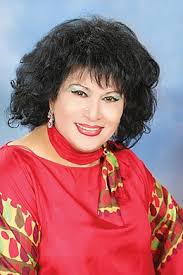
In 1956 she graduated from the Baku Pedagogical School named after MASabir and in 1961 from the Baku Music College named after A.Zeynalli. She has been a soloist of the Opera and Ballet Theater since 1961. She created the images of Leyli and Asli in Uzeyir Hajibeyov’s operas „Leyli and Majnun“, „Asli and Kerem“. His repertoire includes mugham (Shahnaz, Mahur, Gatar, Bayati-Shiraz, etc.), tasnifs and Azerbaijani folk songs, also Azerbaijani composer songs (Gara Garayev, Fikret Amirov, Tofig Guliyev, Jahangir Jahangirov, Arif Malikov, Emin Sabitoglu, Alakbar Tagiyev, etc.) and oriental songs occupy a large place. She is one of the first performers of „Chahargah“ mugham among female singers of Azerbaijan. She is also the author of several songs. A television documentary „Hello, Zeynab“ was shot about her.
She has given concerts in most countries of the world.
She was a deputy of the Supreme Soviet of the Azerbaijan SSR (XI-XII convocation) and the Milli Majlis of the Azerbaijan Republic (I-IV convocation).
Zeynab Khanlarova has also been a deputy of the Milli Majlis of the Republic of Azerbaijan for many years. She was awarded the Order of Glory. People’s Artist of Azerbaijan since 1975, People’s Artist of the USSR since 1980, Laureate of the State Prize of the Azerbaijan SSR since 1985.
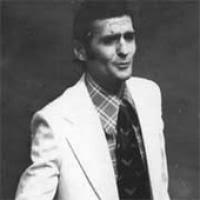
Ogtay Jafar oglu Agayev (1934-2006) — Azerbaijani singer.
Agayev’s childhood was very difficult because it coincided with the war. The artist has loved music since childhood. In 1953 he entered the Music College named after Asaf Zeynalli. His teacher was Sofya Ivanovna Khalfen. The 78-year-old woman also sang. She taught Ogtay the secrets of vocal and worked hard to develop him as a vocalist.
After returning from military service, Agayev continued his education in Firudin Mehdiyev’s class. Firudin Mehdiyev graduated from the genius Bulbul’s class at the conservatory and began teaching at the technical school. Agayev has worked as a soloist in both major pop orchestras in Azerbaijan. Until 1970 he was a soloist of the Radio and Television Variety Orchestra under the direction of Rauf Hajiyev, and until 1984 under the direction of Tofig Ahmadov.
Agayev has toured in many foreign countries (Algeria, Morocco, Poland, the Czech Republic, Slovakia, Bulgaria, Romania, etc.), all the republics of the former USSR, and has given 11 concerts at the Kremlin Palace.
O.Agayev also worked in the art of cinema. He played the role of a police chief in Vagif Mustafayev’s film „Japanese“. He sang songs in „Find That Girl“, „Battle in the Mountains“ and other films. More than 200 of his songs have been recorded.
Fidan Akram gizi Gasimova (1947) — is an Azerbaijani opera singer.

After graduating from the Bulbul music school, Fidan entered the Azerbaijan State Conservatory named after U. Hajibeyli in 1966, due to her brilliant talent and hard work, she studied two specialties at the same time — violin and vocals. After graduating from the Moscow Conservatory in 1974, she returned to Baku, where she became a soloist at the Azerbaijan State Academic Opera and Ballet Theater named after M.F. Akhundzade, and also began teaching at the Azerbaijan State Conservatory (now the Baku Music Academy).
F.Gasimova, People’s Artist of Azerbaijan (1983), USSR (1988), laureate of the State Prize of Azerbaijan (1984), professor of the Baku Music Academy named after U.Hajibeyov since 1990, Istanbul State Conservatory of Turkey since 1992. Her work was appreciated in independent Azerbaijan. She was awarded the Order of Glory (1997) by Heydar Aliyev, as well as the Order of Honor (2010) and the Order of Independence (2017) by the order of President Ilham Aliyev.
F.Gasimova’s album „Besame mucho“ was released in 2008. The disc, recorded at the Eta Production studio, is dedicated to the first lady of the country, Mehriban Aliyeva. The name of the great artist is included in the book „100 women of the world“.
People’s Artist of Azerbaijan and the USSR Fidan Gasimova was awarded the title of the most famous performer in the world according to the encyclopedia compiled by the University of Cambridge in Great Britain in 2015 and was awarded a special diploma. Fidan Gasimova is the only performer of the musical culture of Azerbaijan to be awarded this highest award.
.jpg)
Gasimova Khuraman Akram gizi (1951) — Azerbaijani opera singer.
The parents of Khuraman and his older sister Fidan Gasimova have always been interested in art, writing poetry, and music. She graduated from the Azerbaijan State Conservatory in 1975. She has been a soloist of the Azerbaijan Opera and Ballet Theater since 1976. Main parties: Selma („Deceived Stars“, M.Guliyev), Sevil and Dilbar („Sevil“, F. Amirov), Nigar („Koroghlu“, U.Hajibeyov), Mimi and Muzetta („Bohema“, G. Puccini), Desdemona, Aida („Othello“, „Aida“, G.Verdi), Tatiana („Eugene Onegin“, P.Tchaikovsky), Khurshudbanu Natavan (Natavan, Vasif Adigozalov) and others. 5th Transcaucasian Competition of Performers (1977, I Prize), 7th All-Union Competition of Vocalists named after M. Glinka 1977 and International Competition named after Maria Callas Athens, 1981; She was also awarded the Grand Prix gold medal, as well as the winner of the 8th International Tchaikovsky Competition (Moscow, 1982). Khuraman has appeared in films such as „I was not beautiful“, „Life tests us“. She has been teaching at the Baku Music Academy since 1982. Since 1993, she has been the head of the solo reading department, since 1996, she has been a professor at the Istanbul State University Conservatory. Khuraman has performed in foreign countries such as Bulgaria, Czech Republic, Slovakia, Malta, France, Austria, Norway, Turkey, Finland, etc.
AZERBAIJANIAN MUSIC
Folk songs. The songs, which are one of the oldest and most important genres of musical and poetic creativity of the Azerbaijani people, vividly reflect its pure, high spirituality, inner world, dreams, and hopes.
Azerbaijani folk songs are divided into several genre groups due to the variety of themes and content, clarity and diversity of music, and poetic language. These include labor songs, ceremonial songs, household songs (including lyrical songs), and historical songs.
One of the ancient types of song creation of the Azerbaijani people is ceremonial songs. The people’s festivities, weddings, and mourning ceremonies were accompanied by traditional songs, and many of these songs still live among the people to this day. The text of these songs was composed of bayats, the most widespread form of folk literature.
Domestic songs are also divided into children’s songs, humorous and satirical songs, and lyrical songs, depending on their content, form, and feelings. Children’s songs, especially lullabies sung by mothers to their children, are historically the oldest types of household songs.
Lyrical songs are the richest and most beautiful type of song genre. Lyrical songs are also the largest part of this genre. Pure love, the description of the beauty of the lover, separation, anticipation, grief, sorrow, and so on. feelings are the basis of the content of lyrical songs.
Lyrical song creation has become one of the strongest means of national artistic self-expression of the people. Some of these songs are optimistic and happy in content, while others are sorrowful. Epic-historical and heroic songs also play an important role in the songwriting of the Azerbaijani people. These songs, which date back to ancient times, are dedicated to any historical event in the history of the country or to national heroes who played a significant role in the life of the people.
A series of songs about Koroglu, his lover Nigar and his comrades-in-arms are dalilar, and his faithful horse Girat are examples of this.

Dances. Along with the popular song genre, dance music is an important part of the national folk music of the Azerbaijani people. Folk dances are the basis of Azerbaijani national instrumental music. Dances have been created by the people and passed down orally from generation to generation for centuries. As in folk songs, the dances reflected the feelings, emotions, and temperament of the people.
Among folk dances, women’s dances are distinguished by their lyricism, elegance, and subtlety, for example: „Vaghzali“, „Uzundere“. Some dances are performed only by women, such as „Nalbeki“, „Jeyrani“. Men’s dances are full of emotions, fast rhythm, strength, and temperament. For example, „Gaitagi“, „Jangi“, „Gazagi“, „Khanchobani“, and so on.
There are also collective dances among the people. Many of them accompany the labor process and household ceremonies. For example, „Halay“ dances are like this. The „Vaghzali“ dance usually accompanies the wedding ceremony. One of the dances performed with women and men is „Yordu-yordu“. The most widespread of the ancient collective dances is „Yalli“, which has its roots in very ancient times.

Mugham. Along with song and dance music, genres of oral professional traditions of the people lived and developed in the musical folklore of Azerbaijan. The most important of them were mughams. Mughams are the pinnacle of national classical music of Azerbaijan, as well as the peoples of the Middle East, the highest creative example of folk vocal-instrumental composition with deep, complex content, ideas, emotional meaning. From ancient times, the gradual development of mugam over the centuries has led to its formation and perfection. In Azerbaijani music, the term mugham is used in two senses. The first is the same as the term mode. At present, there are 7 main modes or mugams in Azerbaijani folk music: Rast, Shur, Segah, Chahargah, Shushtar, Bayati-Shiraz, Humayun, and several additional mugams. Second, mugham is an extremely complex and interesting piece of music with a multi-part form, with only a unique structure. Mugam singers are accompanied by a singer and a group of accompanying musicians (trio-tar, kamancha, tambourine) or solo instrumentalists, depending on their creative imagination, ability, and talent, they made various changes over the centuries include new shades, bells, etc. Singers perform mugams on lyrical and philosophical ghazals of famous poets – Khagani, Nizami, Nasimi, Fuzuli, and others.
Rhythmic mughams are another type of instrumental vocal mugams in Azerbaijan. These include: „Heyrati“, „Arazbari“, „Ovshari“, „Mansuriyya“, „Simai-shams“, „Kerami“, „Kesme-shikesta“, „Karabakh shikestasi“. The main distinguishing feature of these mugams is that the singer’s vocal mugam improvisational part has a precise metrorhythmic accompaniment.
 Ashug creativity. The professional oral traditions of Azerbaijani music, along with mughams, include the musical and poetic creativity of ashugs. The word „ashug“ comes from the word „love“, which means passion (love) for art. The term originated around the fourteenth century. The art of ashug, which originated in ancient times, was very popular and popular among the people because it sang the wishes and desires of the people.
Ashug creativity. The professional oral traditions of Azerbaijani music, along with mughams, include the musical and poetic creativity of ashugs. The word „ashug“ comes from the word „love“, which means passion (love) for art. The term originated around the fourteenth century. The art of ashug, which originated in ancient times, was very popular and popular among the people because it sang the wishes and desires of the people.
The content of ashug art, which is essentially democratic in nature, is very wide, diverse, and colorful. The most widespread genre of ashug art is epos, especially heroic-epic epics. Vocal-instrumental parts in the epics replace the spoken parts of the poem. Some of the songs of the ashugs are full of sorrow and grief, such as „Yanig Kerami“, „Dilgami“, and others are playful warm songs such as „Afshari“, „Sharili“, which are beautiful examples of ashug lyrics.
The most widespread verse in Ashug’s work is syllabic. The structure of most ashug songs is in the form of couplets. At the beginning of each couplet, there is an instrumental introduction and each couplet is separated from each other by an instrumental solo.
The oldest written source dedicated to the life, love, patriotism, and courage of the ancient poets, the ancestors of modern Azerbaijani ashugs, is the folk epic „Kitabi Dada Gorgud“ of the seventh century.
Historically, for many years, centuries, the music of Azerbaijani poets has had a great impact on other areas and types of our musical folklore, and later on the creativity of our composers in modern times. Our composer U.Hajibeyov was the first to use the unique features of ashug music with great professionalism and skill (in his masterpiece „Koroglu“ opera). Another Azerbaijani composer Gara Garayev, who skillfully combined the features of ashug music with the technical means of modern music, was able to create a beautiful unity of them in the second part of his third symphony.
AZERBAIJANI MUGAM
The Azerbaijani people have created an ancient, rich, and unique culture. He has created valuable resources in various fields of artistic creativity, including in the field of musical creativity. Mugham is the Pearl of the world musical treasure. Unlike the music genres existing in the world, mugham played an important role in the formation of the national and cultural heritage of many nations and reaching to the present time. Mugham, like Azerbaijani folk music, has its roots in the depths of the Eastern musical culture. The harmony of mugham was laid by mouzers singing Kuran, the melody of music played in Persian palaces, and the style of performance was made by Azerbaijani ashugs. The art of mugham is perceived by Azerbaijanis as one of the main cultural values that form the basis of national self-awareness and self-identification. This art is also popular among such ethnic groups as Talysh, Mountain Jews, Lezgins, Georgians, and Avars living in the territory of Azerbaijan. In general, it is impossible not to notice that the amazing sound in Mugham is not universal, but divine music. In all cases, mugham affects our inner mood. It is always in place — in our sad and sad moments when feelings of joy and love are overflowing. Mugham always accompanies us from the beginning to the end of our life. Mugham has been accompanying a person for centuries, giving him spiritual purity and greatness, and has been a bridge from the most ancient times to the present and future.

Mugham is the main genre of classical folk art music of the Eastern countries. The word mugham is derived from the word „magam“ used in Iranian-Arabic-Turkish language. The word“ magam “ comes from the meaning of a curtain on stringed instruments. This name was given to each Mugham as its main (Maya) note is on one degree of the instrument. Until the XIV century, it was a single musical genre of the peoples of the Middle East, but due to the socio-political changes that took place later, this single musical genre was divided in accordance with the Peoples. Classical eastern mugham consisted of 12 main mugham and 6 avazats. The main mughams: Usshaq, Nava, Busilik, Rast, Arag, Isfahan, Zirafkand, Astrurk, Zangula, Rahavi, Huseyni and Hijaz, and avazats consisted of Shahnaz, Maya, Salmek, Novruz, Kerdani, and Guvasht.
There are 7 Main and 3 auxiliary mughams in Azerbaijan. The main mughams are „Rast“, Shur“, „Segah“, Chargah“, Bayati-Shiraz“, Shushtar “and” Humayun“, the auxiliary mughams are” Shahnaz“,” Saranj “and”Chargah of the 2nd kind“.
Mugham is the common name of the biggest genre of traditional music of Azerbaijan, it applies to all types of mugham forms, although each of them has its own separate name. The main forms of music representing this genre are dastgah (vocal-instrumental or purely instrumental types), mugham (vocal-instrumental, solo-instrumental, and solo-vocal types), and Zarbi-mugham.
Among all forms of mugham existing in Azerbaijani music, the biggest in its scale and artistic idea is dasgah. The founders of classical eastern mugham and the main theoretical ideas about mugham were Abu Nasr Farabi, Abu Ali ibn Sina, Alkindi, Abdulgadir Maragayi, Safiyyaddin Urmavi, and others. The Azerbaijani composer, prominent representative of professional music of Azerbaijan Uzeyir Hajibeyov is known as one of the main ideas on the theory of Eastern music and mugham in the XX century.
Literary and music assemblies established in the cities of Azerbaijan from the 20s of the XIX century till the beginning of the XX century played a great role in the spread of mugham performance and its professional painting. The most famous of them were „Mejlis-Faramushan“ in Shusha, „Mejlis-uns“, musicians Society, „Beytus-Safa“ in Shamakhy and music Assembly of Mahmud Aga, „Majma-ush-shuara“ in Baku, „Divani-Hikmat“ in Ganja, „Figiman-ush-shuara“ in Ordubad, „Fovalli-fusaha“ in Lankaran. Poets, writers, musicians, intellectuals, connoisseurs and connoisseurs of classical poetry and music gathered at these meetings, listened attentively to mughams and held discussions around the fine performance of music and poetry. The assembly was one of the main forms of mugham performance before the audience in the XIX century, and the extinction of this tradition was connected with the process of democratization of music life in Azerbaijan with the discovery of the concert form of music performance in early XX century. However, the councils formed a special culture of careful listening to mugham, as well as a tasteful, head-on listening atmosphere („The meeting of arifs“), which put forward high artistic requirements for mugham performance. From its own point of view, the councils played a powerful stimulus in the professional perfection of Azerbaijani musicians in the XIX – early XX centuries.
The culture of mugham performance was formed from the creative achievements of many generations of brilliant musicians — singers and sazandas, famous throughout the Caucasus and Iran. Among the great singers of the past, we can mention more bright names such as Mirza Sattar, Haji Husu, Mashadi Isi, Abulhasan Khan Azer Igbal, Mirza Mukhtar Mammadzade, Jabbar Garyagdi Oglu, Alasgar Abdullayev, Abdulbagi Zulfov, Agasaid Agabalaoglu, Mirtagi Mirbabayev, Majid Behbudov, Kechachi Oglu Mohammed, Islam Abdullayev, Mashadi Mammad Farzaliyev, Huseyngulu Sarabski, Seyid and Khan Shushinski, Bulbul, Zulfu Adigozalov.
In Soviet times, singers abulfat Aliyev, Gulu Asgarov, Nariman Aliyev, Hagigat Rzayeva, Yavar Kalantarli, Zahra Rahimova, Jahan Talishinskaya, Fatma Mehraliyeva, Rubaba Muradova, Shovkat Alakbarova, Tarzar Aliyeva, Hajibaba Huseynov, Yagub Mammadov, tarists Akhsan Dadashov, Bahram Mansurov, Baba Salahov, Kamil Ahmadov, Haji Mammadov, Habib Bayramov, Mammadaga Muradov, Amirulla Mammadbayli, Agasaf Seyidov Firuza zeynalova was protected and developed.
Singers such as Islam Rzayev, Arif Babayev, Alibaba Mammadov, Janali Akbarov, Aghakhan Abdullayev, Alim Gasimov, Mansum Ibrahimov, Sakina Ismayilova, Gandab Guliyeva, Melekkhanim Eyyubova, Zabit Nabizade, Zahid Guliyev, tarists Agasalim Abdullayev, Vamig Mammadaliyev, Mohlat Muslumov, Firuz Aliyev, Sarvar Ibrahimov, kamanchaists Habil Aliyev, Mirnazim Asadullayev, Shafiga Eyvazova, Fakhraddin Dadashov and teachers have also made a great contribution to the Azerbaijani culture of mugham performance.

As a source of pleasure, our mughams and dastgahs not only form the world view of our compatriots with the richest and very unique information about the historical past of Azerbaijan, but also play an important role in revealing and comparative investigation of historical events in the socio-political life of the peoples of the East… In November 2003, 7 Azerbaijani mugham was declared “one of the masterpieces of the oral and intangible heritage of humanity“ by UNESCO and it was noted that his homeland is Azerbaijan. Since 2005, the Heydar Aliyev Foundation has been continuously implementing the project „Azerbaijani mughams“.The music album „Karabakh singers“, performed by 24 virtuosic mugham Masters, is the first and important project met with great interest. The „Mugham encyclopedia“, prepared by the foundation in 2008, is regarded as a weighty publication for the protection and development of our ancient musical heritage.
Construction of the International Mugham Center with the support of the foundation, holding off Republican mugham contests in recent years and international Mugham festivals attended by young people from many countries of the world aims to reveal young talented performers who will develop ancient performing traditions and promote the art of mugham to the world. Holding of international Mugham festivals once again proves to the world that mugham is the national treasure of Azerbaijan, as well as the Pearl of the world music Treasury.
A series of multilateral events held under the leadership of Azerbaijan’s First Lady, First Vice-President of the Republic of Azerbaijan, President of the Heydar Aliyev Foundation, UNESCO, and ISESCO goodwill ambassador Mehriban Aliyeva play an exceptional role in the modern history of Azerbaijani mugham. As a result of this activity, mugham performance in recent years has been going through a renaissance in the true sense of the word, with comprehensive support from various aspects. The inclusion of the intangible heritage of World Culture in the list of values of universal significance by UNESCO’s decision is an assessment of mugham and the art of performing tar as an integral part of the unique cultural wealth not only of our people but of the entire mankind.
As UNESCO Goodwill Ambassador, First Lady of Azerbaijan Mehriban Aliyeva wrote: „Mugham is a special moment of our soul… there are many underwater currents in the sea of mugham, we can feel the heat of the mysterious range of human feelings and realize its existence in all its diversity. And we will return to him again. He is no longer a part of our life, he is our own.
We inherit mugham as a part of our heart and soul to future generations. It is mugham that is able to instill in our successor’s such qualities as an attachment to roots, national dignity, pride, emotional wealth, suffering and being able to share the suffering of others, moral perfection, and completeness that mugham possesses.”
Our mugams, which perpetuate the glorious and troubled history of our people invoices, are also our consolation in our most painful days. Mugham, which is a source of amazing feelings, thoughts, and wisdom, in all cases – in our sad, joyful moments-affects our mood, lives the joy of the moments when we have gained freedom and independence and calls us to victory.
Musical instruments of our nation are distinguished for richness and diversity. Many of them were made in ancient times and have been improved throughout the centuries. ‘Tambourine player stone’ near Gobustan rock paintings of 6000 years was used by our ancestors as a percussion instrument. Various musical instruments engraved on items found during archaeological excavations in Azerbaijan indicate to their antiquity. Governed by tangible cultural riches, works by our classic poets, booklets by music experts, miniatures by artists of Middle Ages, wall paintings, diaries of travellers having travelled our country, museum collections, we can say nearly 90 musical instruments have been used in Azerbaijan. They are divided into 5 groups according to the sound source, the basis of modern classification: string, wind, percussion, self sounding. In accordance with this classification, out of instruments distributed in Azerbaijan 32 (26 played with a mediator, 4 with a bow, 2 with switch) are string, 23 wind, 16 percussions, 17 self-sounding.
Tar, ‘the most important instrument for expansion of study of Eastern music’ to Uzeyir Hajibeyov, kamancha, which he considered ‘the most beautiful of melodic instruments’, saz, the ‘friend’ of ashygs, ganun that was compared with ‘box of secret’ by Fuzuli, oud, the ‘king’ of all instruments in due time, are most popular string instruments at present.
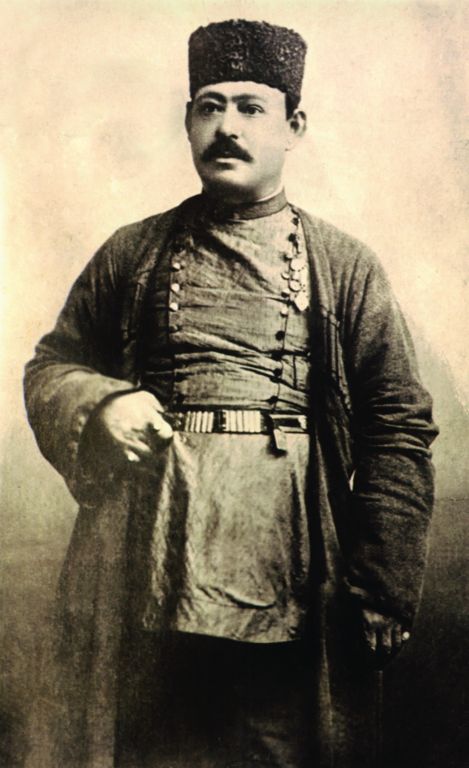
Tar, one of the most perfect instruments of Azeri nation, is played with the mediator. Tar is made of mulberry, walnut and pear trees, open side of the body is made of cattle heart membrane. Its strings are of different thickness and composition.
Tar that has passed through long development is mentioned in poems by Baba Tahir and Gatran Tabrizi of XI century. Capital improvement of tar is linked to the name of Mirza Sadyg Asad, the skilful tar player. Before him, tar had 5 strings. He added tune and ring strings, kept 22 frets, specified their place, clinched ‘inner arm’ to the body to reinforce tuning. Tar, which became lighter, was held not on the lap as before but on the chest. Thus, technical opportunities of tar were expanded. For a short time Mirza Asad’s tar got popularity beyond Azerbaijan under the name ‘Azerbaijani tar’.
Divided into big and small bowls, the body of tar reminds from the top of figure of eight. 22 frets are linked to its fingerboard. The instrument has 11 metal strings, which are called white (made of metal with steel mixture), yellow (bronze) and red (white strings covered with reddish or yellowy bronze string) strings. 2 double strings (white and yellow) in the very bottom are main strings since the sound of melody is produced by them. They are followed by tune strings consisted of double – red (sometimes yellow) and white (can be replaced by yellow too) strings, and above them, there is thick red – bass tune, tone string. Above tune strings, there are 2 couples of white ring strings. Main and ring strings are tied to 6 big tuning pegs on the top, while tune ones to small tuning pegs. Double white, yellow and ring strings have a permanent tune. 3 tune strings are tuned to various loudness respective of the mode of mugham or composition. During the performance, the mediator is used in different methods.
Kamancha of ancient times had a string, long fingerboard and foot. Now, it has 4 strings, third and fourth bass strings of which are covered with copper and bronze wires. Strings are played with a bow made of cornel tree in the form of the slightly bent switch and horsehair in the end. It consists of a ball-shaped bowl made of walnut tree basically, round fingerboard and iron billow called ‘spit’ that unites them and crosses through the bowl. Open side of bowl is covered with sturgeon skin. The stretcher is placed on that in the aslant position. One ends of strings based on the stretcher are tied to hooks on the spit, while other ends to tuning pegs on the upper side of the fingerboard.
Saz, the development of which is closely linked to the art of ashyg, is played with tazana (mediator). It is often mentioned in poems by classic poets and ashygs. Primitive saz had a small bowl and 2-3 strings. In the course of ashyg music, measures of saz were enlarged, the number of strings and frets increased. A pear-shaped deep bowl of saz is made of 9 mulberry tree strips. Its fingerboard is made of the walnut tree. Saz has kinds such as large or big (8-11 strings), medium (8-9 strings) and short (4-7 strings), armpit. 1500-mm, 12-string major large or mother saz was used in the near past. 17-18 and more frets are tied to its fingerboard. 3-4 lower strings are high-tone, 2-3 middle strings are bass and 2-4 upper strings are the accompaniment. High-tone and accompaniment strings have a permanent tune, while the tune of bass strings changes according to mode-harmony of composition.
Ganun is played on the lap by plucking the strings with two tortoise-shell picks, one in each hand, or by the fingernails. It was widely spread in the East, including Azerbaijan in due time. After being forgotten for some time, in the late 50s orchestras began playing it again. Ganun’s body is in the shape of a flat right-angled trapezium. The cover is made of wood mainly, has resonator holes on the surface. The lower part of the cover is coated with skin, on which wooden barrow is placed. 72 strings made of metal or kapron are stretched over the barrow. One ends of strings are tied to holes on the right-angeled side of the body, while other ends to wooden tuning pegs. Tuning the instrument, tuning pegs are screwed with a special key. One or two small metal barrows are placed near tuning pegs, under strings to change the tune of strings up to halftone or a tone and a half.

Ud, one of the ancient instruments played with a feather of an eagle, comes from ‘al-ud’, which is called ‘lyutnya’ by Russians, ‘laot’ by Germans, ‘lyuto’ by Italians. Till X century oud had 4 strings, later the fifth one was added and every string was doubled to make sound louder. Brought to Sicily and Spain first oud was spread in the whole of Europe in the Middle Ages. XVII – XVIII was a renaissance of oud, which gradually lost its popularity, giving up its place to violin, guitar. Only in the eastern countries, it kept superiority. Present oud consists of a pear-shaped bowl made of walnut tree slices (up to 20), short fret-free fingerboard and top hooked to the back. Resonator holes are made to assure good sound on wood. In the bottom of the cover, there is barrow to which strings are directly tied. It has 5 doubled strings. An additional string is tied sometimes. 1st and 2nd double strings are made of bowels, others of metal.
Dambur, 2-string instrument made of lime tree widespread in Zagatala and Balakan districts, has a scoop-shaped long body. 5 wooden frets are tied to the shorter fingerboard. Metal strings, which were made of silk before, are sounded with fingers.
String instruments played with mediator were more popular in the Middle Ages. According to Kitabi-Dede Gorgud, gopuz was the favorite instrument of ozans, ancestors of present ashygs. Gopuz with 2-3 strings was much alike saz. Berbetin was similar to oud and a bit larger. Tune of oud was the basis for tuning of other instruments. Gashgar lute and tenbur that are used now in Central Asia were popular in Azerbaijan. Tenbur had kinds such as dutar, setar, chartar, penjtar, sheshtar. Bowl of 3-string ozan, which was like hump tenbur, was covered with skin basically. Sheshkhana, invented by mugham singer Rzaeddin Shirvani, was much like oud. One of the instruments like oud was sheshtay and 8-9-string chekhes. Chang, widely used in Azerbaijan in the Middle Ages, was a favourite instrument of singers, musicians, poets. Beside chang with an arched body, triangular and quadrangle-shaped chang and nuzhet, which were sounded with special sticks, were used. Nuzhe and mughnu, invented by prominent music expert Safiaddin Urmavi, were used in Azerbaijan. Nuzhe was made in a base of chang and ganun. The quadrangle-shaped instrument had 81 strings. 33-string mughnu was much similar to a lute, but was larger. 96-string santur, with a body, consisted of the trapezium-like box and played with sticks, was used in Azerbaijan in the near past.
Among instruments played with a bow of horsehair, chegane, cheganag and keman were popular in Azerbaijan. Chegane, which had a pear-shaped bowl and 2 or 3 strings, was leaned on the floor by its stand. 3-string cheganag had a sieve-like bowl. Keman reminded of a violin.
Balaban, one of the ancient wind instruments our ancestors left to us, is played in all corners of Azerbaijan. Ksula is used in north and northwest Azerbaijan, yan pipe and tulum in Nakhchivan.
Zurna (Gara zurna as well), one of the most ancient instruments of our nation, had 5 kinds in Sheki region for a length of body and sound: main and medium-large, which is used now, small, medium and foot small.
Zurna is combined of the body (kotuk, karkhana), billow, key and reel. Body, made of dry apricot tree, has 8 music holes on the surface and 1 on the back.

The diameter of the body gets the shape of cone enlarging from the 6th hole. Hole in the wide foot is always open. Forked ‘tongs’ made of wild willow is placed in the body from the top. Billow made of bronze and copper is linked to that. Cane ‘key’ is tied to the bottom end of the billow. Round ‘reel’ made of mother-of-pearl or bone is connected to the billow. During the performance, lip touches that. After the performance, the key is capped.
Balaban, which is often called also yasti (flat) balaban for the flat mouthpiece and soft sound, consists of a body made of the apricot tree, cane, barrow and cover. The body has 8 holes on the surface and 1 on the back in the middle of 1st and 2nd holes (sound fret) on the surface.
Fife is made of cane basically. The lower end of cylindric body (280-350 mm in length, 20 mm in diameter) is a bit hewed, the head is cut aslant and wood is placed inside. On the surface of the head, there is a quadratic hole with a metal ring to adjust the sound. The body has 7 holes on the surface and 1 on the back.
Ney, consisted of straight cylindric, empty body, is made of the apricot tree, date-palm or copper. To assure good sound the upper end of the instrument is a bit chewed. The body has 5-7 music holes on the lower surface and 1 on the back towards the top.
Shield accordion (more famous as Azerbaijani or Eastern accordion) and clarinet are widely used by musicians.
Wind instruments that were popular in Azerbaijan in Middle Ages include burghu, long instrument expanded towards the bottom, bugh, short with a pretty large top, musigar, consisted of 8 pipes of different length, kerenayi, 2m in length, expanded towards the bottom, nefir, a horn instrument consisted of long, straight tube and with a bit large top, gavdum with a wrapped pipe, shahnefir, the bend kind of nefir, mizmar, similar to fife, nay with a sharp sound. Erghan, the ancestor of a modern organ, was made of numerous tubes and played with bellows. Sumsu, the primitive type of fife, sumsu-balaban, bird-like burbugh and kelenay (kelezurna) were used in the near past. Shapbyr-balaban is rarely played now.
Gaval, which was called ‘the most delicate’ of percussion instruments by Uzeyir Haibeyov, naghara, goshanaghara, dumbek are very popular at present.
Gaval consists of the narrow, round wooden rim. One side of gaval is open, another side covered with fish skin. Metal rings are fastened to the rim from inside. Diameter is 340-456 mm, width 40-50 mm. Gaval is played by touching palms and fingers of both hands on the side or centre of the skin surface, also shaking the instrument.
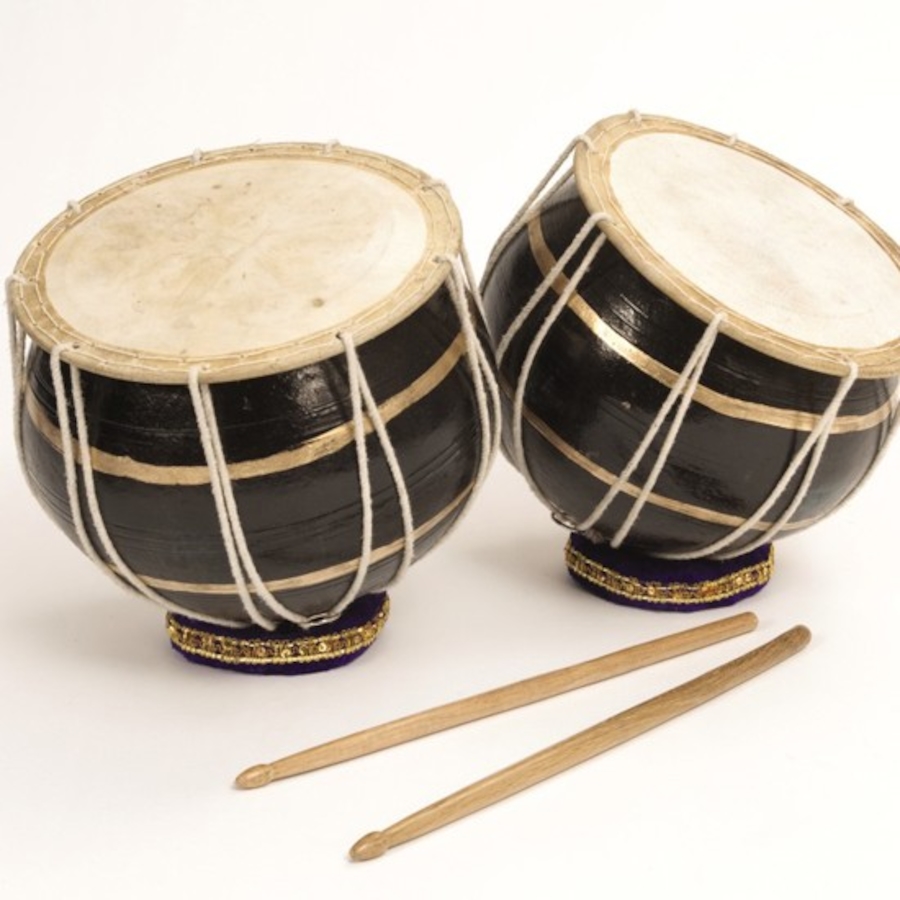
Naghara, made of apricot, walnut, mulberry and lime trees, has a cylinder-like frame. Steel hoop covered with goatskin is stretched to both sides by crosswise revolved rope. According to the size of the body, it has various names such as kos, the big one played with a small type, goltug, manual naghara, bala naghara. Big naghara is played with 2 beetles, others by hand and sticks.
Goshanaghara (dumbul, dumbelek as well) is comprised of the body made of 2 walnut, mulberry trees of the same height, but different size and metal. It reminds of the cup. The skin of goat, camel or horse covered on the surface of the body is stretched by a screw mechanism. Different sounds are obtained by touching sticks separately on both surfaces, on one surface (centre and side), on each other or on the body, touching the palm on the surface.
The cup-shaped body of dumbey was made of clay before, now of wood basically, the wide surface is covered with goatskin and stretched by strap or screw mechanism. Height of the instrument, which is played like gaval, is 350-400 mm.
Drum, the cup-like instrument played with sticks, was popular in middle ages. Body was made of copper or bronze, open side coated with wolfskin. Its small type used in hunting was called drum-bass. Kus, larger than drum, was played via sticks with crooked ends or covered with cloth. Consisted of 2 big drums, juft-kos was played in battles usually. Tambourine was similar to modern gaval. 4-6 copper circles were fastened along its rim. Sometimes circles were replaced with small rings tied to external and internal sides of rim. This instrument was called circle. Mezher had a wide rim to which rings, bells were fastened. Davul, mentioned in Kitabi-Dede Gorgud epos, reminded of big naghara. Diameter of body of tebire was diminished towards the middle. Both sides of dumbul’s rim were broad. Nagharazan was similar to one-sided naghara, duhul like longish naghara.
Self-sounding instruments shakhshakh, kaman, lagguti. Shakhshakh (chalpara) consists of 2 wooden round plates (bowl) tied via string to the top of handle. Shaking the instrument by handle, they sound touching each other. The 400-mm wooden part of kaman is crooked like a bow. Metal plates, rings and bells are fastened to its entry made of string, their ends are linked to the ends of the stick. By shaking yallibashy and striking blows on that rhythm of dance is kept. Lagguti consists of 2 wooden flat beams different in size. Deep resonator cracks have been hewed along their long side. 2 sticks are used to play the instrument.
Instruments such as sinj, deray (in military marches basically), jeres (during migration, by dancers), bracelet-like khelkhal (by dancers), zeng, gymro, kase, aghyz-gopuzu, zyngyrov, chan, tesht, safail, gashyghek, zil have been used in Azerbaijan.
Our traditional musical instruments form different musician bands. Sazende, the mugham ‘trio’ of singer, playing gaval, tar player and kaman player, bands of saz player girls playing small saz, ashygs, naghara and zurna players, balaban players, dambur players, tulum players, naghara players were very popular.
Our composers have a concert, sonata, piece and other works for tar, kaman, saz, ganun, balaban, zurna.
Mejnun Kerimov, the candidate of art study, Honor Artist, has carried out large-scale studies to restore the instruments neglected and include them in ensembles again. A number of instruments such as rud, lute, berbet, cheng, gopuz, choghur, cheghane, Shirvan’s tenbur, santur, nuzhe have already been restored. Candidate of art study Abbasgulu Najafov has also joined this mission. An ensemble has been formed of the musical instruments restored.
Impact instruments | ||
 | 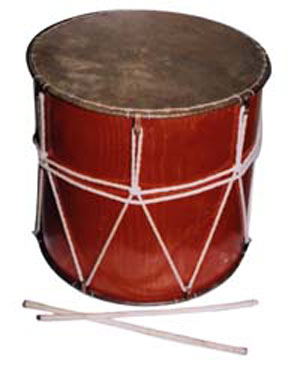 | 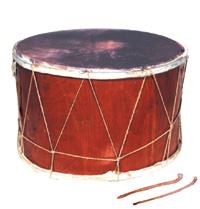 |
| Armpit drum | Small drum | Big drum (Kos) |
 | 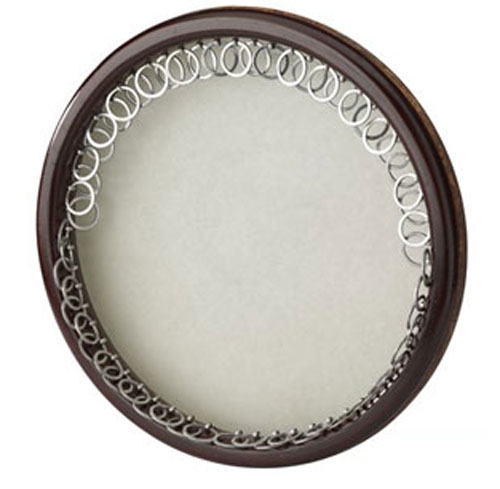 |  |
| Double drum | Tambourine | Drum |
 |  | |
| Laggutu drum | Dumbek drum | |
Wind instruments | ||
 |  | 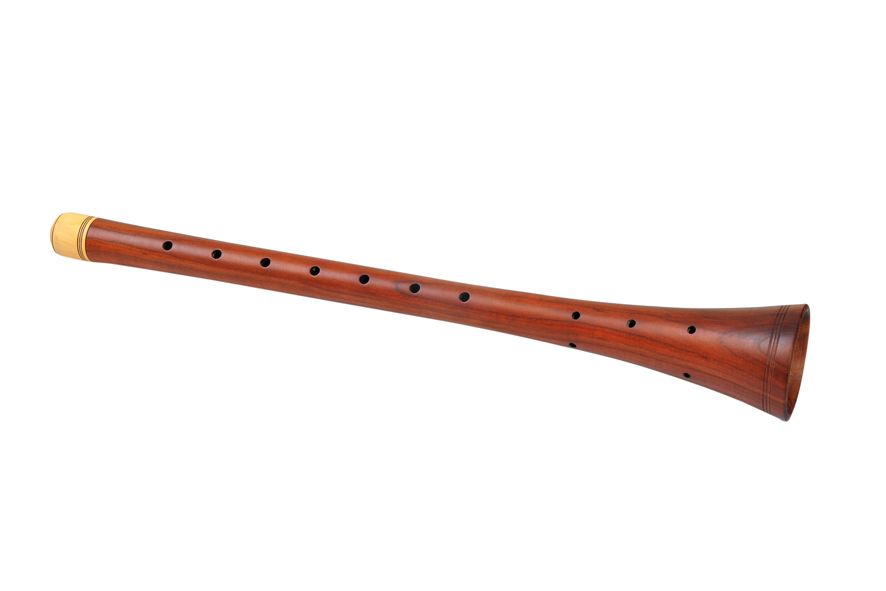 |
| Ney-flute | Balaban | Zourna |
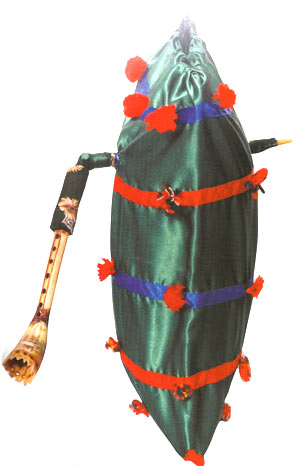 |  |  |
| Tulum | Pipe | Garmon |
Stringed instruments | ||
 | .jpg) |  |
| Gobuz | Choghur | Chegane |
.jpg) |  |  |
| Lute | Berbet | Shirvan tenbur |
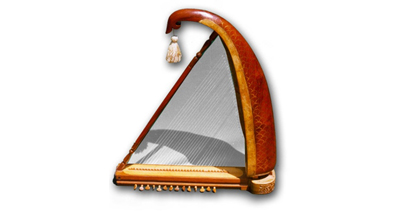 | 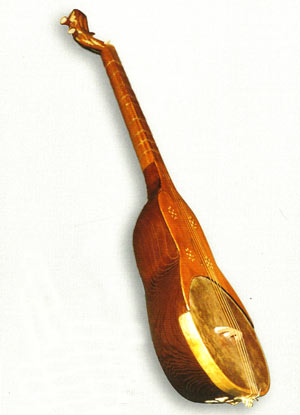 | 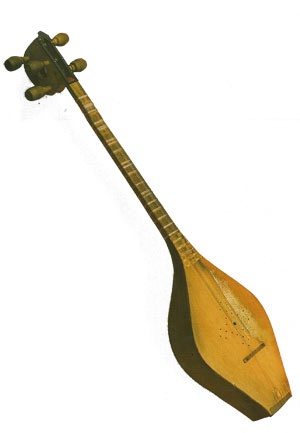 |
| Sentur | Cheng | Rud |
 |  |  |
| Saz | Tar | Kamancha |
 |  | |
| Canon | Ud | |
THE ESTABLISHMENT AND DEVELOPMENT OF AZERBAIJANI THEATER
The Establishment and Development of Azerbaijani Theater Azerbaijani Theatre are closely connected with the activity, life, festivities, wedding traditions, and outlook of the people. Ancient traditional ceremonies, such as „Sayachy“, „Novruz“, and „Gevsech“ encompass theatrical elements such as choruses, dances, various archetypical characters, and dialogues in dramatic plays. The most important moment of the ceremony of Novruz, in the game „Kosa-Kosa“, is the pattern of the theatrical plays. The game is characterized by a plot, dramatic moments, and actors in masks who wear special clothes. The episodes „Khan-Khan“, „Dancing of Mutribs“ („mutrib“ means „a boy in woman’s dress“), „The Competition Between the Bride and Mother-In-Law“ and others performed at wedding ceremonies reveal the importance of elements of games and performance. The elements of a stage theatre are also strong in a widespread ceremony „Yugh“, at the meetings of Ozans‘ and Ashugs, in the scenes of „Zorxana“, and in rope-dancers‘ shows.
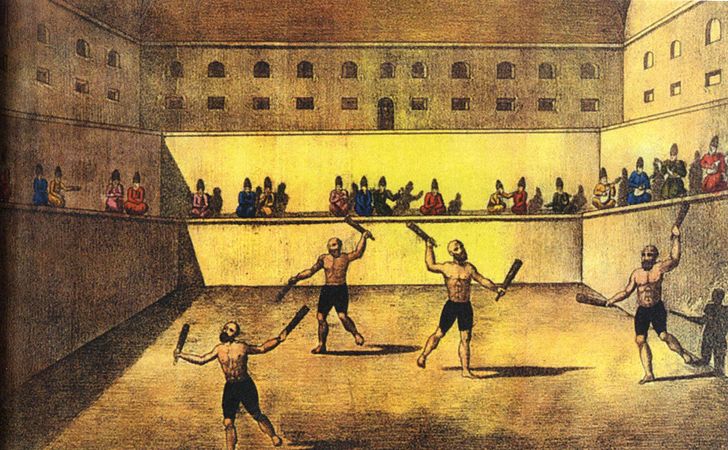
Folklore theatre played a great role in the development of the professional theatre of Azerbaijan.
The history of Azerbaijani theatre dates back to the staging of „Lenkeran khanin veziri“ (Vezir of Lenkoran Khanate ) and „Hadji Gara“ by M.F.Akhundov in March and April of 1873. These were performed by pupils of the school of realism with the close participation of N. Vezirov and A. Adygozelov (Gorani) and were the stimulus for the establishment of the national theatre.
Leading intellectuals of Azerbaijan and teachers later graduating from the Gory Seminary staged various performances in Shusha, Nakhichevan and other cities (it is interesting to note that they simultaneously played a number of roles in each performance). Leading teachers and intellectuals, led by U.Melik-Hagnazarov arranged shows in clubs and in Khandemirov’s theatre in Shusha during summer vacations. They mainly staged comedies by M.F.Akhundov („Khyrs-quldurbasan“, „Musyo Jordan ve dervish Mesteli shah“).
Creations by M.F. Akhundov were also performed. The comedies, for example, were staged in Azeri starting in 1876. The most prominent among the leading intellectuals were N. Vezirov, the author of a number of comedies and vaudevilles, B. Badalbeyov, A. Velibeyov, F. Kocherli, H. Sarydjalinski, Mukhtar Muradov, I. Shefibeyov, the famous singer Djabbar Qaryaghdyoghlu (Shusha), M. Sidgi, Dj. Mamedguluzade’s brother Mirza Alekper, playwright E. Sultanov (Nakhichevan), R. Efendiyev (Nukha), etc. From 1870-1880 the amateurs working in different cities of Azerbaijan gradually gathered around the workers of the Baku theatre. Therefore, Baku theatre livened by the late 1880s, in which to the establishment of a permanent theatre team. In 1887, the theatre team in Baku was led by H.Mahmudbekov, S.M.Ganizade and N.Veliyev. They strengthened this team and transformed it into a troupe that started its career as the staff of an independent theatre in 1888.
H.Zerdabi created the first professional theatre troupe „The first Muslim theatrical troupe“ in Baku in 1896. The union of actors was established for the first time in Baku in 1897. The repertoire of Azerbaijani theatre included the plays of national dramatists as M.F.Akhundov, N.Vezirov, H.Vezirov, N.Natimanov, A.Haqverdiyev, Dj. Mamedguluzade and others and was also enriched by creations of Russian (N.V.Gogol, I.S.Turgenev, L.N.Tolstoy and Western European classics (V.Shakespeare, F.Shiller, H.Heyne, Y.B.Molyer). From its very establishment Azerbaijani theatre adhered to the ideas of democracy and enlightenment. Along with the comedies of M.F.Akhundov, such plays as „Musibeti Fakhreddin“ („Misfortune of Fakhraddin“), „Avoiding rain, caught in a rainfall by N.Vezirov, „The ruining house“, „An unhappy young“, „Agha Mukhamed Shah Gadjar“ by A, Hagverdiyev, „Nadanlig“ („Ignorance“), „Nadir Shah“ by N.Narimanov exposed the traditions of feudalism, despotism and tyranny of capitalism.
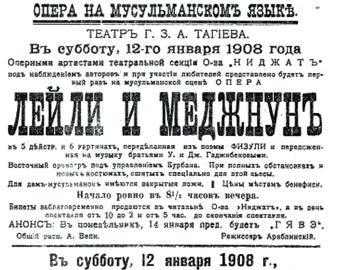
Due to the lack of means for renting an appropriate establishment, the performances were shown in a salon „Granvio“ of the trade passage. The play „Ignorance“ by N.Narimanov was staged there in 1906.
The staging of a masterpiece by U.Hadjibeyov „Leyli and Medjnun“ -the first creation of the national opera in January 1908 (by a new calendar-January 25), laid the foundation of professional musical theatre of Azerbaijan. Within the first year of the establishment of the theatre U’Hadjibeyov’s musical comedies created in 1908-1913 „Leyli and Medjnun“, „Sheikh Senan“, „: No matter this or that“, „Arshin Mal Alan“ dominated the repertoire of the theatre. The following years were marked by enrichment of theatrical repertoire with such creations of Z. Hadjibeyov (musical comedies „Ashug Garib“, „Young at the age of fifty“, „The Married Bachelor“), M.Magomayev („Shah Ismayil“, „M.M.Kazinovsky (musical comedy „Vurhavur“), M.Dj.Amirov (opera „Seyfalmulk“). A new cultural and educational society „Shafa“ and a theatrical department under this society were established in 1910. Yet the theatrical trope of „Shafa“ was weaker compared with „Nidjat“. However, the actors of Nidjat’s trope gradually transferred to Shafa“. D.Bunyadzade, poet Samed Mansur, actors Dj. Zeynalov, A.M. Sherifzade took an active part in the activity of the society and from time to time actors from Nidjat as H.Arablinski, M.A.Aliyev, S.Ruhulla, H.Sarabski were invited to take part in the theatrical shows. The troupe of Shafa not only arranged performances but also dealt with cultural and educational issues related to the theatre. The troupe celebrated the 25th jubilee of Dj. Zeynalov’s creative activity in 1911, the 100th jubilee of M.F.Akhundov in 1911, the fortieth anniversary of N.Vezirov’s theatrical activity. Shafa was characterized not only by performing its shows in towns and villages of Azerbaijan but also by arranging tours to other countries (South Caucasus, Central Asia, North Caucasus, in the cities of Iran, Astrakhan, Kazan, etc). On the whole, both Nidjat and Shafa made a great contribution to the strengthening of the organization and creative activity of the Azerbaijani theatre.
The staging of the comedy „Oluler“ („The deceased“) by Dj. Mamedguluzade in 1916 proved the maturity of the Azerbaijani theatre. The play that stood against ignorance and superstitions, lie and tyranny was a great success. The union of Muslim Artists was founded in Baku in 1917. A.M.Sharifzade was elected the chair of the union. The union, uniting all theatrical troupes, produced performances based on friendship. However, this union survived only up to 1918. The entrepreneurs of Mayilov theatre did not give the actors an opportunity to appear on the stage. Most of the actors went on tours. Only the troupe of U. Hadjibeyov and Z. Hadjibeyov brothers operated permanently.
The troupe involved the actors of theatre, opera and operetta. The theatre of Azerbaijan which reflected the leading, democratic ideas played a great role in the cultural development of people. However, at that period the theatre did not reach the high level of scene ethics.
THEATRE IN SOVIET PERIOD
The State United Theater was established by a decree of July 1, 1920, after the collapse of the Azerbaijan Democratic Republic. This comprised all theatrical troupes and amateur artists working in Baku. The burnt theatre of Taghiyev was restored by the order of the government in 1918.

The theatrical troupe, detaching from the State Theater, started operating as an independent theatre in 1922. The ceremony of the opening of Azerbaijan State Dramatic Theater was accompanied by staging the comedy by M.F.Akhundov (from 1933 the theatre after M.Azizbekov) „Hadji Kara“ on January 17, 1922. The activity of such realist-democrat writers as N.Vezirov, A.Hagverdiyev, Dj.Mamedgulizade, S.S.Akhundov, that contributed to the theatre and culture formation and development of Azeri dramaturgy and speeches in media of other prominent workers of literature and art, actors and producers as N.Narimanov, U.Hadjybeyov, M.Magomayev and Dj. Djabbarly played an important role in the determination of correct attitude to classical heritage of national and world dramaturges and principles of theatre development.
The repertoire of the theatre of 1920th was created in conditions of sharp struggle against formalist and vulgar socialist trends. One of the most important problems facing the theatre was the increase in quality of ideal-artistic level of performances. Translated plays as well as creations of Azeri dramaturges, especially the plays of Dj. Djabbarly added to the repertoire of the theatre. Those years were marked by staging of such creations as „The deceased“ (Dj.Mamedgulizade), „Lachyn nest“ (S.S.Akhundov), „Sheikh Sanan“, „The Duke“ (H.Djavid), „Aydin“, „Ogtay Eloglu“, „Sevil“, „The Bride of a Fire“ (Dj.Djabbarly), „The Controller“ (N.V.Qoqol), „The Lower Depths“ (M.Qorki), „The Gypsies“ (F.Shiller), „Othello“ (W.Shakespeare), „Zaqmuk“ (A.M.Qlebov), „The Spring Love“ (K.A.Treynov), „The Laughing Man“ (V.Gugo), etc.
Due to the search of new forms some theatrical performances did not gain success. But all that could not have a significant impact on the common development of the theatre following the path of realistic art. Such theatre actors as A.M.Sharifzade, U.Radjab, M.A.Aliyev, S.Ruhulla, M.Davudova, I.Hidayatzade, R.Tahmasib, K.Ziya, M.Mardanov, M.Velikhanly, A.Qurbanov, S.Hadjiyeva, A, Mamedova, M.Senani, Q.Topuriya, M.Yermakova (Makhfura), producers A.Tuganov and first representatives of Baku Theater College F.Gadiri, R.Efganly, I.Daghistanly, etc created in the 1920th. 1935-1941st are marked for the maturity of the Azerbaijan State Theater. At that time theatre produced plays, covering contemporary life as „The Life“ (1937, M.Ibragimov), „The Wedding“ (1939, S.Rahman), historical dramas as „Vagif“, „Khanlar“ (1938, 1939, S.Vurgun), „Gachag Nebi“ (1940, S.Rustam).
In 1948 producer A.Iskenderov, actors M.A.Aliyev, M.Davudova, S.Ruhulla, R.Afganly, K.Ziya, I.Daghestanly, painter N.Fatullayev were presented the State Award of USSR for the performance „Oriental Morning“ (A.Mamedkhanly). On the same year, the theatre made a successful tour to Moscow.
The year of 1975 celebrated the 75th jubilee of Azerbaijani theatre. By the order of then-working Supreme Council of USSR, the theatre was conferred with the Order of Red Labor Flag. S.Ruhulla, M.Amirov, M.Davudova deserved the title of popular artists of USSR.
In 1955-1960 the theatre produced a number of interesting shows on classical and contemporary topics: „The ophthalmologist“ (1955, I.Safarli), „Aligulu’s wedding“, “ A lie“ (1960, 1965, S.Rahman), „The Fire“ (1961, M.Guseyn), „A Village girl“, „The punky hearth“ (1962, 1967, M.Ibragimov), „You are always in my heart“, „I’m not able to forget“, „The lost diaries“ (1964, 1968, 1969, I.Efendiyev), „The Deceased“ (1966, Dj.Mamedguluzade), „Without you“(1967, Sh.Gurbanov), „The second part“ (1969, V. Vahabzade), etc. At that period the theatre successfully staged a number of creations by Azeri and foreign dramaturges, for example, „Sheikh Sanan“ (1956, H.Djavid), „Djavashir“ (1957, M.Guseyn), „Peri Jadu“ (1957, A.Hagverdiyev), „Strange person“ (1957, N.Hikmet), „Uncle Vanya“ (1959, A.R.Chekhov), „Maria Tudor“ (1962, V.Gugo), „Antony and Cleopatra“ (1964, W.Shakespeare), „Migrants“ (1964, Dj. F.Bashkut), „A maiden from Orleans“(1965, F.Shiller), „The Ill-fated Girl“ (1968, A.Shirvanzade), „Dead while alive“(1968, L.N.Tolstoi), etc. During ten days of literature and art of Azerbaijan, the theatre demonstrated such performances as „Othello“ (W.Shakespeare), „Almas“ (Dj.Dhabbatly), „Farhad and Shirin“ (S.Vurgun), etc.
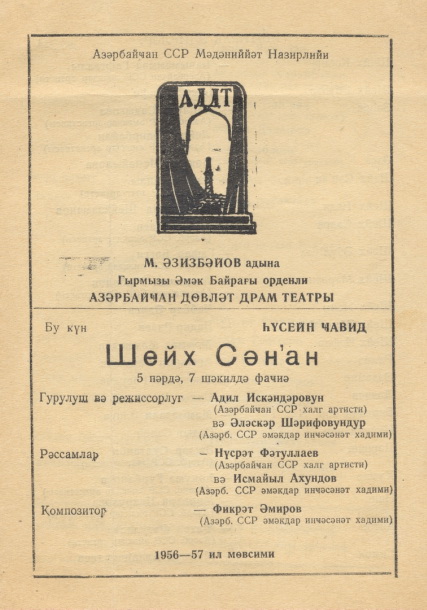
Like other spheres, the theatre also experienced a period of renaissance in the 1970th. Due to the assistance, support and true patronage of Heydar Alirza oglu Aliyev to the theatre and art workers, the art of national theatre made its way to stable development. The year 1974 was marked by the unexampled celebration of the 100th anniversary of the Azerbaijani Theater. H.A.Aliyev, first secretary of then working Central Committee of Azerbaijan made a meaningful report. H.A.Aliyev also made a report on the art, artists and mastery at a party in the Gulistan Palace. At that time a great many artists were provided with new lodgings, deserved honoured titles and presented awards. The same year three prominent artists of the Azerbaijan State Academic Drama Theater-M. Mamedov, I.Daghestanly and I.Osmanly- deserved the best title of the former USSR-the title of honoured artists of the Union. The theatre went on tour to Moscow from June 27 to July 10 in 1974 and was conferred with Lenin’s order. The theatre demonstrated such performances as „A man“ by S.Vurgun, „The song was left in mountains“ by I.Efendiyev, „The judgement of the time“ by N.Poqorin, „Knavery and love“ by F.Shiller, „The storm“ by W.Shakespeare, „The deceased“ by Dj.Mamedguluzade.
The performances of the 1980th are notable for the colourfulness of themes, interesting playing of actors and producers‘ work. Such popular artists as S.Bashirzade, A.Panahova, A.Gadirov, N.Melikova, Y.Nuriyev, M.Sadygova, Seyavush Aslan, H.Turabov, honoured artists M.A.rafov, Z. Aghakishiyeva, A.Vekikhanly, H.Qurbanov, R.Dadashov, R.Azimov, N.Aliyev, A.Aliyeva, B.Askerov, S.Ibragimova, H.Ismayilov, H.Mehbaliyeva, R.Melikov, L.Mamedbeyov, M.Mirzayev, M.Novruzova, M.Sadygov, K.Khudaverdiyev, M.Hadjybeyov, E.Hashymzade, B.Djafarova, producers-honoured art workers A.Kazymov, M.Ferzelibeyov, painters Elchin (chief painter), I.Ismayilov, etc created at the end of these years. A studio of young artists also operated within the theatre. Performances were shown on the small stage in 1982.
Economic, social and political events occurring in Azerbaijan since 1988 had a negative impact on the theatre as well. Armenians created unprecedented tragedy in the country and backed by foreign protectors occupied our lands. They killed innocent people and committed the Hodjaly genocide. They caused the tragedy of January 20, 1990. They ruined establishments and destroyed the national cultural monuments of our people. They took our best creations of art and introduced them to foreign countries as belonging to them.
The economic relations with all countries, ideological and cultural ties of our country weakened. The military terror which destroyed the ideological and political life of Azerbaijan and created the regressive atmosphere, stroke a hard blow to our national culture, art, including theatre. The creative activity of the theatre experienced depression.
DEVELOPMENT OF THEATRE ART IN THE INDEPENDENT REPUBLIC OF AZERBAIJAN
In 1991, on October 18, the Republic of Azerbaijan gained its independence. Since 1993, the social welfare of the population and civic activity has increased.
The Pantomime Theatre, Municipal Theatre, YUG Theatre, Youth Theatre, miniature Theatre, Chamber Theatre, which was newly established and received the status of „State Theatre“, proved themselves well. They went down the path of development of art through genre, variety of forms, the richness of styles.
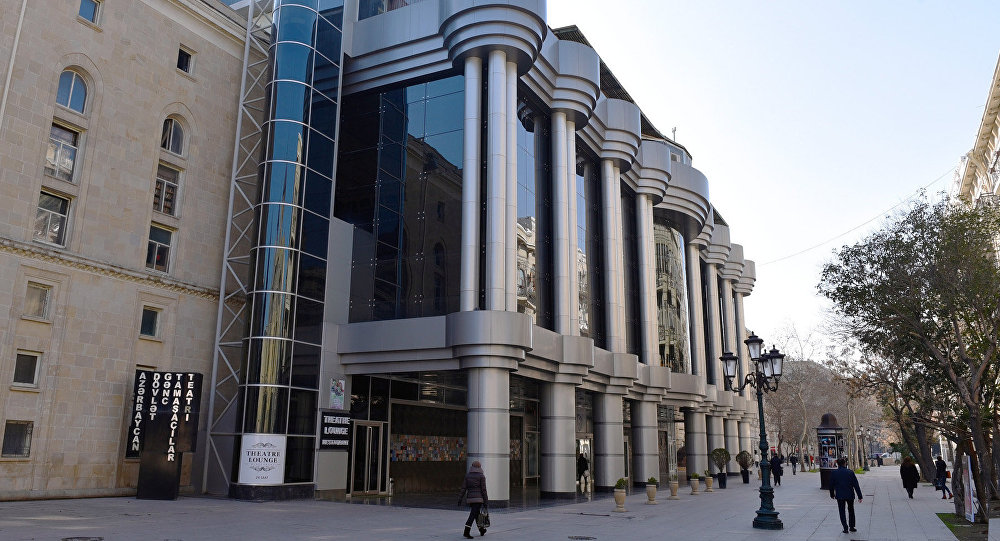
In recent years, a new stage has begun in the development of the Azerbaijani Theatre, which has passed a long and glorious history. This development is manifested, first of all, in strengthening the material and technical base of theatres in accordance with modern world standards, in preparing new interesting performances as a result of a creative search of collectives, in expanding the exchange of experience with influential western, including European theatres, etc. shows.
Undoubtedly, the merits of the national leader of the Azerbaijani people Heydar Aliyev, who has always won the sympathy of those who worked in this field as a great patron of culture and art in all periods of his leadership in our country in the new way of development of our theatres are invaluable. This policy of the Great Leader is currently being successfully continued by Azerbaijani President Ilham Aliyev. It was on the direct initiative of President Ilham Aliyev that a number of fundamental state documents on the development of theatrical art have been adopted in the country in recent years.
In 2006, the law of the Republic of Azerbaijan “on theatre and theatrical activity” was adopted in Azerbaijan. The law reflecting the modern stage of development of this ancient creative sphere officially stated that the state attaches special importance to theatrical art. In 2007, President Ilham Aliyev signed another important document on the art of theatre – an order “on the development of the art of Azerbaijani theater”. In 2009, on May 18, the head of state approved the state program “Azerbaijan Theater in 2009-2019”.
The state program defining the 10-year development prospects of the Azerbaijani theater is the protection of the rich artistic heritage and creative traditions of our theatre, its integration into European culture, modernization of material and technical bases of theatres, repair of theatre buildings in line with world standards, it serves the purpose of efficient use of information and financial resources and formation of repertoire in accordance with today’s requirements.
International theatre conferences held within the framework of the state program in Baku should also be regarded as an important event. Within the framework of the program, repair and restoration works were carried out at a high level in the buildings of the Azerbaijan State Puppet Theater named after Abdullah Shaig, Azerbaijan State Russian Drama Theater named after S. Vurgun, Azerbaijan State National Theater of Young Spectators, Azerbaijan State Academic National Drama Theater, Mingachevir, Aghdam, and Fuzuli. Due to internal opportunities, a part of the building of the state Pantomime Theatre was restored and handed over to the audience.
The building problem of the Sumgayit State Musical Drama Theatre named after Huseyn Arablinski, which has not been solved for 40 years, has been solved radically. Iravan State Azerbaijan Drama Theatre, which lasted for many years in the absence of a building, ceased its life as a refugee, and the theater was provided with a beautiful building. As a result of the work done, the building of the Azerbaijan State Musical Theatre was repaired and put into operation in accordance with world standards. In recent years, dozens of artists have been given high honorary titles by orders of the head of state. Every year, 100 talented artists receive a presidential pension. Housing and other problems of hundreds of people are being solved. Every year, persons who have great extraordinary services before the art of Azerbaijan are included in the list of lifetime scholarship recipients.
Also, in accordance with the implementation of the State program, new opportunities for training abroad are being created in the theater sector.
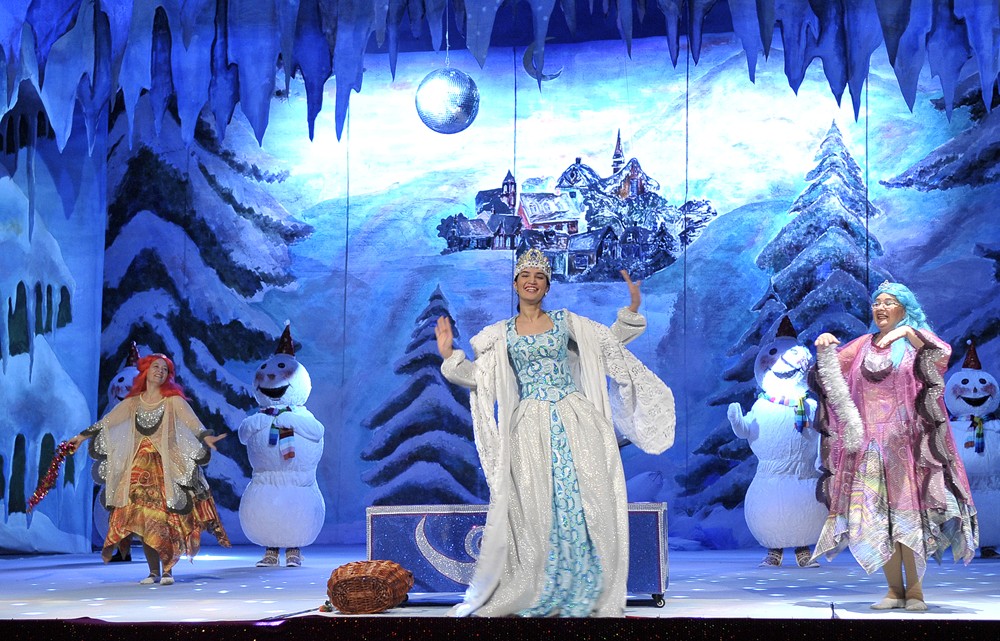
Over the years, Azerbaijani theaters have been staged in more than 30 countries of the world, including the USA, Germany, Turkey, Russia, Belarus, Georgia, France, Morocco, Finland, İran, Egypt, Holland, Estonia, Bulgaria, Ukraine, Turkmenistan, Tajikistan, Switzerland, Moldova, Serbia, the Russian Federation represented our country with dignity at international events in the Republic of Bashkortostan. Over the past period, more than 10 theater groups from foreign countries have arrived in Azerbaijan. At the same time, 30 well-known directors, choreographers, and theater artists from foreign countries have been invited to our country to produce a performance.
The development of theatrical art is explained not only by a network of state theaters. Today, new production centers are emerging in our country, benefiting from the private sector and business relations. Increased interest in the theater in society leads to the emergence of new forms of theatrical activity. Increased interest in the theater in society leads to the emergence of new forms of theatrical activity. This also testifies to the Working Mechanism of the laws and other state documents adopted in connection with the theatre. From this point of view, the activity of the creative scene “ÜNS”, which performs interesting projects as the most modern example of new theatrical forms, can be noted.
“National Theater day” was established in our country by the Order of President Ilham Aliyev, dated March 2013, 1, who always pays attention and care to artists. According to the decree, taking into account the importance and role of National Theater in the development of national culture and cultural life of the country, it was decided to celebrate March 10 as “National Theater day” in the Republic of Azerbaijan. This date is marked by a series of events all over the country.
The successes of the Azerbaijani theatre are still ahead. We believe that in the coming years, the Azerbaijani Theatre will achieve even greater successes with interesting plays.
The history of the film industry in Azerbaijan began on August 2, 1898. The first movies were newsreel documentaries („Fire of the Bibi Heybat Oil Gusher“, “ Oil Gusher in Balakhany“, „Festival In City Park“, „Caucasian Dance“, etc.) and one short motion picture („You’re Caught Up“).
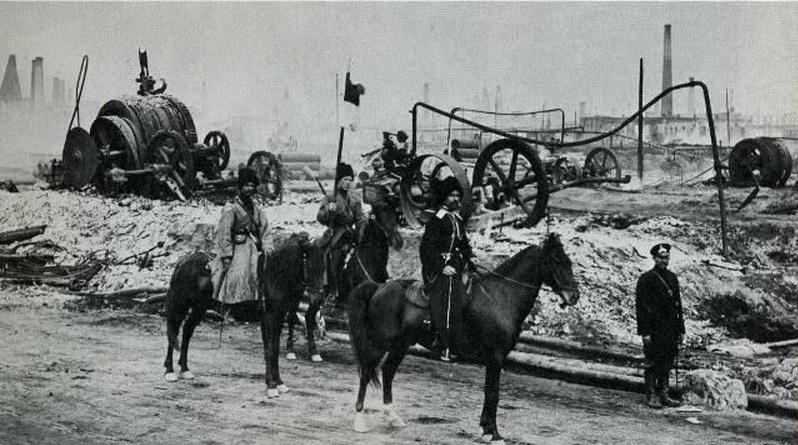
The first film distribution offices were established in Baku, Tbilisi and Yerevan by stock companies (trade houses) founded by the Pirone brothers in the Caucasus in 1915. That same year, the company started the production of Azerbaijan’s first feature film, „The Reign of Oil and Millions“, based on M. Musabeyov’s novel of the same name, with the help of the financing of oil tycoons. Film director B. N. Svetlov was invited from St. Petersburg to produce the film. The landscape scenes were shot in Baku and suburban villages, while the indoor scenes were shot in a Tbilisi studio. The role of Lutveli bey was played by N.Arablinsky. The first comedy in Azerbaijan was produced based on the „Arshin Mal Alan“ opera by U. Hajibeyov in Baku in 1916. The full-length movie „Celebrations of the Anniversary of Independence of Azerbaijan“ went on screen in 1919.
The Photo and Film Organization of Azerbaijan (PFOA) was the establishment in 1923. The PFOA was involved in nationalization and integration of photo agencies, cinemas and movie distribution offices, owned by individual businessmen. The PFOA was at that time also operating the cinemas Teyyare, Edison, Million, Ladya, Medenchi and others in Baku.
The PFOA-produced bi-serial „The Maiden Tower Legend“ (film director – V. V. Vallyuzek) was screened in 1924. The film producers highlighted Eastern exotics in this ethnography-oriented movie.
In 1925, Sh. Mahmudbayov initiated the establishment of a studio under the PFOA for training film directors and actors in Azerbaijan. This is the studio where J. Jabbarly, M. Mikayilov, A. Tahirov and others studied. Such prominent film directors as V. I. Pugovkin, I. A. Shevchenko. N. M. Shengelaya, M. E. Chiaureli, as well as cameramen G. M. Lembek, V. R. Lemke, A. V. Galperin, I. S. Frolov, A. M. Feldman, L. L. Kosmatov, V. M. Shneyder and others were invited to Baku, while D.Dzhabbarly, A.M.Sherifzade and others were involved in movie production for the purposes of improving movie production quality and the development of national resources.
The PFOA was later known as „Azdovletkino“, (1926-1930), „Azerkino“ (1930-1933), Azfilm (1933), Azerdovletsenayesi (1934), Azerfilm (1935-1940) and The Baku Film Studio (1941-1959). It was named J.Jabbarly’s Azerbaycanfilm studio in 1961.
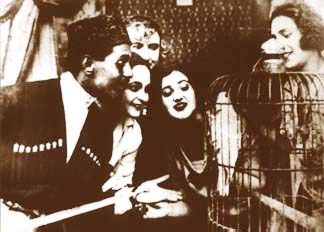
The struggle against ignorance and illiteracy, the revolution, and rights of women were the main subjects of Azeri films in the 1920s. The most successful ones were Bismillah (1925, film directors – A. M. Sherifzade and A. Valovo), „A House On the Volcano“ (1929, film director – A .I. Bek-Nazarov, in cooperation with Azerkino ), „Hadzhi Gara“ (1929, film director – A. M. Sherifzade), as well as „Sevil“ (1929, film director – A. I. Bek-Nazarov), which pictured the image of an Azeri woman struggling for freedom.
In the twenties of the XX century, local cameramen and reps of foreign movie companies were shooting in Baku documentary films and newsreel on the life of city, oil mines. In 1920 first newsreel titled „Official march of 9 golden Army in Baku“ was shot. The same year newsreel titled „The first convention of eastern nations“ was created. Next years newsreels on certain events were prepared: „3rd anniversary of Soviet Azerbaijan“ (1923), „Fire in Surakhani oil mines“ (1923), „Funeral of Nariman Narimanov“ (1925), „Arrival of M.Frunze to Baku“ (1925) and etc documentary films, as well popular science films started to be produced.
In 1925 director A.M.Sherifzade completed the shooting of the film „Journey to Azerbaijan“ on the cultural and economic life of the republic. In the twenties, besides historical documentaries, production of newsreel „Azerbaijani screen“ started (4-5 issues a year) in Azeri cinema that was familiarizing the audience with successes of the republic in economic and cultural fields. These years talented directors such as M.Mikayilov, A.A.Litvinov, A.A.Makovsky, cameramen like V.P.Lemke, A.Valovoy, A.Tolchan, I.S.Tartakovsky were working in Azeri documentary. B.V.Pumyansky, S.Badalov, V.Yeremeyev, A.Hasanov, E.Elekberov and others started to work in this field in the thirties. Movies of these masters reflected the life of the republic, kolkhoz construction, successes in the cultural field, equipment of the oil industry with a new technique in the first five years and etc. Efforts in the field of creation of the image of the perfect man in the frame of the documentary were artistic achievements of that time.
The movies produced in the early 1930s are features picturing contemporary life, the history and socialist revolution, such as Latif, Ismet (1930, 1934, film director – M. Mikailov), The Diamond and The New Horizon (1936, 1940, film directors – A. Guliyev and G. M. Braginsky), The Baku Residents (1938, film director – V. V. Turin), The Villagers (1940, film director – S. Mardanov).
FILMS MADE IN AZERBAIJAN
- You Are Caught. (silent, 1898) Director: A.M. Mishon
- Caucasian Dance. (silent, 1898) Director: A.M. Mishon
- Wife. (silent, 1915) Director: Boris Svetlov
- Kingdom Of Oil And Millions. (silent, 1915) Director: Boris Svetlov
- Old Story In New Way. (silent, 1915) Director: Boris Svetlov
- How Wives Make Career For Husbands. (silent, 1916) Director: Boris Svetlov
- Arshin Mal Alan. (silent, 1916) Director: Boris Svetlov
- Barefoot Love (Incident In Baku). (silent, 1916) Director: Boris Svetlov
- Prince Demir Bulat. (silent, 1916) Director: Boris Svetlov
- An Hour Before Death. (silent, 1916) Director: Boris Svetlov
- History Of A Humiliation. (silent, 1918) Director: Boris Svetlov
- Owl. (silent, 1924) Director: Georgi Kravchenko
- Maiden Tower. (silent, 1924) Director: Vladimir Balyuzek
- Miner-Oilman In Rest And Treatment. (silent, 1924) Director: Alexander Litvinov
- Bismillah. (silent, 1925) Director: A.M. Sherifzade
- Quits. (silent, 1925) Director: Alexander Litvinov
- In Different Coasts (Hand-To-Hand). (silent, 1926) Director: Alexander Litvinov
- Fishers. (silent, 1927) Director: Rza Tahmasib
- Daughter Of Gilan. (silent, 1928) Director: Leo Mur
- Haji Gara (Sona). (silent, 1928) Director: A.M. Sherifzade
- House On Volcano. (silent, 1928) Director: A. Beknazarov
- Sevil. (silent 1929) Director: A. Beknazarov
- First Komsomol Well. (silent, 1930) Director: Boris Medvedev, Ivan Frolov
- Golden Bush (Attack On Mountains). (silent, 1930) Director: Beypolat Askarov
- Latif (Face To Face). (silent, 1930) Director: Mikayil Mikayilov
- Nikita Ivanovich and socialism. (silent, 1931) Director: A. Makovsky
- Directive Bow. (silent, 1932) Director: Agarza Guliyev
- Handless People. (silent, 1932) Director: Igor Savchenko
- 26 Commissars. (silent, 1932) Director: Nikolay Shengelaya.
- Friends (Mukhtar). (silent, 1934) Director: Agarza Guliyev
- 2 Comrades. (silent, 1934) Director: A. Makovsky
- Ismet (Destruction Of Habit). (silent, 1934) Director: Mikayil Mikayilov
- Sixth Sense. (silent, 1935) Director: Mikayil Mikayilov
- On The Coast of Blue Sea. (sound, 1935) Director: Boris Barmet, Semed Merdanov
- Dancing Turtles. (silent, 1935) Director: Alexander Popov
- Love Game. (silent, 1935) Director: A. M. Sherifzade
- Almaz. (silent, 1936) Director: Agarza Guliyev, Grigori Braginsky
- Naughty Band. (sound, 1937) Director: Alexander Popov
- Residents of Baku. (sound, 1938) Director: Viktor Turin
- Get Ready. (sound, 1939) Director: Mikayil Mikayilov
- Villagers. (sound, 1940) Director: Semed Merdanov
- New Horizon. (sound, 1940) Director: Agarza Guliyev, Grigori Braginsky
- Sebuhi. (1941) Director: A. Beknazarov
- Son Of Homeland. (1941) Director: Agarza Guliyev
- Bakhtiyar. (1942) Director: Agarza Guliyev
- Soviet Athlete. (1942) Director: Mikayil Mikayilov
- Present. (1942) Director: Huseyn Seyidzade, Niyazi Badalov
- One Family. (1943) Director: Grigori Aleksandrov, Rza Tehmasib, Mikayil Mikayilov
- Submarine T-9. (1943) Director: Alexander Ivanov, Nikolay Leshchenko
- Arshyn Mal Alan. (1945) Director: Rza Tehmasib, Nikolay Leshchenko
- Fatali Khan. (1947) Director: Yefim Dzigan
- Lights Of Baku. (1950) Director: Alexander Zarikhi, Iosif Kheyfits, Rza Tehmasib
- To Our Native People. (1954) Director: Yan Frid, Huseyn Seyidzade
- Bakhtiyar. (1955) Director: Letif Safarov
- Date. (1955) Director: Tofig Tagyzade
- Black Stones. (1956) Director: Agarza Guliyev
- Either This Or That. (1956) Director: Huseyn Seyidzade
- Two From The Same Block. (1957) Director: I. Gurin, Ejder Ibrahimov
- Under Broiling Sun. (1957) Director: Letif Safarov
- The Way Song Is Created. (1957) Director: Rza Tehmasib, Mikayil Mikayilov
- Box Of ‘Kazbek’. (1958) Director: Reshid Atamalybeyov
- Crawling Shadows. (1958) Director: Ismayil Efendiyev, Shua Sheykhov
- Her Big Heart. (1958) Director: Ejder Ibrahimov
- Stepmother. (1958) Director: Hebib Ismayilov
- On The Far Shores. (1958) Director: Tofig Tagyzade
- New Year Night. (1958) Director: Mirza Mustafayev
- Secret Of A Castle. (1959) Director: Alisattar Atakishiyev
- True Friend. (1959) Director: Tofig Tagyzade
- Can He Be Forgiven? (1959) Director: Rza Tehmasib
- Aygun. (1960) Director: Kamil Rustambeyov
- Money By Unfair Means. (1960) Director: Shamil Mahmudbeyov
- Koroglu. (1960) Director: Huseyn Seyidzade
- Strange Story. (1960) Director: Shua Sheykhov
- Adventure Of Mullah. (1960) Director: T. Sasanpur
- Morning. (1960) Director: Agarza Guliyev
- Incident On The Road. (1960) Director: Rasim Ojagov
- Our Street. (1961) Director: Alisattar Atakishiyev
- Life Teaches. (1961) Director: Zeynab Kazymova
- Song Of Blind. (1961) Director: Rauf Kazymovsky
- Leyli & Mejnun. (1961) Director: Letif Safarov
- Mateo Falkone. (1961) Director: Tofig Tagyzade
- Big Support. (1962) Director: Hebib Ismayilov
- Labor And Rose. (1962) Director: Tofig Tagyzade
- Baby. (1962) Director: Rauf Kazymovsky
- Fall Concert. (1962) Director: Reshid Atamalybeyov
- Telephone Girl. (1962) Director: Hasan Seyidbeyli
- Where Is Ahmad? (1963) Director: Adil Isgandarov
- Island Of Miracles. (1963) Director: Hasan Seyidbeyli
- Romeo Is My Friend. (1963) Director: Shamil Mahmudbeyov
- Whom We Love Most. (1964, almanac) 1. Crossing Mountainous Forest – Director: Zeynab Kazymova 2. Top – Director: Arif Babayev 3. Attractive Power – Director: Hasan Seyidbeyli
- Magical Gown. (1964) Director: Alisattar Atakishiyev
- Petition For Water. (1964) Director: T. Sasanpur
- Ulduz. (1964) Director: Agarza Guliyev
- Chained Man. (1964) Director: Kamil Rustambeyov
- Arshyn Mal Alan. (1965) Director: Tofig Tagyzade
- More Two. (1965) Director: Nazim Abbasov
- Invincible Battalion. (1965) Director: Huseyn Seyidzade
- Wool Shawl. (1965) Director: Rauf Kazymovsky
- Investigation Continued. (1966) Director: Alisattar Atakishiyev
- The 26. (1966) Director: Ejder Ibrahimov
- Swarthy. (1966, almanac) 1. Official Lift. – Director: Rufat Shabanov 2. Swarthy. – Director: Shamil Mahmudbeyov
- Why You Keep Silence? (1966) Director: Hasan Seyidbeyli
- My Brother, Life Is Beautiful. (1966) Director: Ramiz Asgarov, Antonis Voyazos
- Once Upon A Time… (1967) Director: Eldar Guliyev
- Battle In Mountains. (1967) Director: Kamil Rustambeyov
- Man Settles Down. (1967) Director: Arif Babayev
- Lamb. (1967) Director: I. Safaralibeyov
- Mailbox. (1967) Director: Rauf Kazymovsky
- Coastal Garden. (1967) Director: Vasif Babayev
- Land. Sea. Fire. Sky. (1967) Director: Shamil Mahmudbeyov
- In The Name Of The Law. (1968) Director: Mukhtar Dadashov
- I Was Not Beauty. (1968) Director: Tofig Tagyzade, Agaryza Guliyev, Ramiz Asgarov
- Stones Of Our City. (1968) Director: Tofig Ismayilov
- Last Night Of Childhood. (1968) Director: Arif Babayev.
- Beshir Safaroglu. (1969) Director: Rauf Kazymovsky
- In A Southern City. (1969) Director: Eldar Guliyev
- Our Teacher Jebish. (1969) Director: Hasan Seyidbeyli
- Crazy Kur. (1969) Director: Huseyn Seyidzade
- Bread In Equal. (1969) Director: Shamil Mahmudbeyov
- Baby Carriage. (1969) Director: F. Hajiyev
- Rhythms Of Absheron. (1970) Director: Eldar Guliyev
- Photo ‘Fantaziya’. (1970) Director: Rauf Nagiyev
- General. (1970) Director: Rauf Kazymovsky
- Treasure. (1970) Director: Jemil Farajov
- Expectation. (1970) Director: Tofig Ismayilov
- Find That Girl. (1970) Director: Hasan Seyidbeyli
- Sevil. (1970) Director: Vladimir Gorriker
- I Would Like 7 Sons. (1970) Director: Tofig Tagyzade
- Heavy Cupboard. (1971) Director: Jemil Farajov
- Last Passing. (1971) Director: Kamil Rustambeyov
- Most Necessary Interview. Director: Eldar Guliyev
- Day Passed. (1971) Director: Arif Babayev
- Leila And Her Friends. (1971) Director: Ogtay Babazade
- Sings Muslum Magomayev. (1971) Director: Tofig Ismayilov
- Stars Do Not Go Out. (1971) Director: Ejder Ibrahimov
- Cherry Tree. (1972) Director: Tofig Ismayilov
- Life Tests Us. (1972) Director: Shamil Mahmudbeyov
- Life, Who You Belong To? (1972) Director: Emirhuseyn Mejidov
- Coast Of Memories. (1972) Director: Yalchyn Efendiyev
- Flamingo. (1972) Director: Tofig Tagyzade
- Violin Adventure. (1972) Director: Shamil Mahmudbeyov
- Long Live Girls! (1972) Director: Eldar Guliyev
- Boys Of Our Street. (1973) Director: Tofig Ismayilov
- Sea Is Dangerous. (1973) Director: Enver Ebluj
- On The Wings of Song. (1973) Director: Kamil Rustambeyov
- First Hour Of Life. (1973) Director: Arif Babayev
- Fair Wind. (1973) Director: Eldar Guliyev
- Nesimi. (1973) Director: Hasan Seyidbeyli
- Smile Of Actress. (1974) Director: Rauf Kazymovsky
- In The Track Of Carriers. (1974) Director: Tofig Ismayilov
- Gatyr Mammad. (1974) Director: Rasim Ojagov
- Girl, Boy And Lion. (1974) Director: Chingiz Rahimov
- The 1001st Tour. (1974) Director: Ogtay Mirgasymov
- Pages Of Life. (1974, almanac) 1. Rivals – Director: Teymur Bekirzade 2. Baladadash’s First Love – Director: Fikret Aliyev 3. Lesson Of Song – Director: Gulbeniz Azimzade
- Apple Like Apple. (1975) Director: Arif Babayev
- Dede Gorgud. (1975) Director: Tofig Tagyzade
- 4 Sundays. (1975) Director: Shamil Mahmudbeyov
- If We Are Together. (1975) Director: Vladimir Semakov
- Firengiz. (1975) Director: Abdul Mahmudov
- Look For Us In Mountains. (1976) Director: Nazim Abbasov
- Under Clouds. (1976) Director: Nijat Bekirzade & Teymur Bekirzade
- Dervish Explodes Paris. (1976) Director: Shamil Mahmudbeyov
- One Fine Day. (1976, almanac) 1. Suite – Director: Rustam Ibrahimbeyov 2. One Fine Day – Director: Yuli Gusman
- Cares Of Happiness. (1976) Director: Hasan Seyidbeyli
- Extraordinary Hunting. (1976) Director: Abdul Mahmudov
- Mesozoic Story. (1976) Director: Reshid Atamalybeyov
- Voice Of Pipe. (1976) Director: Rasim Ojagov
- Heart…Heart… (1976) Director: Eldar Guliyev
- Towards Volcano. (1976-1977) Director:Tofig Ismayilov
- Birthday. (1977) Director: Rasim Ojagov
- Blow In The Back. (1977) Director: Arif Babayev
- On The Doorstep Of Unhappiness. (1977) Director: Rauf Nagiyev
- Say You Love Me. (1977) Director: Magsud Ibrahimbeyov
- Garib In The Land Of Genie. (1977) Director: Alisattar Atakishiyev
- Bay Of Joy. (1977) Director: Eldar Guliyev
- Lion Left The Home. (1977) Director: Rasim Ismayilov
- Towads The Wind. (1977) Director: Abdul Mahmudov
- My Wife, My Children. (1978, almanac) 1. Wedding – Director: Nijat Feyzullayev 2. Comfortable Place In Garden – Director: Jemil Farajov 3. My Wife, My Children – Director: Ziyafet Abbasov
- When Owl Comes. (1978) Director: Shamil Mahmudbeyov
- Villa For One Family. (1978) Director: Yuli Gusman
- Dante’s Jubilee. (1978) Director: Gulbeniz Azimzade
- Man Of Home. (1978) Director: Tofig Tagyzade
- Mother-In-Law. (1978) Director: Huseyn Seyidzadev
- In The Fire. (1978) Director: Shamil Mahmudbeyov
- Babek. (1979) Director: Eldar Guliyev
- A Little Bit Spring Holiday. (1979) Director: Nazim Abbasov
- Pardon Us. (1979) Director: Arif Babayev
- Degree Thesis. (1979) Director: Jahangir Mehdiyev
- Dvorjak’s Melody. (1979) Director: Nazim Abbasov
- Investigation. (1979) Director: Rasim Ojagov
- Strange Man. (1979) Director: Ejder Ibrahimov
- I Compose. (1979) Director: Tofig Ismayilov
- Do Not Believe In Nymphs. (1979) Director: Yuri Varnovsky
- Song Interrupted. (1979) Director: Magsud Ibrahimbeyov
- Structure Of The Moment. (1980) Director: Rasim Ismayilov
- Want To Understand. Director: Ogtay Mirgasymov
- Wait For Me. (1980) Director: Kamil Rustambeyov
- Golden Gulf. (1980) Director: Fikret Aliyev
- His Disastrous Love. (1980) Rejossor: Ziyafet Abbasov
- You Cannot Take Island Only. (1980) Director: Gulbeniz Azimzade
- Oh!.. (1980) Director: Jahangir Mehdiyev
- Story On The Road. (1980) Director: Teymur Bekirzade
- Grandfather Of Our Grandfather’s Grandfather. (1981) Director: Tofig Tagyzade
- Closed Door. (1981) Director: Rasim Ojagov
- The Day After Tomorrow Midnight. (1981) Director: Arif Babayev
- Additional Track. (1981) Director: Nijat Bekirzade
- Do Not Be Afraid, I Am With You. (1981) Director: Yuli Gusman
- Singer Land. (1981) Director: Ruslan Shahmaliyev
- Accords Of Long Life. (1981) Director: Anar
- It Must Be So. (1982) Director: Vagif Mustafayev
- Painful Ways. (1982) Director: Tofig Ismayilov
- Silver Van. (1982) Director: Ogtay Mirgasymov
- Working Visit. (1982) Director: Rasim Ismayilov
- Box From Castle. (1982) Director: Gulbeniz Azimzade
- The Elderly… (1982) Director: Elkhan Gasymov, Yefim Abramov
- March. (1982) Director: Jemil Guliyev
- Nizami. (1982) Director: Eldar Guliyev
- Songs of Polad Bulbuloglu. (1982) Director: Tofig Mirzayev
- 7 Beauties. (1982) Director: Felix Slidovker
- Secret Of Vessel Clock. (1983) Director: Rufat Shabanov
- Asif, Vasif, Agasif. (1983) Director: Rasim Ismayilov
- A Piece Of Ice In Warm Sea. (1983) Director: Yuli Gusman
- Fish Day. (1983) Director: Jemil Guliyev
- Want To Marry. (1983) Director: Jahangir Mehdiyev
- Music Teacher. (1983) Director: Tofig Ismayilov
- Last Night of Last Year. (1983) Director: Gulbeniz Azimzade
- Park. (1983) Director: Rasim Ojagov
- Just Married. (1983) Director: Nijat Feyzullayev
- August Has Come. (1984) Director: Gulbeniz Azimzade
- Legend Of Gumushgol. (1984) Director: Eldar Guliyev
- Old Ferry. (1984) Director: Elkhan Gasymov
- Musical Khash. (1984) Director: Vagif Mustafayev
- Knights Of Black Lake. (1984) Director: Enver Ebluj
- Story Of Old Oak. (1984) Director: Fikret Aliyev, Huseyn Mehdiyev
- Story Of Lonely Pomegranate. (1984) Director: Shamil Mahmudbeyov
- Saddle The Horses. (Gachag Nebi, Bloody Cornfield) (1985) Director: Abdul Mahmudov, Hasan Turabov
- Summer Season. (1985) Director: Tofig Tagyzade
- Rain In Holiday. (1985) Director: Jemil Guliyev
- Theft Of Bridegroom. (1985) Director: Jeyhun Mirzayev, Vagif Mustafayev
- Genie In Microdistrict. (1985) Director: Ogtay Mirgasymov
- I Loved You Most Of All. (1985) Director: Rasim Ismayilov
- In State Of Unobviousness. (1986) Director: Farhad Yusifov
- My Only. (1986) Director: Enver Ebluj
- Eddy. (1986) Director: Eldar Guliyev
- Special Situation. (1986) Director: Tofig Ismayilov
- Wait For Sign From Sea. (1986) Director: Jeyhun Mirzayev
- Window Of Grief. (1986) Director: Anar
- 17-Year-Old Boy. (1986) Director: Rufat Shabanov
- City Mowers. (1986) Director: Abdul Mahmudov, Huseyn Mehdiyev
- Aphrodite’s Arms. (1987) Director: Davud Imanov
- Provoker. (1987) Director: Yefim Abramov
- Examination. (1987) Director: Gulbeniz Azimzade
- Word Of Man. (1987) Director: Jahangir Mehdiyev
- 40 Degrees In Shadow. (1987) Director: Leila Safarova
- Another Life. (1987) Director: Rasim Ojagov
- Pirverdi’s Cock. (1987) Director: Ramiz Ezizbeyli
- Milk Tooth Ache. (1987) Director: Huseyn Mehdiyev
- Sureyya. (1987) Director: Tofig Ismayilov
- Devil In Sight. (1987) Director: Ogtay Mirgasymov
- Fall Of Leaves In Summer. (1987) Director: Tofig Ismayilov
- Boring Story. (1988) Director: Jemil Guliyev
- Fatima. (1988) Director: Dedo Matekoso
- Man Of Young Woman. (1988) Director: Jahangir Mehdiyev
- Inclination. (1988) Director: Samir Xabshi
- Murad-Sad. (1988) Director: Oleg Safaraliyev
- Rascal. (1988) Director: Vagif Mustafayev
- Live, Golden Fish. (1988) Director: Nijat Feyzullayev
- Personal Visit To German Clinic. (1988) Director: Rasim Ismayilov
- One For All. (1989) Director: Murad Ibrahimbeyov
- Vacancy. (1989) Director: Jahangir Shahmuradov
- Circle. (1989) Director: Ziya Shykhlinsky
- Invitation. (1989) Director: Aydyn Dadashov
- Native Shores. (1989) Director: Abdul Mahmudov
- Contact. (1989) Director: Jahangir Zeynally
- Compatriot. (1989) Director: Valeri Kerimov
- Attack. (1989) Director: Rovshan Almuradly
- Anecdote. (1989) Director: Nizami Musayev, Yefim Abramov
- Forgive…If I Die. (1989) Director: Rasim Ojagov
- Night Without Coast. (1989) Director: Shahmar Elekberov
- Sherali & Ayberchin. (1989) Director: Hajymurad Ibrahimov
- Sabotage. (1989) Director: Eldar Guliyev
- Lucky. (1990) Director: Omur Nagiyev
- Murder In Night Train. (1990) Director: Abdul Mahmudov
- Do Not Enter, You Will Be Killed. (1990) Director: Jahangir Mehdiyev
- Mirror. (1990) Director: Mehriban Elekberzade
- Execution Day. (1990) Director: Gulbeniz Azimzade
- Witness Girl. (1990) Director: Huseyn Mehdiyev
- Japanese. (1990) Director: Sergey Ratnikov
- Basement. (1990) Director: Davud Imanov
- Trap. (1990) Director: Rasim Ismayilov
- Wall. (1991) Director: Ramiz Melikov
- Seven Days After Murder. (1991) Director: Rasim Ojagov
- Ghazalkhan. (1991) Director: Shahmar Elekberov
- Revenge. (1991) Director: Yusif Alizade
- I Would Burn In Sacred Fire. (1991) Director: Gulbeniz Azimzade
- Dishonest. (1991) Director: Vagif Mustafayev
- Window. (1991) Director: Enver Ebluj
- Last Love. (1991) Director: Jemil Guliyev
- Ring Of Fortune. (1991) Director: Ramiz Ezizbeyli
- Confession. (1992) Director: Shamil Aliyev
- Strangers. (1992) Director: Farid Humbatov
- Dumb. (1992) Director: Bahram Osmanov
- Sacred Land. (1992) Director: Shahin Sina
- Greeting From Next World. (1992) Director: Tofig Tagyzade
- Smile. (1992) Director: Shahira Kerimova
- File No 777. (1992) Director: Jeyhun Mirzayev
- Creation Of Adam. (1993) Director: Yuri Pavlov
- Scream. (1993) Director: Jeyhun Mirzayev
- Call. (1993) Director: Oruj Gurbanov
- Red Train. (1993) Director: Hafiz Fatullayev
- My White City. (1993) Director: Merahim Farzalibeyov
- Tahmina. (1993) Director: Rasim Ojagov
- Verdict. (1994) Director: Khayyam Aslan, Nadir Mugbilov
- Dog. (1994) Director: Tofig Tagyzade
- Black Volga. (1994) Director: Elshan Mammadov
- Both Visit And Trade. (1995) Director: Rasim Ojagov
- Boy On White Horse. (1995) Director: Enver Ebluj
- Hope. (1995) Director: Gulbeniz Azimzade
- Bat. (1995) Director: Ayaz Salayev
- Load. (1995) Director: Rovshan Almuradly
- Destructed Bridge. (1996) Director: Rafig Puyya
- Strange Time. (1996) Director: Huseyn Mehdiyev
- Last Battle. (1996) Director: Khayyam Aslan
- All For The Better. (1997) Director: Vagif Mustafayev
- Nicknamed IKA. (1997) Director: Teymur Bekirzade
- Family. (1998) Director: Rustam Ibrahimbeyov, Ramiz Hasanoglu
- Room In Hotel. (1998) Director: Rasim Ojagov
- Sary Gelin. (Blond Bride) (1998) Director: Yaver Rzayev
- Horror. (1998) Director: Rufat Asadov
- What A Wonderful World. (1999) Director: Eldar Guliyev
- Chance Meeting. (1999) Director: Shamil Aliyev
- Ordinary Stories. (2000) Director: Murad Ibrahimbeyov
- Customer. (2000) Director: Elnur Mehdiyev
- Dream. (2001) Director: Fikrat Aliyev
- Shooting Postponed… (2002) Director: Elekber Muradov
- Haji Gara. (2002) Director: Jahangir Mehdiyev
- In The Lap Of Fire. (2002) Director: Mirbala Selimov
- Magician. (2002) Director: Ogtay Mirgasymov
- Melody Of Space. (2004) Director: Huseyn Mehdiyev
- I Have Washed Streets. (2004) Director: Nijat Feyzullayev
- Future Left In The Past. (2004) Director: Rufat Asadov
- Hostage. (2005) Director: Eldar Guliyev
- Dumb Plane-Tree. (2005) Director: Vasif Mammadzade
- Lie. (2005) Director: Ramiz Ezizbeyli
- The Condemned. (2006) Director: Mehriban Elekberzade
- We Will Be Back. (2007) Director: Elkhan Gasymov
- The 40th door. (2008) Director: Elchin Musaoghlu
- Understanding. (2008) Director: Murad Muradov
- Castle. (2008) Director: Shamil Najafzada
- 2. (2009) Director: Haji Hasanov
- Back to Gibla. (2009) Director: Asif Rustamov
- One step. (2009) Director: Fariz Ahmadov, Nargiz Baghirzada
- Javad khan. (2009) Director: Rovshan Almuradly
- Room No:220. (2010) Director: Ruslan Huseyny
- Man. (2010) Director: Shamil Mahmudbeyov
- The Dolls. (2010) Director: Chingiz Rasulzada
- Area. (2010) Director: Ilqar Safat
- An actress. (2011) Director: Rovshan Isakh
- In the spring ask. (2011) Director: Musa Eyyubov
- Buta. (2011) Director: Ilqar Najaf
- Divine creature. (2011) Director: Yaver Rzaev
- The Reversal World. (2011) Director: Anvar Abluj
- Where is the lawyer? (2011) Director: Ulviyya Konula
- White blood. (2012) Director: Khayyam Abdullaev, Elmaddin Aliev
- Janitor. (2012) Director: Shamil Aliev
- Dolu. (2012) Director: Elkhan Jafarov
- The Lighthouse. (2012) Director: Fariz Ahmadov
- Ambassador of Dawn. (2012) Director: Ramiz Hasanoghlu
- 9×9. (2013) Director: Radmila Gordic
- Black and white nights. (2013) Director: Ayaz Salaev
- Almanac. (2013) Director: Eltun Bakhishzada
- Cry for mom. (2013) Director: Emil Guliev
- Notes of Dervish. (2013) Director: Eldar Guliev
- Do not be afraid, I’m with you!1919. (2013) Director: Yuli Gusman
- Mahmud and Maryam. (2013) Director: Mehmet Ada Oztekin
- 72. (2014) Director: Samimi Farhad
- Down with flow. (2014) Director: Arif Rustamov
- The Last Stop. (2014) Director: Fikrat Aliev
- Do not die without revenge. Letters from the past. (2014) Director: Ogtay Mirgasymov
- I’m back home. (2014) Director: Samir Karimoghlu
- Nabat. (2014) Director: Elchin Musaoghlu
- Baku, I love you. (2015,almanac) “Asia” – Yaver Rzaev, “Meeting” – Nargiz Baghirzada, “Painter” – Samir Karimoghlu, “Life” – Nadir Machanov, “Bahram Gur” – Andrey Razenkov, “Lottery ticket” – Alexander Fodor, “Caspian Atlantis” – Ilqar Safat, “About Love” – Andrey Badalo, “Aysel” – Aleksey Golubev, and “Coincidence” – Yeqor Mikhalkov – Konchalovksy
- Baku nights. (2015,almanac) „Underground passage” – Khadija Garaeva, “Clouds” – Kamala Zaki, “Path of Light” – Jabir Alioghlu, “5 minutes” – Rovshan Aghaev, “Violinist” – Gunduz Yashar.
- Ali and Nino. (2015) Director: Asif Kapadia
- 4.1 urban motives. (2015,almanac) „Neighbor woman” – Anar Abbasov, „My sorrow” – Rufat Hasanov, “Above and below” – Teymur Ismailov, „Dmitrov Street 86” – Jafar Akhundzada, „Officer honor” – Vuqar Islamzada
- Killer. (2015) Director: Chingiz Hasanov
- Missing memories. (2015) Director: Elkhan Jafarov
- In 40th parallel. (2016,almanac) „Postskriptum” – Emin Mirabdullaev, „His father” – Zamin Mammadov, “Gift” – Emin Afandiev and “Black Garden” – Amil Mamiev
- Dance of good and evil. (2016) Director: Yaver Rzaev
- Special purpose Ibad. (2016) Director: Natig Novruzov.
AZERBAIJANI CINEMA IN 1935-1988. SOUND FILMS
The production of sound films began with the movie „On the Shores of a Blue Sea“ (film director B.V.Barnet) produced by „Azerfilm“ and „Mejrabromfilm“ (Moscow) studios in 1935. Well-known soviet actors L.N.Shverdlin, N.A.Kryuchkov, V.A.Kuzmina and others played leading roles in the film. More than 10 sound films were released from 1936 to the 1940s.
This was the time when the short sound movies „The Motherland’s Son“ and „Bakhtiyar“ (1941,1942, film director A.Guliyev), which were devoted to the heroes of Kamal Gasimov and Bakhtiyar Karimov, who fought in the World War II, „Sabuhi“ about the life and activity of M.F.Akhundov (1942, film directors A.I.Bek-Nazarov, R.Tahmasib), the three-part „One Family“ (1943, film directors G.V.Aleksandrov, R.Tahmasib, M.Mikayilov), and the feature film „The T-9 Submarine“, devoted to the heroism of sailors in the time of war (1943, film director A.Ivanov), were shot.
The musical comedy Arshin Mal Alan by U.Hajibeyov went on screen again in 1945. The film directors R.Tahmasib and N.Leshenko made a brilliant reality comedy, dominated by Azerbaijan’s national style and sense of humour. The film was a success in the former USSR and many countries around the world. The film directors R.Tahmasib and N.Leshenko, composer U.Hadjibayov, actors R.Behbudov, L.Badirbayli, A.Huseynzade, M.Kalantarli and L.Abdullayev were awarded with the USSR State Prize in 1946.
The major field of activity of the Baku film studio in the late 1940s and early 1950s was the making of artistic-documentary and publicists films. „Fatali Khan“ (1947, film director V.I.Dzigan, released in 1959) and „The Baku Lights“ (1950, film directors I.V.Xeyfits, A.G.Zarkhi and R.Tahmasib) were made during this period.
A new stage of Azerbaijani films development began in the middle of the 1950s. National scenario writers, film directors, cameramen, artists developed. Most of them (I.Gasimov, A.Mammadkhanli, I.Tagizade, L.Safarov, H.Seyidbayli, A.Ibrahimov, N.Ismayilov, H.Seyidzade, Sh.Mahmudov, A.Atakishiyev, Kh.Babayev, A.Narimanov, T.Akhundov, R.Odjagov, K.Nadjafzade, J.Azimov, E.Rzaguliyev, N.Zeynalov and others) studied in the Soviet State Cinematography Institute.
The development of the movie industry led to the widening of their subjects during those years. Labour and life of workers, collective farmers and others were the main subjects of the films. For instance, „Under The Broiling Sun“ (1957, film director L.Safarov), „Black Stones“ (1958, film director A.Quliyev), „The Shades Are A Creeping“ (1958, film directors I.Afandiyev and Sh.Sheykhov), „His Large Heart“ (1959, film director A.Ibrahimov), „A True Friend“ (1959, T.Tagizade), „Could He Be Forgiven“ (1960, film director Tahmasib), „Our Street“ (1961, film director A.Atakishiyev), „A Large Pier“ (1962, film director H.Ismayilov), „A Telephone Girl“, „There Is Such An Island As Well“ (1962,1963, film director H.Seyidbayli), „Stepmother“ (1959, film director H.Ismayilov).
Films on different subjects were made in Baku film studio. „Two Boys Of The Same Block“ (film directors A.Ibrahimov and I.V.Gurin, cameramen M.M.Pilikhina and R.Odjagov, compositor G.Garayev) describes one Eastern nation’s struggle for freedom and democracy.
„On Distant Shores“, devoted to brave guerrilla Mehdi Huseynzade (1958, film director T.Tagizade), is one of the achievements of Azerbaijan, as well as former soviet film. Dynamic, tense events, exactly presented characters, high level of cameraman and producer work brought fame to the film. The artistic film „Koroglu“ („A Blind’s Son“, 1960, film director H.Seyidzade) is the first example of colour wide-screen film. „Morning“ (1961, film director A.Guliyev) describes the revolutionary events of 19905-1907. „So The Song Is Composed“ (1959, film directors R.Tahmasib and M.Mikayilov) was devoted to Suleyman Stalski, the popular poet of Daghestan. „Love epos“ (1961, film director L.Safarov) was shot on the basis of the poem „Leyli and Madjnun“.
The tendency towards the genre of musical comedy strengthened in Azerbaijan after „Arshin Mal Alan“. „The Meeting“ (1955, film director T.Tagizade), „Beloved Song“ („Bakhtiyar“, 1955, film director L.Safarov, leading role R.Behbudov), „No matter This or That“ (1965, film director H.Seyidzade), „Romeo is my neighbour“ (1963, film director Sh.Mahmudbayov), „Where is Amad“ (1964, film director A.Isgandarov), „Ulduz“ (1964, film director A.Guliyev), „Arshin Mal Alan“ (1965, film director T.Tagizade), „Mother In Law“ (1978, film director H.Seyidzade) and other films continued this tradition.
1960-1970s are symbolized with the appearance of the large youth group in cinematography (scenario writers R. and M.Ibrahimbayov brothers, Anar, A.Akhundova, I.Huseynov, V.Samadoglu, R.Fataliyev, film directors A.Babayev, E.Guliyev G.Mirgasimov, I.Afandiyev, T.Ismayilov, G.Azimzade, G.Babayev, cameramen Z.Maharramov, R.Ismayilov, R.Gambarov, V.Karimov, artists F.Bagirov, R.Ismayilov, actors H.Mammadov, Sh.Alakbarov, H.Turabov, R.Balayev, Sh.Mammadova and others). Their cooperation with art workers of middle age leads to rising of a professional level of Azerbaijan film, the appearance of films, differing with national peculiarity and idea depth. For example, „In a Southern City“ (1969, film director E.Guliyev) focus on the struggle between novelty and backwardness, throwing the yoke of old traditions. Moral problems, different views on life, analysis of human characters, forming of the young generation and other subjects occupy the main place in the films of this period. („The Last Night of Childhood“, „A Day Passed“ (1969,1971, film director A.Babayev), „The Head Interview“, „Thank You, Girls“ (1971,1973, film director E.Guliyev), „Life Tests Us“ (1971, film director Sh.Mahmudbayov), „Cares of happiness“ (1976, H.Seyidbayli) and others. Attention to moral problems increased in Azerbaijan film in the late 1970s-1980s. Tendency toward complicated psychological situations, observations related with protest against self-respect, selfishness, severity, mercilessness is strong in the films by scenario writer R.Ibrahimbayov and film director R.Odjagov such as „The Investigation“ (1979, main prize of the 14th All-Union film festival, Dushanbe,1980; USSR State Prize,1981), „A Closed Door“ (1981), „The Park“ (1983), „Another Life“ (1987), „Forgive Me If I Die“ (1988)). These subjects newly opened in films „Tell That You Love Me“ (1977, film director M.Ibrahimbayov), „Forgive Us“ (1979, film director A.Babayev, „A Silvery Van“ (1982), „Devil In Font of Everybody’s Eyes“ (1987, film director G.Mirgasimov, 21st All-Union film festival prize, Baku,1988), „The Structure of A Moment“, „A Business Trip“ (1982, film director R.Ismayilov), „Great-great-grandfather“, „A Garden Season“ (1985, film director T.Tagizade), „A Piece of Ice In The Warm Sea“ (1983, film director Y.S.Gusman), “ The Silver Lake Legend“, „A Whirlpool“, „Diversion“ (1984, 1986, 1989, film director E.Guliyev). Character deformation was depicted by modern artistic means, satiric colours in the film „Idiot“ (1988, film director V.Mustafayev). This film raised interest in our country and abroad.
Some interesting, original films on historical-revolutionary subjects were produced in 1960-1980s. „Stars don’t go out“ (1971, film director A.Ibrahimov), devoted to N.Narimanov’s activity, made in corporation with „Mosfilm“ studio, is remarkable. „I would like to have seven sons“ made on motives of „Komsomol poem“ by S.Vurgun (1970, film director T.Tagizade; Azerbaijan Lenin Komsomol prize, 1970) was devoted to Komsomol of the 1920s. Matching of high ideological content, citizenship motives, cinematographic expression means and beautiful artistic performance are significant advantages of the film. „Samt wind“ (1973, film director E.Guliyev) is the first film in the history of Azerbaijan film, made in corporation with foreign film studio (Czechoslovakia). Class struggle in Azerbaijan villages in the first years of the Soviet government is reflected on the films „The last pass“ (1971, film director K.Rustambayov) and „Mule Mammad“ (1974, film director R.Odjagov). „Bay of joy“ (1977, film director A.Babayev; Azerbaijan SSR State Prize 1978), „In the middle of night, the day after tomorrow“ (1981, film director A.Babayev; Azerbaijan SSR State Prize, 1986), „Saddle horses“ (1983, film director H.Turabov, Azerbaijan SSR State Prize, 1986), „Wait for a sign from the sea“ (1986, film director J.Mirzayev) are also on historical subject.
The life of the poet, protesting against injustices of the feudal world, and social, moral problems of that time reflected on the film „Nasimi“ (1973, film director H.Seyidbayli, 7th All-Union film festival prize for the best historical film, 1975). „Dada Gorgud“ (1975, film director T.Tagizade) is distinguished by poesy. Struggle under the command of Azerbaijan military leader Babak against Arab Caliphate in XI century is reflected in the film „Babak“ (1979, film director E.Guliyev). Nizami’s character was created in the film „Nizami“ (1982, film director E.Guliyev), while we can see J.Mammadguluzade’s character in the film „Window of sadness“ (1986, film director Anar).

„Birthday“ (1977, film director R.Odjagov, the first February prize of 8th All-Union television films, Baku,1979, Azerbaijan SSR State prize,1980) is particularly differing. „Dante’s jubilee „, „You can not take the only island“, „The last night of the last year“ (1978,1980,1983, film director G.Azimzade) „I want to know“ (1980, film director G.Mirgasimov) and others artistic films are also the production of Azerbaijan Television. Television film „Uzeyir Hadjibayov. Accords of long life“ (1981, film director Anar) is made on the basis of archive materials.
The Second World War was reflected on some films as „Our teacher Jabish“ (1970, film director H.Seyidbayli), „Winds blow in Baku“ (1974, film director M.Dadashov), „Fife sound“ (1975, film director R.Odjagov) etc. The life of Baku in the last months of the war was particularly openly described in the film „Joint bread“ (1969, film director Sh.Mahmudbayov; Azerbaijan SSR State prize,1969). „I loved you more than life“ (1985) was devoted to Hazi Aslanov, the Soviet Union Hero.
Child film production was also in the centre of attention: („Secret of a tower“, „Magic dressing gown“, „Qarib in the genies country“ (1959, 1964, 1987, film director A.Atakishiyev), „Lion leaves home“ (1978, film director R.Ismayilov), „I compose song“, „Along ways full of suffering“, „Teacher of music“ (1979, 1982, 1983, film director T.Ismayilov), „Secret of ship clock“ (1982, film director R.Shabanov), „Casket of Ismayil bay“ (1983, film director G.Azimzade) etc. The first Azerbaijan fantastic film („Relation“, film director Ch.Zeynalov) was made in 1989.
The creative potential of a documentary film was strengthened by the formation of sound-film. Announcer text and performance of feature story heroes was firstly given in the synchronic form in the documentary chronicle of one part „Well-known Azerbaijan“ (1935, film director and scenario writer B.V.Pumyanski, V.Yeremeyev). Newsreel „Azerbaijan screen“ issued under the name „Order-bear Azerbaijan“ ( 36 numbers per year) since 1939. Some of the silent films of 1930s such as full-length films „Way to the East“ (1934, film director A.A.Makovski) and „Azerbaijan fine art“ is remarkable. In 1940 film directors M.Mikayilov and V.Yeremeyev made documentary „20th spring“ in connection with 20th anniversary of Soviet government established in Azerbaijan.
A group of Azerbaijan documentary film directors (A.Hasanov and others) and cameramen (M.Mustafayev, M.Dadashov, S.Badalov, V.Y.Yeremeyev, Ch.Mammadov and others.) record soldiers‘ heroism in the front-line.
These materials were sent to different fronts for showing special issues. News-reel and feature story, reflecting Azerbaijan people’s labour in the rear, appeared in this period: „For Motherland“ (1943, film director A.Hasanov), „Care“ (1943, A.Guliyev), „Response to the letter“ (1944, film director I.Afandiyev), „Brother help“ (1944, film director A.Dadashov) etc. Film studio „Baku kinostudiyasi“ in cooperation with Moscow Documentary Film Studio shot full-length „The Caspians“ (film directors G.V.Aleksandrov and N.I.Bolshakov), depicting Caspian sailors‘ heroism in 1944. Film director H.Seyidzade made the full-length documentary „Country of eternal fires“ in connection with 25th anniversary of Soviet government established in 1945.
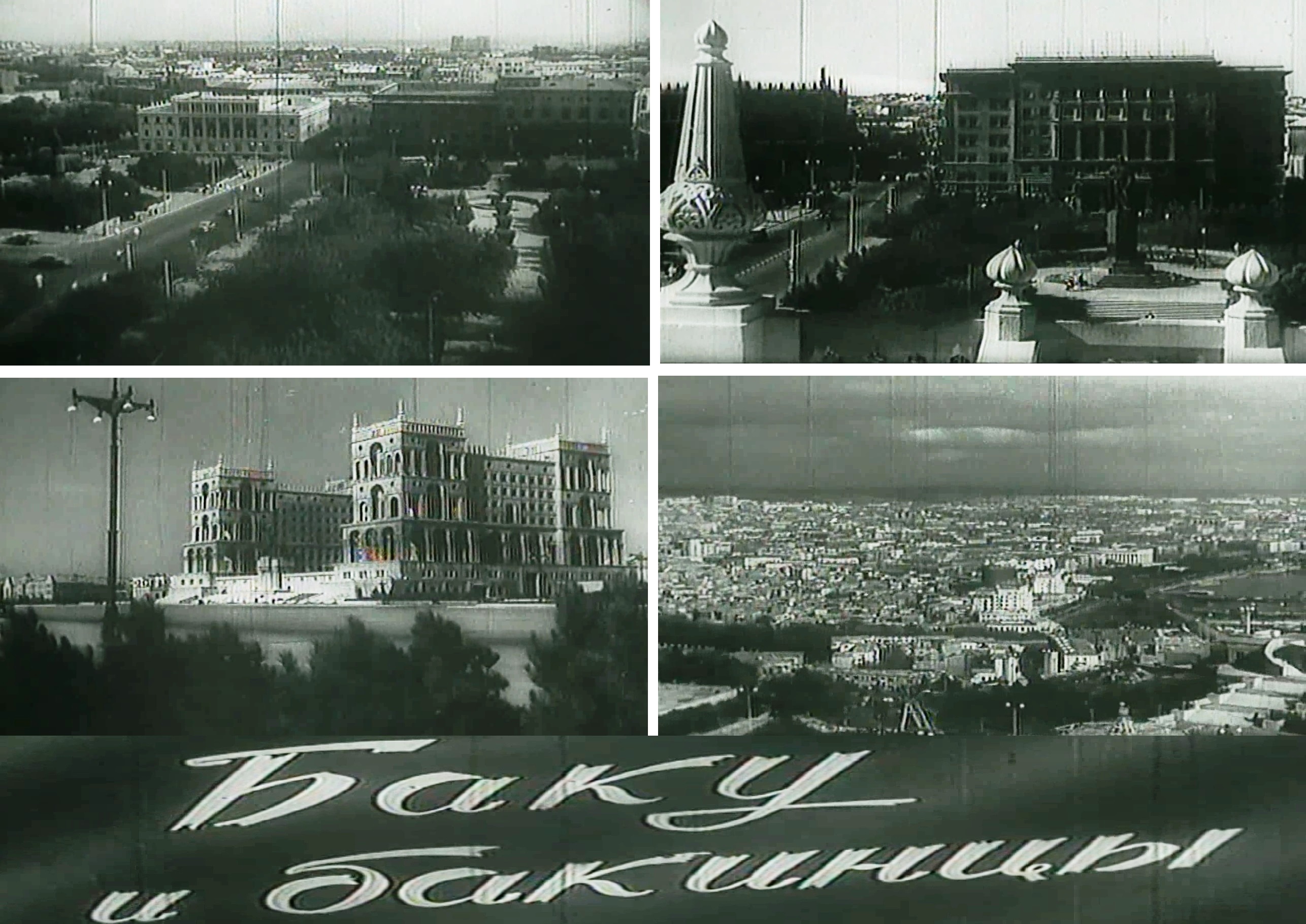
Issue of news-reel „Young generation“ began along with „Soviet Azerbaijan“ (36 number per year; former news-reel „Order-bear Azerbaijan“) in post-war years. Scenarists I.Gasimov, A.Gulubayov, film directors Z.Kazimova, L.Safarov, cameramen A.Narimanbayov, T.Akhundov, Kh.Babayev, compositors G.Garayev, T.Guliyev and others began their activity in documentary film sphere in 1945-1950s. The full-length film „On the other bank of Araz“ (1947, film directors IAfandiyev, E.I.Shub), describing freedom struggle of South Azerbaijan people in 1945-1946, draw attention. Coloured full-length documentary „Soviet Azerbaijan“ (film directors M.Dadashov, F.Kiselyov) was made in connection with 30th anniversary of Soviet government victory in Azerbaijan in 1950. The film was awarded the Cannes (France) international film festival special prize in 1951. Contemporaneity, people’s mode of life, work achievements occupy leading place in the creation of documentary filmmakers afterwards: „In the gulf named after S.M.Kirov“ (was awarded with Venetia international film festival prize in 1955), „He Who Searches Will Find“ (1955, 1969, film directors S.Mammadov), „Along way of happiness “ „Our Azerbaijan“ (1957,1959, film director M.Dadashov). „Baku and its residents“ (1957, film director L.Safarov), „Spring of Azerbaijan culture“ ( 1960, film directors Ch.Mammadov, Kh.Babayev), “ M.F.Akhundov“ (1962, film director N.Badalov) .“Epos about Caspian oil industry worker“ (1953), one of the wonderful examples of soviet film, and „Sea conquerors“ (1959) were shot by world-famous film director R.L.Karmen in Baku film studio. Selfless labour and life of sea oil industry workers reflected on these films. Film director R.L.Karmen, cameramen Ch.Mammadov and S.Y.Medinski were awarded Lenin prize for these works (1960).
The youth like G.Mirgasimov, Y. Afandiyev, R.Shahmaliyev, T.Bakirzade, N.Bakirzade began their activity in the documentary film of 1960-170s. Certain changes (absence of announcer text, poetical mood, exact montage) in documentary film style is well seen in films „Sea“ (1965), „Gobustan“ (1966), „This is the voice of truth“, „Composer Gara Garayev“ (1967) by film director G.Mirgasimov in the second part of 1960s.
G.Mirgasimov was awarded Azerbaijan Lenin Komsomol prize for these films in 1967. Film director Y.Afandiyev, scenario author I.Shikhli, cameraman Z. Mammadov of the film „How good that there is Samad Vurgun in the world“ (1967), film director Ch.Zeynalov of „Like spring that does not fade “ (1979), devoted to J.Jabbarli’s memories, were awarded Azerbaijan Lenin Komsomol Prize. Examples of interesting scientific-and-mass films were produced in 1970-1980s: „Memories of patterns“ (1973, film director I.Afandiyev), „Goldfish“ (1975, film director Ch.Faradjov), „Where are you, green bank“ (1983, V.Mikayilov), „Secret of Eskulap bowl“ (1984, film director T.Bakirzade), „Revival“ (1984, film director Ch.Faradjov), „Land dept“ (1986, film director T.Mutallimov) etc. Filmmakers look for new ways of choosing and searching of actual subjects, the additional potential of shooting method, montage and postscoring. „Dissonance“ (1977), „Absheron towers“ (1989) by film director T.Bakirzade, „With spring“ (1978), „Removal“ (1983) by Z.Maharramov, „Vagrant“ (1985), „Expectation“ (1986) by Ch.Zeynalov, „Life turning into eternity“ (1987), „Dead zone“ (1988) by R.Nagiyev, „Spring following winter“ (1989) by V.Mikayilov are remarkable.
Production of satiric news-reel „Mozalan“ began in „Azerbaycanfilm“ film studio in 1970-ci. Antipodes of society, defects in daily life and housing are criticized in the news-reel. Till the Second World War, there were only efforts to shoot animated films in Azerbaijan. Artist and producer-multiplier courses were organized in ‚Azerbaijanfilm‘ studio in 1966.
About 7 artistic, 20 documentary and scientific-and-mass films were produced in-studio „Azerbaycanfilm“ per year. 7th and 21st All-Union film festivals (1974,1988), 40th international festival of film-lovers (UNIKA-78) were held in Baku.
AZERBAIJANI CINEMA IN THE PERIOD OF INDEPENDENCE
The art of cinema, which formed the worldview of people from the day of its foundation, kept the history, national traditions of each people, penetrated into all spheres of life, is the greatest discovery of mankind. Cinema is the only type of art that combines several areas of culture. Another advantage of cinema is its flexibility, power of persuasion, and influence.
In general, the Azerbaijani art of cinema played an important role in the formation of the aesthetic taste and worldview of the audience, serving to preserve the national spirit of our people. National leader Heydar Aliyev highly valued Azerbaijani cinema art, said: „many generations of Azerbaijani people brought up by cinema, formed, developed and become cultural under the influence of cinema… The services of Azerbaijani cinema on the way of development of our people are indispensable“. By the order of Heydar Aliyev in 2000 dated December 18, August 2 was declared “Day of Azerbaijani Cinema”.
During the first period of national leader Heydar Aliyev’s leadership, attention and care were paid to the development of national cinema.
In the years of independence, special attention was paid to the art of cinema under the leadership of the Great Leader. By a decree of the National Leader of August 19, 1998, the Law „On Cinematography“ was adopted in Azerbaijan. At the same time, a number of Azerbaijani films were awarded high state awards, actors, directors, and screenwriters received awards at International Film Festivals and competitions. Film director Vagif Mustafayev spoke about the life and activities of great leader Heydar Aliyev, “General”, “First”, “Moscow, Kremlin”, „Leader“, „Fate”, „About true love”, “History of an envy”, “Professional”, „Patriot”, “Special purpose” and ”State“ films were met with great interest by film-lovers as the most valuable art samples of our modern time. The agreement signed in Baku with famous oil companies of the world was reflected in Vagif Mustafayev’s film „The contract of the century“.
Of the modern directors who continue the cinema of Azerbaijan, the films of Huseyn Mehdiev, Dzhavanshir Mehdiev, Yavar Rzaev, Nidzhat Feizullaev, Ayaz Salaev, Eldar Guliev, Rasim Ozhagov, Oktay Mirgasymov are interesting. The films produced by director Gulbaniz Azimzade also received awards at a number of film festivals.
The work done by the national leader for the development of cinema is successfully continued by the president of the country Mr. Ilham Aliyev. On February 2007, 23, the head of state signed orders “on the development of the art of cinema” and on August 2008, 4, “state program on the development of Azerbaijani cinema for 2008-2018”. The state program will increase the production of films, as well as supply modern cinema equipment and appliances, expand the production of films together with foreign countries, and reconstruct cinemas. The material and technical bases of Film Studios in our country have been strengthened, new films have been shot, and our cinema art has entered the modern stage of development. In recent years, Azerbaijani films have been represented at more than 40 international festivals held abroad. Along with the pavilions of many countries, the Azerbaijani pavilion was organized at the traditionally held international Cannes Film Festival for the first time. Azerbaijani cinema was represented at the festival by state-ordered films “Actress” and “Sphere”. Short films made by our young cinematographers have also been demonstrated at international festivals held in Denmark, the USA, Russia, Ukraine, India, Germany, Turkey, and other countries.
One of the main topics addressed by our national cinema was the Karabakh conflict. The expulsion of Azerbaijanis from their native lands, atrocities committed by armenians on Azerbaijani lands formed the main plotline of the films. The films „The Scream“, „Boy with a white horse,“ „Hope,“ „The future that is left behind,“ „We will return,“ „Khoja“, „Dolu,“ etc., shot during the period of independence, are all.
The interest in the art of cinema and our films is still great today. Because every film, every piece of screen created brings the history and culture of our people to future generations.
A BRIEF HISTORY OF THE CREATION OF ANIMATED FILMS IN AZERBAIJAN
The desire to create an animated film in Azerbaijan and the realization of this wish belong to the 30s of the XX century. Studio „Azerbaijanfilm“ made a special effort in this work and bought and brought the necessary technical equipment from Moscow.
During the filming of documentary films „Lokbatan“ and „Oil Symphony“ (director B.Pumpyansky) technical animation was used, and in the instructional film ” Cat “ (painter Basov) the animation was used as a whole. The film was shown on all-union screens until 1938. This film served as an incentive for film studio workers, and a group of entrepreneurs also decided to create a cartoon. The theme of the cartoons was taken from folk tales.

A. Popov wrote the script „The Misery of Abbas“ G. Egiazarov became the cameraman of the film, and E. Dikarev became the director. The paintings shown in the film belonged to G.Halygov, J.Zeynalov, M.Magomaev, and A.Mirzaev.
Shortly before the Great Patriotic War, the studio was preparing for the shooting of the second animated film „Sindbad is a sea traveler“. It had to be a sound film. But, unfortunately, the work related to the beginning of the war was unfinished.
In the late 60s, conditions were created for the shooting of animated films at the film studio. A group of artists of 20 people was created for the shooting of cartoons, special courses were opened in the studio to learn the secrets of this art.
In 1968, the cartoon workshop was restored at the „Azerbaijanfilm“ studio named after J.Jabbarli. Director A.Iskandarov paid special attention to the commissioning of the workshop and the training of personnel on animated films, as well as the production of animated films.
Finally, on February 1969, 28, the production of the cartoon of the same name on the motives of the folk tale “Jirtdan” was completed. The first film, shot after the restoration of the studio’s animated films workshop, became „Jirtdan“. The film was released on screens in 1969 and has been on the screens of our cinemas for a long time. Thus, the production of „Jirtdan“ began the second period of the history of animated films in Azerbaijan.
In the 70s, the Department of animated films of the film studio produced more than 20 animated films. In 1971, based on the work of the same name by A.Shaig, the cartoon „The Fox goes on pilgrimage“ (director N.Mamadov, B.Aliyev) was shot. This cartoon is one of the most interesting works both in terms of style and art. The puppet film „Chaggal oglu chaggal“ (1972, director M.Rafiev) is the first and only full-length Azerbaijani cartoon.
In the 80s, 38 animated films were produced in the film studio.

Azerbaijani cartoons were not at the same level in terms of artistic quality. There were several reasons for this: the first was due to the training of personnel, professionalism, and the second was due to the lack of technical equipment, especially paints.
The socio-political processes taking place in the country at the end of the 80s, their impact on all spheres, including creative organizations, the search for ways related to the transition of “Azerbaijanfilm” to a new way of work gave impetus to independent activity of unions and departments under the film studio.
In April 1990, for the first time in the Soviet Union, Azerbaijani multiplicators switched to the lease form of the farm. The name of the multiplication shop was also changed, and „Azanfilm“ was a Creative Production Association („Azanfilm“ — Azerbaijan animation films).
In the 90s, 19 animated films were shot under the brand name “Azanfilm”. In 1993, the II festival-competition of Azerbaijani films was held in Baku, for the best-animated film at this festival, director V.Talibov was awarded prizes and diplomas.
In 2018, for the first time in Azerbaijan, a local cartoon „Jirtdan and magical robe“, produced by „Three Friends“ animation company, was shot in 3D format for the development of children’s intellect and mastering their native language rather than a foreign language. Eight characters were used in the animation. In order to characterize respect for values, the girl’s dress, which tells that the cyclopes have come, was chosen in the national style.
The most ancient models of material culture in the territory of Azerbaijan are from the 8th millennium BC. e. Ancient megalith monuments, herdsman stones, dolmens, caves, defence buildings, burial mounds, metallic instruments pottery and jewellery were typical of Azerbaijani households of that period. The national cultural and aesthetical ideations are reflected on rock carvings. The Azikh cave (with a length of 215-220 meters) near the town of Fuzuli proves that Azerbaijan is one of the most ancient dwellings- places of humankind in the world.
Of exceptional importance to serve as examples of ancient models of fine art are the rock carvings in Gobustan, in the Ayichingili and Parichingil Mountains near Zalkha lake in the Kalbadjar region during the Bronze epoch (3rd millennium BCE), and rock carvings into the Gamigaya Mountain in the north of the town of Ordubad. The rock carvings „Boyukdash“, „Kichikdash“, „Jingirdagh“, and „Shongardagh“ portray the lifestyle of ancient peoples, their housing and labour. Dynamic scenes, pictures of people and animals, episodes of hunting, cattle-breeding, farming, and other spheres of life, were perfectly carved into the rock. The rock carvings in Gobustan, which are known as pictograms, cover a long historical period from primitive communal order to feudalism.
Decorative models, pictures, raised pictures on pottery and stone, as well as metallic wares and statues, occupy an important place among ancient models of fine arts. Some of them, especially around crockery (Shahtakhti village, Nakhichevan AR), two-head deer figures (Dolandar village, Khodjavand region), bronze crockery with pictures of five fantastic animal (Gadabay), golden crescent-shaped collar (Ziviyq), a golden basin (Hasangulu hill near the Urmiya lake), ceramic crockery, fond in the plains of Mil and Karabakh, are distinguishing for their delicacy and artistic perfection (VIII-VII centuries B.C.). Different glasswares, found in Mingachevir, Shamakhi, as decorative crockery, bowls, jewellery, show existence of glass production in Azerbaijan as well.
Engraving and sculpture patterns were widespread in Albanian (Caucasus) art. Raised pictures of two peacocks in the right and left of holy life tree on stone capital in Mingachevir temple (V-VI centuries) is one of the perfect examples of Albanian (Caucasus) sculpture.
Plastic forms are spread in artistic metal wares are frequent artistic kinds. Deer, lion, peacock, bud were pictured on silver bowls, bronze water crockery, found Mingachevir, Torpaggala and other places. Bronze and stone pictures of peoples and animals, scenes, related with housing, fire and religious ceremonies predominate in round sculpture patterns of that period. Architecture complexes, palaces, castles, mosques and mausoleums constructed in the ancient historical towns of Azerbaijan as Gabala, Nakhichevan, Shamakhi, Baku, Barda, Ganja, Beylagan, Tabriz, Maragha and Ardabilda in connection with spreading of Islam since VII century. Calligraphy — inscription, ornament, glaze and raised elements were widely used in decorative design of these buildings. Stone engraving examples, geometrical and plant patterns are typical for buildings, belonging to Shirvan-Absheron architecture school, while ornament motives occupy an important place on buildings, belonging to Nakhichevan architecture school.
Inscriptions and raised pictures on Shirvansahs‘ „Bayil castle“ or „Sabayil“ architecture monument, built in the Baku port in XIII century, played an important role in decorative design of the building. Human and animal pictures (tiger, camel, horse, bull, bird) were made in deep engraving style along with inscriptions on „Bayil dashlari“ (Bayil stones). „Bayil dashlari“ of frieze type represents the decorative element of previously onshore prominent architecture monument.
Azerbaijan fine art present unity with decorative applied art in the Middle Ages. Knight shooting clawed bird with an arrow was pictured along with plant and geometrical ornaments on ceramic examples in Ganja, Beylaqan and other towns. Azerbaijan renaissance architecture was closely related to Nizami Ganjavi’s creation. He creates architect, sculptor, mosaic decorators and painter characters (Farhad, Shapur, Simnar) in his poems.

Mir Mohsun Navvab, well-known as a talented poet, musical theorist and calligrapher in Azerbaijan culture history, was also engaged in painting and mosaic decoration. Motives of nature, pictures of flowers, birds occupy an important place in his works. Landscapes, pictures of flowers and decorative applied art patterns by poetess Khurshudbanu Natavan draw attention as well.
Realist tendency strengthens in Azerbaijan fine art, new artistic kinds and genres appeared in connection with the annexation of North Azerbaijan to Russia in the early XIX century. Magazines like „Molla Nasreddin“, as well as satiric graphics and illustration genres appeared. Painters of the magazine „Molla Nasreddin“ O.Shmerling, I.Rotter, A.Azimzade and Kh.Musayev was engaged in graphic art, conforming to public-political problems of that time. A. Azimzade, the founder of Azerbaijan satiric graphic, made sharp caricatures, cartoons, exposing public inequality, ignorance, fanaticism, tsar oppression. Famous pictures series „Hundred types“, watercolours, devoted to woman freedom, atheism and political motives, differs with actuality and national colour. Illustrations, drawn by A.Azimzade to „Hopopnama“ by M.A.Sabir in1914, are one of his most successful works.
„Ilanli mountain under moonlight“, „When the Sunsets“, „Spring“ landscapes, „Refugees“ series, including portraits of homeless people, compositions like „Matchmaking“, „Wedding“, as well as artistic design and cloth sketch to plays „Deads“ (J.Mammadguluzade), „Hadji Gara“ (M.F.Akhundzade), „Pari-jadu“ (A.Hagverdiyev), staged in Nakhichevan theatre in 1910s, by B.Kangarli, one of the founders of Azerbaijan realist easel painting, are valuable examples of Azerbaijan painting.
State museum „Istiglal“ (Independence- 1919), national symbols- state emblem and flag were established, as well as measures on protection and restoration of historical monuments were taken in this period. Alibay Huseynzade, famous publisher of magazine „Fyuzat“, philosopher, journalist and painters created such works as „Bibiheybat“ mosque, „Sheykhulislam’s portrait“
The 70-year Soviet government established in Azerbaijan in 1920. Culture formation and development of new styled fine art began in the country. The first school of arts was opened in Baku (1920), new kinds and genres of fine art appeared.

G.Khaligov, I.Akhundov, A.Hadjiyev, M.A.Vlasov, K.Kazimzade, A.Mammadov and other painters worked in graphic along with A.Azimzade in the 1930s. They painted books by Azerbaijan and foreign writes, made political posters on different actual subjects. Modern easel painting was related with the activity of young painters, graduated Azerbaijan State School of Arts in the 1920s. The first creation exhibition of Azerbaijan Young Painters Society (1928), the exhibition, organized by Azerbaijan Revolutionary Fine Art Union in the 1930s had success. Works by S.Salamzade, G.Khal?gov, A.Rzaquliyev and other painters, devoted to up-to-date subjects occupied an important place in the first exhibition, organized in Baku and Moscow. Azerbaijan painters‘ organizational committee was established in 1932. Some achievements were gained in painting. „Vintage“ by S.Sharifzade, „A.Azimzade’s portrait“ by H.Hagverdiyev, „Nizami Gandjavi’s portrait“ by G.Khal?gov, housing and historical tableaus by M.Abdullayev, B.Mirzazade, B.Aliyev, S.Bahlulzade and K.Khanlarov draw attention with colour richness, colour harmony.
Some monuments were built, national sculptors developed in connection with the appearance of Azerbijan modern profession sculpture. Statues of M.A.Sabir, M.F.Akhundzade and others, decorative monuments, portraits and busts were created by sculptors I.Guliyev, S.D.Erzya, Y.R.Tripolskaya, P.V.Sabsay and others in 1920-1930s. F. Abdurrahmaniov, one of the founders of soviet sculpture, created busts and portraits of Azerbaijan literature and culture workers (A.Hagverdiyev, M.F.Akhundzade, U.Hadjibayov, A.Zeynalli and others ), his first monumental work „Fuzuli“ statue (1939, Azerbaijan Literature Museum named after Nizami) in the 1930s. Decorative statues and portraits, a statue of M.P.Vagif (1939-40, Azerbaijan Literature Museum named after Nizami) by sculptor J.Garyaghdi are valuable examples of Azerbaijan sculpture of XX century.
The first Azerbaijan painters‘ congress was held in 1940.
Political posters and satiric graphic occupied the main place in Azerbaijan painters‘ creation of the Second World War. A. Azimzade, G.Xaligov, I.Akhundov, A.Hadjiyev, S.Sharifzade and others took an important part in the creation of political caricatures.
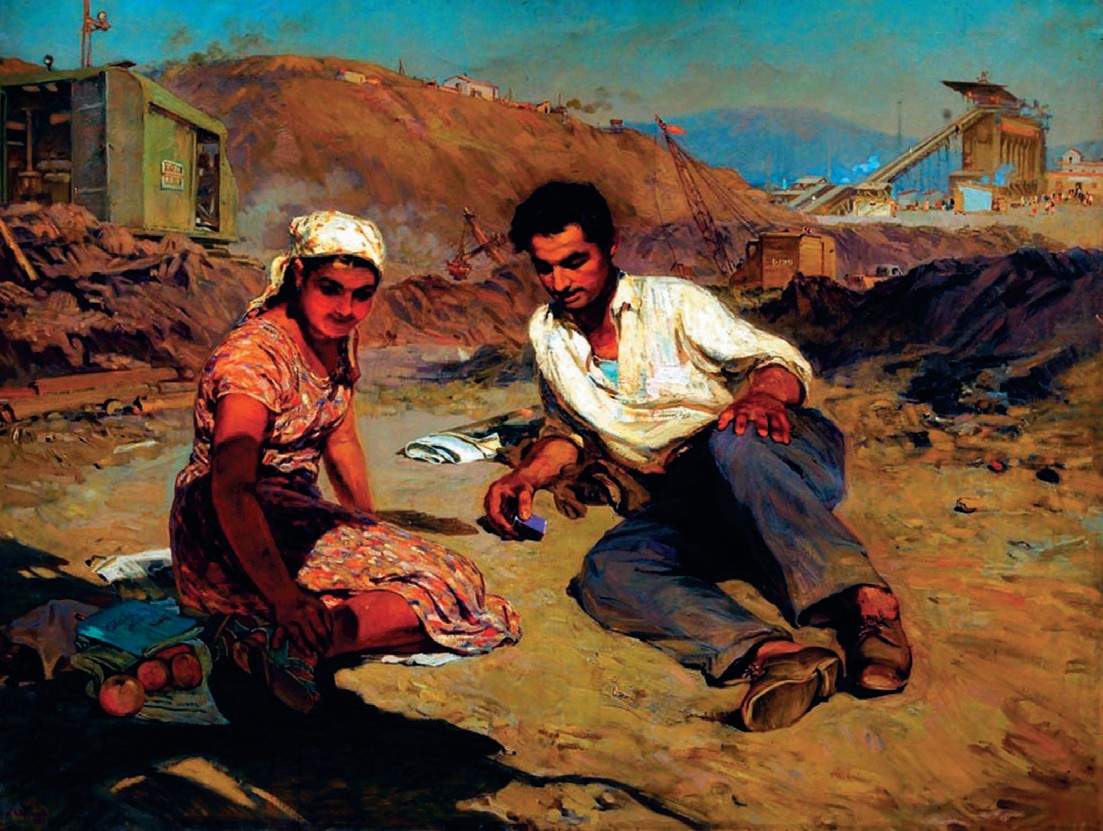
The stage of artistic perfection of Azerbaijani fine arts began World War II in the 1950s. The holding of exhibitions played a particular role in this development.
The wide and multicoloured panorama of the republic was portrayed on the tableaus by M.Abdullayev, the full member of the USSR Academy of Arts. Lyrical scenes of workmen and housing were given in „The Evening“, „The Mingachevir Lights“, „In the Steppes of Azerbaijan“, „A Joy“ and other works by the painter. M.Abdullayev was awarded the International Nehru Prize in 1970. His creative activity was appreciated with the orders of Glory (1997) and Independence.
The heroic enthusiasm and romanticism of that time, the greatness of artificial islands in the Caspian sea are reflected in the tableaus „Workers Come Back From Duty“, „The Morning Train“, „Absheron Women“, „A New Sea“ by popular painter T.Salahov, the full-right member of the USSR Academy of Arts. „Composer Gara Garayev’s Portrait“, created by T.Salahov, is one of the classical examples of the portrait art.
His tableaus, landscapes and still lives, devoted to the life of foreign states and „Composer Shostakovich’s portrait “ are the best works of the modern Azerbaijani painting. The painter also created the portrait of our national leader Heydar Aliyev. T.Salahov was awarded Independence order for services in the development of Azerbaijan fine art.
Contemporaries‘ characters and nature of native land are pictured with colourful decorative paints in works by T.Narimanbekov, owning original creation. Optimism is typical for „Happiness“, „Joy“, „Abundance of the land“, „Market“ and other his tableaus, still lives and landscapes. His improvisation ability is well seen in tableaus and decors like „When we remember Paris“, „Beethoven’s world“. T.Narimanbayov’s creation, based on the synthesis of national and international traditions, is world-famous. „Paddy sowers“, „Setting on the mountains“ by N.Abdurrahmanov, „Thinking of tomorrow“, „Life“, „My Azerbaijan“, portraits of poet Aliaga Vahid, composer A.Malikov by A.Jafarov draw attention with colour richness.
Portraits of working people, culture and fine art workers (singer Z.Khanlarova, film director. Sh.Badalbayli), landscapes and still lives pictured in B.Mirzazade’s creation. Subjects like labour, industry, reflected on the tableaus of B.Aliyev, L.Feyzullayev, A.Mammadov, A.Verdiyev Working people and housing scenes predominate in the creation of Kh. Safarova, H.Mammadov, G.Seyfullayev, Abdulkhalig, A.Abdullayev, H.Hagverdiyev, D.Kazimov, C.Rustamov, K.Khanlarov, T.Shikhaliyev, A.Mehdiyev, M.Abbasov, F.Aghayev, S.Manafova and others while nation’s historical past, traditions, war and peace subjects prevail in the works by E.Rzaguliyev, V.Narimanbayov, T.Sadigzade, A.Husenyov, K.Nadjafzade and others. S.Salamzade, T.Taghiyev, V.Samadova, Sh.Sharifzade, O.Sadigzade, Nadjafgulu, A.Karimov, G.Mustafayeva, O.Aghababayev, H.Zeynalov, H.Karimov, S.Mammadov, Ch.Farzaliyev and others particularly distinguished in the portrait genre.
Beauties of Azerbaijan nature reflected on tableaus „Way leading to dog-violet“, „Native plains“, „Longing for land“, „Tears of Kapaz“ etc. by popular painter S.Bahlulzade. N.Gasimov, K.Khanlarov, M.Taghiyev, S.Hagverdiyev, T.Javadov, F.Khalilov, B.Maratli, N.Rzayev, A.Asgarov, U.Hagverdiyev and other painters created original tableaus in the landscape genre.

Tableaus by F.Khalilov, devoted to Absheron nature, distinguished in respect to perceiving of life beauty, philosophical meaning.
Mythological notion presents synthesis with up-to-date painting research in works by J.Mirdjavadov, N.Rahmanov, K.Ahmadov, G.Yunusov, S.Veysov, A.Ibrahimov, I.Mammadov, S.Mirzazade, F.Hashimov, F.Gulamov, A.Samadov and others.
Development of theatre-decoration art is related to a scenic embodiment of Azerbaijan operas, ballets, drams and musical comedies. Cloth sketches, made by A.Azimzade for some theatre spectacles, artistic design, made by R.Mustafayev for drams, operas and ballets like „Diseases“ in 1920-30-s (J.Mammadguluzade), „Rebellion“ (D.Furmanov), „Blacksmith Gava“ (Sh.Sami), „Sevil“, „Bride of fire“, „In 1905“ (J.Jabbarli), „Sheyx Sanan“ (H.Javid), „Collapsing hearth“ (A.Hagverdiyev), „Shah Ismayil“ (M.Magomayev), „Arsin mal alan“, „Leyli and Madjnun“, „Koroghlu“ (U.Hadjibayov), „Ashug Garib“ (Z.Hadjibayov), „Swan Lake“ (P.Chaykovski) etc. occupy important place in the development of Azerbaijan theatre-decoration art. Artistic design of operas „Leyli and Mecnun“ (U.Hadjibayov), „Sevil“ by I.Seyidova (F.Amirov), „Koroghlu“ (U.Hadjibayov), „Human fate“ (I.I.Dzerjinski), „Bahadur and Sona“ (S.Alasgarov), ballets „Gulshan“ (S.Hadjibayov), „Nigella“ (A.Abbasov) by A.Almaszade , N.Fatullayev „The city of the East“ (A.Mammadkhanli), „Otello“ (V.Shakespeare), „Vaqif“ (S.Vurghun), „Song left on mountains“ (I.Afandiyev) by A.Fataliyev, „Faded flowers“ (J.Jabbarli), „Sheykh Sanan“ (H.Javid) by I.Akhundov „Javanshir“ (M.Huseyn), „Peasant’s daughter“ (M.Ibrahimov) by S.Sharifzade and other drams draw attention.
The tendency toward novelty strengthened in scenic design, painters attached significance importance to sharpness, laconism and symbolical picture means since the 1960s. The first success in this sphere belonged to T.Salahov in plays „Antonio and Cleopatra“, „Hamlet“ (V.Shakespeare), „Aydin“ (J.Jabbarli), particularly in opera „Koroghlu“ (with A.Fataliyev). M.Abdullayev made the scenic design of operas „Leyli and Madjnun“, „Koroghlu“ (U.Hadjibayov) and ballet „Chitra“ (Niyazi) with bright and multi-coloured. „Gobustan shadows“ (F.Garayev), „Seven beauties “ (G.Garayev), „Nasimi epos“, „1001 nights“ (F.Amirov) are distinguished with romantic style design, made by T.Narimanbayov. B. Afghanli, H.Mustafayev, S.M.Fefimenko, Y.A.Toropov, A.Abbasov, E.Aslanov, B.Afandiyev, M.Aliyev, A.Seyidov, E.Mammadov, S.Hagverdiyeva, F.Ahmadov, G.Mammadov, F.A.Khalilov, F.Gafarov and other painters took important part in the theatre-decoration art, while J.Azimov, K.Nadjafzade, N.Zeynalov, F.Bagirov, R.Ismayilov, M.Aghabayov, N.Baykishiyev and others had great services in film art.
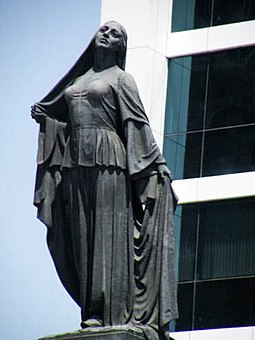
The new development stage of monumental and easel sculpture began in Azerbaijan after the Second World War. Monuments of N.Gandjavi in Ganja (1946; the USSR State Prize, 1947) and in Baku (1949) were an important stage in the creation of F.Abdurrahmanov, the associated member of the USSR Academy of Arts. His monuments in Baku, as „Freewoman“ (1960), S.Vurghun (1961), Soviet Union Hero Mehdi Huseynzade (1973), in Dushanbe poet Rudaki (1964, the USSR Academy of Arts Golden Prize) are the most successful examples of Azerbaijan monumental sculpture. Master of monumental sculpture P.V.Sabsay, full member of the USSR Academy of Arts, create a gallery of working people, science and culture workers („Oil industry worker M.P.Kaverochkin“, „Painter S.Bahlulzade“, „Oil industry worker Babayev“, „Writer S.Rahimov“, S.Vurghun’s portrait for his flat-museum). „A.S.Pushkin’s portrait“ („Elegiya“) is one of his perfect works.
J.Garyaghdi’s monumental decorative sculpture works to draw attention with artistic expressiveness and dynamism. Statues of M.A.Sabir (1958), N.Narimanov (1972), a monument of twice the Soviet Union Hero general H.Aslanov (1983, Lankaran) are valuable examples of Azerbaijan sculpture.
Joint monument „Fuzuli“ (1962, Baku), created by a full member of the USSR Academy of Arts O.Eldarov and associated member of The USSR Academy of Arts T.Mammadov, is one of the perfect, plastic art examples. T.Mammadov’s monuments U.Hadjibayov (1962), M.Azizbayov (1977), Nasimi (1979; with I.Zeynalovla ) are the best patterns of Azerbaijan sculpture.
O.Eldarov got synthesis of sculpture and architecture in the monuments „Kh.Natavan“ (1960), „M.Magomayev“ (1987), H.B.Zardabi (1973; Zardab), „to 77th Azerbaijan division“ (1975, Sapun-Qora, Sevastopol) and „H.Cavid“ (1993, Baku). Laconism and national colour are typical for his compositions and portraits as „Oil industry workers“ (1963), „S.Bahlulzade’s portrait“ (1966), „Four seasons of life“ (1974).
The bust of Azerbaijan people’s national leader Heydar Aliyev in Nakhichevan, marmoreal composition „Ellegiya“ (1997), perpetuating the memory of well-known oculist Zarifa Aliyeva, a monument set to Turkish scientist I.Doghramadj in Bilkand (2002) are some of his new successes. O. Eldarov was awarded with Independence order (1997) and To The Worthy medal of the Russia Federation (2002) for services in the development of Azerbaijan sculpture.
Famous philanthropist Hadji Zeynalabdin Taghiyev’s bust (in his flat, monument of well-known statesman and poet Shah Ismayil (Baku-1993) are some of the estimable works of sculptor I.Zeynalov. F.Nadjafov („Maternity“, „Oldest doctor“), monumental sculptor F.Salayev („S.Yesenin“), A.Asgarov („Academic Y.Mammadaliyev“), N.Aliyev („A.Vahid“) who display interest in modern forms demonstrated plastic form variety of sculpture.
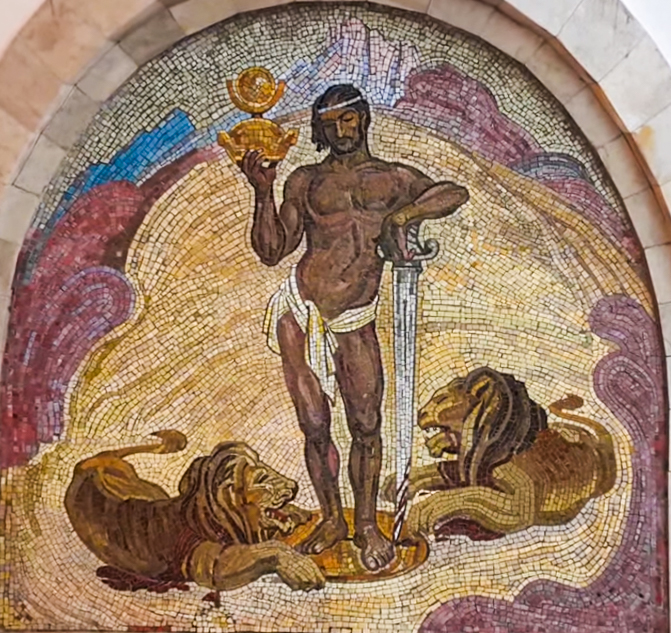
M.Mirgasimov’s monuments like J.Mammadguluzade (1974; Nakhichevan), J.Jabbarli (1982; Baku) and „Ukhuru“ („Freedom“), „Oil industry worker“, „Khazri“ are some of the achievements of Azerbaijan sculpture. Azerbaijan sculptors made an outstanding contribution to national sculpture with successful memorial composition Honorary alley in Baku, where well known public and culture workers were buried.
Setting monuments to genius Nizami in Dashkand and St.Petersburg (2002), „Dada Gorgud“ in Brussels (2004) are some of the new successes. Talented woman sculptors H.Abdullayeva, E.Huseynova, M.Rzayeva, Z. Aliverdiyeva praised youth, beauty and maternity in their works. Novelty, national traditions reflected on the monumental works by E.Shamilov, G.Sudjaddinov, A.Mustafayev, F.Salayev, A.Salikov. F.Nadjafov, F.Bakikhanov, A.Gaziyev, M.Rustamov, K.Alakbarov, A.Mirzayev, M.Salahov, A.Rustamov, H.Musayev, V.Sharifov, G.Babayev, Sh.Sharifov, T. and E.Zeynalov brothers, A.Asgarov, Kh.Ahmadov, Z. Isgandarov, H.Hagverdiyev, S.Zakiri, N.Zeynalov and others attach particular importance to novelty, emotionality of plastic form in monumental decorative works and portraits.
Subject, genre, artistic style researches take a deciding role in the development of Azerbaijan graphic art. Works series were created in the easel graphic. Linoleum engraving and painting series „In our Caspian sea“ (1953-60), „Sumqayit-Rustavi“ (1962), „My sisters“ (1965-82) by M.Rahmanzade, devoted to labour and housing subjects differ with national peculiarity. These features are typical also for illustrations, painted by the painter to Nizami, Fuzuli, Heyran khanim, M.S.Ordubadi, A.Jafarzade and others. Linoleum engraving series „Old Baku“, „Carpet-makers“ by A.Rzaguliyev, „Gobustan“, „Henna“ by R.Babayev distinguished with real scenes of popular housing, expressive perfectness.
Y. Huseynov’s book design particularly influences on easel graphic and painting. His coloured linoleum paintings „In the expanse of the Caspian sea“, works „Henna“, „Land of flames“, „Caspian fishermen“ are some of the successes of Azerbaijan graphic art.
Linoleum paintings, illustrations, etching and picture series of A.Hadjiyev, R.Mehdiyev, A.A.Mammadov, E.Aslanov, C.Mufidzade, N.Babayev, B.Hadjiyeva and others distinguish with character contemporaneity. Original picture and composition harmony, individual style are typical for creation of representatives of middle age generation such as A.Huseynov, A.Rustamov, A.Alasgarov, A.Salimov, R.Huseynov.
G.Khaligov, I.Akhundov, K.Kazimzade, A.Hadjiyev and others painted interesting illustrations to classic Azerbaijan literature and folk patterns, particularly works by Nizami and Khagani, M.Abdullayev „Kitabi-Dada Gorgud“ boys (parts), the poem „Leyli and Madjnun“ by Fuzuli, „Shamo“ by S.Rahimov.
Development of modern satiric graphic is mainly related with magazine „Kirpi“ (1952) (Nadjafgulu, G.Khaligov, I.Akhundov, K.Kazimzade, S.Sharifzade, H.Hagverdiyev and others).
Caricatures by Z.Karimbayli, A.Guliyev, R.Gadimov, A.Zeynalov and other painters occupy significance place in the development of the satiric genre.
A new stage began in the development of national culture, as well as fine art in the independence conditions of the Azerbaijan Republic in the 1990s. State care for fine art development strengthened, creation process obtained wide scope. Some impellent factors of culture workers‘ level raising and artistic researches activating are the presentation of honorary titles, Independence and Glory orders, presidential pension, Sultan Mahammad and Humay prizes.
Artistic perfection stage of Azerbaijan fine art started, its achievements became famous beyond the bounds of the country as well.
There were wonderful traditions in the different kinds of painting, particularly portraying human characters in the Middle Ages when Islam dogmas were dominating. This is evidenced by the development of miniature art in that period.
The miniature painting in Azerbaijan provided a significant contribution to the cultures of the Near and Far East. It occupies a special place in the history of world fine arts.
The history of Azerbaijani miniature paintings, which first appeared in the form of book illustration is not determined exactly. Nevertheless, stylistic and artistic peculiarities of miniatures, painted by Abdulmomin Mahammad al-Khoyi for manuscript „Varga and Gulsha“ in early XIII century (Topkapi museum, Istanbul), show that they are based on certain traditions of the miniature paintings, which existed since the ancient times. Miniatures, painted for „Varga and Gulsha“, are considered some of the ancient patterns of this art not only in Azerbaijan but in the Near and Far East.
Calligraphy and miniature speedily spread in Maragha, Tabriz and other towns of Azerbaijan, Tabriz turned into a powerful centre of artistic creation, book art, calligraphy and miniature painting in XIII-XIV centuries. East. painters, profited by Chinese and Uigurian art, tried to adapt Far East nations‘ picture forms and expression means with local traditions — superficial-and-decorative forms.
Tabriz masters created the artistic style of successful graphic and painting styles synthesis in the middles of the XIV century. Development of this new style reflected on the miniatures of the well-known manuscript „Great Tabriz Shahname“ (a book praising shahs) or „Demott Shahname“ of 1340-1350s. The Miniatures, painted by famous painters of that time Ahmad Musa and Shammsaddin, are keeping in some of world museums and libraries. Only 58 miniatures of these manuscripts are known. Researchers highly appreciated the development of Tabriz miniature school of that time, particularly illustrations of „Demott Shahname“. French art critic Ostash de Lorey writes: „miniature art has never been so sublime, original and far from academism“.
Artistic style peculiarities of Azerbaijan miniature art is much more improved in the early XV century. Style, artistic quality of pictures, painted by genius painter Abd-al-Khayin for poem „Khosrov and Shirin“ by Nizami Gandjavi (1405-10, Frir Gallery, Washington), „Divan“ (selected poems) by the last Jalair ruler Sultan Ahmad (1405-10, Frir Gallery, Washington) and illustrations, painted by calligrapher Jafar Tabrizi for „Mehr and Mushtari“ by Assar Tabrizi (1419) testify perfection of Tabriz school.
Tabriz had been sublime art centre, providing the Near and Far East towns with talented masters, for a long time since the early XV century. Famous German art critic F.Shults called Tabriz „mother school“ („Mutter Schule“), had a great impact on miniature art of neighbour Eastern states. Miniature art began to develop in Shamakhi and Baku under the influence of Tabriz school in XV century. Illustrations, painted for „Anthology of Eastern poesy “ or „Shamakhi anthology“ (1468, British Museum, London) and other manuscripts, portraits with one and two figures by Abdulbagi Bakuvi („Mehtar“, „Two emirs“; Topkapi museum, Istanbul) are some of the best miniature patterns of Shamakhi and Baku painters.
New raising period of Tabriz miniature art late XV century. 9 miniatures of early XVI century, painted for Istanbul „Khamsa“, written for Sultan Yaqub in 1481 and completed in the period of Shah Ismay?l I, principally differ from the miniatures of the same subject and considered more valuable, for figurative expression means, complicate composition and grandiloquent decorativeness, colour richness („Khosrov looks at Shirin in her swimming „, „Iskandar and Dara“, „Iskandar and herdsman“, „Iskandar in Nushaba’s palace“ etc.). These works were doubtless painted by the founder of Tabriz miniature school Sultan Mahammad, his contemporaries and students in XVI century. It is not accidental, that the most valuable miniatures of unknown authors, created in this period, are usually referred to Sultan Mahammad school or his style.
Development peak of this school dated to the XVI century. Tabriz, the capital of Azerbaijan, turned into the main centre of culture, aesthetic view, artistic creation in connection with the appearance of centralizing Safavids state. Famous painters, calligraphers and masters of the East like Kamaladdin Behzad, Sheykhzade, Aghamirak Isfahani, Shah Mahmud Nishapuri, Dust Mahammad created under the direction of great master Sultan Mahammad along with talented local painters like Mir Musavvir, Mirza Ali Tabrizi, Mir Seyid Ali, Muzaffar Ali in the palace library of Shah Ismayil and Tahmasib in Tabriz.

Relation of Tabriz miniature school with classic literature became closer since the XVI century. Works, poetical plot and characters of Firdovsi, Nizami, Sadi, Hafiz, Jami, Navai, Amir Khosrov Dahlavi and others occupy the main place in the creation of Tabriz painters. A lot of books and the most valuable miniatures painted for these two works „Shahname“ and „Khamsa“. Some of the miniatures, blending artistic style peculiarities of Tabriz school of XVI century, as illustrations painted for manuscripts „Khamsa“ of 1524 (Subway-museum, New-York), „Shahname“ (Institute of Oriental Studies, St. Petersburg), „Guy ve Chovkan“, „Chami at-Tavarich“ of 1528 (both in the Library named after M.Y.Saltikov-Shedrin, St. Petersburg) draw close attention. Relatively simple and laconic works in respect to simple composition, colour, character solution and landscape motives represent the transitional period from laconic style peculiarity of XV century to the new grandiloquent decorative style of.
Eastern miniature art reached the peak of its development in 1530-1540s. A lot of valuable manuscripts in the view of artistic aesthetics and mastery were worked out in this period.
Manuscripts „Shah and Darvish“ with three delicate small miniatures (The Library named after M.Y.Saltikov-Shedrin, St.Petersburg), „Shahname“ with 258 miniatures (1537; some of them are in the Metro Museum of New-York, the rest in the Houghton collection, New-York) and world-famous „Khamsa“ with 14 rare miniatures (1539-1543, British Museum, London) are considered masterpieces of book art and miniature painting in the East due to rich artistic design, delicate decorative adornments. Some of the miniatures painted for „Shahname“ are „Keyumarz’s meeting“, „Execution of Zohhak“ by Sultan Mahammad, „Reception of Indian envoys“ by Mirza Ali Tabrizi, Hunting and battle scenes by Muzaffar Ali, Palace meetings by Mir Seyid Ali, miniatures painted for „Khamsa“ are „Sultan Sandjar and old woman“, „Khosrov looks at Shirin in her swimming“, „Prophet Muhammad’s ascension“ by Sultan Mahammad. „Conversation of Anushiravan and owls“ by Mir Musavvir, „Khosrov listens to Barbad’s music“, „Shapur shows Khosrov’s portrait to Shirin“ by Mirza Ali Tabrizi, „Beggar-woman takes Madjnun to Leyli“ by Mir Seyid Ali and other works are considered the peak of the Eastern miniature art. Plots of „Sahname“ and „Khamsa“, loved by Eastern painters, were brightly and classically reflected on works by Sultan Mahammad and his contemporaries. Azerbaijan painters created original miniatures for other poetic works as well. For instance, „Sham Mirza’s music and drunken revel“, „In the meykhana“ (tavern), painted by Sultan Mahammad in 1530s for „Divan“ by Hafiz, miniatures painted by unknown painter for works by A.Jami, Amir Khosrov Dahlavi, Sadi (The library named after M.Y.Saltikov-Shedrin, St. Petersburg). Characters described in „In meykhana“ by Sultan Mahammad are considered rare works in Eastern miniature art in view of psychological expressiveness, grotesque and satire.
Easel miniatures occasionally met in miniature art till XVI century, turned into particular genre. Ordinary life scenes like hunting and battle scenes, musical and drunken revels, palace entertainments, portraits of shahs and nobility are mainly painted in the independent miniatures in contrast to book illustrations. „Musical revel in the palace “ by Mirza Ali Tabrizi, „Hunting scene“ by Sultan Mahammad, „Village life“ and „Town life“ by Mir Seyid Ali, kept in the special albums or included into different manuscript books in museums and libraries of Russia (St. Petersburg), Turkey (Istanbul), as well as Europe and the USA occupy exceptional place in Eastern miniature art.
Sultan Mahammad, Mir Musavvir, Dust Mahammad and others created some portrait miniatures in the middles of XVI century. Painters described characters of shahs and nobility in compliance with beauty notion of that time in these portraits, which sometimes differ but sometimes not for typicalness, character solution and ethnographic peculiarity, given in different positions. The main purpose of these portraits, created on the basis of certain canons (rule, style), was to praise rulers‘ outward appearance.—

A group of painters worked in the palace library, gathered in the new centre in connection with removing Savavis’s capital from Tabriz to Gazvin in the second half of the XVI century. Miniatures, created by Azerbaijan painters in Gazvin till 1575, do not differ from miniatures of Tabriz period because of artistic style peculiarities and represent its logical continuation.
Development of Azerbaijan miniature art and formation of new style in Gazvin in the second half and late XVI century related with the creation of Sultan Mahammad’s successors Siyavush bay, Mir Zeynalabdin Tabrizi, Ali Rza Abbasi Tabrizi and well-known masters Mohammadi and Sadig bay Afshar. Independent miniatures, reflecting real life and ordinary housing scenes, were created in this period. Stagnation of Azerbaijan book and miniature art is observed in the second half of XVI century. One of the main reasons was lost of Tabriz’s culture centre role in connection with removing of the capital, another was Tabriz painters‘ working in the art centres of Turkey and Iran, as well as lack of comprehensively developed masters with wide creative potential like Sultan Mahammad and his successors.
Tabriz school kept creative relations with neighbour states, representatives of the school worked in foreign countries in different periods. Well-known painter Mir Seyid Ali with his father Mir Musavvir had worked as chef painter in the palace of Mogul rulers as Humay (1530-39, 1555-59) and Akbar (1556-1605) in India for a long time. They played a great role in the training of young painters, foundation and development of Indian painting school, named Mogul miniature school. Azerbaijan painters had a great influence on the development of Turkish miniature school. Shahgulu Naggash, Validjan Tabrizi, Kamal Tabrizi and other Tabriz painters worked in Istanbul at different times, Shahgulu Naggash and Validjan Tabrizi run palace studio. Many valuable works, reminiscent of miniature style for content, artistic form and figurative expression means, were created in carpet-making, and ceramics.
Azerbaijan miniature art continued till the late XIX century. But miniatures, painted for manuscripts and books of stone print in the XVIII-XIX centuries, were simple, schematic and even primitive popular print for painting and compositions. The illustrations, painted by Avazali Mughanli for „Kalila and Dimna“ (1809), by Mirza Aligulu for „Shahname“ (1850), by Mir Mohsun Navvab for „Bahr ul-hazan“ (1864), by Nadjafgulu Shamakhili for „Yusif and Zuleykha“ (1887; these works are in the Manuscripts Institute of the Azerbaijan Republic Academy of Sciences) and for other books prove decay of classic miniature art for figurative expression means.
Rich traditions of classic miniature, its artistic style peculiarity were creatively used in the Soviet period.
Usage of classic miniature art peculiarity more expanded, painters‘ creative researches in painting, graphics, particularly in book illustrations resulted in successful works in the following development periods.
M.Abdullayev created some valuable works, related to classic heritage in painting, graphics, monumental painting and theatre design. Illustrations created by a painter for „Kitabi-Dada Gorgud“ (1962 and 1979 editions), mosaics on the basis of works by Nizami in the Nizami station of Baku underground draw attention.
THE ROLE AND POSITION OF AZERBAIJANI FINE ART IN THE MODERN PERIOD
It is very difficult to surprise the modern world with anything. Because there is little that can surprise the world, we are probably wrong. Fine arts, works from the brush of artists are really capable of attracting the interest of the audience. Very few works of Azerbaijani masters of Fine Art are known in the world.
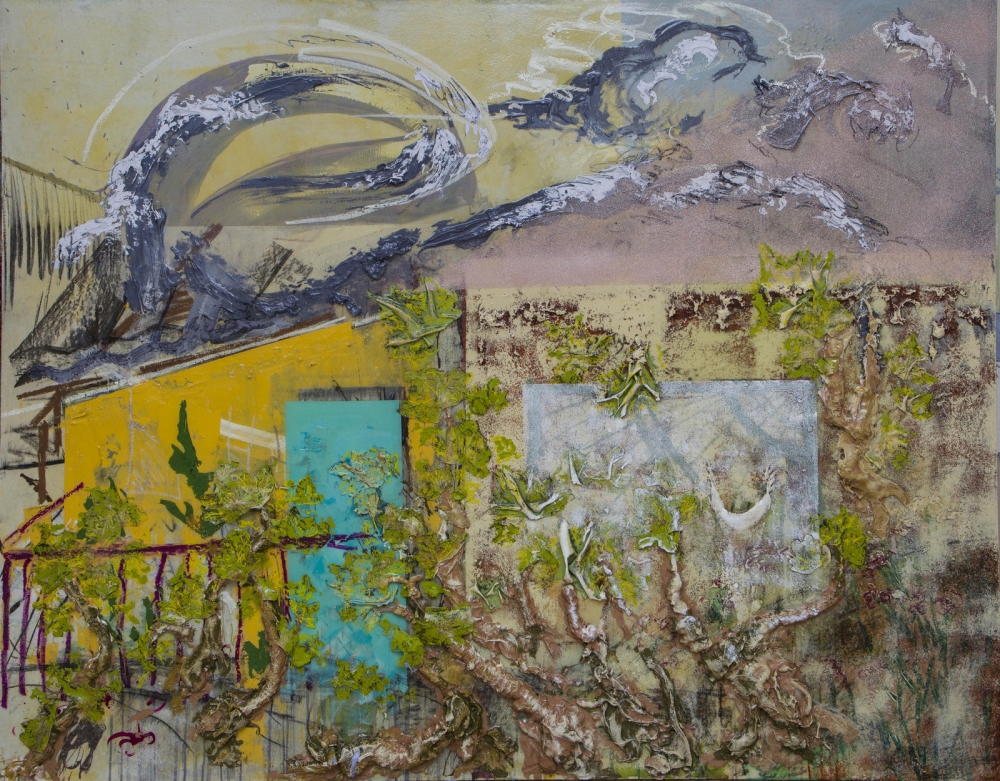
Historically in Azerbaijan there were artists who were able to promote our country, but their access to the world ocean of art was limited. The fact that the works of medieval Azerbaijani artists take place in world museums and private collections as pearls of art is the victory of the Azerbaijani fine art. Works and miniatures made by Azerbaijani artists of the Middle Ages are famous all over the world. Our great artist Soltan Muhammad’s” Bahram Gurun’s lion hunt“,” the ascension of the Prophet Muhammad“,” Khosrov’s vision of Chiman Shirin“,” Alexander’s meeting with the Chinese people“, etc. his works are very famous in the world. Aga Mirak’s works also decorate the museums of the world. His” Majnun among animals“, „Khosrov and Shirin listen to the servants ‚tale“, „Khosrov’s coming to the throne“, „Shapur’s return to Khosrov“ are unique examples. Sayid Ali’s „Bahram Gur and qoca Choban“, „Majnun in front of Layla’s tent“, „the messenger of Ibn Salam“, etc. we can name the works. Handicrafts of Azerbaijani artists are real pearls of art that have been of interest to world travelers since ancient times.
At the same time, Azerbaijani artists have not yet fully integrated into the world. Today, when the world speaks of Azerbaijani artists, he remembers the unique works of Sattar Bahlulzada. In Soviet times, exhibitions of most Azerbaijani artists were organized in foreign countries in those years. These artists could express the life of Azerbaijan at these exhibitions. In the Soviet years, our artists were introduced to the world as Soviet artists. Few people in the world knew that they were Azerbaijanis. If these artists were known in the name of Azerbaijan, we would see more benefits of it today. The themes addressed by Azerbaijani artists in the Soviet period were not limited to the country, most peoples of the world created valuable works related to their way of life. The international nature of these works was also great. Today works by Azerbaijani Soviet artists are exhibited in museums of the world. If Sattar Bahlulzade, Mikayil Abdullayev, Maral Rahmanzade, Tahir Salahov, Togrul Narimanbekov, Rasim Babayev, and other artists struggled to get out of the world, they achieved it to a certain extent. Their works are more or less known and appreciated in the world. Today, it is gratifying that as a result of the support of the state in this sphere, exhibitions of works of classical Azerbaijani artists are opened and their catalogs are published. In addition, among modern artists, there are also those who are eager to enter the world. In recent years, the Heydar Aliyev Foundation has also done a lot to promote the Azerbaijani fine art in the world and introduce its modern representatives, and periodically brush samples of Azerbaijani artists are exhibited in different countries of the world. For this purpose, the Academy of Arts was opened for the first time in our country in 2000. This event can be considered as one of the very important steps not only for our cultural life but also for our people as a whole.
Among the Masters of modern brushes in promoting Azerbaijani culture in the world, there are members of the World Academy of Arts, an exhibition of these artists opened in Baku several years ago: people’s artists Khanlar Ahmadov, Mir Nadir Zeynalov, honored art worker Arif Aziz, Honored Artist Eldar Gurbanov, famous artists Samadagha Jafarov and Naghali Khalilov are members of the World Academy of Arts. Our artists began to become a member of this prestigious organization, which unites well-known masters of brushes from more than 100 countries in 2009. Being represented in such an organization, Azerbaijan is able to promote the ancient and unique traditions of the art school in a broader form in the world.
Today, among the artists who promote the fine art of Azerbaijan in the world, we should note the achievements of Sakit Mammadov. Sakit Mammadov is a member of UNESCO Artists Union, academician of the Russian Imperial Academy of artists, Man of the Millennium, European Order of honor, Italian Leonardo da Vinci order, full member of the European Academy of Natural Sciences, International Vera prize at the festival in Portugal, international Vera Prize, International Prize named after Chingiz Aytmatov, International Child Of The Motherland and Dede Gorgud Awards, he was awarded a gold medal and other awards.
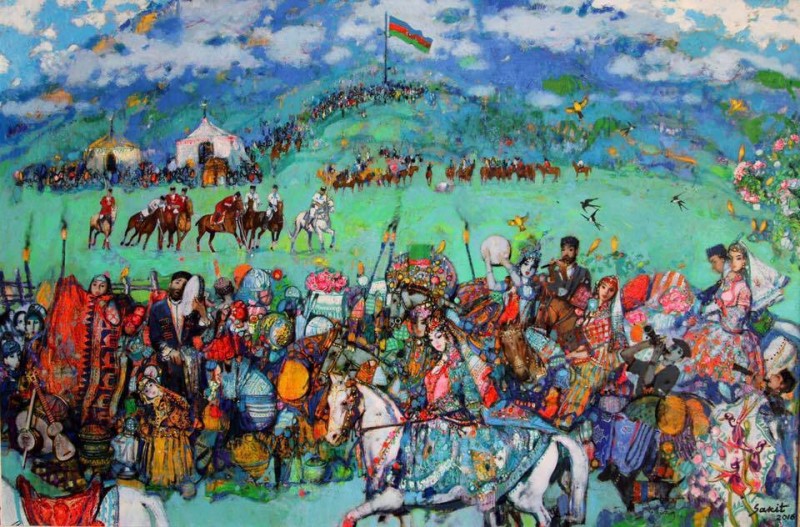
Countess of heraldic Academy Sakit Mammadov was elected an honorary member of the Roman Academy of Contemporary Art for his contribution to World Culture. S. Mamedov’s brush samples were presented in a number of countries around the world. Along with Azerbaijan, a solo exhibition was held in Turkey, Russia, Ukraine, Belarus, Switzerland, Germany, İtaly, Belgium, France, Austria, Egypt, China, Georgia, Tatarstan, Singapore, Portugal, and other countries. Today, the paintings of Sakit Mammadov, one of the prominent representatives of the art of painting in Azerbaijan, are among the works that collectors of the world’s famous museums, galleries, as well as at auctions, are pleased to receive: „Memory picture”, “Game”, “Training”, “Falabakhans”, “Birthday”, “Leningrad memories”, “Long Live Istanbul”, “Holiday”, “Wedding”, “Metro”, “Bus number 13”, „Amateur“, etc. are interesting works of Sakit Mammadov. It is impossible to attribute some thematic paintings of the artist to a specific place, time. In such works, the artist wants to show the time of his world. The prominent Russian critic Andrei Bajenov, who was surprised by the artist’s work, said: “Sakit Mammadov’s hand is like the hand of the Renaissance artist.” Opalism in painting is a school and style founded by the academic artist Sakit Mammadov. This disambiguation page lists articles associated with the title Opal. This type of mineral stone, dazzling in ancient Greek, amazing look in Latin, translated in sanskrit as a precious stone, is not only as a jewelry, but with its healing, extraordinary and inspiring nature, has been pleasing to people for millennia. The wreath of warm color existing in the Opal has won great sympathy of Sakit Mammadov since his youth. It is no coincidence that the game of color on the stone is found in almost all his creative works. In this way, the artist tried to prove that not a single artist invented a new color, except for the colors that God gave to nature. In the works of the artist one can see more noble, fiery or bolder, hydrophane shades of Opal. True, opal is not a kind of stone in the works created by the artist with a soft collar, but in handicrafts, headgear, women’s jewelry, etc. it is manifested in forms. The new covenant is created by the creation of the new covenant. Nevertheless, in the paintings one can feel the good mood and healing properties of the stone created by man. It is gratifying that the School of Opalism created by Sakit Mammadov is presented not only by himself, but also by the students of the artist with high professionalism. There is no doubt that this style created by the artist will continue in the future, along with his graduates, by the creativity of hundreds and thousands of artists living and creating in different countries of the world.
At events held in London on the occasion of the 90th anniversary of Queen Elizabeth II of Great Britain, Azerbaijani artist Sakit Mammadov’s painting “The Plain of Derby” was presented to Elizabeth II by the president of the Equestrian Federation of the Republic of Azerbaijan Elchin Guliyev as a gift.
The author of the work, Famous Artist Sakit Mammadov, who is on a visit to London as part of the Azerbaijani delegation, informed the Queen about the Jidir duzu, our national traditions, horse breeds, musical instruments, the game of Chogan and Khari Bulbul of Shusha. Sakit Mammadov was able to introduce the Azerbaijani culture to the world in this way through his successful works.
Today, the Heydar Aliyev Foundation treats our cultural heritage with great care. Art exhibitions are opened and our artists are introduced to different countries of the world with the organization of the foundation. Works by Azerbaijani artists were demonstrated at the “Art Shopping” International Contemporary Art Exhibition in Paris.
Azerbaijan was represented by Asmar Narimanbekova and Maryam Alakbarli at the “Art Shopping” International Contemporary Art Exhibition, which took place in the carousel Hall of the Louvre Museum in Paris.
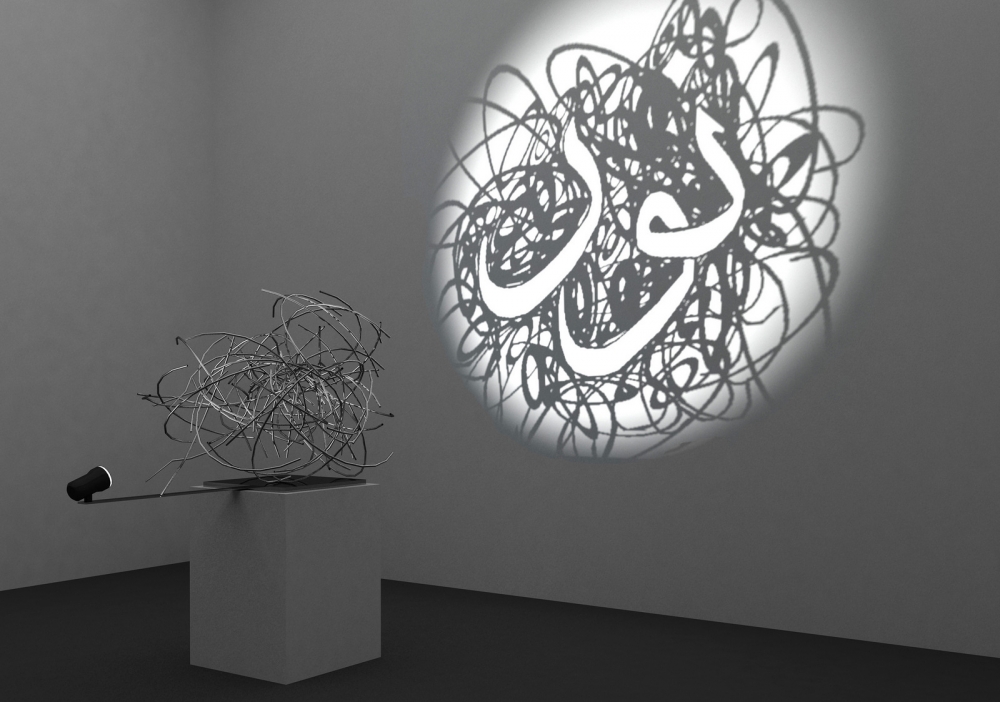
President of Togrul Narimanbekov Association Asmar Narimanbekova said that the works displayed at this exhibition were inspired by Azerbaijan’s rich culture, art and moral values. The artist said that his goal is to transform our ancient and rich culture into a world of colors and present it to the French. Our national costumes, national musical instruments are reflected in the works of Azerbaijani artists, and these works are rich in national elements. All this is done to promote Azerbaijan, its material and spiritual wealth in the world.
The art people of our time include Aida Mahmudova, Ali Hasanov, Leyla Aliyeva, Faig Ahmad, Rashad Alakbarov, Farid Rasulov, Gafar Rzayev, Mahmud Rustamov, Nail Alekperov, Rashad Babayev, Sitara Ibrahimova, Afat Bagirova, Niyaz Najafov, Altai Sadikhzade, Mammad Mustafayev, Fuad Salayev and many others. Modern Azerbaijani artists touch upon more specific themes, themes that are close and necessary to modern youth.
One of the interesting objects where samples of Azerbaijani fine art are exhibited is the modern Art Museum. The collection of works made up of avant-garde of Azerbaijan fine art and sculpture from the second half of the XX century to the present day forms the basis of the museum. This is a collection of paintings and sculptures that reflect the observation, search and freedom of the human soul.
Functioning since March 2009, the museum exhibits more than 20 works by Azerbaijani artists and sculptors. Works by such artists as Sattar Bahlulzade, Boyukaga Mirzazade, Elmira Shakhtakhtinskaya, Tahir Salahov, Omar Eldarov, Nadir Abdurahmanov are displayed in the museum. The author of the design of the museum is the famous artist Altai Sadikhzade. There is also a children’s Art Hall, a library, a video hall, a restaurant, an art cafe.
In the years of independence, a lot of purposeful work has been done to promote the fine art of Azerbaijan in the world and to support the creativity of young artists. In recent years, the number of national and international exhibitions has exceeded 500. During these years, works by Azerbaijani artists have been published in Germany, the USA, Russia, Turkey, Iran, France, Switzerland, Italy, Netherlands, Slovenia, Egypt, Saudi Arabia, South Korea, Ukraine, Moldova, Uzbekistan, Brazil, China, Austria, Portugal, etc. it was demonstrated in the most prestigious exhibition halls, museums, and galleries of such countries. As a result of the care of our state, our creators of Fine Art expect even greater success.
Due to its mild climate and favourable conditions for humans, Azerbaijan was one of the first places where ancient human civilizations occurred. The results of archaeological excavations demonstrated that ancient people in Azerbaijan created numerous works of arts, specifically architectural monuments.
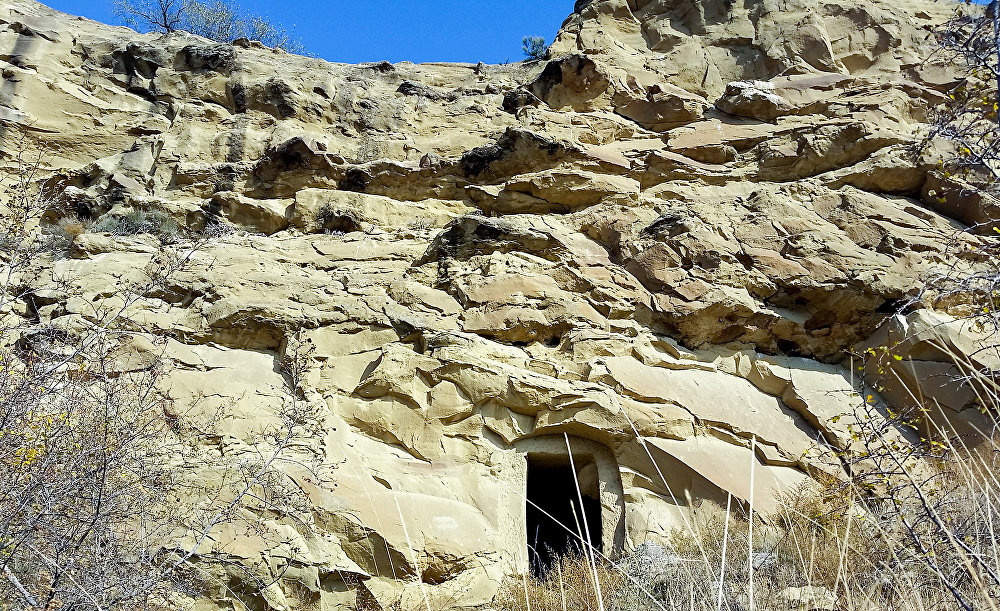
The architecture reflects the history of the humankind. It started with natural caves that served as homes for ancient people. Azerbaijan has numerous such caves within its territory, particularly in the foothills of the Major Caucasus and Minor Caucasus Mountains, in the Talysh Mountains, in the Nakhichevan Autonomous Republic, in Zangilan, Kalbadjar, Gadabay, Khanlar, Shamaxi as well as the Azikh cave, which was discovered in the territory of the Fuzuli region. It was determined that people lived in those caves nearly 1.5 million years ago and tried to adapt natural caves to their lifestyle as a result of increasing awareness and the development of labour and building tools. They drilled hole (flues) in the ceiling to guide fire smoke out of the cave, and they made special hollows into internal walls to keep their tools. The construction works that were carried out in caves by the ancient people resulted in the appearance of artificial caves in later stages. The artificial caves were made into sheer cliffs and at the foothills of the mountains, just as natural caves are situated. They can be found in the south-eastern foothills of the Major Caucasus, in the Minor Caucasus, on the Bargushad and Akara banks in the Gubadli region, near the villages of Maraza, Sundi and Darakandi in the Shirvan region, as well as in the territories, which long ago belonged to the ancient states of Manna and Midia. Wherever the artificial caves were built, ancient people tried to build them at a certain height above ground level for security purposes. The methods of artificial cave construction started changing after the invention of masonry. People began to build new mud and half-mud huts after masonry was invented. Such buildings were usually constructed into mountainsides and hillsides. Ancient people did not have strong skills in masonry building and were not capable of constructing buildings to their desired height. They created an underground grotto in the lower part, while the upper part (the entrance) served as a porch of natural stones to protect them from heat and cold. Scientists report that such buildings existed even before the state of Midiya and were widespread during the period of Midia.
At first, masonry was used in front sides and laterals, then in backsides of the grotto in the next development period of buildings of cave type. Replacing of flat walls by masonry and improvement of people’s construction skill led gradually to appearance of overground buildings.
The buildings based on artificial caves passed a long way of historical development and became known under the name of Garadan in the history of architecture. Garadans that were built in Azerbaijan were gradually adapted to the local climatic condition and acquired various architectural-planning qualities. Domestic animals were usually kept in such residents as well. According to the historical sources, garadans were used in Azerbaijan until the beginning of the 20th century.
Megalith architectural monuments-cromlechs, menhirs (herdsman’s stone), dolmens and Cyclopes buildings were widespread along with the oldest places of residence found in Gobustan (caves, different primitive shelters and etc.).
These monuments made of high stones are called „galadja“ or „horukdash“ by people. Defence buildings as Chalkhangala near Nakhichevan (Bronze epoch) and Oglangala on the bank of the Arpachay river (II-I thousand years B.C) belonged to Cyclopes buildings. Rocky buildings (Bastam, Danali, Galaoglu and etc.) were found near the Araz river in Southern Azerbaijan.
New towns, defence buildings, grand towers were constructed in connection with birth of Manna state in the territory of Azerbaijan in IX-VII centuries B.C, then Atrapatena state in the south, Research of toms on cliffs of the Urmiya lakeside and monument complex in Hasanli region show that flat of porch type had been built since VII century.

The fire altar (where holly fire kept) only religious monument of that time remained till nowadays. Architectural types, appeared in that period, influenced on the consequent architectural development of Azerbaijan, as well as the architecture of Iran and other Near East states in the Ahamanies period. Fire temples appeared in connection with fire-worship spreading, are main religious buildings constructed before Islam.
Important steps were taken in town building in the period of Caucasian Albania (IV century B.C -VII century). Strong fortress walls and earthenware water-piping of Gabala town, defence system („long walls“) built Damirgapi (Darband) passage, Chiraggala (VI century), Round Christian temple in Lakit village (V-VI centuries), basilica in Gum village (approximately VI century A.D.), temple complexes in Mingachevir (VII century) show high level of town-building culture. Architectural monuments of Sasanis period particularly attract attention. Gilgilchay wall, prolonged from the Caspian shore to the foot of Babadagh mountain, and Beshbarmagh wall, prolonged from Beshbarmag mountain in present Davachi region to the Caspian shore, create a wide idea on the development of fortification buildings.
Architectural direction changed in connection with the spreading of Islam in Azerbaijan after the Arabic occupation (VII century). Construction of buildings of a new type as mosques, madrasas (religious school, caravanserais etc. became a major line in architecture. Barda, Ardabil, Maragha, Urmiya, Shamaxi, Shamkir, Shabran, Beylagan, Ganja and Nakhichevan were important towns of Azerbaijan in that time. Turning of Shamaxi, Ganja and Nakhichevan into big towns happened in this period.
Christian temples, defence fortification were built in some provinces of Caucasian Albania along with Islamic buildings. Djavanshir tower, built in the territory of present Ismayilli (approximately VII century), and tower complex near Yukhari Askipara village of Gazakh region (V-VIII centuries) particularly attract attention.
Generally, Albanian buildings made in Azerbaijan territories before and after Islam took an important role in architectural development. Some of them such as building remains of IV-V centuries in Pashan and Mukhakh villages of Zagatala region, Govurgala (VI century) in Boyuk Galdak village of Shaki region, Albanian monuments (IV-VIII centuries) in Boyuk Amirli village of Gabala region, Albanian church (middle ages) in Oguz town, Albanian church (I century) in Garakand village of Khodjavand region Nagorny Karabakh, Albanian temples in Sos village (IV century), Iatsi village (temple of V, VII and VIII centuries), in Tagaverd village (675), Guneychartar village (1236), Aterk village of Agdara region (V century), Kolatag (614), Gochogot (672, 698), former Dostahir (713), Gasapet (718), Chaldiran villages (XI century), as well as Susanlig (IV-V century), Vang (IX century), Trakhtik (1094), Tsakuri (1131), Mammadadzor (1147), Tug villages (1197) of Upper Nagorny Karabakh, Shushikand (905), Chanagchi (1065 and 1100), Khachmaz (1100), Khantsk (1122), Khndzristan villages (1202) of Asgaran region has been preserved till nowadays.
During the rise of the Arab Caliphate, Barda became the architectural centre of Azerbaijan. Wide-scale construction works such as the construction of mosques and other religious buildings, caravanserais, markets, bath-houses and etc. were carried out in Barda, which was called „The Baghdad of these places“ in historical sources.
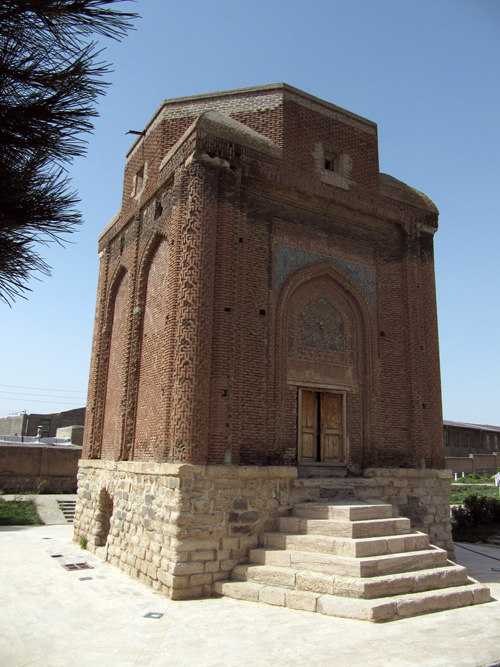
Different architectural schools (Aran, Tabriz, Nakhicdhevan, Shirvan, Absheron) appeared in the 10-12th centuries in connection with the formation of small states after the Caliphate collapsed during the 9-10 centuries A.D. There was a common style among architectural schools of Azerbaijan. The majority of buildings, built by masters of the Aran architectural school (Ganja, Barda, Beylagan) were destroyed at the time of Ganja earthquake (1139) and Mongol invasion (XII century). Remnants of those buildings were discovered by archaeological excavations in Ganja and Beylagan. The remnants of three bridges over the River Ganja (XII century), residential buildings, bath-houses, etc., are evidencing the peculiarities of the Aran architectural school.
Monuments of the Nakhichevan architectural school differ by the bashtagh composition with multi-coloured glazed ornaments, while the buildings belonging to Shirvan-Absheron school stand out for their simple architectural elements and decorative engraving ornament. The magnificence of architectural structure and decor difference are typical for the best monuments of the Tabriz school.
Style peculiarity of the Nakhichevan school reflected on tower-shaped mausoleums with rich decor and proportionate structure and other buildings, preserved till nowadays. The peak of this school presents Adjami Abubakr oghlu Nakhichenai’s creation, the author of mausoleums Yusif ibn Kuseyr (1186) and Momina Khatun (1186) in Nakhichevan, as well as a destroyed religious building complex. Character monumentality, composition proportionate and decor weakness, rational construction for his time, ornament playfulness is typical for his creation. His ornamental composition based on the organic unity of art and mathematic thinking. Adjami’s composition and decorative ornament styles influenced on mausoleums of certain countries. Mausoleum „Goy gunbaz“ in Maragha (Blue cupola -architect Ahmad Mahammad oghlu,1196) is particularly close to Adjami’s style. Maragha monuments occupied an important place in the development of Azerbaijan architecture. Some of them, preserved till nowadays, are mausoleum „Girmizi gunbaz“ (Red cupola – architect Bakir Mahammad,1148). Mausoleum „Uch gunbaz“ (Three cupolas – architect Abu Mansur Mahammad,1185), built-in Urmiya in this period, is close to Maragha monuments by its architectural structure.
Architectural styles, formed in the brick buildings of the Nakhichevan school, reflected on stone mausoleums such as Gulustan near Juga village, Nakhichevan AR (early XIII century), Seykh Babi Yagubi in Babi village (1273-1274, architect presumably Ali Madjidi) and Mirali in Ashagi Veysalli, Fuzuli region (XIII-XIV centuries). Because of similarity between mausoleums in Barda (architect Ahmad ibn Ayyub al-Hafiz Nakhichevani,1322) and Garabaglar village, Nakhichevan AR (early XIV century) and time of their construction show that they were built by the same architect.
Names of many Azerbaijan architects, mason and architectural ornament masters of X-XII centuries are preserved in different building inscriptions, stone flags, decorative ornamental wares and other sources till nowadays. Mahammad ibn Jafar (inscription in graveyard „Peygamber“ (Prophet) of X century in Beylagan region), Ibrahim ibn Osman (Gandja gates, 1063), Mahammad Abubakr oglu (Siniggala mosque in Baku, 1078), Mohsun (XI century, works are unknown), his son Bandan ibn Mohsun (XII century, works are unknown), his grandchild Bakir Mahammad („Girmizi gunbaz“ mausoleum (Red cupola) in Maragha, 1148), Adjami Abubakr oglu Nakhichevani (Yusif ibn Kuseyr mausoleum in Nakhichevan, 1162, Momina Khatun mausoleum, 1186 and etc.), Ashur Ibrahim oglu (stone sanctuary of Ibrahim mosque in Icharishahar, 1171), Amiraddin Masud (XII century, works are unknown), Abu Mansur Musa oglu („Uch gunbaz“ mausoleum (Three cupolas) near Urmiya, 1185), Ahmad Mahammad oglu („Goy gunbaz“ mausoleum (Blue cupola) in Maragha, 1196), Masud Davud oglu (Maiden tower in Baku, XII century), Jamalladdin (mausoleum in Alichay khanagah (abode) Khanaga village, Nakhichevan AR, late XII century-early XIII century), Ahmad Abulbak oglu Castle in Mardakan (works are unknown, XII century, Marand), Abdulmadjid Masud oglu (Round castle in Mardakan, 1232), Zeynaddin Aburashid oglu Shirvani („Bayil castle“ apartment of Shirvanshahs in Baku port, 1235), Badraddin Tabrizi (Jalaladdin Rumi mausoleum in Konya city ,Turkey, 1273), Mahammad ibn Mahmud (mosque minaret in Amasiya city, Turkey, 1246), Mahmud ibn Magsud (minaret of Pirsaatchay khanagah (abode), 1256) Mahmud ibn Masud (Shafiulla mosque in Baku; XIV century), naggash Abdulmomin Shafarshah oglu (engraving ornament of mosque sanctuary in Tabriz, Urmiya, 1277), Mahmud Sad oglu (castle in Nardaran village near Baku, minaret of Bibiheybat mosque, 1305-1313), Ahmad ibn Ayyub al-Hafiz Nakhichevani (Barda mausoleum, 1322), gaktarash Nizam Bandgir (engraving ornament of Juma mosque in Marand city, 1329), Hadji Mahammad (caravanserai in Isfahan, Tabriz, 1331), Sahbanzar (mausoleum in Khachindarbatli, Agdam region, 1314), Kashrasif Musa oglu (Khan bath-house in Nardaran, 1388) and etc. created the most valuable patterns of Azerbaijan architecture in X-XIV centuries.
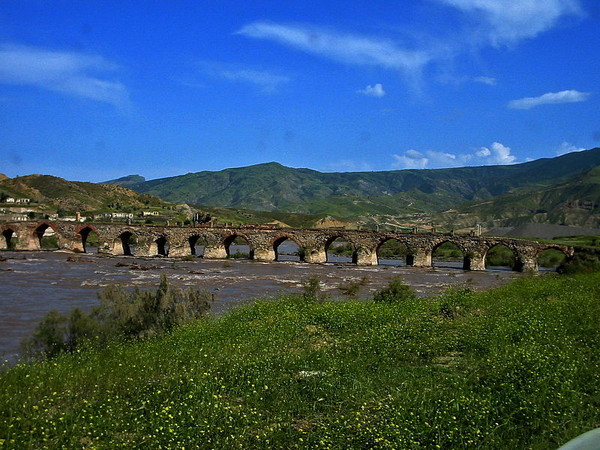
Grand bridges were built in Azerbaijan in XII-XIII centuries. Some of them are Khudaferin bridges with 15 spans (XII century) and 11 spans (XIII century) over the River Araz, Broken bridge with 4 spans in present Gazakh region (Red bridge, XII century), 3 bridges built over the River Gandjachay (remains, XII-XIII centuries), bridge over the River Giziluzan near Minaya town, Southern Azerbaijan („Maiden bridge“, XII century) and etc. particularly draw attention.
Stone constructions, volume-to-space laconism of the architecture, engraving plant ornament on stone are typical for Shirvan-Absheron architectural monuments, passed long development way. Sinniggala minaret in Baku (Mahammad Abubakr oghlu, 1078), Maiden tower (architect Masud Davud oghlu, XII century), Mardakan towers (Round tower, architect Abdulmadjid oghlu, 1232; Four-cornered tower, XIV century), Nardaran tower (architect Mahmud Sad oghlu,1301), Ramana tower (XIV century) and etc. are the best monuments of this school. „Bayil castle“ of Shirvanshahs, built-in Baku port in the XIII century and remained underwater, is one of the most interesting buildings of this period. This building complex, surrounding with tower walls with stone engravings, script and pictures on it (1235, master Zeynaddin Aburashimd oghlu Shirvani and presumably architect Abdulmadjd Masud oghlu), is a rare architectural ensemble. Pirsaatchay khanagah (abode) formed in XIII-XIV centuries is one of the buildings belonging to the Shirvan-Absheron architectural school. Construction date (1256) and name if its architect (Mahmud ibn Magsud) preserved on the minaret of this religious complex, built around Pir Huseyn mausoleum. Mature period of the Shirvan-Absheron architectural school is reflected in Diribaba mausoleum in Maraza (1402), Sheykh Guneyd mausoleum in Hazra village, Gusar region (1544) and Shirvanshahs palace complex in Baku (1420-60).
Birth of Elkhani state in the middle of the XIII century caused certain reanimation in architecture… Maragha observatory was built in the ruling period of Hulaku khan (1256-65), the founder of Elkhani dynasty. Tabriz city became the center of architecture and art in connection with the removal of the capital to Tabriz city. Towns such as Arguniya, Gazaniya, Rashidiyya were built around Tabriz.
The political and economic life of Azerbaijan concentrated in the south of the country in connection with the birth of Safavis state and declaring Tabriz the capital, as well as losing the administrative centre significance of Shirvan in the late XV century – early XVI century. Art traditions reached a new development stage due to town expansion. Position of Tabriz in Azerbaijan architecture particularly strengthened.
Azerbaijan architects and naggashes worked in other countries, created interesting art patterns in XV-XVI centuries. „Signatures“ of Azerbaijan architects remained on architectural monuments in Bursa, Cairo, Baghdad, Damirgapi (Darband), Herat, Samarkand and etc. The graceful gates of Green Mausoleum in Bursa city (1420-21) were made by Azerbaijan master Ahmad Tabrizi. Tabriz masters decorated sanctuary of Green mosque in Bursa (1424) with porcelain made by their arms. Ali Tabrizi (was known under the names Captive Ali, Adjam Ali), the Azerbaijan architect took to Istanbul by Sultan Salim I after Chaldiran battle (1514), built general arch of Topkapi palace and Sultan Salim mosque in Istanbul (1522).
XVI-XVII centuries were a continuation of old traditions. Different town-building works were carried out in the territory of Southern Azerbaijan in XVI century. XVII century is significant with the development of towns and the creation of central complexes in those towns.
Construction of different buildings spread due to trade development in XVII-XVIII centuries. Caravanserais were built in Shamakhi, Ganja, Baku, closed markets in Ardabil (Geysariya market) and Tabriz, as well as religious and residential constructions. Residence constructions, mosques, caravanserais and trade buildings took an important place in the structure of Azerbaijan towns of that time.
Bath-houses were widely spread in Azerbaijan towns as in other Feudal East towns. Bath-houses served as places of rest, meeting, conversation and table game, as well as ceremonies along with sanitaria-hygiene. The best examples of Azerbaijan bath-houses remained in Nardaran village, Absheron, (1388, architect Kashtasif Musa oghlu), Icharishahar part of Baku (Qasimbey bath-house, XIV century, Hadji Qayib bath-house, XV century), Basgal (XVII century), Ganja („Hollow bath-house „, XVII century), Shusha („Merdinli“ bath-house), Quba („Hollow bath-house ), Shaki („Agvanlar bath-house“ XIX century), Agdam (bath-house of Abdal Gulabli village, architect Kerbalayi Safikhan Qarabagi, 1900).
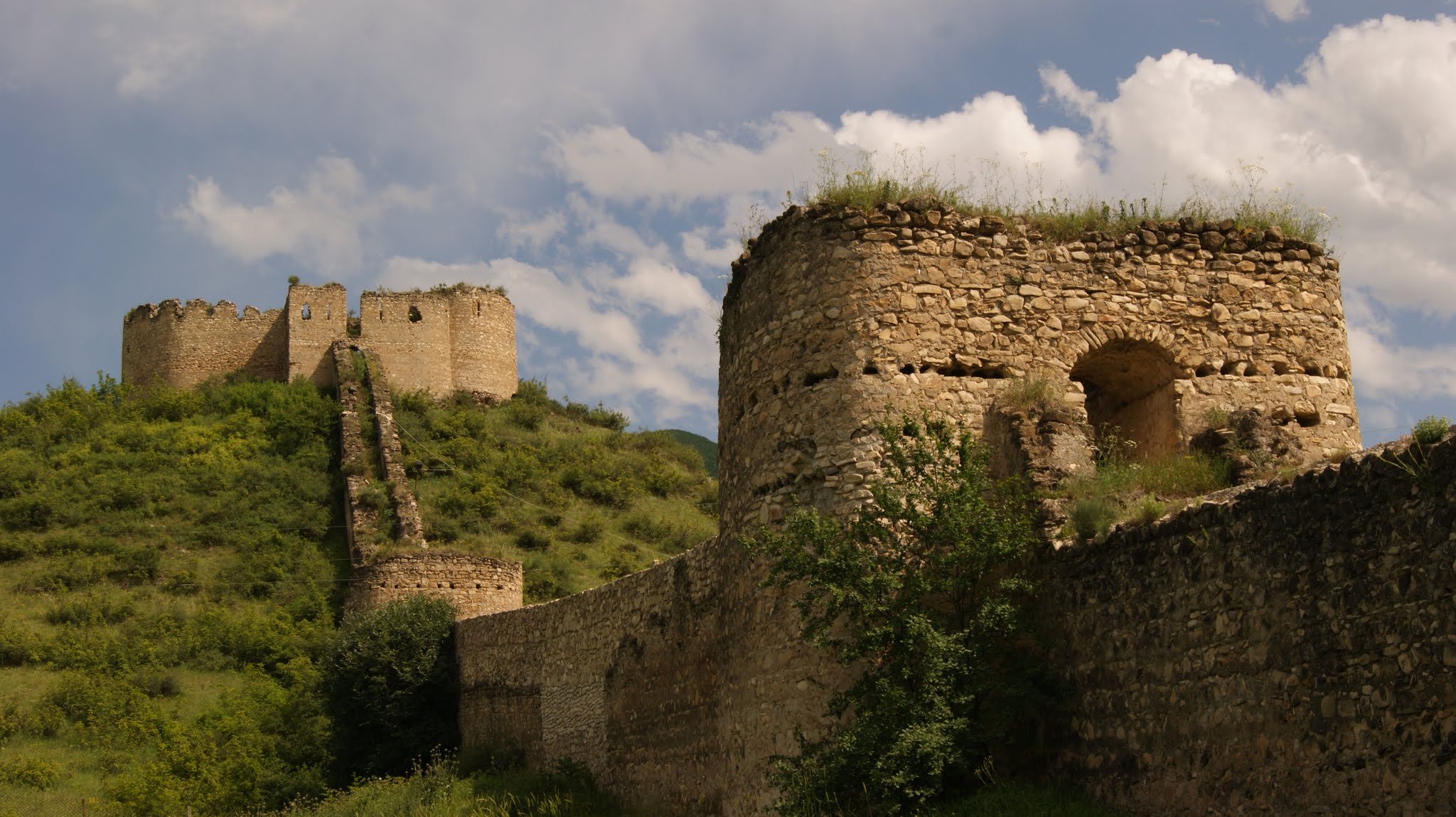
The disintegration of Azerbaijan into separate khanates and economical disorderliness of the country caused stagnation in architectural and construction development in the XVIII century. In separate cases, architectural solution lag is observed in the architecture of buildings, elevated on a base of old traditions. The turning point appeared in the town-building along with this. Big towns and residential places became administrative and art centres of khanates.
Asgaran tower, built by Nagorno-Karabakh khan Panahali (then was expanded by Ibrahim khan), is the largest defence building of that time. Asgaran tower, elevated on the right and left banks of the River Gargar, is consisted of two fortifications.
Interesting examples of popular residence constructions of XVIII-XIX centuries remained in Zagatala, Shaki, Ordubad, Shusha, Guba, Gonagkand, Ganja and Absheron.
Azerbaijan architects, masons and masters such as Ustad Hadji’s son (architect; Diribaba mausoleum in Maraz, 1402), Mahammad Madjid Tabrizi (naggash; sanctuary of the Green basin , 1424), Ali ibn Hadji Ahmad (master of engraving on wood; gates of basin in Bursa), architect Ali (Mahammad Ali; mausoleum of 1435 Shirvanshahs complex in Baku), Hadji Ahmad (architect ; „Gates of fourties“ in Darband and Big mosque, XV century), Yusif ibn Ustar Zahir (architect ; Sheykh Badraddin mausoleum in Hazra village, Gabala region, 1446), Tadjaddin (architect; Quba region; 1446), Hodja Ali Hasil Tabrizi (architect; school building of Musalla ensemble in Herat, XV century), Shamsaddin (architect; Shah mosque in Mashad, 1451), Neymatulla Bavvab ibn Mahammad (calligrapher and glaze master; inscriptions of Goy mosque in Tabriz,1465), Shamsaddin Tabrizi (architect; Ali mosque in Isfahan, 1522), Shamsaddin Shamakhi (architect; Sheykh Mansur mausoleum in Hazra village, Gabala region, 1570), Captive Ali (Tabriz; many building were constructed in Turkey (Istanbul, Konya, Askishahar, Chorlu, Tekirdag, Qabza, Trabzon, Hadjilar), Bulgaria (Sofia), Yugoslavia (Sarajevo) and other cities in 1515-37 years; main works are 2nd general arch of Topgapi palace in Istanbul, Sultan Salim mosque, 1522; Sayfaddin Qazi mosque Sofia, mansion libraries, mosque complex, in Sarajevo, 1532; Herdsman Mustafa mosque in Gabza and etc..) Amirshah Valyankuhi (architect; stone engraving general arch of Eastern gates Shirvanshahs palace ensemble in Baku, 1584), Sheykh Bahaddin (architect and scientist; Juma mosque in Candja and architectural ensemble around it, 1606), Nadir Ali ibn Master Yarali (architect; mausoleum, XVII century), Parviz (architect; mausoleum in graveyard of Buzovna village, Absheron, 1641), Ismayil Naggash Ardebili (calligrapher and naggash; ornament of general arch of Ali gates of Sheykh Safiaddin complex in Ardabil, 1647), Yusifshah ibn Malik Safimai (architect; general arch of Ali gates in Sheykh Safiaddin complex, 1647), Baba Sheykhidjan (architect; caravanserai in Maraza village, 1613), Murad Ali (architect; Hadji Bakhshi mosque in Nardaran, 1663), Abdulazim Sahkar (architect; mausoleum complex in Kalakhana village, Shamakhi region, XVII century), Baba Ali (architect; bath-house in Mammadli village, Abshero, 1663), Maharram (architect; mosque in Bina village, Absheron, 1697), Bunyad (architect; mosque in Mashtaga village, Absheron, 1716), Abbasgulu (architect and naggash; celling ornament of big salon in Shaki khan palace; XVIII century) and others created in XV-XVIII centuries.
The most typical distinguishing features of Azerbaijan’s architecture in the 19th century were the expansion of towns, application of Russian town-planning principles and the development of the general layouts of Ganja, Shemakha and Baku.
The construction of advanced buildings, after Northern Azerbaijan was ceded to Russia, had significant importance. New buildings such as theatres, schools, hospitals, and houses were constructed in the middle of the 19th century. The establishment and continuous development of capitalist relations produced a strong impact on the architectural development of Azerbaijan.
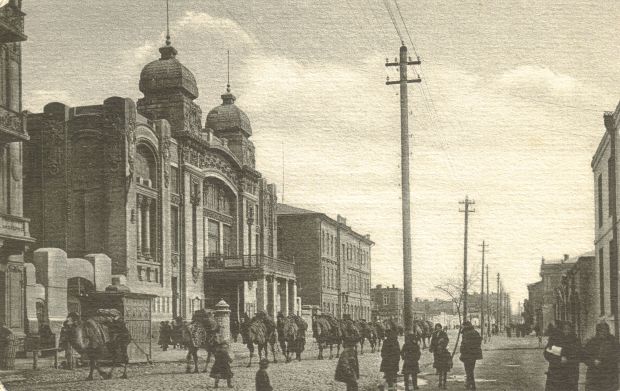
The peculiarities of Azerbaijani architecture can easily be found in Baku buildings that were built during the period of oil industry development in the 19th-20th centuries. Baku was becoming one of the largest cities in Russia.
The architecture of Azerbaijan was developing in two main directions – the house composition principles that played a significant role in the planning of housing structure, and European architectural traditions. Local architects and popular masters created their housing compositions at the base of traditional architectural forms. The representatives of the European Architectural Schools (St. Petersburg Civil Engineering Institute and the Emperor’s Academy of Arts) also contributed to the construction of housing in Baku. The national architecture did not have opportunities for revelation, and the market was dominated by European architectural styles and eclecticism. The strengthening of European architectural tendencies in buildings and the unavailability of professional local architects prevented the national architectural styles from developing. This is why any kind of usage of the national style in architecture was very important for the development and propaganda of national architecture. Nevertheless, at that stage, it was only reflecting itself in the construction of religious and cultural-residential houses.
In addition to residential housing, the most typical constructions built in Azerbaijan in the 19th century were trade houses. Such buildings were usually used as trade enterprises and handicraft workshops. Shops in Baku, Ganja, Shusha and Guba are the most vivid examples of such buildings.
Hospitals and small medical enterprises were also built in Azerbaijan during this period. The hospital, built under architect G.Hadjibabayev’s project in Salyan in the 1860s, operated until the beginning of the 20th century.
The construction of theatre buildings started in Azerbaijan in the second half of the 19th century. That was a completely new type of architecture in Azerbaijan The first theatre building was constructed in Shamakhi (in 1858, by architect G.Hadjibabayev), followed by the Tagiyev theatre in Baku (currently known as the Azerbaijan State Theater of Musical Comedy, 1883, I.Kongovitski, destroyed at the end of the 1980s ) and Mayilov Theater (currently known as the Azerbaijan State Theater of Opera and Ballet, in 1911, by architect N.G.Bayev, the building burnt down in 1985 and underwent reconstruction from 1986-87).
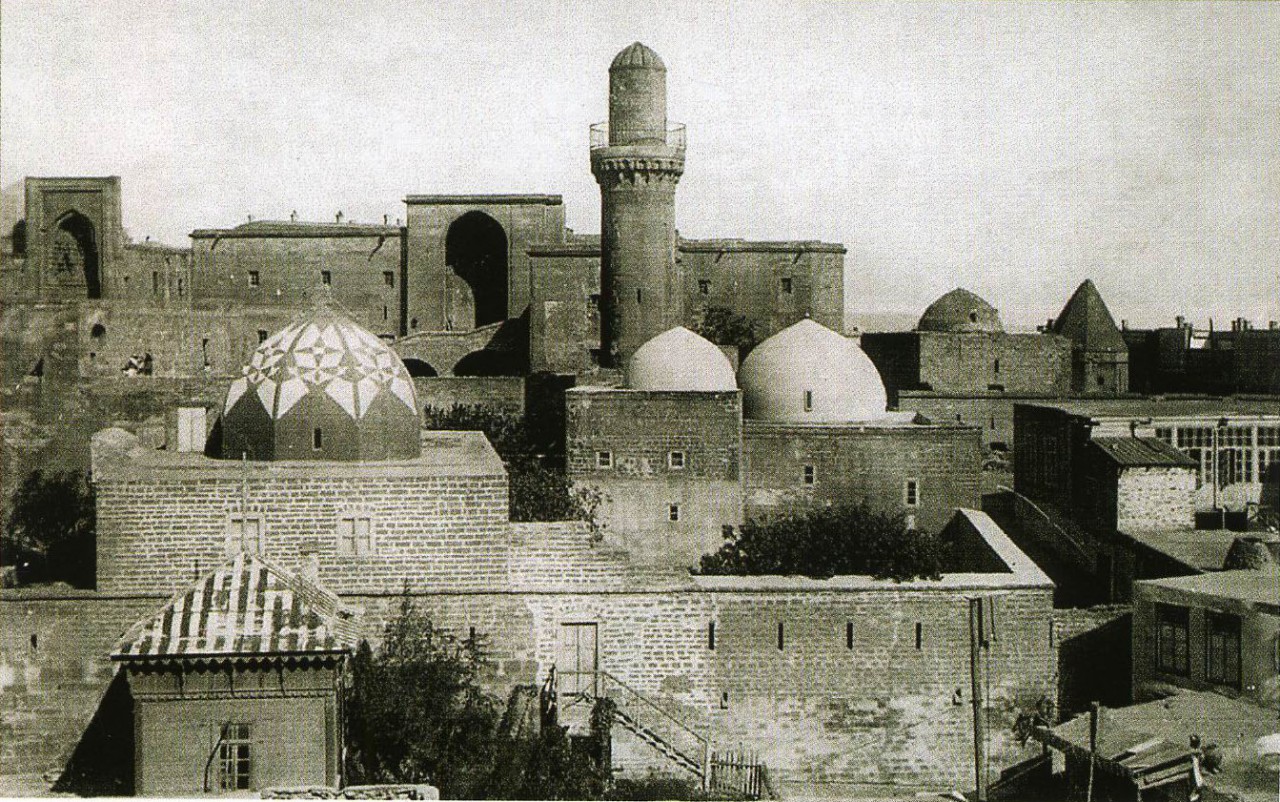
Large and monumental religious buildings were constructed in the first half of the 19th century.
Local style architecture schools continued with the old traditions in some ways, which appeared in Azerbaijan in this period. The typical external peculiarities of mosque buildings were taught in local architecture schools of Azerbaijan such as Baku-Absheron, Guba-Gusar, Ganja-Nagorny Karabakh, Shaki-Zagatala, Lankaran and Nakhichevan.
The Bey mosque in Baku (Icharishahar, architects Mahammad Haashim al-Bakuvi and Mirali an-Nagi bin Seyyid Huseyn,1895), the Gasim bey mosque (architect Mashadi Mirza Gafar Ismayilov, 1896), the Tazapir mosque (1905-14), the Goy mosque (Blue mosque – 1912-13), the V.Mukhtarov’s mosque in Amirdjan (1909, architect of all three mosques is Z.Ahmadbayov) are the most typical buildings standing for capitalism.
European architecture failed to lay down its roots in the Karabakh area, which was known for its long-time held architectural traditions and a variety of national architectural monuments. In Karabakh, it was simply missed among the local styles. Nagorny Karabakh had a special architectural school, of which Karbalayi Safikhan Garabagi was the most well-known representative. Karbala Safikhan, who was loyal to local traditions and principles, restored the Imamzade complex in Barda (1868), the Agdam mosque (1868-70), the Ashagi mosque (1874-75), the Yukari mosque or the Juma mosque in Shusha (1883), the Hadji Alakbar mosque (1890), rural mosques in Horadiz (1891-1908) and Godjahmadli (1906) – currently known as the town of Fuzuli, the Tatar mosque in Odessa (1870s), the Garabaglilar mosque in Ashgabad (1880s), and so on.
The construction of factories, stores, ports, bridges, stations and other structures led to the formation of industrial and transport architecture in Azerbaijan. Two different industrial areas existed in the period of capitalist development. The first was Baku – the industrial centre of Azerbaijan, with large oil plants and suburban industrial areas. The second consisted of manufacturing buildings for silkworm-breeding plants, quarries, cotton cleaning plants, wineries, copper plants in Gadabay and Galakand, as well as copper and cobalt plants in Dashkasan. The connections between these industrial areas improved after the Baku railroad station was built in 1883. The development of various fields of industry led to the evolution of industrial architecture in Azerbaijan.
A few of architects, masons, masters, mosaic decorators who created in the 19th and early 20th centuries are Ustad Taghi (Shamakhi, architect; mausoleum complex Yeddi gunbaz — „Seven cupolas“, Shamakhi graveyard, 1816-17), Haji Maharram (architect; fences of the Juma mosque in Baku, 1822), Mirza Gadim Iravani (mosaic decorator; wall mosaics of the Sardar palace, 1850s), Suleyman (calligrapher; mosque inscription of Amirjan village, Absheron, XIX century), Mirza Mehdi (Ganja, calligragh; mausoleum stone inscription in Rahimli village graveyard, present Goranboy region, XIX century, Zeynal and Rajab (architect; mosque in Bilgah village, Absheron, 1839), Zeynalabdin (Baku, architect, mosque in Bina village, Absheron, 1844), Mirza Jafar (Shamakhi, mosaic decorator), Ustad Ganbar Garabaghi (Shusha, mosaic decorator), Safar (master Ganbar Garabagi’s brother; mosaic decorator), Master Gurbanali (Shamakhi; mosaic decorator), Shukur Ganbar oghlu (mosaic decorator — all participated in decorative design and reconstruction of Shaki khan palace, XIX centur), Jahangirbay Aliyev (architect; general layout of Agdash, 1910), Zirvarbay Ahmadbayov (engineer-architect; Tabriz mosque in Baku and etc.).

The first stage of the architectural development in Azerbaijan during the Soviet period was related to the construction of the working settlements of Binagadi, Rasulzade, Bakikhanov, Montino, Mammadyarov around Baku). Working settlements in Absheron were the first examples of young Soviet architecture.
The general layout the Greater Baku — one of the first general layouts in the former USSR, envisioned the construction of new districts. The transportation infrastructure was improved and measures were taken to resolve housing problems in Absheron. The railway station linking Baku with the petroleum districts was built in 1926. The buildings constructed along the former Soviet Union’s first railroad had quite interesting architectural solutions in them. The Sabunchu station building, constructed at that time (architect N.G.Bayev), is one of the most interesting examples. The construction of the Mammadyarov settlement — one of the first housing estates of that time, was of the Soviet importance.
The first graduation of the Faculty of Construction of the Polytechnical Institute of Azerbaijan was in 1929. Young architects S.Dadashov and M.Useynov started to create action and developed numerous projects within a short time. Among the most attractive of their projects are the Bayil factory (present maternity hospital), new building of the Azerbaijan Industry Institute (currently known as the Oil Academy of Azerbaijan) — both 1932, the House of Fine Arts Workers, several housing buildings, the Pedagogical Technical School in Gazakh — all in 1933.
The works regarding the planting of trees and gardens in Baku began in the 1920s.
M.A.Sabir’s statue was replaced by the present monument (sculptor J.Garyaghdi, architects G.Alizade, A.Ismayilov). Construction of the new seaside boulevard (extension of the old boulevard) in the 1930s had an influence on the improvement of the central part of the general plan of the city.
Big public houses‘ completion and greenery expansion, provided in general layout of 1924-1927s, are typical for Baku architecture development of this period. One of the important measures in the implementation of the general layout was the construction of the territory uniting the 28th May street and the Bulbul avenue. The Nizami Theatre and the former building of the Ministry of Food Industry of the Republic of Azerbaijan (both in 1937-1939), built upon projects by S.Dadashov and M.Useynov, draw attention for volume-space structure and architectural solutions. They used forms and styles that were typical for antique Greek and Renaissance architecture.
A number of schools were built in Baku and other cities of Azerbaijan during 1933-36. Four-storied buildings, constructed upon projects by S.Dadashov and M.Useynov in Baku and other towns of the country, distinguished for the expressiveness of architectural solutions. Classic forms along with national architecture traditions are typical for these projects.
The tendency towards the adaptation of new architecture to national architecture characterizes Azerbaijan architect’s creative search of that time. Joint activity of S.Dadashov and M.Useynov took a leading place in the development of this direction.
Project on reconstruction and consequent development of Ganja (S.Godjamanli and A.P.Slobodyanik), approved in 1939, was one of the largest general layouts of the republic towns after Baku one in the Soviet period.
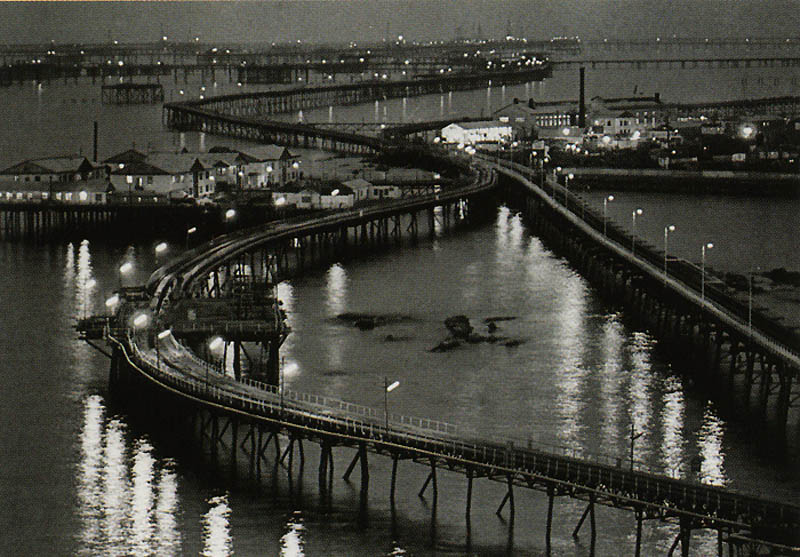
New industrial buildings, schools, institutes (the Pedagogical Institute building named after Hadji Zardabi, S.Dadashov, M.Useynov, 1940), cinemas, club and hotels, bridges over the River Gandjacay were built after the establishment of Soviet rule. Projects of Nizami Gandjavi’s statue was worked out in connection with his 800th anniversary (sculptor F.Abdurrahmanov, architects S.Dadashov, M.Useynov) and erected after the Second World War (1946; the USSR State Award, 1947). Thorough reconstruction works were carried out in Nizami mausoleum, projected in the type of traditional Azerbaijan mausoleums, the structure of poet’s mausoleum was much more changed (architect F.Imamguliyev) in connection with his 850th anniversary in 1980-1990s.
The general layouts of Yevlakh, Khankandi and Shaki were also developed in the 1930s. The construction of schools was in the focus of attention at that time.
The activities in the architectural sector encouraged the establishment of the Department for Architectural Works under the Azerbaijan SSR SPC in 1944. The necessity for the construction of new industrial centres was motivated by the rapid development of economy in Azerbaijan. The establishment of Sumgait and Dashkasan buildings in Azerbaijan began in the mid-40s, followed by the construction of Mingechevir.
The projecting and construction of the Neft Dashlari (Oil Stones) – steel pillar settlements in the open sea – heralded the beginning of a new era in post-war architecture. The Neft Dashlari was built in connection with the discovery of rich oil fields in the Caspian Sea in 1949. This extraordinary settlement includes dwelling houses, cultural objects, overpasses, etc.
The rebuilding of the Baku city centre continued together with the creative activity of Azerbaijani architects in the 1950s. Reconstruction works were carried out in the city centre, where a number of advanced buildings were erected. The Ministry of Internal Affairs of the Republic of Azerbaijan was built during 1950-1960s. The buildings of the Baku branch of V.I.Lenin’s Central Museum (1954, 1955, H.Majidov), M.F. Akhundov’s Republican Library (1960, M.Useynov), the Azerbaijan State Theater of Drama (1960, G.Alizade, M.Mammadov), Central Department Store (1961, N.Kangarli) and others have also enriched the architectural image of Baku.
The first high-rise dwelling houses were constructed in the mountainous area of the former Sovetsky street (presently — N.Narimanov avenue). The construction of the plateau at H.Javid avenue was one of the largest measures in the architecture practice of the 1950s. The complex of Azerbaijan Republic Academy of Sciences (1951-1966s, M.Useynov), dwelling houses in H.Javid avenue caused reconstruction of the Azerbaijan Polytechnic Institute building (dated to 1931-1933, S.Dadashov, M.Useynov) and appearance of districts with good amenities.
Public and cultural-housing destination buildings were constructed in other towns as well. Construction of culture buildings in Dashkasan, Mingachevir, cinemas, shopping centres, kindergartens and schools in Baku and region centres became mass. The construction of the Musical Dramatic Theatre in Nakhichevan (1961, A.Ismayilov, H.Madjidov) laid down the basis of the city centre, as envisioned in the general layout. Administrative building with longish structure constructed in the centre of Ganja (1960, F.R.Leontyeva), occupied the superior place.
The measures on the liquidation of wastefulness in projecting and construction of buildings, as well as the expansion of industrial bases, heralded the beginning of a new stage in the architecture of Azerbaijan.
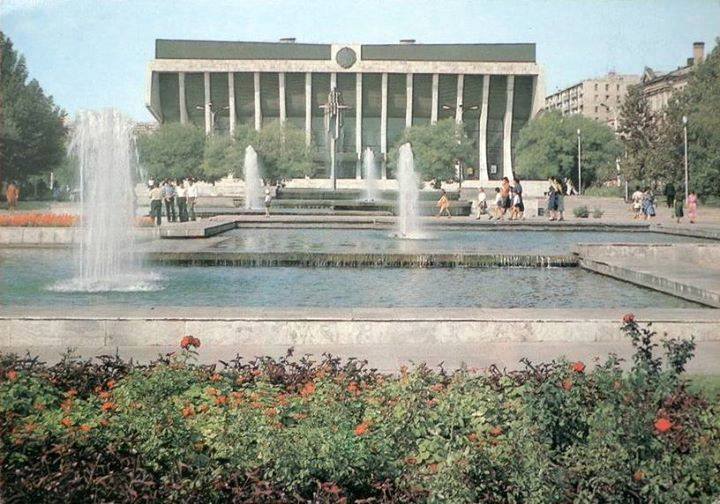
These measures included the building of numerous apartment houses in free areas and necessitated radical changes in the project procedures. The wide-scale construction of identical buildings took the place of individual projects. This was how large housing estates were built within a short time.
The new period in town-building and architectural development of Azerbaijan began in Azerbaijan in the 1960s. Baku, the capital of the Republic of Azerbaijan, grew into a large capital city during these years.
This was also the time of the erection of wonderful architectural ensembles and advanced buildings, which defined the city image. Most of them were projected at the personal initiative and under the strict control of Azerbaijani national leader Heydar Alirza oghlu Aliyev.
It should be noted that Heydar Aliyev made an outstanding contribution to the development of the general layout of the Baku city. He determined the future fate of the Baku city by meeting the modern town-building requirements. The industrial buildings built in and around Baku, the infrastructure and transportation system, were the basis of the current independence and economic growth of Azerbaijan.
Several large public buildings and monuments were erected during the late 1960s — early 1980s. The State Circus (A.Ismayilov, F.Lcontycva), The Republic Palace (V.S.Shulgin, B.I.Ginzburg, E.R.Melkhisedekov, engineer K.Karimov), hotels „Baku“ (H.Madjidov), „Garabag“ (E.RMikhisedekov), „Azerbaijan“, „Moscow“, „Absheron“, new building of Chief post office (the projects of the last 4 buildings by M.Huseynov, with aid of N.Akundova and A.N.Oltetcianan), the Republic Statistics Unit (T.Khanlarov and etc.), the Baku Railway Station (Sh.Zeynalova, Y.N.Kozlov, Kh.Rahimova), building of the Baku city Nariman district Executive Power (T.Khanlarov), building of the State political parties and public movements archive (Sh.Zeynalova, Y.Qadimov), „Nigah sarayi“ ( Marriage palace) (I.Aliyev) Ceremonial palace complex „Gulustan“ (H.Amirkhanov, N.Hadjibayov, T.Sharinski, F.Rustambayova, N.Ismayilov, K.Karimov; the Azerbaijan SSR State award, 1982), the first line of Sharq Bazari shopping centre (Eastern market) (U.V.Revazov, P.I.Yarinovski), Track and field athletics manege (Z.Quliyeva), building of the Baku city Nizami district Executive Power (T.Khanlarov, H.Mukhtarov), building of the President Administration of the Republic of Azerbaijan (T. Abdullayev), etc., improved the architectural view of the city. Such large public buildings as Sport palace (T.Abdullayev, O.Isayev, Y.Qadimov, T.Khanlarov), the second line of the Sharq Bazari complex (Eastern market) (U. Revazov, P. Yarinovski), 18-storeyed Calculating Center (T. Khanlarov, H. Mukhtarov) and etc. draw attention in respect to size-space and town-building solutions.
Architect Rasim Aliyev, the designer of the apartment building for the heads of foreign states in one of the wonderful corners of Baku city in this period, can recall that Heydar Aliyev personally was coming there at least twice a week to take interest in problems and difficulties of the construction works. He gave instructions to architects upon room placing according to requirements of international diplomatic activity as early as in the project period. Delivery of necessary construction materials from foreign countries was possible out thanks to Heydar Aliyev’s attention and managerial abilities. Heydar Aliyev even chose sorts of trees for park zone around the building. To be in short Heydar Aliyev’s architectural talent and international experience are seen in the form of organic synthesis in the construction of this apartment.

The necessity of subway construction appeared due to the difficulties in transport communication between separate districts of Baku in the result of the speedy expansion of the city. It is interesting that underground construction had been already provided in the general layout variant of 1932 of Baku. The first sector of the first line (5 stations) of the Baku subway was opened on November 6 1967. Baku was the fifth republic, owning underground transport, in the former USSR at this time.
The construction of the first line of 12 stations of the Baku subway was over with the opening of station „Nizami“ on December 31 1976. The second line of 4 stations, was launched in 1985, and the third line of 2 stations in 1989.
The Baku subway is very interesting due to the high level of its architectural arts, quality of construction and the synthesis of architecture and fine arts.
Yusif ibn Kuseyr and Momina Khatun mausoleums — the examples of rare arts created by Adjami Nakhichevani, whose 850th anniversary was celebrated in 1976, were salvaged and reconstructed. Reconstruction works were carried out in other monuments of the country, Barda mausoleum, Diribaba mausoleum in Maraz, Hazra and Kalakhana mausoleums were restored. Besides, intensive and planned works on monument reconstruction are carried out in Shaki, Shusha, Shamakhi, Ordubad, Baku and etc. The Shirvanshahs palace ensemble, an example of Azerbaijan stone architecture of Middle Ages in Baku, is particularly important. Restoration and effective usage of old public and religious buildings in Ganja are the result of architecture explorers‘ hard works and efforts. Bala Bahmanli, Gizilbajili, Ozan, Zarrabi mosques, caravanserais and other monuments are thoroughly restored.
MODERN ARCHITECTURAL MONUMENTS OF AZERBAIJAN
Our ancient Baku has always been fascinating with its history and interesting buildings. This list also includes new magnificent and unique monuments. At present, Baku is one of the most beautiful and modern cities not only in our republic but also in the world.
„Baku White City“
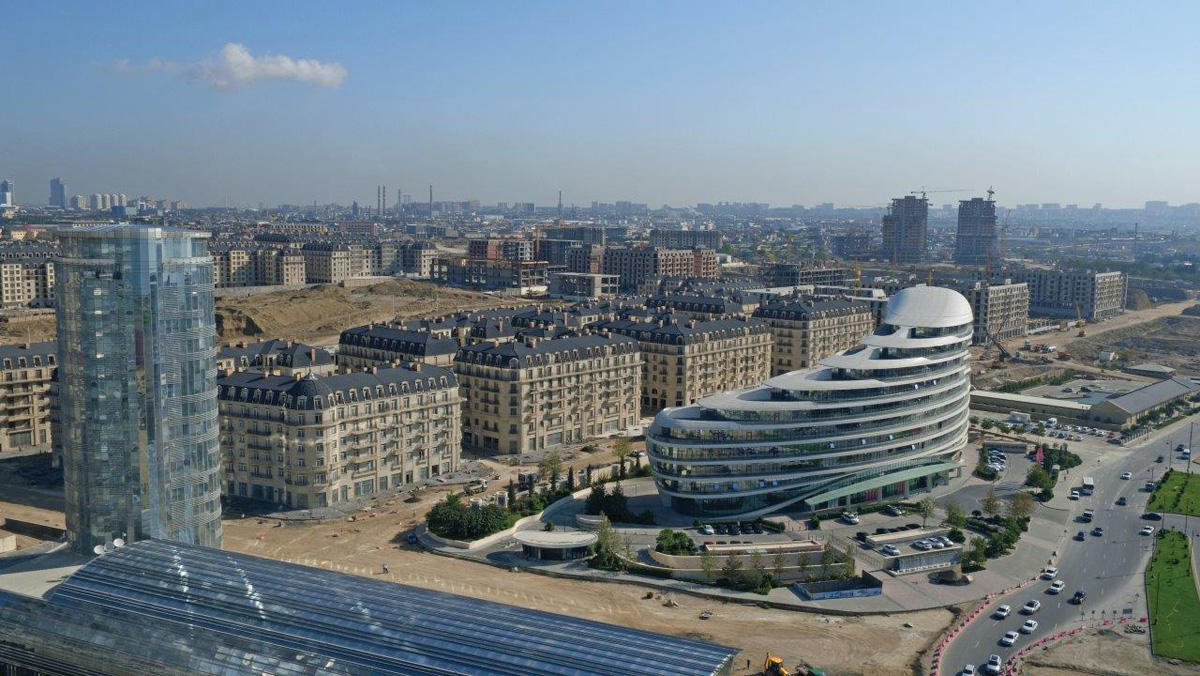
After gaining independence, beautiful architectural complexes have been created in the most prominent places of Baku, modern buildings and skyscrapers have been built that define the image of the city. The project „Baku White City“ was implemented within the framework of the decree of the president of the Republic of Azerbaijan“ Comprehensive Action Plan for improving the environmental situation in the Republic of Azerbaijan for 2006-2010″. The project was presented in the international arena as the most large-scale urban development project among professionals.
„Baku White City“ was awarded in the nomination of „Best Urban Development Project“ at the Cityscape Global Exhibition. The project was also awarded in the nomination of“ best future project of Central and West Asia „in the“ MIPIM Asia awards 2011″ contest.
In general, not only the project but also some buildings were awarded at international exhibitions in Europe and Asia.
While at the project stage, the office building of „Baku White City“ gained wide popularity among architects at the international level and was nominated several times in the nomination „the best project of the future“. During the construction phase, the building won two nominations — „Best Architecture“ and „best office building“ at the prestigious Asia Pacific Property aw fair 2013 in Kuala Lumpur.
The office building of „Baku White City“ is not only a symbol of the whole project but also an architectural example that can contribute to the modern architecture of the city. Attractive, modern, distinguished for their beauty and technique of execution, the buildings harmoniously blend into the existing architecture of Baku with a centuries-old history and make the capital even more beautiful.
National Flag Square
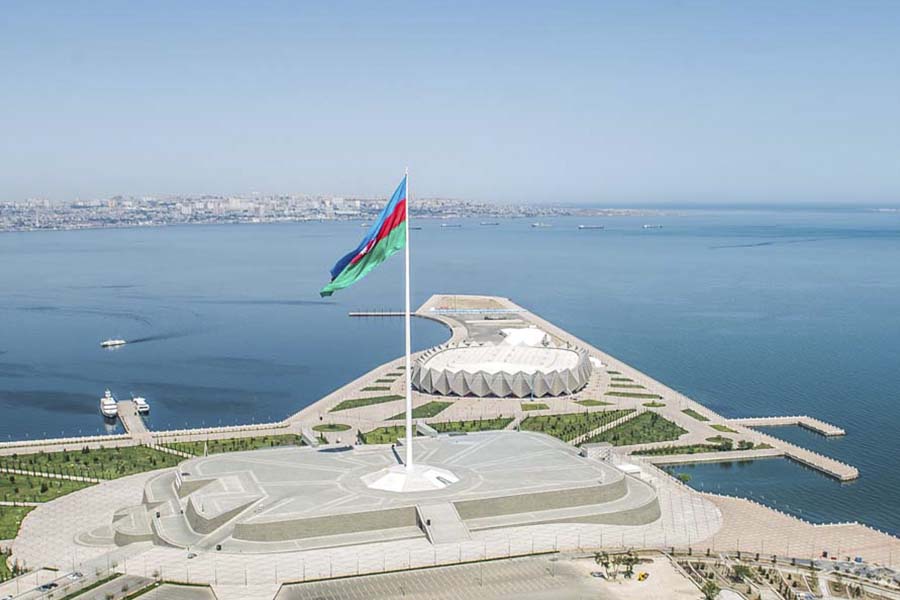
In 2007, according to the Order of the president of the Republic of Azerbaijan Ilham Aliyev dated November 17, 2504, the National Flag Square was established in Baku.
In 2007, on December 30, with the participation of President Ilham Aliyev, the foundation of the Square was laid, and on September 2010, 1, the solemn opening of the state flag Square and the flag-raising ceremony took place.
The state flag Square complex, which occupies an area of 60 hectares at the seaside, has parks and areas for walking, recreation and mass sporting, and entertainment events.
The height of the flagpole is 162 meters, the width of the flag is 35 meters, the length is 70 meters, and covers an area of 2450 square meters.
An important factor that increases the importance of this monumental complex is its transformation into a place that combines state symbols in itself. Pedestal with a height of 5 meters symbolizes the eight-pointed star and the map of the Republic of Azerbaijan, the national symbols of the Republic of Azerbaijan-the words of the anthem and the coat of arms are placed around it.
The complex also includes the state flag Museum, which covers the history of Azerbaijan’s ancient and modern statehood, where valuable exhibits are collected.
Taking into account the important role of the state flag Square complex in the socio-political life of Azerbaijan and the operational activities of complex engineering and technical facilities, on November 2010, 24 the administration of the state flag Square complex under the Cabinet of Ministers of the Republic of Azerbaijan was established by the decree of the president of the Republic of Azerbaijan no 355.
This square, created on the initiative and idea of President Ilham Aliyev and visited by high-level foreign guests, is an example of respect for state attributes and demonstrates the people’s attitude to the state. The state flag square, one of the main symbols of the capital city of Baku, embodies the power and power of the Republic of Azerbaijan and has historical significance for future generations.
Baku Flame Towers
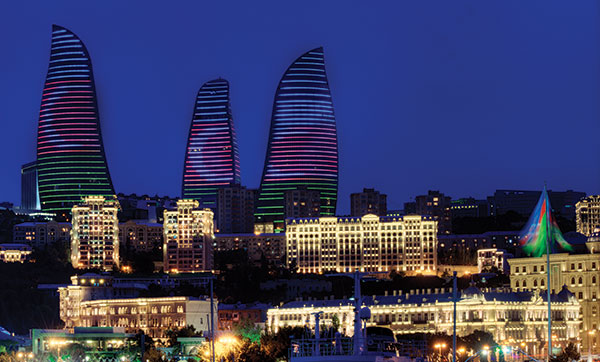
The best symbols to introduce Baku to foreigners are Flame Towers.
The „Flame Towers“ complex is the tallest building in Baku. Its height is 190 m. It consists of three multi-storey buildings. Flame Towers include hostels, apartments, and offices. The total area of the building is 235 thousand square meters. The construction of the building began in October 2007 and was completed in 2013. The length of the first tower is 182 m, the length of the second tower is 165 m, and the length of the third tower is 161 m. By its appearance, this construction is reminiscent of flame languages.
In 2013, Flame Towers was announced as the winner of the MIPIM 2013 competition “Best Hotel and tourism center”, the largest innovation project in the European real estate market.
Skyscrapercity.com according to a survey conducted by the website (authoritative forum on urbanistic), „Flame Towers“ occupy the first place in lighting. The buildings are covered with screens in order to give an animation view of them.
International Mugham Center

The International Mugham Center, built in the seaside National Park and constructed by European standards, created to promote Azerbaijani mugham in the world, further enhances the beauty of our capital.
The center was included in the list of masterpieces of the oral and intangible heritage of humanity by UNESCO among the projects implemented in the field of protection of national and moral values and promotion of Azerbaijani culture.
In 2005, following the initiative of President of the Heydar Aliyev Foundation Mehriban Aliyeva, a roundtable was held together with eminent mugham Masters, and a decision was made to establish the International Mugham Center in Baku. In the same year, on April 6, President Ilham Aliyev signed a decree on the establishment of the International Mugham Center in Baku.
As a result of regular meetings and consultations with mugham Masters, a project of the International Mugham Center was drawn up. In 2005, on August 24, President Ilham Aliyev and First Lady Mehriban Aliyeva, UNESCO Director-General Koichiro Matsuura attended the foundation-laying ceremony of the Center in the seaside National Park. In 2008, on December 27, President Ilham Aliyev and his wife Mehriban Aliyeva inaugurated the International Mugham Center.
The three-storey building is reminiscent of the ancient musical instruments of Azerbaijan-Tar. The center has a 350-seat concert hall, a club, an 80-seat restaurant, classrooms, and a recording studio.
Heydar Aliyev Center

The Heydar Aliyev Center was established on the basis of the decree of President Ilham Aliyev dated December 29, 2006, No. 1886. The center carries out systematic activities in the direction of in-depth study, wide propaganda of the statehood philosophy and ideology of azerbaijanism of the national leader of Azerbaijan Heydar Aliyev, preservation of the history and language, culture, national and moral values of Azerbaijan.
The Statue of the Heydar Aliyev Center was approved by the decree of the president of Azerbaijan dated October 8, 2012. According to the regulations, the center operates in the following areas:
– To study and widely propagate the statehood philosophy, ideology of azerbaijanism and Heydar Aliyev heritage of the national leader of the Azerbaijani people Heydar Aliyev, to take measures in this direction;
– To take measures and prepare proposals to ensure the protection and development of the national leader of the Azerbaijani people Heydar Aliyev’s heritage in the fields of Science, Education, Culture, health, sport, environment, economy, and others;
– Introduction and promotion of Azerbaijani history, culture, Azerbaijani language, and other national and spiritual wealth in the international arena;
– supporting various fields of Science, Education, Culture, health, sport, environment, and economy and implementing projects for their development;
– to organize conferences, a symposium, the museum, an exhibition, an exposition, and other actions according to activities of the Center;
– Establishment and development of cooperation with other organizations related to the study of Heydar Aliyev’s heritage.
The foundation of the center was laid in September 2007, 10, and its official opening was held in May 2012, 10, on the 89th anniversary of national leader Heydar Aliyev. The building of the Heydar Aliyev Center, which is considered one of the pearls of World Architecture, is considered one of the symbols of modern Baku. The complex has a unique architectural structure, embodying modernity and innovation.
National Gymnastics Arena

The National Gymnastics Arena for 9,000 people is located on the Heydar Aliyev highway and near the Koroglu metro station. The National Gymnastics Arena is intended for competitions in artistic and artistic gymnastics.
The design of the arena allows you to demonstrate its versatility and host it. The number of spectator seats can be increased from 5000 to 9000 depending on the size and nature of the competitions. The seats used in indoor and outdoor areas are designed with a special design.
Designed with special technology, the Arena can be expanded and host large-scale competitions such as rhythmic gymnastics. At the arena, the gymnasts are preparing for international competitions.
There are training halls, canteens, gymnasiums and auditoriums, and a cafe for athletes. In addition to the restrooms, a dining room, the arena has 2 floors for the main competitions and VIP cafeterias on each wing, which provide services for sponsors. There are also interview rooms, media control, sponsorship, and media rooms here.
National Olympic Stadium
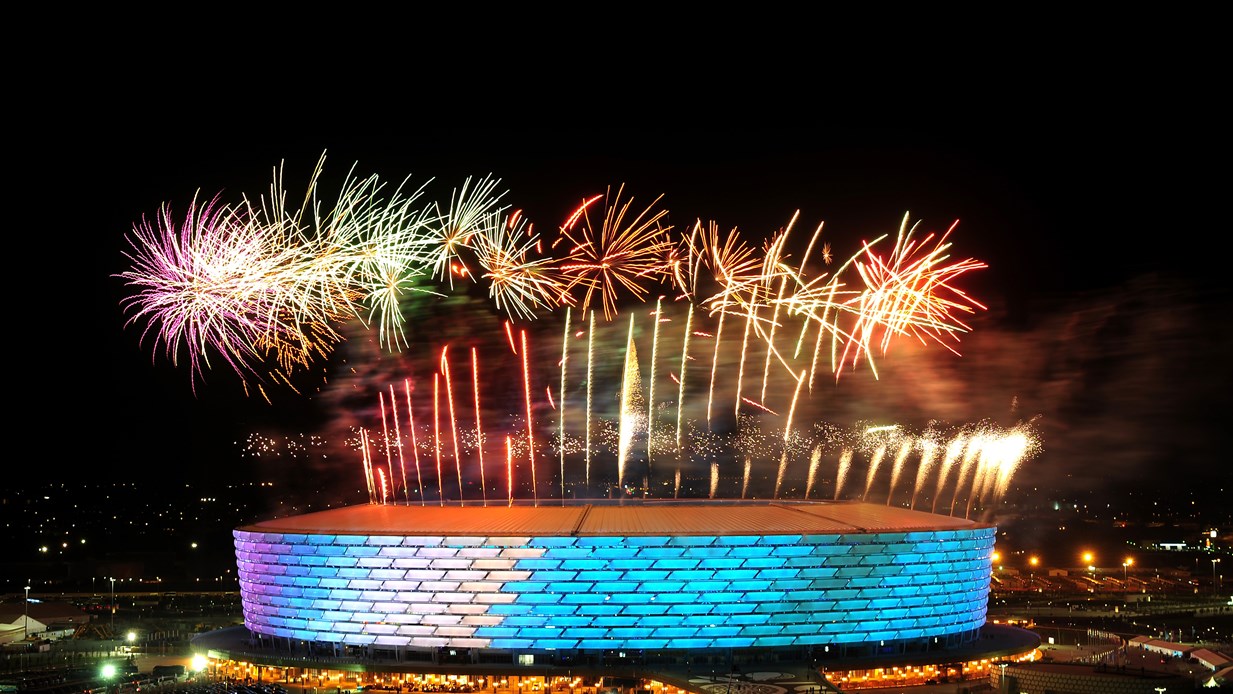
The groundbreaking ceremony of the Baku Olympic Stadium took place on June 6, 2011, the 100th anniversary of Azerbaijani football. President of the Republic of Azerbaijan Ilham Aliyev and his wife Mehriban Aliyeva, FIFA President Joseph Blatter, UEFA President Michel Platini, prominent figures of the world football community, football veterans, and a number of guests attended the ceremony.
Speaking at the ceremony, the FIFA president said: „This is really a very beautiful building, more than 68,000 football fans will come here and enjoy the games.“ Then-President Ilham Aliyev left a symbolic metal capsule to the foundation of the stadium.
650.000 sq. ft. of the National Olympic Stadium. The construction of the 225,000 sq m section of the m area was completed in February 2015. The 6-storey and 65.7-meter-high Stadium was built in Baku near Boyukshor Lake and were ready for operation on March 6, 2015. The main tenant of the stadium is the National Football team of Azerbaijan.
The stadium was used as the main venue for the Baku-2015 I European Games, which took place in June 2015 and hosted the opening, closing ceremonies, and athletics. In addition, the stadium will host the 3 group stage of the Euro-2020 European Championship and the 1/4 final stage. The stadium is equipped with a multi-car parking area, walking, and high infrastructure.
VVIP, VIP and CIP suites of the stadium have a total of 127 rooms and a capacity of 720 spectators, specially designed 25.200 sq.ft.m. the interior has a total area of 3,078 cars. With a capacity of 1,800 spectators, heating ground, MES building, data center, and 2 external buildings, design and engineering services and construction Control and planning services were successfully implemented by TEKFEN.
Carpet Museum
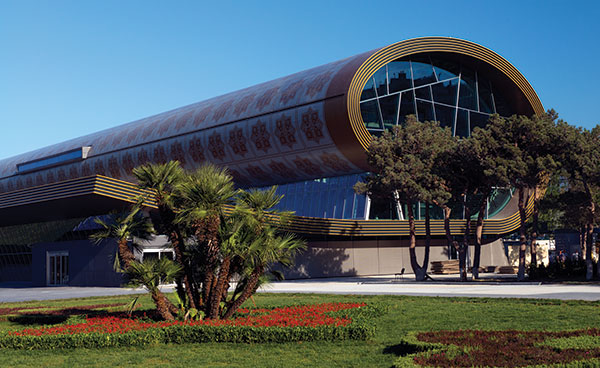
The Azerbaijan Carpet Museum was established in 1967 and became the first museum specialized in collecting, protecting, and studying carpets in the world. Its first exposition was opened in 1972 at the Juma Mosque in the old Baku area, in the Old City.
This museum is a treasure of national culture that demonstrates the carpet in interaction with other traditional art forms of Azerbaijan. Its collection includes about 14,000 carpets, embroidery, clothing, copper items, jewelry, glass, wood, and felt products.
In 2008, by order of President Ilham Aliyev, the construction of a modern building of the Carpet Museum began, and in 2014 its first exposition was opened.
The exposition is located on three floors:
1st floor: development of Azerbaijani carpet and its role in people’s life;
2nd floor: Azerbaijan carpet weaving centers;
3rd floor: modern Azerbaijani carpet weaving.
SOCAR’s new building
On May 30, 2018, a new office building of the state oil company of the Republic of Azerbaijan (SOCAR) was inaugurated in Heydar Aliyev Avenue in Baku. President of the Republic of Azerbaijan Ilham Aliyev has attended the opening ceremony. The foundation of the giant building was laid by President Ilham Aliyev on October 2010, 12. Work on designing the building started in 2007. As a result of the construction work carried out over five years, one of the most beautiful examples of architecture of the capital has been created.
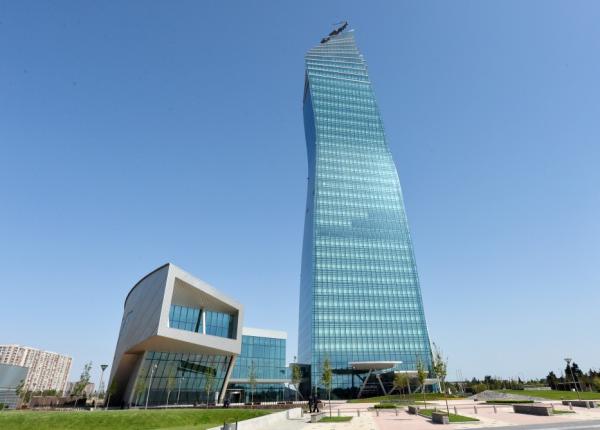
On the first floor of the building, there is a photo stand describing the activities of national leader Heydar Aliyev and President Ilham Aliyev, the founder of the new oil strategy of Azerbaijan. With a height of 200 meters, 40 floors of the building are above-ground and 2 floors are underground and cover a total area of 5 hectares.
The 34-37th floors of the building, distinguished by its modern architectural style and special beauty, will function as offices of the administration, 18-33rd floors as offices and departments of the main office, and 3-16th floors as offices of the company’s structural divisions. The structure of the building is based on a composite system with reinforced concrete walls and steel structures. The project of the building, which is resistant to the Richter 9-point earthquake, was tested in a virtual environment in a special international laboratory in Canada and calculated on the wind speed of 190 km / h.
The new office building has three conference rooms. The 233, 110, and 22-seat conference rooms have all the conditions for holding various events. Two fitness centers fitted with all kinds of equipment have also been built in the building. All conditions have been created in the dining room for 450 people, as well as the cafeteria for 130 people. On the podium of the building, there is also a library with rich literature for the use of employees.
In the underground part of the building, there are parking lots for 1045 cars and 240 cars. In accordance with the wind-tunnel test, the building was equipped with a damper system to limit the amplitude of the blowing. Facade cleaning and other services will be carried out by means of a crane with a telescopic basket located above the building. In addition, the building has been provided with double-cabin elevators and automated central orientation systems.
New administrative building of the State Oil Fund
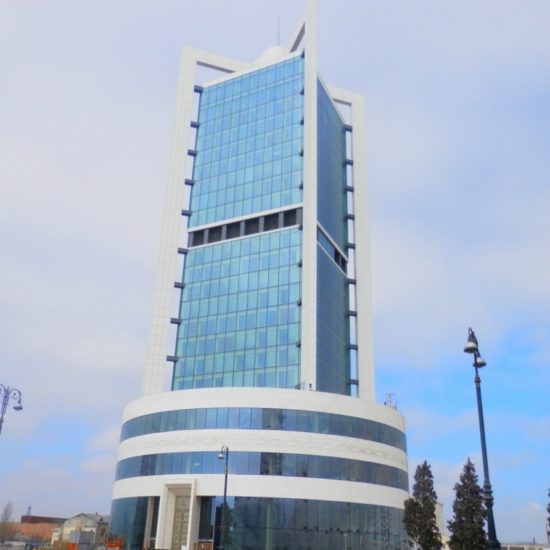
President Ilham Aliyev and his wife Mehriban Aliyeva attended the opening of a new office building of this structure in 2007, December 29, the 15th anniversary of the establishment of the State Oil Fund. The height of the 24-storey building together with the tower is 140 meters. The new building of the State Oil Fund was built taking into account the requirements of “BREEAM Assessment” assessment rates.
Extensive landscaping and landscaping work has been carried out and modern infrastructure created. The building’s interior is based on the design concept, which includes elements of 9 Azerbaijani carpet-weaving schools. Each floor has a special design based on the motives of one of the carpet weaving schools. The mosaics of the Ardabil carpet belonging to the Tabriz School of carpet weaving created here are rare works of art in the world.
Heydar Aliyev corner has been created on the first floor of the building. A statue of the Great Leader has been erected here. The building has 7 elevators meeting the latest standards. The museum reflects the oil history of Azerbaijan and the oil strategy of national leader Heydar Aliyev. The assembly hall in the new building is 200 people. The dining room for 150 people also attracts attention with its modernity and original design.
It will be possible to hold relevant events in the conference hall with the participation of 40 people. All rooms and halls are provided with equipment based on the latest scientific and technical innovations. All conditions have been created here for effective work. A building management system was installed here for the first time in Azerbaijan. In this system, where human intervention is minimized, technical, security, and information technology issues of the administrative building are centralized.
Ventilation of the building is also carried out through a modern BMS program. Since environmental issues are also in the spotlight, this place meets Green Building Standards. Solar panels have been installed in the building to use alternative energy. An underground car park meeting the most modern standards has been built in the basement part of the building.
Baku Aquatic Center
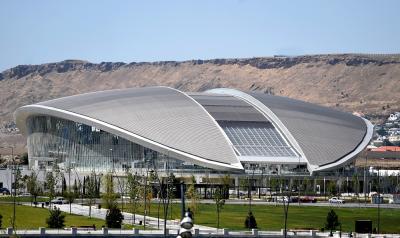
The Baku Aquatic Centre is a symbolic sports arena for Azerbaijan. During the games, this complex hosted competitions on three types of water sports — swimming, diving, and synchronized swimming. In order to develop water sports in Azerbaijan and organize competitions of local and international levels in this area, President Ilham Aliyev signed an order in August 2012 on the construction of a Water Sports Palace meeting modern standards in Baku on August 30. In 2013, on April 19, with the participation of the head of state, the foundation of this magnificent sports palace was laid.
This huge sports facility, covering an area of six hectares, has been built with high quality and is already ready for use. Located in Bayil settlement, in the newly built part of Baku Boulevard, the aquatic Palace with a total area of 72 thousand square meters fully meets the requirements of the International Swimming Federation.
The most modern equipment and building materials were used in the construction. The length of the diving pool in the main hall is 25 meters. A five-stage diving platform with a height of 1, 3, 5, 7.5 and 10 meters has been built here. The pools were created by the Italian company “Myrtha Pools”, an official partner of the International Swimming Federation.
More than 6 thousand spectators can watch the competitions at the Water Sports Palace at the same time. In addition, the palace has sections for disabled spectators, VVIP, VIP, and media. Special panoramic glass panels “SKYLIGHT” were used on the part of the roof of the building. These glass panels also have the function of converting solar energy into electrical energy. The electricity generated here will be directed to the energy supply of some areas of the palace.
The building has fitness-acrobatics and weightlifting halls with special training platforms and equipment for swimmers. A swimming pool has been built in the second Hall of the aquatic Palace for training. The length of the pool is 51 meters, the width is 20 meters.
Baku Crystal Hall
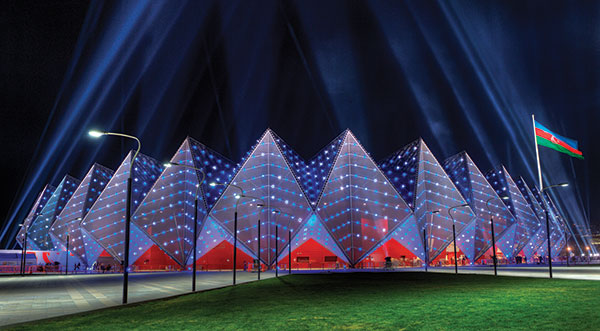
Baku Crystal Hall was a sports and entertainment complex intended for holding the “Eurovision-2012” contest in Baku.
At present, many concerts are held in the Crystal Hall.
Constructed on the state flag Square in Baku, the Baku Crystal Hall Sports and concert complex is designed to hold mass-cultural events at the international level. The complex occupies more than 23 thousand people.
An additional 16 thousand spectators have the opportunity to watch the performances in the hall directly on large monitors outside.
„YARAT“ Contemporary Art Space
It is an independent, non-governmental organization whose main goal is to support the contemporary art of Azerbaijan at a professional level, to hold exhibitions, festivals, seminars, master classes, and various training and educational events aimed at promoting national artists in Azerbaijan and abroad. Founded in 2011 by Aida Mahmudova.
Heydar Aliyev International Airport
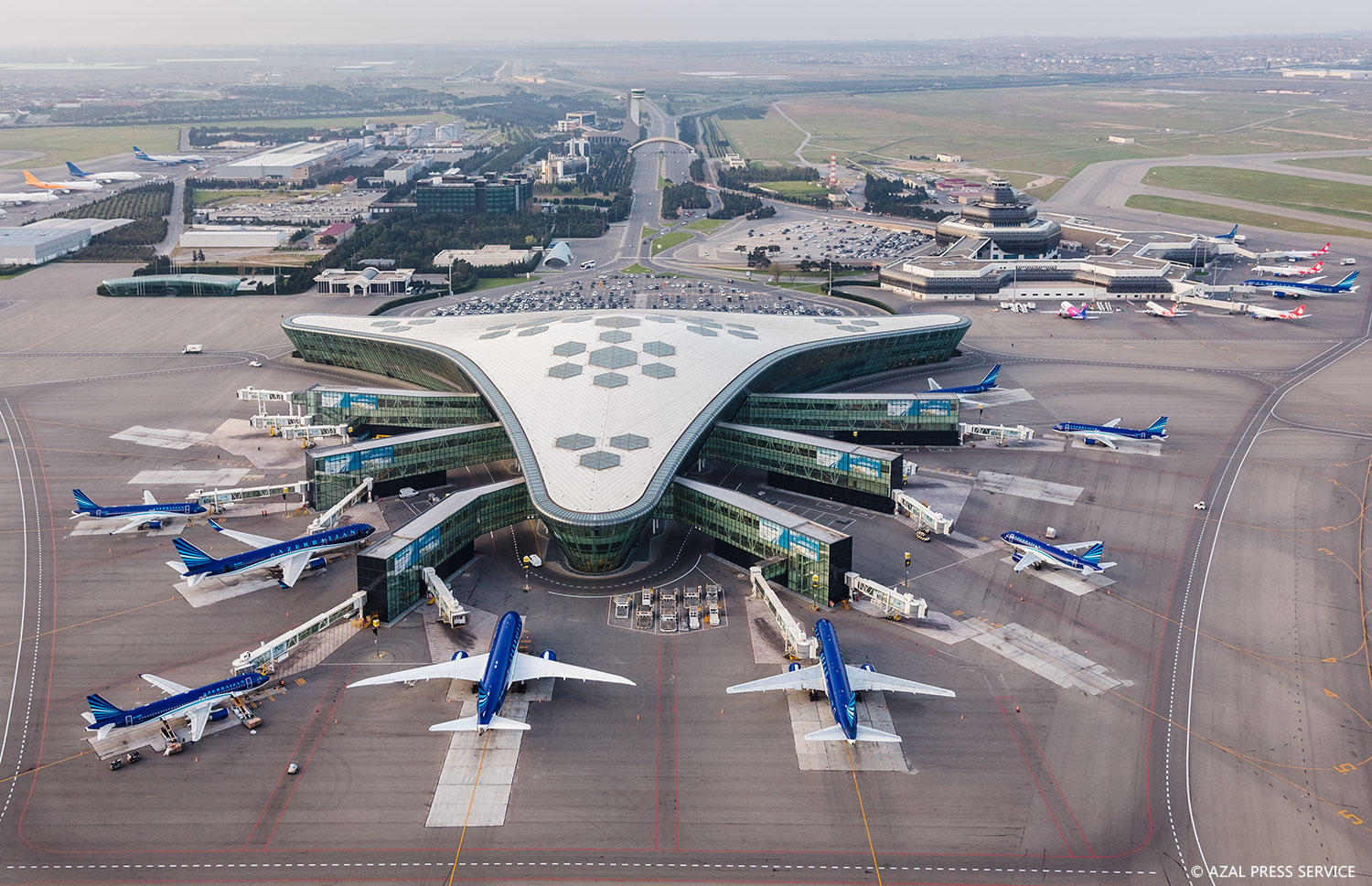
Heydar Aliyev International Airport, which is located 20 km northeast of Baku and is the largest international airport in the Caucasus, is included in the rating tables compiled by authoritative news portals. So, the „Business Insider“ website, popular in business circles, has published the list of the 14 most beautiful airports in the world. Heydar Aliyev International Airport ranks 6th on the list. Heydar Aliyev International Airport, a unique architectural masterpiece, as the air gate of our country, demonstrates the current development of Azerbaijan. It is no coincidence that Heydar Aliyev airport, which adorns Baku, took 1st place among the most beautiful airports in the world as a result of a survey conducted by the influential „The Jakarta Post“ newspaper. It should be noted that in the article talking about the role of airports in the life of the country and people, it is emphasized that the airport is not only a transport destination but also an economic indicator of the country. It was noted that the greater the income of the population of a country, the more people will travel and travel the world. Describing the 13 most beautiful airports in the world, „The Jakarta Post“ was the first in the list to mention Heydar Aliyev International Airport. It was noted that the Baku airport can serve more than 5 million passengers a year.
The buildings we have listed are architectural examples reflecting not only the image of Azerbaijan, but also its material and moral values, customs, and traditions. These architectural patterns are gradually increasing and serve the recognition of our Azerbaijan in the world.
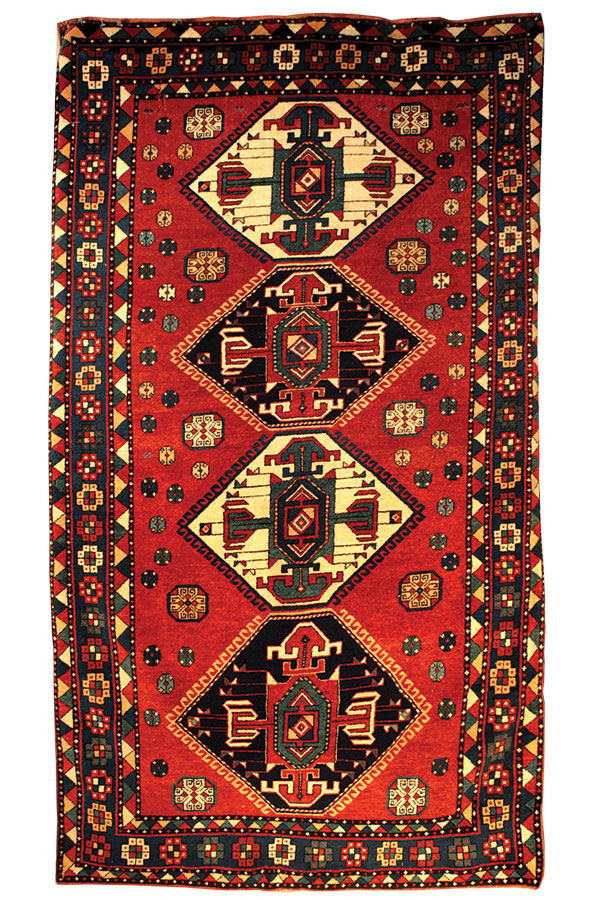
Azerbaijani folk-applied art and its branch-carpet weaving occupy a special place in the history of the national culture of the people.
The most widespread type of folk art is the art of carpets, which occupied a strong place in the life of the Azerbaijani people and almost became the symbol of the people. Fleecy and pileless carpets, decorated with various elements and drawings, are used in wall decoration and laying of beds, tents, alachigs, as well as residential houses and other buildings, and are of high aesthetic importance at the same time.
According to archaeological materials and written sources, carpet weaving was engaged in Azerbaijan even from the Bronze Age. (before the end of the II millennium BC -at the beginning of the I millennium). The city is associated with enthusiastic people from around the world who have enjoyable. Hey. (II millennium BC), a Chul picture decorated with flower images was discovered on the Hasanli Hill near Lake Urmia of golden glass ( I millennia BC) the description of the glaze covered on the surface and other findings show the ancient history of carpet art in Azerbaijan. Remains of Palas and carpets belonging to the I-III centuries were found during archaeological excavations in Mingachevir from catacomb graves.
Herodotus, Claudius Elian, Xenophon, and other ancient historians of the world gave information about the development of carpet weaving in Azerbaijan. In the period of Sassanids (III-VII centuries) carpet art developed in Azerbaijan, exquisite carpets were woven from silk, gold, and silver threads. Albanian historian Musa Kalankatli (VII century) informs about silk fabrics and colorful carpets woven in Azerbaijan. The production of carpets woven with gold-silver threads and decorated with brow Stones became traditional in the XVI-XVII centuries. In the Middle Ages, the main production centers of pileless carpets woven from gold and silver threads were the cities of Tabriz, Shamakhi, and Barda. Such carpets, which were mainly woven for feudal lords, were called „Zarbaf“ because of their high cost. English traveler Anthony Jenkinson, who visited Azerbaijan in the XVI century, informs about carpet woven with gold and silver threads in Abdulla Khan’s summer residence in Shamakhy. Yan Streits, a Dutch traveler of the XVII century, says that the Chul laid on the Shamakhy judge’s horse is decorated with golden threads and pearls and precious stones.
Interesting information about Azerbaijani carpet products and their artistic features is found in written sources of the Middle Ages. In the work „Hudud al-Alam“ („borders of the world“) of the X century, an unknown author informs about the palas and chules woven in Mughan, Zili carpets of Nakhchivan, silk carpets of Azerbaijan in the epos „Kitabi-Dada Gorgud“, fleecy and fleeceless carpets in the works of Abul Ula Ganjavi, Nizami, Khagani (XII century).
In the XIII-XIV centuries many carpets and carpet products were exported from Azerbaijan to foreign countries. These carpets, attracting attention with their delicate ornaments, delicate and delicate patterns, are reflected in works of famous European artists, miniatures. In the work of Dutch painters of XV century Hans Memling „Maryam with her baby“ Shirvan carpet, in the work of Van Eykin „Saint Maryam“ „Zeyva carpet“, in the work of German artist Hans Holbein (XV Century) „Ambassadors“ „Gazakh“ carpet were depicted.
In the second half of the XVIII century, the north of Azerbaijan began to be divided into small feudal — Sheki, Baku, Guba, Karabakh, Irevan, Ganja, Nakhchivan, Shirvan khanates. In the period of khanates, carpet production was greatly expanded and each Khanate had its own carpet-making quarry. The development of carpet weaving in the period of khanates paved the way for the formation of the name of carpet weaving schools in the future.
The best samples of carpets and carpet products brought from Baku, Guba, Shamakhi, Ganja, Sheki, Gazakh, Javad uyezd, and other places were demonstrated in Moscow in 1872 at Moscow Polytechnic and in 1882 at the all-Russian industrial and art exhibition were awarded gold and silver medals. The main part of the exhibits displayed at international exhibitions organized in Vienna (Austria) in 1872, Turin (Italy) in 1911, London and Berlin in 1913 were carpets and carpet products from Azerbaijan.
Types of fleeceless carpets. According to their technical characteristics, Azerbaijani carpets are fleecy and fleeceless. Fleecy carpets date back to the earliest period of weaving.

Azerbaijani carpet art differs due to its high artistic technical quality and variety of fleeceless weaves. Here are presented all samples of fleeceless carpets, and in the carpet art of other countries, these patterns are represented in small quantities. In this regard, German art critic G.Rop proves that in the section“ Caucasian carpets „of the book“ oriental carpet “ carpets here originate much earlier than Asian carpets, and pileless carpets — kilims are the best in the Caucasus. The basis of the creation of pileless carpets and carpet art, in general, is their first simple examples- woven, cheten, buriya. Pileless carpets are divided into 8 types that differ from each other according to their weaving method, composition structure, ornament richness, and color.
– Palaz
– Cecim
– Ladi
– Kilim
– Shadda
– Varni
– Zili
– Sumakh
Azerbaijani carpet weaving schools. As an art area, Azerbaijani carpets are conditionally divided into 7 carpet-weaving schools due to their geographical location, patterns, Composition, Color Solution, and technical features:
1. Guba
2. Baku or Absheron
3. Shirvan
4. Ganja
5. Gazakh
6. Karabakh
7. Tabriz
1. Guba Carpet Center located in the north-east of Azerbaijan is divided into three parts — mountainous, Foothill and lowland. Centralized points in Gonagkand, Khashi, Jimi, Afurja, Yerfi, Budug, Giriz, Jek, Salmasoyud villages can be attributed to the mountainous part.
Carpet production in the foothills is carried out in Amirkhanli, Alikhanli, Khalfalar, Piramsan, Bilij, Shahnazarli, Pirabadil, Zeyva, Zohrami, Sumagobag, Khirdagul-Chichi, backpack-Chichi, Dere-Chichi villages, and in the lowland, Shabran Aran zone, Chay Garagashli, Haji Garagashli, Susanli, Garagashli, Devechi, Mollakamalli, and others. and in the towns. This school also includes carpets woven in Derbent.
The decoration of Guba carpets is stylized plant ornaments consisting of geometric patterns, and sometimes animal motifs. The medallion style is also widely used in the carpets of this school. The most striking compositions of Guba carpets are „Gadim-Minara“, „Qimil“, „Alpan“, „Gollu-Chichi“, „Pirabedil“, „Hajigaib“, „Giriz“, „Jack“ and others.- is.

2. Baku school includes Absheron villages-Goradil, Novkhani, Nardaran, Bulbula, Fatmai, Mardakan, Gala, Khila, and other villages, as well as Khizi district located outside Absheron and Qadi, Hil, Kesh, Findighan, and others. it covers carpet areas. Baku carpets are distinguished for their softer color intensity, originality of artistic elements, and subtlety of patterns. Geometrical-shaped lakes and curved-line botanical elements prevail in the ornaments of carpets. In the color range of Baku carpets, mainly dark blue, in rare cases, red and yellow colors are used for the intermediate area location. Most of these carpets bear the name of the village where they are woven. Baku Group includes „Khilabuta“, „Khila-Afshan“, „Novkhani“, „Surakhani“, „Gala“, „Baku“, „Goradil“, „Fatmai“, „Findighan“, „Qadi“ and other condiments are included.
3. Shirvan carpet school. It covers Shamakhi, Maraza, AGSU, Kurdamir, Gazimammad (Hajigabul), Goychay, and their surrounding villages. Shirvan group includes „Maraza“, „Gobustan“, „Shirvan“, „Kurdamir“, „Shilian“, „Shirelibey“, „Chukhanli“, „Bijo“, „Sor-Sor“, „Hajigabul“ and others. includes compositions. Rich and intricate patterns of Shirvan carpets have been popular since the Middle Ages. German, English merchants and ambassadors of the VI-VIII centuries provided valuable information on the art value of Shirvan carpets in their diaries. These carpets were praised in the paintings of European artists in the XIV-XV centuries. Dutch artist Hans Memling (XV century) in his work „Maryam with her baby“ depicted the „Shirvan“ carpet.
4. Ganja carpet-weaving school covers the territory of ganja city and its surrounding villages, Gadabay and Goranboy, Shamkir, and Samukh districts. The center of this school is a little town. Ganja, one of the ancient cities, is located in the northwest of Azerbaijan. Ganja was known as a center of production of silk, wool fabrics, silk carpets in the X-XI centuries. For centuries, there were special carpet workshops in Ganja, a center for the production of high-quality carpets. Ganja carpet-making school had a positive impact on the carpet-making of the regions around Ganja.
Ganja carpet school includes „Ganja“, „ancient Ganja“, „Golkand“, „Fakhrali“, „Chaykand“, „Chayli“, „Shadili“, „Chiragli“, „Samukh“ and others. includes compositions. „Fakhrali“ prayer carpet belonging to Ganja group differs from other carpet compositions for its high artistic feature and touch.
5. Gazakh carpet-making school is located in Gazakh, Borchali, where Azerbaijanis lived in Georgia, and Goycha carpet-making centers in Armenia, where Azerbaijanis lived until 1988.
Gazakh Carpet Center includes Gazakh and its surrounding villages, Agstafa, and Tovuz regions of Azerbaijan.
Goycha Carpet Center is surrounded by the territory around Bambak, Lambali, Ijevan, Garagoyunlu, and Goycha lake (now Sevan), and Borchali carpet center includes Borchali, Garayazi, Garachop, Gachagan carpet points.
To the Kazakh group, „Shikhli“, „Borchali“, „Gaymagli“, „Garagoyunlu“, „Garayazi“, „Garachop“, „Gachagan“, „Dagkesemen“, „Demirchilar“, „Kemarli“, „Goychali“, „Salahli“ and others cheshnili carpets included.
A harmonious coloration is created in the carpets of these schools with little colors. Patterns of ganja-Gazakh carpets attracted the interest of European artists even in the Middle Ages, the images of „good news“ by Carlo Krivelo, Italian painter of XV century, „messengers“ by Hans Holbein (XV century) of German painter were described.
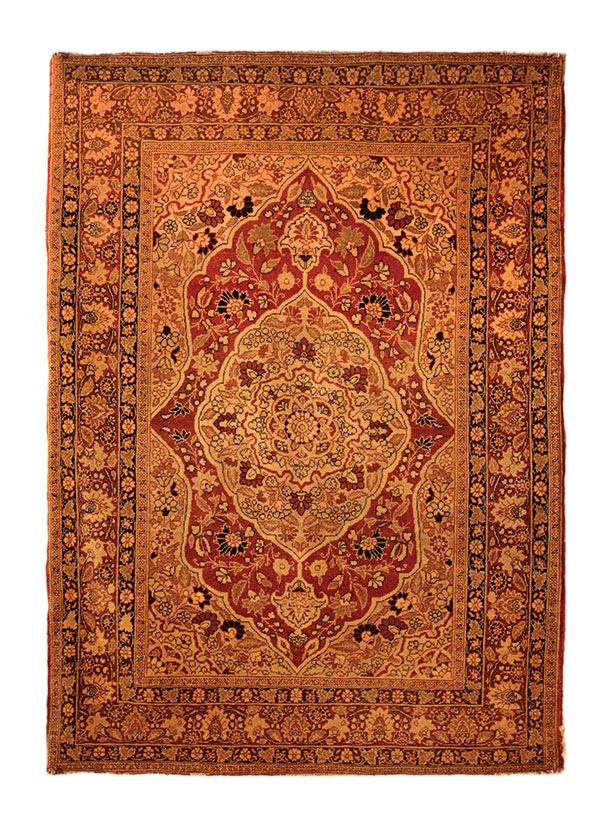
6. Karabakh carpet school, located in the southwest of Azerbaijan, has developed in two regions — mountainous and lowland zones. In written sources, Shusha City and villages of Dashbulag, Dovshanli, hostage, Trniviz, Malibeyli, Chanakhcha, tug, Tuglar, Hadrut, Muradkhanli, Gasimushagi, Gubadli, Gozag, Mirseyid, Bagirbeyli, Khanlig, Tutmas played a major role in carpet making in XIX century in the mountainous zone of Karabakh, which was mentioned by Arab historians Al-Sacred, Masudi and b. as a large Craft Center engaged in wool and cotton processing since X century. Of course, in low-lying areas, where raw materials are provided better than in the mountainous regions, Jabrayil, Agdam, Barda, and Fuzuli occupy the main place in carpet production. There were a lot of villages in each of these centers where people were intensively weaving carpets for sale. In terms of their artistic structure, technological features, color solutions, Zangazur, and Nakhchivan carpet production centers are also included in the Karabakh carpet school. „Aran“, „Baghadagullar“, „Balig“, „Buynuz“, „Barda“, „Bahmanli“, „Karabakh“, „Goja“, „Gasimushaghi“, „Lambarani“, „Mughan“, „Talish“, „Lampa“, „Malibeyli“, „Khangarvand“, „Khanlig“, „Khantirma“, „Chalabi“, „Shakhidbuta“, etc. cheshnili carpet compositions are one of the classic examples of Karabakh carpet-making school. A set of 5 carpets adapted to the interiors of the houses in Karabakh is widely spread.
In the early 1750s Panahali Khan of Karabakh laid the city of Shusha. The city was originally called Panahabad and for many years became the capital of the Karabakh Khanate. In the XVIII century, Garabagh carpet-weaving school was concentrated in Shusha. In the XVIII century, along with classical carpets, new carpet compositions — „Baghadagullar“, „Saxsidagullar“, „Bulud“ and others were woven from the patterns taken from the collection, fragrant soap, fence, and other household items brought from Russia and Europe. The color palette of Karabakh carpets is very rich. This palette reflects the most elegant shades of all colors of Karabakh nature. Since ancient times, the middle field area of Azerbaijani carpets has been traditionally worked in red color. In addition to various plants, colors were obtained here from the Middle Ages. The most common in them to get a red color is cachenil. Among the people he was called „insect of red“, „red worm“, „chick of Oak“.
7. The peace treaty concluded between Russia and Iran on February 1828, 10, in the village of Turkmenchay near Tabriz, entered history under the name of the Turkmenchay treaty and ended the Russian-Iranian war of 1826-28. Under the terms of the treaty, the northern part of Azerbaijan joined Russia. The southern part of the country, including Tabriz, Ardabil, Urmia, Khoy, Maragha, Marand, Maku, and other cities, was enslaved by Iran. Thus, Azerbaijan was divided into 2 parts. Since that time the term „South Azerbaijan“ has appeared. Since then, carpet samples of Tabriz carpet school have been known as Iranian carpets all over the world.
Tabriz carpet school is the oldest and most famous carpet school in Azerbaijan and covers Tabriz, Ardabil, Maragha, Marand, Maku, Khoy, Urmia, Zanjan, Gariga, Heris, Sarab, Ahmedabad, Mirish, Ahar, Salmas, Goravan, Senna, Garadagh and other carpet points. Turkish-speaking tribes who lived in this area played an important role in the formation and development of carpet weaving since ancient times and had a serious impact on the formation of Iranian carpet art at different times. In the Middle Ages, trade relations with the most important shopping centers and rich cities of the East, as well as with Europe, led to the rapid development of the art of carpet weaving. Tabriz carpet school, which is already in bloom in the XI-XII centuries, mastered the artistic features of the Tabriz miniature school in the XIII-XIV centuries, reached a high stage of development in the XVI-XVII centuries. Pileless and fleecy carpets belonging to this school are distinguished by Artistic Design, Color Harmony, and a variety of ornamental decorations. Tabriz carpet school is divided into 2 groups according to the main carpet compositions: Tabriz and Ardabil groups. The Tabriz group includes compositions „Tabriz“, „Bakhshayish“, „Gariga“, „Goravan“, „Heris“, „Petachturunc“, „Afshan“, „Agajli“, „hunting“, „four chapters“, and „Ardabil“, „Sheikh Safi“, „Shah Abbasi“, „Sarabi“, „Zanjan“, „Mir“and „Achma-yumma“. „Bag-Paradise“, „bag-forest“, „Balig“, „Buta“, „Dervish“, „Ketebali“, „Gordastet“, „gollu-gushali“, „Guldanli“, „Leyli and Majnun“, „Mashahir“, „Mun“, „Namazlig“, „Najagli“, „Sarvistan“, „Sardari“, „Sahand“, „Syvi petal“, „Farhad and Shirin“, „Khayyam“, „Khayyam Khatai“, „Ashad“, „Charkhi-Gul“, „jeyranly“, etc. classical compositions are also popular. The famous carpet „Sheikh Safi“ (size 56,12 sq. m, 1539, „Victoria and Albert“ Museum, London) the most beautiful example of ornamental carpets is the masterpiece of Tabriz School of carpet weaving.
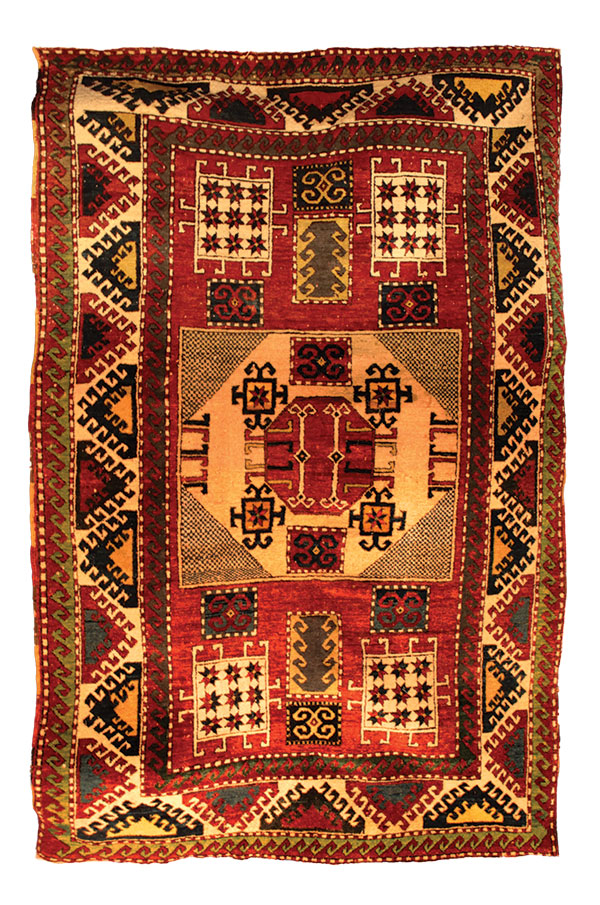
The development of carpet weaving in the XX century. The period of further development of Azerbaijani carpet art dates back to the middle of XX century. During this period, the development of Azerbaijani carpet art continued in several directions and was multifaceted. Carpet art traditions in the regions and villages of the Republic are continued by different carpet Masters. Their creative attitude to classical compositions is evident in the carpets woven by traditional varieties. At the same time, new compositions and elements of patterns appear in carpet weaving. In the newly created fountains, the tendency to floral patterns with relatively curved lines, human, animal, bird images, plot compositions created in lyrical and romantic styles is superior. Another branch of the development of carpet art is the activity of „Azerkhalcha“ production Union. Carpets woven in workshops and workshops of“azerkhalcha“ include traditional patterns, lakes and colors, creative variations made by masters increase and enrich the number of classic carpet compositions.
Another branch of carpet art is continued and developed by professional artists. Carpets woven on the basis of new ornaments and patterns created by them are of great importance in enriching classical compositions.
Despite the violation of classical canons in the composition, painting solution and color of these carpets, various artistic and technical means help to reveal the subject.
Important measures have been taken to develop carpet-weaving in Azerbaijan. As for the art and science of carpet weaving. And ad. He is taught in Azerbaijan State Art School, Azerbaijan State University of Culture and art, as well as in art-oriented colleges. Carpet weaving as art is taught in vocational schools, children’s art galleries and other places.
The study of Azerbaijani carpet art as a science and its modern development in professional artists ‚ creativity is connected with the name of people’s artist of Azerbaijan Latif Karimov (1906-1991). Latif Karimov, a skilful connoisseur of Oriental, including Azerbaijani carpet and decorative-applied art, a prominent ornamentalist-artist, researcher, studied Azerbaijani carpets for many years, enriched Azerbaijani decorative art with new ornaments, and created new decorative motifs based on traditional decorative elements. Woven on the basis of Latif Karimov’s sketches “Afshan“ (1932), „Gonagkand“ (1939), „Petachturunj“ (1952), „Shusha“ (1953), „Goygol“ (1958), „Garabagh“ (1960), „Islimi“ (1964), „Butali“ (1965), „Bahar“ (1966,1976), „in the animal world“ (1969), „Shabi-hijran“ (1975), „Zarkhara“ (1977), „Firdovsi“ (1934), „Samad Vurgun“ (1956), „Vagif“ (1967), „Fuzuli“ (1972), „Nasimi“ (1974), „Safiaddin Urmavi“ (1975), „Ajami“ (1976) and others. ornamental and portrait carpets are valuable examples of carpet-weaving art due to the harmony of ornament elements, compositional vegetation, elegance and expressiveness of paintings, and rich color. In 1949, he was awarded the USSR State Prize in 1950 for his „Stalin“ carpet created together with collective authors. His personal exhibition opened in London in 1986 was successfully exhibited by the artist „Dami-Rumi“ (1980,1981), „Petalturunc“ (1981), „Khatai“ (1981,1985), „Achma-yumma“ (1982), „Petal-Yumma“ (1983), „Ketebabantlik“ (1984), „song of the ages“ (1985) and others. carpets were displayed.In Latif Karimov’s multi-volume work“ Azerbaijani carpet“, more than 1,300 elements of Azerbaijani carpet ornaments are analyzed.
The development of carpet weaving in modern times
In 2010, Azerbaijani carpet art was included in UNESCO’s „representative list of the intangible cultural heritage of humanity“. The Azerbaijani art of mugham was supported by the attention and care of President Ilham Aliyev to the culture of our people and promotion of our cultural heritage, and thanks to the initiative and work of President of the Heydar Aliyev Foundation, UNESCO, and ISESCO goodwill ambassador Mehriban Aliyeva and the fact that our national carpet art is on this list after the Azerbaijani ashug art is another successful step towards promoting our culture on an international scale in general.

Today, carpet art in Azerbaijan is experiencing a new stage of its development. The adoption of the law on protection and development of Azerbaijani carpet art“, the construction of a building in accordance with modern standards for the State Museum of Azerbaijani Carpet and Applied Art by the order of President Ilham Aliyev is an expression of state care for this ancient handicraft.
The Carpet Museum, which has been operating since 2014, contributes to the promotion and recognition of Azerbaijani carpets worldwide. Examples collected in the museum meeting modern requirements include the history of our people. More than 13,300 exhibits and items are stored in the exhibitions and funds of the carpet museum, reminiscent of the original style of wrapped carpet, which reflects the development of this type of art in different periods. The museum also contains a copy of the famous „Sheikh Safi“ carpet kept in the Victoria and Albert Museum of Great Britain, as well as famous compositions woven in XVII, XVIII, XIX, and XX centuries. As a result of the measures taken by our state in recent years to return the Azerbaijani people’s wealth stored in foreign countries, the collection of the Carpet Museum has become even richer. Thus, according to the paragraph „Creating conditions for the return to the country of rare Azerbaijani carpets stored in museums of foreign countries,“ in Article 4.1.4 of the Decree of Mr. İlham Aliyev of 07.12.2004 „On the Law of 07.02.2005“ On the Preservation and Development of Azerbaijani Carpet Art „and on the application of this law, the museum is promoted in the international arena. As a logical result of successful works two Azerbaijani carpets — „Ajdahali“ (Karabakh, end of XVII century) and „Salyan Xyleni“ (Shirvan, XIX century) from the collection of late Grover Shilts, a member of Chicago (USA) Society for oriental carpets and textiles were presented to the museum. This event means the restoration of one of the important pages of the history of Azerbaijani carpet art.
The fact that our natural, material, and cultural monuments were plundered and “captured” in connection with the occupation of our lands by Armenian occupiers is irrefutable. Some of them were taken by our compatriots living abroad and returned to their homeland. “Bakhchadagullar” carpet of Karabakh group with unusual history is kept in pile carpets collection of Azerbaijan Carpet Museum. In February 2017, a US citizen Elshad Tahirov, a native of Azerbaijan, saw a carpet on the website of the virtual art trade. It should be noted that E.Tahirov loves to collect books about Azerbaijani carpets and works of Latif Karimov, an outstanding scientist, carpet-Painter, founder of Azerbaijani carpet-making, and often searches for interesting works of art and information on the internet. This time it was mentioned in the article describing the carpet, which attracted the attention of the Collector: “ancient Armenia. Karabakh carpet“ However, the inscription “gift from mother to Sarvar’s birthday on January 1, 1979” woven in Cyrillic alphabet in Azerbaijani language proves that this item belongs to Azerbaijan and it is concluded that the carpet was taken out of our country by Armenian invaders. After a quarter of a century, Elshad Tahirov bought this carpet at the auction and sent it to the Azerbaijan Carpet Museum in May 2017. Although E.Tahirov tried to find the owner of the item, he could not achieve this and presented the carpet to the museum. It should be noted that this is the first carpet returned from the Armenian occupation after many years.
In 2015, on July 15, the opening of the exhibition “Azerbaijani carpets in art” took place at the festival’s Palace of Cannes. Works by Azerbaijani artists Latif Karimov, Vugar Muradov, Butunay Hagverdiyev, and Elchin Valiyev – modern, pop-art works and installations based on national carpet sketches were presented at the exhibition.
In 2016, by the Order of the president of the Republic of Azerbaijan dated May 5, “Azerkhalcha” Open Joint Stock Company was established. The main purpose of the company is to produce and export carpets and carpet products, to organize their sale in the country and abroad, to apply new technologies in the production of carpets and carpet products, to modernize the material and technical base, and to use it effectively, as well as to carry out other works related to the development of this field. At the initial stage it was planned to establish branches of „Azerkhalcha“ OJSC in Fuzuli (Horadiz), Agdam (Guzanli), Tovuz, Agstafa, Gazakh, Shamkir, Guba, Ismayilli, Khachmaz, and Gabala regions. In 2016-2017, the construction of buildings in these districts was completed, branches started to function, training and preparation courses on carpet weaving of „Azerkhalcha“ were organized, relevant measures were taken to strengthen the working capacity.
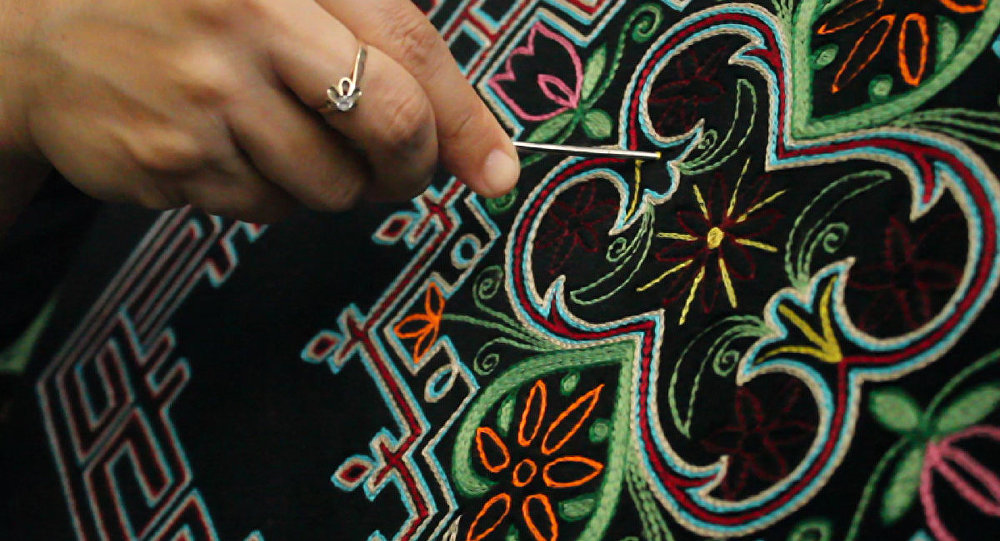
Azerbaijan created a rich and specific culture through the history of the Azerbaijani people. The decorative art was one of the most developed spheres of the culture in Azerbaijan. This art established in ancient times. It embraces different kinds of art including tattooing and jewellery, metal works, ornaments on wood, stones and bones, carpentry, weaving and ornamental knitting and weaving, knitting and other thread-works. All the types of the of this art reflecting the talent and moral world of the Azerbaijani people are widely used in the usual life of people.
The technique and composition of the thread-work of Azerbaijan date back to the remote past and proves the inheritance of the people. It is possible to define the time of the spread of different types of embroidery on the basis of different archaeological materials. The analogues of embroidery ornaments that are the right lines and polylines, zigzags, dotty ornaments, circles, triangles, rhombuses date back to the bronze era (3rd millennium B.C.).
A number of merchants, travellers and diplomats who visited these places in different periods of time provided interesting information about the development of Azeri art. Italian traveller Marko Polo stressed the beauty of the silk wares of Shemakha and Barda in the 13th century. English traveller -merchant Antoni Djenkinson wrote depicting the magnificence of the summer residence (the 16th century): „the king was sitting in the rich tent worked with silk and golden thread; his clothes were all in pearls and precious stones“.
Darai and velvet were the most important local materials for the embroidery in the 19th-20th centuries. They were produced in Shemakha, Basgal, Sheki, Ganja, Shusha and other regions of Azerbaijan. The local silk and woollen threads and other patters were used in the embroidery. The plant dye-stuffs were used in dying.
The embroidery wares were distinguished for the richness and diversity of the ornamental motives. The plant motives as the image of roses, daffodils, pinks, tulips, lily, the leaves of the pomegranates, quince and cherry-plum trees as well as ears and leaves of different forms were the widest themes in the embroidery of Azerbaijan.
The geometric ornaments of the embroideries comprised the right and polylines, zigzags, triangles, quadrangles, six and eight-pointed stars, rhombuses and images of the Sun and stars.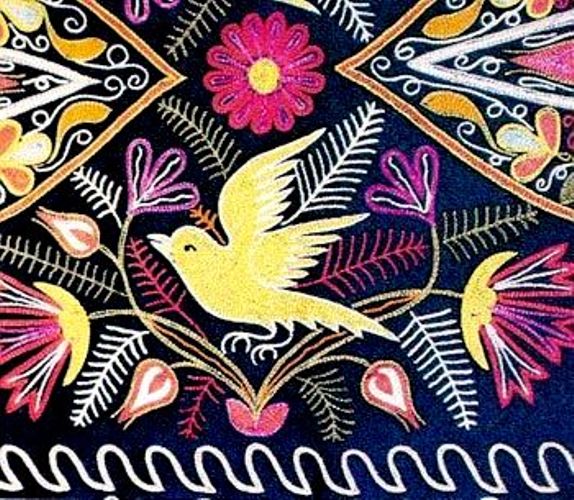
The people liked to embroider the nightingales, peacock, hoopoe, sparrow, pheasant, quail and others.
The widely spread image of two birds is the most favourite and ancient theme of decorative art. The birds are usually depicted either in love with each other or offended to each other. Both themes are reflected as love and parting. Among animals, the embroideries mainly contained the images of deer, tortoises, dragons and snakes, horses and others.
The most widely spread of the housing objects were the rails, containers for combs, boxes for cosmetics, jugs and others.
The most popular and widely spread types of embroidery were as follows: gold thread, plain embroidery, chain-stitch, embroidery with the technique „the birds-eye“, metal pearls embroidery, pearl embroidery, stamping, „buttoning“, flapping, spiral embroidery and work on the file.
The embroidery with golden and silver threads is the most ancient of all the types of embroidery. It mainly used thick cloths. Red, dark red, violet and green one colour velvet was considered the best material. Golden and silver threads produced at the factories were used in embroidery. This type of embroidery was called gold and silver thread.
The gold and silver thread was used in the decoration of the women’s clothes, headwear, housing objects, saddles and other small objects. It was also a tradition to include the embroidery wares in a bride’s dowry.
Chain-stitch was the most widely spread among the embroidery wares worked with colour threads.
Sheki was the centre of the chain-stitch in the 19th century.
Red, black and dark blue velvet and cloths of local or foreign production were mainly used for the chain-stitch. Not only women were engaged in this type of decorative art. A number of men also demonstrated their talent in this sphere. A master would first draw the contours of the picture on the cloth stretched by the loom and then filled its inner part. The needle used in chain-stitch was called qarmach.
The chain-stitch was used for decoration of the women’s clothes, pillow-cases, mutakka, carpets used in the bathrooms.
Plain embroidery was another widely used technique of needle-works.

This type of embroidery mainly used not bright, pastel colours mainly coloured silk and woollen threads in combination with golden ones. It had two types: two-sided and one-sided. Plain embroidery was used in the decoration of clothes, wall ornaments, curtains and others.
„The bird’s eye“ -ornaments worked with white or coloured silk threads was one of the most widely spread types of embroidery.
Buttoning is found in the night headwear (shabkulag), janamaz and woollen clothes. Its simple and water sewing are carried out through laying the thin woollen or cotton layer between the prime and face of the ware.
The embroidery wares worked with pearls excited great interest and they have been in the decoration of costume elements and housing objects.
The embroidery with sparkling ornaments, pearls is the sewing along the contours of the image formed by the colourful silk threads on the cloths. The spiral embroidery is a relatively new type of needle-works.
The less widely spread drawn-thread work established very late and is seldom practised. It is mainly used for decorating of handkerchiefs, veils and napkins.
To date, Azerbaijan preserves the school of the art of embroidery that dates back to ancient times. The wares of this sphere of the art of Azerbaijan are demonstrated at the international exhibitions and in museums.
The national costume of Azerbaijan is the result of the material and spiritual culture of the people, which has passed a long and very complex way of development. Clothing, firmly connected with the history of the people, is one of the valuable sources for studying its culture. Clothing is one of the most stable ethnic features, reflecting the national character of the people more than any other element of material culture. Playing an important role in identifying ethnogeny, cultural and historical relations, the mutual influence between nations, clothes are also influenced by economic and geographical conditions.
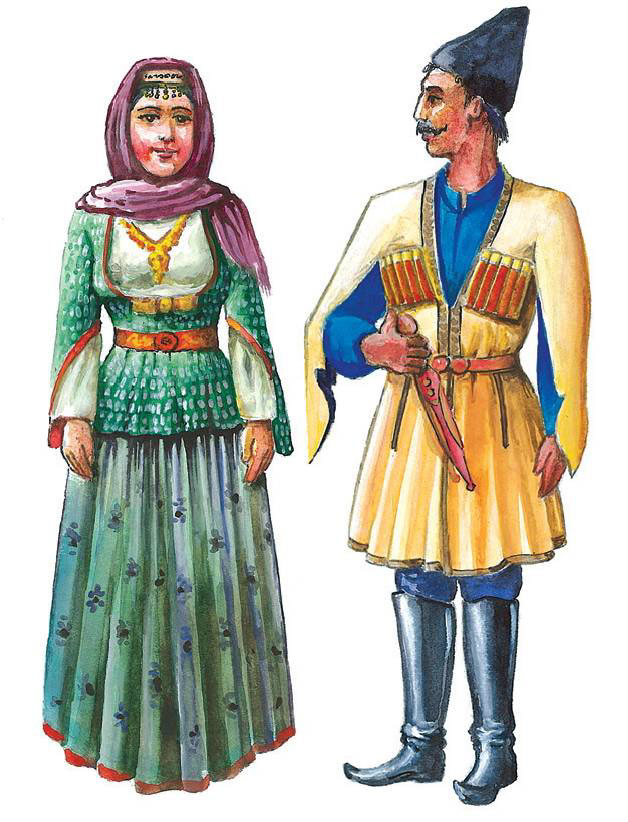
Historical, ethnographic, and artistic features of folk art are reflected in clothes. It may be apparent on clothing and accessories, as well as on embroidery and weaving art.
During archaeological excavations in Azerbaijan, bronze needles and awls dated to the Early Bronze Age (3rd millennium BC) were discovered. These findings prove that the ancient population of Azerbaijan could sew clothes for themselves. Small clay statues (2nd millennium BC) found in Kultepe and seals and fingerwares (5th century BC) discovered in Mingechevir give a certain idea of garments of that period. Remains of clothes made of silk fabrics were found in Mingechevir catacomb graves (5-6th centuries AD). Gold accessories and clay shoe shape dishes dated back to the 3-4th century also prove that the Azerbaijanis had high material culture since ancient times.
During restoration works in a mausoleum next to the Shirvanshah Palace (15th century) in Baku, remnants of valuable moire and silk fabrics were found.
Abundant raw materials in Azerbaijan created favorable conditions for manufacturing silk and woolen clothes here in the Middle Ages.
In the 17th century, Azerbaijan was an important sericulture region of the Near East, while Shirvan was the main sericulture province of Azerbaijan. Shamakhi Shabran, Arash, Gabala, Javad, Agdash, and other cities were Azerbaijan’s main textile centers. The famous traveler Adam Olearius wrote: „They (Shirvan people) are mostly engaged in yarn, silk and wool weaving, embroidery.“ Textiles manufactured in Shamakhi became well known since there was a constant demand for elegant headcovers and other weaving products.
Ganja, Sheki, Nakhchivan, Maragha, Marand, Arash, and Ordubad were important textile centers. An important silk textile center, Ganja should especially be mentioned. Evliya Chalabi (XII century) wrote that the Ganja silk was very popular. The production of the cotton fabric also played an important role in the existing handicrafts in Ganja.
The production of various types of fabrics was concentrated in Tabriz. The city was especially famous for the production of high-quality velvet, satin, fabric, and keji (thread made of cooked cocoon). Some of these fabrics were even exported to other countries.
Skillful weavers of Nakhchivan manufactured inexpensive, but beautiful cotton fabrics of high quality, which were widely demanded. There was a great demand for the colorful chintz (multicolored cotton fabric with a glazed finish) they made.
Thus, in the XVII century, some specialization appeared in the field of fabric production in Azerbaijani cities continued in subsequent centuries. Among the fabrics produced and widely used in Azerbaijan and exported to other places, such as zarbaft (fabric mixed with gold), khara (bright silk fabric with patterns), atlas, taffeta, ganovuz (an elegant silk fabric, mostly colorful), kamkha (a type of patterned silk fabric), kiseya (thin transparent fabric), velvet, darayi (dense fabric woven from thick silk thread), mahud (printed wool or semi-woolen fabric on the upper side), shawl, tirma (precious woolen shawl fabric woven from wool or silk in the East), mitgal (stiff thin cotton fabric), bez (thick cotton fabric), etc. it should be noted. Some of these fabrics were popular among the people under the names „Look at me, pilgrim“, „Day and night“, „Stand aside“, „Burnt inflame“ etc.
Undoubtedly, the fabric is one of the elements reflecting national culture. Patterns and colors of fabrics distinguished one nation from another, also different classes and groups within the same nation. In Azerbaijan, ganovuz, darayi, mov, zarbaft, khara (moire), satin, velvet, taffeta, fay (dense silk or wool fabric with transverse and fine stripes), tirma (fine hand-woven wool), and other fabrics were widely used among the population.
While women’s clothing was mainly made of silk and velvet, men’s clothing was mostly made of mahud and homemade shawl fabric.
Both men’s and women’s underwear were made of linen and cotton. However, in wealthy families, underwear was often made of silk.
The XVI and XVII centuries were rich in development for Azerbaijani clothes.
Researches show that a real school of national clothing was created at that time. A person’s age, occupation, and social status could be identified by his or her costume. Among the Azerbaijani costumes of the XVI century, the most interesting were the headdresses.
It is known from history that in the XVI century Azerbaijanis were called „Gizilbashlar“(Redheads) in reference to their red headgear. They wore a thin and high red cap and wrapped it with yellow fabric around it. Royalty and high-ranking military personnel adorn the turban with twelve stones or decorate it with golden lines.
The headwear has worn by high-ranking nobles sometimes had a large and valuable jewel in the center and a relatively small amount of jewels around it. Here, the big jewel is a sign of the Prophet Muhammad or Ali, and the small jewels are a sign of the 12 imams. (twelve-gored cap, symbolizing the twelve Shiʿite imams)
The famous Uzbek scientist who studied the headdresses of the Safavid period Q.A.Pugachenkova and the German scientist H. The Hots proved that their headdresses changed their shape several times, starting from the beginning of the XVI century till the end of the century. According to them, from the beginning of the XVI century until 1535, this headwear continued, and from the second half of the XVI century, it began to decrease. This type of headwear, which was fashionable till the end of the XVI century, was especially widespread in Tabriz, Nakhchivan, and Shamakhi cities.
In the XVI century, along with sharp tip red turbans, there were also ordinary non-decorated turbans in Azerbaijan.
At that time, the most common turbans were white. The Shah, vizier, or high-ranking priests would put green ones.
In the XVI-XVII centuries in Azerbaijan, along with the chalma, there were hats similar to the original small hat.
In the XVI-XVII centuries, there were hats of different forms in Azerbaijan. Among them, hats sewn from sheepskin are relatively widespread. They wore it mainly in areas engaged in cattle breeding and sheep breeding.

In the XVI-XVII centuries, women’s headgear is also different in Azerbaijan. According to the materials, it can be said that at that time there were about seven types of women’s hats in Azerbaijan. These include beautiful, colorful patterned large headscarves, small narrowly patterned arakhchins (a small close-fitting cap without a brim, skullcap), hats made of fur or velvet tied under the chin.
One of the most common women’s headwear in the XVI-XVII centuries was arakhchin. There were two types of arakhchin for women and girls.
Headgears were worn by women at home, in the yard, and at guests‘ houses. When going outside they would usually wear a white charshab (veil). Traditionally, little girls and old women were allowed to not wear charshab outside.
The upper clothes of the XVI-XVII centuries were quite diverse and colorful in Azerbaijan. At that time, top clothes developed as a continuation of mostly ancient clothing traditions. However, their decoration was gradually enriched and sophisticated. The main changes evolved in details, patterns, and decorations.
In the XVI-XVII centuries, men belonging to a relatively wealthy class of Azerbaijan wore robes with patterned laps, shoulders, and collars. These robes had two types. The first type of robe was to be worn on the shoulder.
The second type of robe, on the other hand, was a narrow half-sleeve and relatively tight at the waist.
In the 16th and 17th centuries, the traditional outer garment, the aba, was also very popular in Azerbaijan. Unlike the abas of the previous period, they sat tightly on the body, and the arms were relatively narrow. In miniatures of this century, we see that the laps of such abas were pierced with a belt.
Men wore narrow-legged trousers, which gradually widened upwards. Pants were also sewn from the material of the upper shirt, but the color was often blue or dark yellow.
Men’s shoes of these centuries also had different shapes. The most common men’s shoes were non-heeled (sometimes low-heeled) long neck, light boots made of soft leather.
In the XVI-XVII centuries, women’s outerwear was different in Azerbaijan. However, this form of clothing reminds men’s clothes of that time.
Like men, women wore long-sleeved robes to decorate their shoulders. But women’s robes were simpler and less decorated with patterns.
One of the women’s clothing, which was worn massively in the XVI-XVII centuries, was trousers that were long to the ankle. Like men, women’s trousers were very narrow from the side of the foot and wide from the top.
Azerbaijani clothes were very colorful in the XVIII century. The formation of such independent khanates as Baku, Guba, Shamakhi, Karabakh, Nakhchivan, Ganja, Lankaran, Sheki, etc. had a significant impact on clothing. The different political and economic situations in khanates influenced changes (albeit superficially) in clothes. The changes were mostly found in textile and decorations, not in cut style and shape.
In the XVIII century in Azerbaijan, men wore a tight-fitting chukha with long sleeves. Chukha was sewn mainly from dense fabric. Depending on the person’s age, the color and height „chukha“ would be different.
In the XVIII century, aba was worn mainly by mullahs and respected elders.
In the XVIII century, men’s footwear was also very diverse. The most common shoes for men were small flat shoes made of leather. At that time, among the wealthy people, thin leather high-neck boots were worn, and some shoes were worn by peasants from the past until the beginning of the XX century.
In the XVIII century, women’s clothes were made more beautifully and elegantly. The traveler Marshall von Biberstein, who was in Azerbaijan in the late XVIII century, admired local women and their clothes.
In the XVIII century, women’s outerwear consisted of a shirt, chepken(outerwear worn over a shirt), arkhalig (a long tight-waist jacket), kurdu (woman´s sleeveless jacket, usually padded or fur-lined), kuleche (pleated skirt), labbada (lined jacket over the shoulder), eshmek (lined jacket over the shoulder usually made of velvet), and bahari (ornated, lined outerwear).
Depending on their age, the color of the upper shirts worn by women was also different. Girls and women wore yellow, red, green, and older women wore white or black upper shirts.
One of the most beautiful outerwear for women of this century was the chepken (a long shirt with split sleeves with a silk ribbon sewn around the edges). It had convex parts on the sides below, called „chapig“ (slit), which made the body look more beautiful and figured.
One of the most popular clothes among women was arkhalig. Arkhalig was lined as chepken and it had the long tight-waist jacket. The skirt of different widths was sewn with frill or pleat in the lower part of the waist. Some of the arkhaligs had wide and straight cuts, and there were slits on the sides.
In this century, the most beautiful women’s arkhaligs were sewed in Shusha, Sheki, Nakhchivan, and Shamakhi.
One of the richest women’s outerwear was kurdu in this century. The kurdu was bandaged and sleeveless. Because it was worn in the winter, fur was sewn on its neck, collar, and skirt.
Although women’s shoes looked like men’s shoes in the XVII century, they were more elegant and abundantly decorated. Shoes of noblewomen had outer embroidery and a silver piece with ornaments (examples of such women’s shoes can be found in a number of museums in our country).
In the XVIII century, women’s headwear was as diverse as in previous periods.
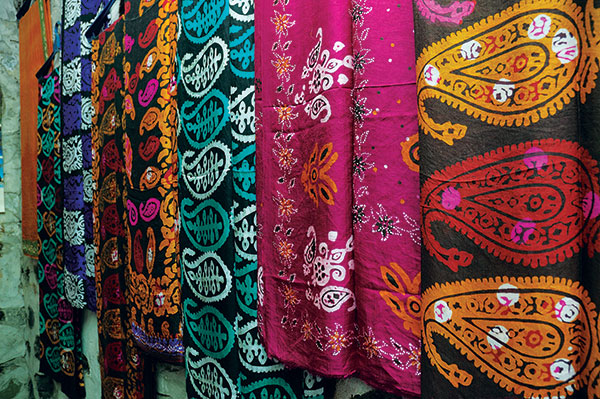
Women would use gauze and linen to gather hair together. It has also been thought to reduce perspiration (in Gashband-Nakhchivan). They were mostly made of gold, and gold coins with hooks were attached to the ends. The gauze was made of white cotton fabric, and the chargat was orange, purple, and sometimes fringed. Due to the development of sericulture, kelaghayi was mainly used, and this headdress was unique for Azerbaijanis. Embroidered with original buta patterns. The bright colors of kelaghayi were preferred. Kelaghayi can be tied in various ways. Kelaghayi was tied over a triangular headscarf after collecting hair with a piece of gauze. As a result, there would be three headdresses worn simultaneously: first, the juna (gauze), then the kelaghayi, and finally a triangular headscarf called kasaba, sarandaz, or zarbab. In cold weather, shawls (tirma shawl, kashmiri shawl, hand-woven shawl from natural wool) were put on over this clothing.
Archaeological and ethnographic studies show that the history of silk in Azerbaijan is closely connected with the emergence of the Great Silk Road.
In many works of Azerbaijani poets, silk is mentioned as a fabric worthy of kings, the most delicate feelings, the best human qualities, female beauty are likened to silk. And this is not accidental. Processed silk is distinguished by its exceptional properties due to its nature. Silk thread is very thin, but at the same time very durable, light, like air, but woven fabrics from it can be thick, heavy, and stiff. It’s unbelievable, but silk is warm in the cold, cool in the heat, does not rot, is long-lasting and durable.
The transition from color to color of silk fabric pleases the eye with its slightly matte sheen, brings comfort to a person, and its rustling awakens feelings and gives wings to dreams.
The use of silk in clothes and the interior is a sign of exquisite taste and prosperity.
Kelaghayi occupies a special place among silk products in Azerbaijan.
This square-shaped silk headdress is decorated with stamp patterns and painted following the spirit of the events taking place in life. These conditions are important for the transformation of the headscarf into kelaghayi. Kelaghayi is a symbol with great ethical and aesthetic potential.
If we look at the way of life of any nation, we always come across traditional images of women and clothes, and, undoubtedly, one of the important elements of these clothes is the headscarves. Some women use a scarf to cover their heads, others throw it over their shoulders, and in some cases the scarf turns into a fabric and takes on a universal shape, covering the head, shoulders, and body.
There is a unique element in the traditional clothes of Azerbaijani women for more than three centuries — „Kelaghayi“, whose name is impregnated with the ray of ancient times.

The unique and traditional women’s headdress „Kelaghayi“ appeared about 300 years ago. Scientists believe that this is the age of an embroidery machine preserved in the ancient village of Basgal in the Ismayilli region of Azerbaijan. The shapes and metal molds used to create hot colors and wax patterns have a 200-years old history.
The most common plots in the 19th and 20th centuries are peacock paintings, leaves, and flowers combined with intricate geometric patterns.
Kelaghayis of each region differ from each other by their ornaments: Large patterns are characteristic for Absheron and Sheki, small patterns are used in Shamakhi, and a combination of large and small patterns is used in Ganja, Gazakh, and Karabakh regions.
Every Azerbaijani knows kelaghayi from childhood. Our grandmothers for sure had a few silk scarves. The magic patterns on the delicate silk attracted the children’s attention and brought them closer to the national colors and rhythms.
Today, kelaghayi is given a new breath. Kelaghayi is so well adapted to the wardrobe of modern and fashionable women that all our fashion designers use it in their collections. Our women are very happy to receive and use this traditional headscarf with unique beauty. Kelaghayi adorns even the most ordinary dress and becomes its essence.
Azerbaijani national dresses are distinguished for their originality and uniqueness. In this sense, he managed to attract the attention of the world. In 2014, the traditional art and symbolism of kelaghayi were included in UNESCO`s Representative List of the Intangible Cultural Heritage of Humanity.
One of the most common headgears in this period was arakhchin. However, these arakhchins differed from arakhchins of XVI-XVII centuries in the absence of a braid bag on the back.
In the XVIII century and later in Azerbaijan, a headdress made of „tasakqabagi“ was widespread. These headpieces, which adorned most women’s foreheads, were made by jewelers, not by tailors.

This type of headgear was widespread mainly in Karabakh, Ganja, Gazakh, Tovuz, and Borchali regions.
Paintings by Russian artists Vereschagin and Gagarin, who in the XIX century traveled to Baku, Shamakhi, Sheki, Ganja, Kazakh, and other cities also expressed admiration by the Azerbaijani national costume.
The territory of Azerbaijan can be divided into several historical and ethnographic regions. These include Guba-Khachmaz, Absheron, Lankaran-Astara, Shamakhi, Karabakh, Nakhchivan-Ordubad, Gabala-Oguz, Sheki-Zagatala, Ganja, and Shamkir-Gazakh zones. The same clothes worn by the Azerbaijanis in the above-mentioned ethnographic regions prove that they historically belong to the same ethnic group. Slight differences in costume reflected only local patterns of the common national clothing.
The costume reflected local peculiarities of Azerbaijan’s various historical and ethnographic regions, clothes, indicating the age, marital and social status of its owner. The clothes of a young girl and a married woman were visibly different. Young women wore richer and more beautifully decorated garments. Clothes of girls and older women were less decorated.
Men’s clothing was the same in the historical and ethnographic zones, as women’s clothing. It was not hard to determine by his clothes what class he belonged to.
Children’s clothing in shape was identical to the clothing of the elderly, differing only in size and elements of adaptation to the age characteristic.
Unlike daily and working clothes, wedding and special occasion costumes usually were made of precious fabrics and decorated with golden and silver jewelry.
Azerbaijani women’s clothes consisting of upper and lower pieces dated XIX and early XX century could be divided into two groups.
The upper garments comprised upper shirt, chepken, arkhalig, labbada, kulaja, kurdu, eshmek, and bahari.
The sleeves of the women’s upper shirt were mostly long, wide, and straight. The part of the arm sewn to the shoulder was mostly straight and in some cases small-pleated. Khishdek (a patch of fabric in a different color) was usually placed under the armpit. The shirt was buttoned with one button on the neck. The upper shirt was usually sewn from ganovuz or fay. The neck, collar, cuffs, and hem of the shirt were covered with yellow bafta (braided narrow ribbon for decoration). The front of the shirt was embroidered with a gold or silver coin.
Chepken was worn over the top of the shirt. It had a lining and was sewn tight to the body. On the sides, it has bulging parts named „chapig“ (slit), which showed the body nicer and more attractive. There were so-called sleeves ending with so-called gloves. These sleeves were dangling loosely from the shoulder. Sometimes buttons were also sewn into this so-called sleeve. The chepken was made of tirma, velvet, and various gilded fabrics. Sarima, bafta, koba, zencire, shahpesend was sewn into the collar of chepken, to the edge of a slit, to the edges of hem, and the edges of the sleeves.
Arkhalig was the most popular costume among women in Azerbaijan. There were many types of it.
Like chepken, arkhalig also had a lining and was tight to the body. Skirts of different widths were sewn with ruffles or pleats at the bottom of the waist. Some arkhaligs were wide and straight and the side part had slits. The shape of the sleeves of the arkhalig was also different. Some were straight and long, and it was sewn in the form of a so-called arm that ended with a glove below the elbow. The third form of the arkhalig was lelufar-sleeved. The lelufar sleeve was straight to the elbow and a lily-shaped slit below the elbow. Along the hem of the sleeve, there are two finger-width pleats made of arkhalig’s fabric. The collar of the arkhalig was open. In most cases, the arkhalig were buttoned from the breast to the waist. Some of them were unbuttoned at all. The arkhaligs were made of velvet, tirma, and various gilded khara fabrics and decorated with different bafta and sarima.

Lebbade was quilted and lined. The lebbade collar was open, and at the waist, it was tied with a braid. There were shortcuts on the sides just below the waist. Lebbade’s sleeves were short, usually down to the elbows. Lebbade was sewn from tirme fabrics, velor, and various shiny fabrics. The collar, sleeves, and hem were trimmed with delicate bafta.
Eshmek is quilted outerwear. Eshmek’s chest and armpits were cut open, and the sleeves were down to the elbows. For sewing eshmek, as a rule, they used tirme and velor. The inner part, collar, sleeves, and hem of the eshmek were trimmed with fur. In addition, baffles and chains were sewn to the sleeves, hem, and collar of the eshmek.
Kurdu is a quilted women’s garment with open collars, sleeveless. It has slits on the sides. The kurdu was sewn from tirme and velor fabric. A particularly widespread type of this clothing was the so-called Khorasan kurdu, which was made of dark yellow leather with patterns embroidered with silk thread of the same color.
The bahari was a lined, quilted woman´s garment for the upper body. It was closely fitted at the waist and fanned out below the waist. The elbow-length sleeves were cut straight and the collar was left open. It was mainly made of velvet. Various bafta, koba, and chains were sewn on the collar, skirt, and sleeves of the bahari.
Kulaja is a woman’s outer garment with a pleated skirt. The sleeves were straight and finished a little below the elbow while the collar was left open. The kulaja was mainly made from velvet and tirma. Different decorative techniques were used on the kulaja, including gulabatin (golden or silver embroidery), bafta (using braid or lace trims), zanjira (fine needlework), munchuglu tikma (beadwork), and pilakli doldurma (quilting).
The length of the tuman (layered skirt) worn by the Azerbaijani woman was up to the ankle, except the Nakhchivan-Ordubad zone. In the Nakhchivan-Ordubad zone, women wore relatively shorter tuman’s (skirt). Tuman was made of silk or wool with different patterns. In addition to the upper skirt, the skirts worn under it were called layers of tuman. Tumans could be goffered or pleated and had a waistband at the waist. On both sides of the waistband, which was woven from goat’s fur, there were tassels made of colored silk and gulabatin threads. Tumans were made of all kinds of fabrics, from chintz to tirma. Kobas, chains, and various baftas from different fabrics were sewn to the hems of tuman. In some cities, women also wore chakhchur. Chakhchur was made of various silk fabrics.
To make women’s outerwear even more beautiful, there were various baftas, sarima, garagoz, zenjire, and shahpesend made at home or in craft workshops. Buttons made of gold or silver were sewn along the collar of women’s clothes. Sometimes golden coins were added to the edge of the shirt. Gold threads, beads , and other kinds of embroidery were also very common. Gulabatin, munjug, pilak, and other embroidery were also widely used in women’s clothing.
Women usually wore a golden or gilded silver belt over arkhalig or chepken. Moreover, leather belts with silver coins and silver buckles were also widely used.
Kelaghayi, various kerchiefs, naz- naz, and gaz-gaz silk veils were the most popular women veils. Kelaghayi was manufactured in special shops of famous sericulture centers, such as Sheki, Ganja, and Shamakhi.
In some regions, women wore arakhchin under the headscarf. These arakhchins were often decorated with gold ornaments of various shapes.
.jpg)
Charshab was typical for women of some towns and suburban villages. When leaving the house, women put on charshab. It was made of colored satin, checked felt fabric, and various kinds of silk fabrics. Women covered in charshab sometimes wore also ruband.
The national dress of Azerbaijani men of the XIX century also consisted of upper and lower clothing.
Men’s outerwear consisted of an outer shirt, arkhalig, chukha, and trousers. It should be noted that such a set of widespread national clothes, with minor differences, was characteristic of the entire territory of Azerbaijan.
Men’s outerwear consisted of an upper shirt, the upper men’s shirt had two cuts: with a collar in the middle and on the sides. The shirt collar was fastened with a button or a loop. The men’s shirt was sewn mainly from atlas fabric and satin.
The Arkhalig was distinguished by its tight fit to the body. Its hem was ruffled, the sleeves were straight, gradually tapering at the elbow. The arkhalig were sewn with one or two pockets and fastened to the neck. Materials such as cashmere, atlas, satin, silk, velvet, etc. were used for sewing arkhaligs. Over the arkhalig, young men wore a belt, and old men wore gurshags.
Chukha is one of the men’s outerwear. There were two chukha types in Azerbaijan-vaznali chukha and charkazi chukha. Chukha had a straight sleeve detachable from the back and the sides, its hem was thickly gathered. The collar of both types of chukha was cut open.
The chukha sleeves were cut straight and long, and so-called „hezines“ were sewn to each chest for „luck“. These „hezines“ were worn with „luck“ decorated ornament with silver or gold.
Another type of chukha — „cherkezi“ differed from „vaznali“ in its cut. The lining of the overhead sleeves of the cherkezi chukha was sewn from silk fabric, buttons or loops were sewn along the entire section of the sleeves.
Men’s trousers had a relatively large top that tapered towards the side of the leg. A piece of fabric of a triangular shape was sewn between the legs of the trousers. Waistband is made of goat fur sewn around the waist of the trousers. At the ends of the waistband were tassels made of beautiful gold and silver gulabatin. Men’s trousers were sewn from homespun shawls or woolen fabrics of different varieties.
In some mountainous areas, winter outerwear for men was a sheepskin coat sewn from sheep’s skin with buttons on the collar. Some men wore Khorasan fur coats decorated with patterns embroidered with silk thread. In mountainous areas, shepherds wore yapinchi in winter.
In Azerbaijan, special attention was paid to men’s headdresses. It was considered indecent to go without a headdress. The most widespread types of men’s headwear were hats made of leather of various cuts: bukhara and cherkezi hats (sewn from black, gray, or brown skins), shele-hats. Arakhchins, sewn from „tirma“ fabrics and silk fabrics, in most cases decorated with gold embroidery, was very widespread. Elderly men and old people wore under their hats quilted „tasak“ made of white coarse calico, and at night quilted „shebkulakhs“.

One of the most widespread types of clothing in Azerbaijan is knitted woolen jorabs. Jorabs were knitted from silk and woolen threads. They differed both in their fine and beautiful pattern and the coloring of the threads. The patterns of the jorabs are the same as the patterns found in embroidery, „basma“ and fabrics. Jorabs were knitted long, up to the knees, and short – up to the ankles.
In Azerbaijan, shoes made of multi-colored leather – tumash – were widespread. The most common type of footwear worn by both women and men was considered to be shoes.
Women wore embroidered boots and long-neck boots. Men’s shoes, made from leather or untreated leather, were usually plain and without patterns. In the cities, men wore shoes or „naleyins“ sewn by shoemakers. And in rural areas, charyks sewn from untreated leather were more common. Bands for charyks were knitted from the woolen thread.
Various decorations complimented the clothing and enriched its national characteristics. Jewelers made jewelry from gold and silver. They also used precious stones: diamonds, emeralds, rubies, pearls, turquoise, agate, etc. Azerbaijan’s jewelry centers were Baku, Ganja, Shamakhi, Sheki, Nakhchivan, and Shusha. Local jewelers could make all kinds of jewelry people needed. Silver belts made by Kubachi jewelers in Dagestan for men and women were also popular in Azerbaijan.
Azerbaijani women were very fond of jewelry and used them widely and skillfully.
The complete set of jewelry worn by women was called „imaret“, which included various head and breast ornaments, rings, earrings, belts, bracelets, and bazubends.
Azerbaijan folk art has very ancient and rich traditions.

The work of arts made of metal mined in Nakhichevan, Mingechevir, Gedebey, Gazakh, Ganja and other regions are 5000 years old. Kitchen utensils, weapons and samples of accessories found in these areas should not only be treated as a historical fact but also as an important source which gives important information about mastership of the craftsman.
Copper, after its discovery in Azerbaijan in the period of eneolit plays an important role in the economic, agricultural, social and cultural life of the people of. After the discovery of lead, tin, manganese in Azerbaijan we experience the new and progressive age-the beginning of bronze age.
Material-cultural finds revealed during archaeological digs in Azerbaijan inform that our in the II millennium b. c. our predecessors widely used in their everyday life plates, delicate in form, daggers, axes, belts and other accessories made of bronze.
In spite of accurate elaboration and original forms bronze handicrafts made at this period were made without design. Among those monuments of the original form and accurate elaboration, we may name the figure of double-headed bronze deer found in village Dolanlar of Karabakh. In the past metal was generally used for the creation of artworks of religious character and it is possible that the deer was a totem the people of the whole territory worshipped.
Among bronze works of art of the ancient period, belt carries a particular importance for its high artistic value and mastering. The bronze belts revealed at the territories of Karabakh, Gazakh, Gedebey and other regions are striking with zoomorphic descriptions and designs on them.
Among works of art made of metal, one may found the patters with designs and descriptions on them, according which we may be informed of traditions, beliefs and clothes of that time population. Sealed bronze rings of the VIII-VII century b. c. found in Mingachevir tracts a great deal of attention. Described on the seals a man fighting with a lion, a fighter with a shield and a spear and a man worshipping the fire forms an idea of that time clothes and traditions.
The interesting point is that Strabon (63-19 b.c.) in the information given about the population of Caucasus mentioned the same clothes, weapons and everyday life implements here described. Metal processing at those times reached its high level in South Azerbaijan.
This is proved by samples of jewellery found in South Azerbaijan during archaeological digs.
Rare samples of art found in Hasanli, Garatepe, Ziviye and other places, located 70 km far from the lake Urmiya, are not only important materials about the history and the culture of ancient Azerbaijan, but they may also serve as an ‚important document‘ which helped to solve the problems concerning the development of cultures of the Near and the Middle East.
Among works of art demonstrated in the museum of Archeology in Tehran gold basin, found from Hasanli hill draws particular attention. The descriptions on the basin are placed in two and three lines and cover the whole of it. The gold basin was found by an American archaeologist Robert Dayson, who resting on the descriptions refers the basin to the IX-VIII century b.c
Gold apron found in region Ziviya near the lake Urmiya, dated to the VIII-VII centuries b.c. proves the relation of the culture of Azerbaijan with neighbouring states. The apron is decorated with descriptions of a lion, a ram, a dog, a rabbit and a creature with a human head and lion body with wings.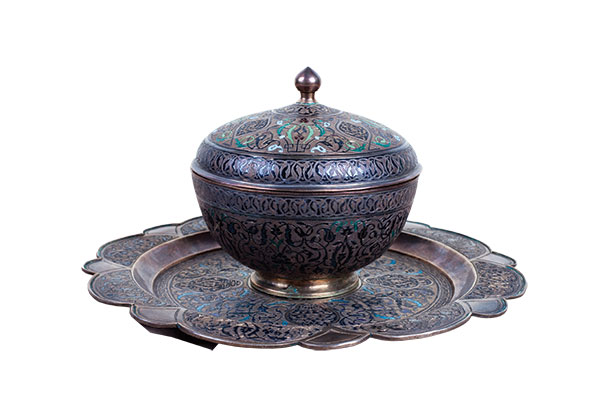
Among lively descriptions on the gold apron, special attention should be paid to the figure of lions with a human head. Or their general appearance, composition and style of elaboration they remind animals ‚Shedu‘ raised in front of the palace of II Sargon in ancient Assuria. We must point that the monuments were raised in VIII-VII centuries b. c. All this also prove the development of Azerbaijan culture.
The middle ages are the richest period in the history of Azerbaijan folk arts. Among everyday implements of this period kitchen utensils, found during archaeological digs in Mingachevir and kept in the Museum of Azerbaijan History in Baki are especially important. Among those utensils, silver plates are specially distinguished with their delicate designs and beautiful forms. Constantly repeated lines-relieves make the plate more interesting. As bas-relieves, they reflect the light and the shade and thus composes the whole thing. Delicate aftafa (a jug used for ablution)kept in the museum of Azerbaijan History was also decorated in this style.
Among traditional everyday implements, we man mention bronze tray (mejmei) found in Dagestan and in present-day kept at the Hermitage in Saint-Petersburg. The descriptions of lower, bows and their general composition on the tray made by forging are considered for its original style to be the pattern of the VI-VII century. Ornamental motives of plants are described on a great medallion in the centre of the tray
Not only everyday implements were made of metal by Azerbaijan masters, but tender pieces of jewellery as well.
Parts of gold and silver belts, rings, bracelets and other accessories found during archaeological digs in plain Mil, Gabala, Mingachevir, Nakhchivan and other places show that jeweller’s art in Azerbaijan was in a high level of its development even till the beginning of the middle ages. Those works of art decorated by most difficult techniques of jewel’s art: shebeke (tracery), basma (blotting), gelem ishi (pen-work)and others are characterized with the original form and delicate elaboration.
The interesting fact is that designs on the works of art of that period, for example, crescent, five-point star and other motives remained up to our days and are used by masters even today.
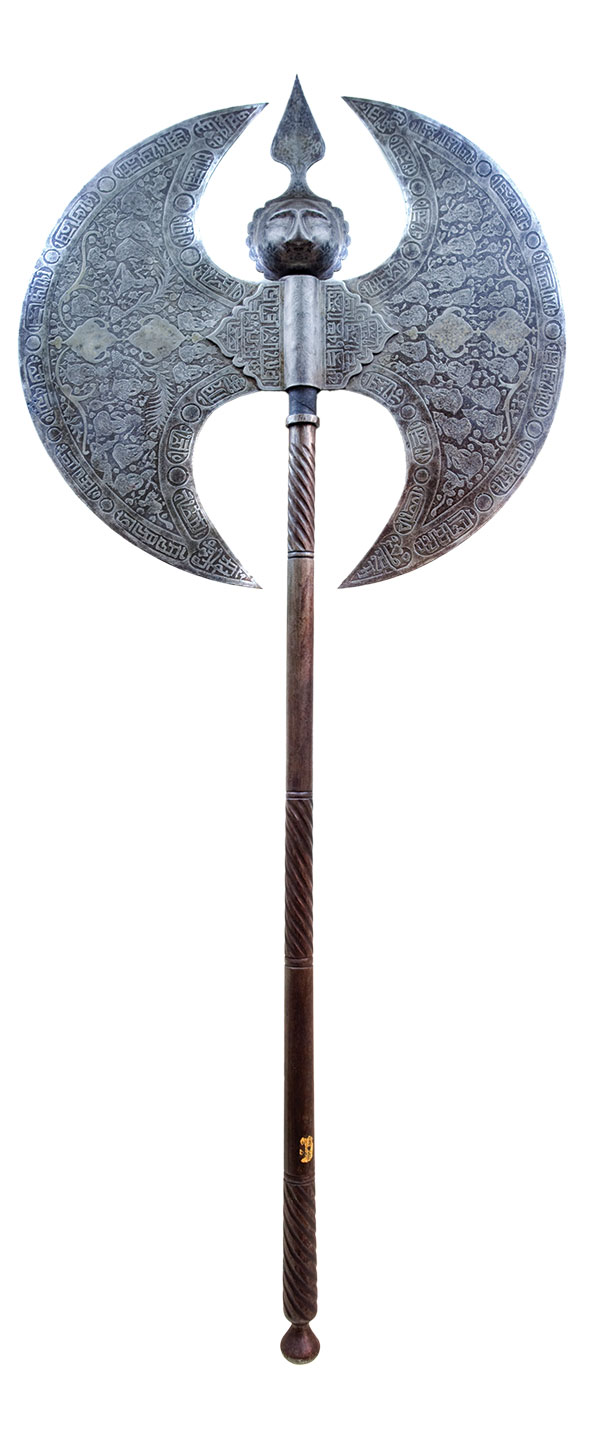
The XI-XV centuries are characterized by the process of the high development of the art of metal in Azerbaijan. Many weapons, house equipment of different shape and other samples of art were made during this period, most of them remained till our days. As in the past, Ganja, Shamakhi, Nakhchivan, Tabriz preserved their fame as the centres of metal products. Archaeological digs prove that in the XII century and later Baki also occupied a particular position in that sphere.
Among metal monuments made at that period the most attractive one is bronze Shirvan tube (lulak), the work of 1206 kept in the State Hermitage in Saint-Petersburg. It is difficult to understand at first sight that it is a water bowl. As it is composed of the monuments of small animals. The composition is created in the format stylization. The surface of the bronze tube is decorated with silver in the techniques of scratching and cyclization. Among the ornamental designs of Shirvan tube, one may notice historically-important scripts. One of the scripts reflects the name of the master of the tube -‚Ali Mahamed oghlu‘.
Metal equipment found together with the works of art of that period also draws particular attention. Those samples were revealed in the result of archaeological digs in of reservation of Shirvanshah palace in Icherisheher(the Inner Town). Bronze figurative lamp found among the same metallic samples.
The lamp is thoroughly covered with different descriptions in the technique of bas-relieve. Those are the real descriptions of a horse, two bulls, fourteen heads of cats and two human faces.
Bronze brazier of the XIII-XIV centuries found in the region of Guba may also be referred to monuments of Shirvan area. It has the form of half-sphere, the height is 30 cm, the length at its mouth is 131 cm, the diameter is 41 cm and original form and ornamental designs. The scripts on the brazier say that it was made by a copper-smith Ahmad Mahammad oghlu. The cities of Azerbaijan such as Beylagan, Ganja, Nakhchivan and Tabriz were main centres of the art of metal of that period.
It also proved by works of art revealed at those regions in the result of archaeological digs. Among works of art referred to these zones bronze monuments of a human and birds, found in Beylagan(Oran-gala) bronze can be made by Osman Salman oghlu Nakhchivaniin 1190 and kept in Luvr in Paris attract much interest.
As it is seen from named patterns the majority of metal implements used in everyday life were made of bronze.
Metal art was particularly developed in Tabriz in the XIV-XV centuries. Famous traveller of Venice Marko Polo, visited Azerbaijan in the second half of the XIII century spoke about the hugeness of Tabriz and the position, it occupied in development different spheres of the art.
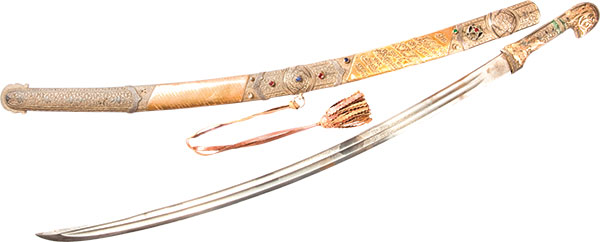
Today many prominent museums of the world exhibit a lot of original patterns of metal art made in Tabriz at this period of time. A figurative bowl made by Yusif ibn Ahmed Tabrizi in 1319, kept today in Victoria and Albert Museum of London and a bronze tiyan, kept in the State Hermitage of Saint- Petersburg should especially be mentioned.
Tiyan made by Abdul Aziz Sharafaddin oghlu in 1399 in Tabriz is the most interesting work of art among those reflecting national traditions of the mentioned period. With the weight of 2000 kg and a diameter of 2.45 sm this work of art is considered to be the greatest tiyan known in the East World. Tiyan draws attraction not only for its incomparable size but also for its artistic construction. On the front part, tiyan is decorated with beautiful designs of plants. Among the designs, there is a script about that the monument was made by Abdul Sharafaddin oghlu in 1399 in Tabriz on demand of Teymurleng for the mosque Khoja Ahmad Yasevi. One may also find the script ‚The ruler of the world is Allah‘ one after another 22 times repeated along with the whole kettle.
There is the specimen proving that Tabriz was not the only centre of metal art, as during and after that period this kind of art was also developed in other cities of Azerbaijan. Today Mr. Harari, keeps in America in his personal collection an original bronze istirlab, referred to the XV century. According to notes made on this tool, used in astronomy, it was made by the famous master of Shirvan Shukrullah Mukhis in 1468. Being a highly technical instrument, this istirlab amazes with designs on its surface.
In the XVI-XVII centuries preparation of metal house equipment, weapons and accessories were especially developing in Tabriz, Ardabil, Maraga, Nakhchivan, Ganja, Shamakhi and Baki. Weapons (daggers, swords, topuzes and shield) and armoured clothes(bashlyk(hood),elbow-rest, breeches) made by masters of Azerbaijan were very famous abroad at that period.
In Russian sources, we often come across the names of weapons made in Shamakhi. In one of such materials, we learn about 8 decorated hoods of Russian tsar Boris Godunov, made by the masters of Shamakhi.

The fame of Azerbaijan weapons at that time was not accidental. Local masters invaded many new ways in the preparation of the weapons.
The XV century replaces so well known straight and wide swords with a crook crescent-like swords with the handle made of gold, silver and valuable bones.
The appearance of shields and armoured clothes were richer and more magnificent than before.
A shield referred to the XV century kept in the house of weapons of Kremlin draws particular interest. With its amazing beauty, this shield protected a Russian tsar M.F.Romanov during the war. Then it passed to famous Russian warlord F.I.Mstislavski, and in 1622 after his death, was presented to the treasury of Russian tsars. Its diameter is 50,8 cm, was forged of the whole red steel and covered with gold by the technique of khatemkarlig.
We may stress two more samples made in Azerbaijan at that period. both of them are the hoods used by the nobles during wars. One of them is now kept in Moscow House of weapons, the second is kept in Istanbul. The second hood carries a script, noting that it was made for Shah Tahmasib in 1528.
The first armoured hood is first named in the list of weapons brought to Boris Godunov from Shamakhi. Later this helmet was kept as a figurative pattern by knyaz (prince) F.Mstislavski.
The abovementioned sample is so filled with decorations that it nearly looks like an arakhchin with gulabatin needlework, then a hood protecting the head from the stab of the sword, mace and so on.
One may notice the samples of calligraphy among decorations of the hood. They are placed in a wide range on the forehead of the hood. They are the words: ‚For the sake of powerful and merciful Allah‘.
The hood was made of smoothed steel and decorated by means of three techniques of metal processing: tracery (shebeke), khatemkarlig and pen work.
Jewels may be referred to as an inseparable part of samples of metal art of the XVI-XVII centuries. They were generally made of gold and silver and used as accessories for men and women.
The golden and silver accessories made of precious metal were of 4 kinds according to their usage: 1-accessories for neck, 2-those for arm and fingers, 3- for the head,4- and those attached on the clothes.
Two work should be mentioned among the jewellery made in this period and preserved up to our times. One of them is a silver decorated necklace in the form of almond and corns of pomegranate found among Safavi coins during archaeological digs in region Gedebek, the second one is the gold waistband of I Shah Ismayil referred to 1507.
Shah Ismail’s waistband is of particular interest. Today it is kept in the palace of Topgapi of Istanbul and considered one of the richest and most decorated among all the waistband for men. Ornamental designs of the plant on the waistband are alike those met on the carpets, cloths and other works of art of the period. The most beautiful part of the waistband is its belt. Being in the form of a circle, the belt has the real descriptions of a young noble on the horse going for hunting and a guide accompanying him.
According to general composition and separate motives descriptions on the belt remind of some subjects in the art of miniature of the time.
The most developed sphere of art developed in the XVIII in Azerbaijan was the coppering. Foreign travellers inform that special streets of coppering were in the cities of Tabriz, Ganja, Sheki, Shusha, Shamakhi, Baki where masters made decorated, original kitchen implements.
There were zones in Azerbaijan where the major part of the population was busy with that sphere of art. One of such places was Lahij, included in the khanate of Shamakhi at that time.
Everyday life and house implements (such as can, satil, aftafa, sernij, copper tray (mejmeyi), serpuz, etc.) were made in Lahij at the period. Products of Lahij was as well in quality and quantity as the products made in central cities of that time.
Among preserved up today metal products made in Lahij samovar of the XVIII century carries particular interest. Its has correct proportions, beautiful form and decorations on it. The decoration consisted of stylized descriptions of plant, zoomorphic and human. The majority of designs used in the decoration of the samovar are found on many samples of Azerbaijan folk art(i.e. on walls and stones, cloths, fancywork, etc.). The samovar was made of copper and decorated by the settler of the village Lahij, a copper-smith master Najafgulu in 1130 according to the calendar of hijri-gamary (in 1717 according to the calendar of Christianity).
Sheki also was among those popular for the production of metal house equipment and accessories in the XVIII century.
As to the sources, the masters of Sheki were famous for making cast decorated brazier.
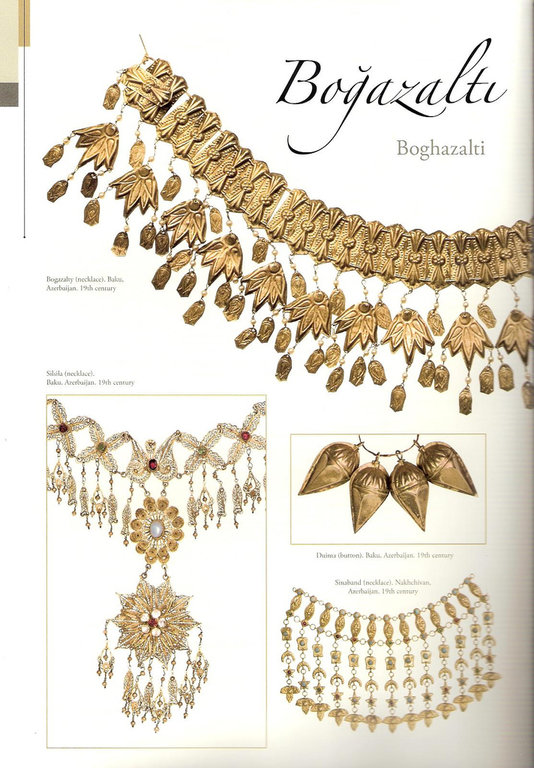
Those braziers were not big in size. Majority of them consisted of 6-8 cast bronze parts hooked to each other with. On those bronze pieces, you may fund the ornaments of plants, geometric figures, and figures of birds and animals worked by bas- relief.
The composition of ‚Islimi‘, a curved line with attached flowers and leaves was the popular one among plant designs, as well as the figures of nightingales and lions faced each-other.
Many of the patterns of the jewellery of the XVIII century had been preserved up today.
The most popular women accessories used by women were necklaces. Among them were sinebends, bogazaltis, chechiks, garabatdags and others.
Those accessories were made by attaching valuable beads, purls or pieces of gold and silver in the form of pakhlava(rhomb). In the majority of the cases or better look of those accessories, around the second part with the description of the net on it was attached to it to cover the chest. Sometimes this circle was replaced with a 6, 8 or 12 point star, worked in the technique of tracery, galam ishi or other, in the centre of which there were ruby or turquoise and a crescent under it.
Two same woman head-dresses, kept in the museum of country-studies in Zagatala are among the best patterns of jewellery made in this century.
At first sight, the abovementioned head-dresses look like a helmet.
The bashlig (hood) is composed of silver pieces of different form and size attached to each other by means of circles. In order to be far from monotonousness decorated with precious jewels, round plates are placed between the silver pieces. They are placed at the sides and at the top of the bashlig. The most beautiful part of bashlig is a tender figure of a crescent and star attached to the tube raising up off its top.
The waistbands made for women and men made at this period of time again prove that the patterns of jewellery were related to old traditions.
In the past waistband was an inseparable part of women and men clothes, which might give the information about the position, wealth, religious belief, nationality and age of its owner.
The waistband in the XVIII century was used both by men and women. The waistband for women was wide, while that for men was thin.
The waistbands of this period were made of figurative and decorative pieces of bronze, silver and gold. The most beautiful part of them were the belts. The belts generally were in the form of square metal decorated in the technique of shebeke (tracery), gelem ishi (pen-work)and sometimes decorated with precious jewels. Women attached 23 lines of gold and silver coins or the accessories in the form of buta or pakhlava (rhomb) to the lower edge of the waistband when men attached several decorated with different figurative metal pieces thongs hanged over the lap
One of the popular kinds of waistbands in Azerbaijan in the XVIII century was ‚cherkezi kemer (waistband)‘ for men. In some cases those waistbands had metal figures of pakhlava, circle and sometimes horses and rams facing each other and other samples decorated by the technique of garasavad and blotting.
House equipment, weapons, accessories made of metal in XVII century Azerbaijan were decorated by 6 techniques: forging, blotting, garasavad, shebeke (tracery), khatemkarlig (ring-making) and minachilig (glaze-covering).
Forging is one of the ancient techniques. It the easier than other techniques of the art. It demands sharp eyesight and great skill. The masters work with hammer and sharp-tip tools.

In the technique of blotting a piece of gold, silver and any other precious metal is placed on a high mould with decoration or design in the form of relief. Then the piece of precious metal is covered with a piece of lead of the same size and the masters begin to strike on it with a wooden hammer and the precious metal takes the necessary form. This kind of technique is generally used in making of the waistbands, buttons, bracelets and others.
Garasavad was mainly applied on silver, for in dark tone silver gets clear and white lines. On the surface of forged smooth silver masters drew come description by means of scratching and covered its sides with a black substance. Generally, the accessories(waistbands, daggers, pistols, gun powder-boxes and others )were decorated by this technique.
Shebeke is the description or a design made by a thin winding string. Two forms of shebeke are known: the first constitutes the thing with gold and silver strings, the second decorates the same thing.
Khatemkarlig has a great heritage in the jeweller’s art o Azerbaijan. To decorate dagger, swords and other samples of art the surface of the thing is slightly drilled by cheshni, appeared holes are filled with gold, silver and other non-ferrous metal nails. After the process is completed, the surface of the thing is smoothed and gets the form of a beautiful mosaic.
One of the most difficult and interesting branches of this technique is scraping a script or a picture on the thing with non-ferrous metals. The master should have great taste and skill to do it. Azerbaijan artists were very skilful in that sphere of art.
Minachilig was one of the ranches of the art which took Azerbaijan jeweller’s art to its highest level. Perdeli mina as one of the difficult and interest braches of minachilig, was widely spread in Tebriz, Nakhchivan and Baki.
The technique of this branch of art is to fill an engraved picture or a design with colourful liquid(glaze) named mina. Users of this technique by means of blotting copied the design (bird, animal, plant, etc.) described on the mould on to a piece of gold, silver and other metal and filled the spaces with mina.
The most frequently used colours in minachilig were rosy, green, blue, turquoise, black and red.
In comparison with minachies of the other countries, the works of minachies of Azerbaijan were the most popular ones, for they did not use mixed or muddy colours in their works. Each of the colours used by them to fill in the paces had their own peculiarities and were separated from each-other with a golden or another sting. Majority of colours in Azerbaijan minas and the harmony between them strikes everyone.
At the beginning of the XIX-XX centuries, 3 kinds of metal art were developing in Azerbaijan. They were the profession blacksmith, coppering and jeweller’s art. The blacksmiths made the agricultural tools and everyday equipment: a brazier, tripod, door handle, tongs and others.
The art of coppering having a great heritage in Azerbaijan was preserving its particular place during those ages. Depending on the peculiarity of everyday life and their economic engagement of people of Azerbaijan there was a great need in the country for a pot, a pan, a serpush (plate cover to keep the food hot), a sernish (milking), a tray, a satil (bucket), an aftafa, a seheng(a long jar with long neck to carry water), a can and other things made of copper
In comparison with other samples of metal art, jeweller’s art preserved the traditions of the past. Rings, earrings, bracelets, sinebends (collars), waistbands and others used by Azerbaijani women were again in fashion.
Minali earrings made by jeweller’s of Baki and Shamakhi, the accessories for neck and chest made by the masters of Ganja and Sheki in the technique of shebeke and decorated with jewels gold combs, glassy waistbands made by Shuha masters still amaze everyone.
By the way, Lahij was included in the UNESCO Intangible Cultural Heritage List in 2015.

Stone is considered to be one of the most ancient and natural gifts in human life. Stone helped people to get food and to make domestic implements. The first place of human settlement (caves, etc.) was made of stone. The first woman accessories, the first pen and the first writing-board were made of stone. Stone also played a great role in the development of the human ability of painting and as well as aesthetic taste.
Scientists noticed the first patterns of decoration and painting on stones and rocks.
The history of decorated stone monuments dates to ancient times.
The ancient samples of stone pictures made by engraving, hewing and scratching are reviled by our scientists in Ordubad (Gemi gayasi), Absheron (villages Mardekan, Shuvalan) and on Gobustan rocks, locating not far from the shore of the Caspian sea, 60 kilometres south from Baki.
Pictures on Gobustan rocks are more attractive for the rich theme, artistic peculiarity and the quantity.
Here Our scientists found more than 3000 pictures of men, animals, domestic implements, kin pictures drew by primitive stone and metallic tools. According to the investigations, the pictures on Gobustan rocks are different in their size, composition and the techniques of drawing, depending on the period they were executed. Archaeologists think that the oldest of these pictures were made at the end of the stone age, in the period of appearance of bronze tools and weapons. The pictures of the above mentioned period are large in volume, are more schematic and far from real proportions.
The major part of descriptions is that of reflecting hunting, and especially the descriptions of wild bull, deer and goat. And this is evident, for hunting occupied an important position in the life of primitive people lining in Azerbaijan territory.
Being the main source of living in the life of primitive people hunting was the main topic of described compositions.
Materials revealed during archaeological digs prove, that at the beginning of middle ages in Azerbaijan the stone was used not only for construction and as domestic implements, as it was before, but also as the smallest patterns of jewellery as well.
Though at these ages designs made on the stones were enriched in technical execution, one can hardly find any topical description among them.
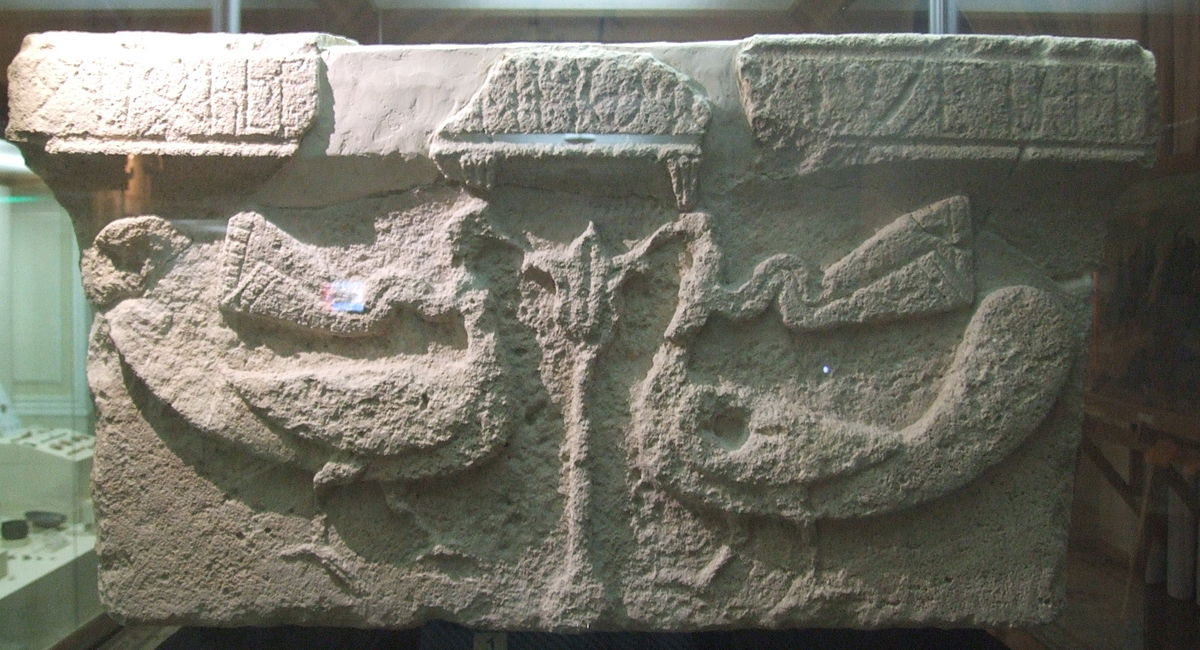
The main descriptions characterizing these ages were the descriptions of plants, geometrical figures, birds, animals. Among stone designs created at the beginning of the age one finds the designs of the plant depending local traditions, and in X-XI centuries and later, i.e. after acceptance of Islam traditions by the people we frequently notice geometrical designs.
While speaking of stone designs of the beginning of middle ages, we should mention a monument scientifically known as ‚alban capiteli‘, found among the remnants of a religious temple during archaeological digs in Mingachevir in 1948. Our archaeologists refer this monument to V-VI centuries. This monument carries particular importance for us, for in later periods we find the ornamental composition described on it in many kinds of our folk art.
This monument had been cut in the form of swelling with two figures of peacocks, symmetrically placed around a plant curving up on its side. Both peacocks have long gallons round their neck. The gallons seem to hang in the air. One should pay special attention to this fact, for according to scientists‘ opinion, at the beginning of middle ages those gallons carried some symbolic meaning and pointed to the sanctity of a bird or an animal carrying it.
It is very interesting that in old times peacock was considered to be holy and symbolized the goddess of fire and the sun. In VII-VIII centuries foreign travellers, being at the reception of Turkish Khakans living in Middle Asia, considered that bird to be holy and brought her many gifts.
The interesting conception concerning this fact belongs to a great Azerbaijan poet Nizami Ganjevi. In his epic ‚Iskendername‘ Nizami described Nushaba’s palace in Barda and several times mentioned about silk cloths with the description of peacocks and spoke that they considered being holy by Turkish people.
The plant curving up between the peacocks also deserves some attention from this aspect.
The investigations prove that in the old past people worshipped a plant as a synthesis of our elements symbolizing the universe, ‚water, fire, earth and air‘. Time passed and this tradition changed its form in accordance with ideological and aesthetic peculiarities of the ages. The symbols of ‚a holy tree‘ were an oak-tree, olive-tree, fig tree, cypress and sometimes a lower or a leaf.
For its holy character, the plant was always at the centre of compositions on patterns of decorative-applied art. The figures of birds, animals, human placed in symmetric position around the plant should traditionally be of two different genders (male, female).

Existing materials show that at the beginning of the middle ages, folk masters alongside with decorating and shaping figures on the stones by engraving and scratching, they made different sculptures of the stone.
Beginning with the XV century we do not see engravings of living beings in the graphic arrangement of the architectural monuments and they are replaced with ornaments of flowers.
The disappearance of decorations engraved on the stones was the result of the change of the artistic style, as well as the wide use of colourful glazed tiles in architectural monuments beginning with that century.
Thus, in later centuries, in the territories of Azerbaijan, the most original patterns of design engraved on the stone are frequently met on gravestones.
There are several kinds of gravestones in Azerbaijan. They may be straight, frowned, round at the top, in the form of turban vertical stones, horizontal sandugas, statues in the form of ram and others.
Abovementioned stones were decorated in a different form and the shape, depending on the position the berried one occupied in his life and society. The graves of statesmen had more rich and tender decorations.
Depending on the climate, the applied material and tradition of the place gravestones might be of different form and decoration in different territories of Azerbaijan. Today in the territories of Asheron, Shamakhi, Barda, Lachin, Lerik, Nakhchivan, Ganja and in the village of Hazra of Gabala one may see the most original and tenderly engraved gravestones of XVI-XVII century Azerbaijan. Those gravestones, one may see masterly made geometrical, plant ornaments, as well as the figures of a human, an animal, a bird, and even the topical compositions. They did not simply remain as designs, but they gave the information about the gender, life, the profession of berried man. For instance, the description of a sword, shield, a horse, a ram, and an eagle on the gravestones denoted the youth and courage, the description of beads and rail was on the gravestones of priests or honourable old men, the description of a needle, a thread, a mirror, etc. denoted that buried there was a women.
The list of UNESCO World Heritage sites from Azerbaijan includes 2 intangible cultural heritage – Shirvanshahs Palace and Maiden Tower where Icheri Sheher and Gobustan rock art are located.
Azerbaijani art is as ancient and rich as the history of our people. Rock images of Gobustan, artistic ceramic and metal products of caucasian Albania, artistic glass and engraving, examples of Tabriz miniature art, which gained world fame in the middle ages, colorful carpets, embroidery, glazed pottery, tiles, fine carving nets and fine jewelry — all this proves that our artistic heritage is very rich.
Our handicrafts, created thanks to the labor of our people and widely used in his life, have a great and rich history.
Studies have shown that tribes living in the territory of Azerbaijan 4 thousand years ago made original shaped plates of stone, clay, metal, weapons and sometimes samples and used them in their life.
These works of art have long attracted the attention of art researchers with their original form, exact processing and especially its decorations.
Looking at the rich museum collections of Victoria and Albert of London, Louvre of Paris, metropolitan museums of Washington, Vienna, Rome, Berlin, Istanbul, Tehran, Cairo, one can see art works created by skillful hands of Masters of Tabriz, Nakhchivan, Ganja, Gazakh, Guba, Baku, Sheki, Shamakhi and Karabakh.
The spread of these unique works of art to museums and private collections of countries in Europe, Asia and America has a great history. Many of them were taken from separate persons, some were brought by foreign traveler, merchant, diplomat and scientists who visited our country at different times, and some were robbed.
Examples of Azerbaijani art in Moscow museums. Scientific researches carried out for many years showed that today, as in many famous cities of the world, a large part of art samples created by the Azerbaijani people for centuries are protected in Moscow.
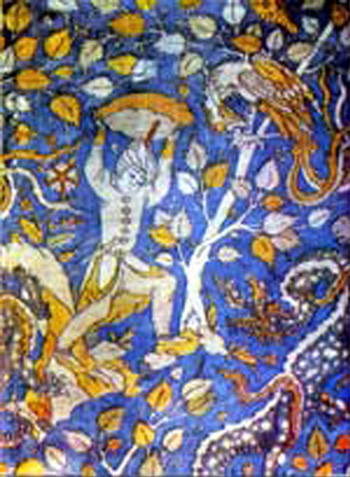
These are mainly in the Kremlin Armory chamber, the Museum of Eastern peoples, the State History Museum, The Museum of folk art, churches in Moscow and its suburbs (Savvo-Storojevsky, Sergiyevo churches, Cyrillic-Belozyersky monastery, etc.).) the sum.
The most artistic and original samples of Azerbaijani craftsmen in Moscow are currently in the arms Chamber of the Kremlin.
Along with samples of Turkish, Iranian, Indian, French, English, German folk art, many original works of art created in Azerbaijan at different times are displayed here.
A large part of the art samples of Azerbaijan in the arms chamber are jewelry and artistic metal products. Of these, the headdresses decorated with precious stones, shields, swords, daggers and ornaments should be especially noted.
An artistic shield of the XVI century among the samples of Azerbaijani jewelry displayed at the Kremlin weapon chamber particularly attracts the attention of the audience.
In connection with the shield, we should mention two interesting works related to this period made in Azerbaijan. One of them is an armored headdress used by nobles during the war, the other is a pair of laces.
There is also no exact information about when and by whom these rare works of art were brought to Moscow as an artistic shield.
Speaking about the decoration of metal items kept in the weapon chamber, sometimes it is necessary to talk about words and words written in Arabic alphabet, which are among paintings and patterns. There are also words that tell which master, for whom, on whose order and when he made it, sometimes words borrowed from the Quran or poems of classical Eastern poets.
Our fabrics stored in the weapon chamber can be divided into two groups according to their artistic characteristics: ornamental and plot fabrics.
Our pieces with a plot are more original and valuable. Because on our pieces of this type we see scenes with different themes, taken from the works of Oriental classics and Azerbaijani folk art.
One of our pieces of this type stored in the weapon chamber is of greater interest.
Examples of Azerbaijani art in the Museums of St.nPetersburg. Museums located in St. Petersburg occupy a prominent place among the museums guarding the art samples created by Azerbaijani Masters. Among such museums, the first place is the St. Petersburg State Hermitage, Kazansky Sobor, etc. places can be attributed.

Along with the material culture of Iranian, Turkish, Chinese, Japanese and Arab peoples, many unique art samples created by the Azerbaijani people for centuries are demonstrated in the Department of Oriental Art of the State Hermitage.
There are jewelry, pottery, stone, wood carved works and various types of weaving samples made by Azerbaijani Masters from ancient times to the beginning of our century.
The State Hermitage is primarily a cultural center among the museums of the world protecting the most ancient samples of Azerbaijani art. Here are elegantly shaped pots made of bronze, daggers, axes, belts, etc. jewel things make up an interesting page of our ancient era art.
Bronze bull head figure found during excavations in Daghlig Garabagh with its original form and exact operation among our monuments of the 2nd millennium BC displayed in the Hermitage attracts special attention.
Among the monuments of art belonging to the Bronze Age in the State Hermitage, jewelry art such as belts, bracelets, beads of various shapes and colors are also found.
The 3000-year history of jewelry art found during excavations carried out in Khojaly village of Garabagh in due time attracts attention with its original form and technical execution. It should be noted that some samples of gold jewelry related to the Bronze Age were found here at the State Hermitage.
We also have many examples of metal art dating back to the Middle Ages in the St. Petereburg State Hermitage.
These art samples can be divided into two large groups according to their form and content:
1. Monuments of the nature of plastic art.
2. Household items.
In the list of monuments of plastic art, first of all, the figures of birds, animals and people preserved here from bronze of the V-VIII centuries can be included.
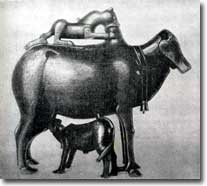
Outstanding St. Petersburg scientist engaged in the history and art of Caucasian Albania academician K.Trever describes these figures as the continuation of this type of pottery found in Mingachevir. One of these figures has attracted the attention of scientists for a long time. This figure belonging to VII century was found in Nakhchivan at the end of XIX century. This figure, which is 35.6 cm high, according to scientists, describes Javanshir (638-670), the ruler of Caucasian Albania.
Two lions and a mountain goat are depicted on the face of the quadrangular base of the figure. On the side there is the stage of the Hunter’s fight against lions, elephant, fox and plant ornament motifs.
Shirvan Lule dated to 1206 is considered one of the most interesting exhibits of the Hermitage among our plastic art samples made of metal.
Along with samples of plastic art made of metal, at the St. Petersburg State Hermitage, many original shapes, decorative household items are also displayed. First of all, bronze trays belonging to VI-VIII centuries should be included in the list of such works of art.
In the Hermitage are Three Compasses, dating back to the early Middle Ages. Two of them are decorated with plot images, and the third is purely ornamental.
Bronze boilers of various forms and ornaments dating back to XIII-XIV centuries can be mentioned among household items made of metal.
Our boilers displayed in the Hermitage belong to XIII-XIV centuries and attract attention with their volume, shape and decoration. One of these boilers is particularly interesting.
As it is known, one of the most advanced types of medieval art of Azerbaijan was ceramic art.
There are many wonderful examples of our folk art in the State Hermitage. Our samples of ceramic art stored here are divided into two large groups, both depending on their use and many artistic features.
The first of these are pottery products used in everyday life, the second is tiles used in architecture. Our pottery products used in everyday life represent several exemplary jugs, bowls and surahs found during excavations carried out in oder-Gala (Goranboy region) at the time.
The State Hermitage also exhibits Kashi samples, which are considered decoration of our architectural monuments of the past period. Among them, the main place is occupied by the tiles of Pirhuseyn khanagah on Pirsaatchay in Gazimammad region.
Pirhuseyn khanagah has about 500 different shapes and decorations in the State Hermitage.
Most of our textile art stored in the Hermitage is made up of pile carpets. Our carpets woven in famous Azerbaijani carpet centers from XVI to XIX century are kept here.
Exemplary Azerbaijani carpets woven in Tabriz and Shirvan are considered valuable pearls of the museum. Our carpets woven in Pirabadil villages of Guba, Maraza villages of Shamakhi attract more attention with their color and rich decorative elements. There is an inscription on the Shamakhi carpet stating that it was woven in 1881-1885.
Besides, well-known Azerbaijani artist, ornamentalist painter Mirza Gadim Irevan, who lived in the middle of XIX century in the State Hermitage also has a unique work known to science of art.
The „khamsa“of the Azerbaijani poet Nizami Ganjavi is also protected at the State Hermitage. This unique exhibit is valuable not only as one of the first writings of the five poems of the poet, but also as a wonderful work of art.
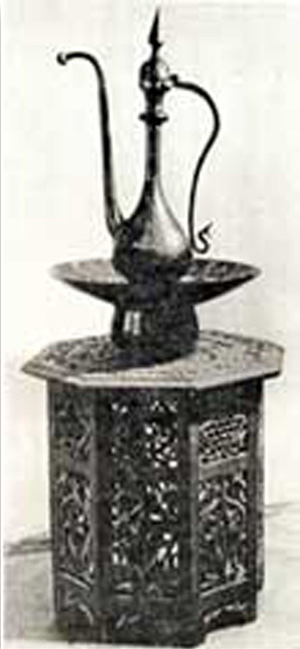
Examples of Azerbaijani art in Budapest museums. Art samples of Azerbaijan in Hungary were kept in private collections till 40s of XX century. Over the past 50-60 years, these unique art samples have gradually been taken under state protection and concentrated in museums. At present, most of the art samples belonging to Azerbaijan are kept in „Decorative Arts“ and „Oriental Art“ Museum located in Budapest city.
At present, more than 200 samples of folk art of Azerbaijan are preserved in these museums. Among them are carpet, cloth, embroidery, metal and wood, there are many works of art.
As in other foreign museums, most of the art samples of Azerbaijan, concentrated in Budapest museums, are carpets.
Azerbaijani carpets kept here consist of carpets woven at different times in famous art centers such as Baku, Guba, Shamakhi, Shusha, Gazakh and Tabriz.
A small Kazakh carpet woven in the XVIII century, exhibited at the Budapest „Decorative Arts“ Museum, attracts attention.
Along with ornamental carpets woven in famous art centers at various times, our carpets with several original compositions are demonstrated at the museums of Budapest.
One of the precious pearls of Budapest museums is the embroidery woven in Azerbaijan at different times. Our sewing here consists of different cover, pillowcase, table, saddle and artistic curtains.
The curtain, decorated by Tabriz masters in the XVI century, which is one of our examples of this type of art, is of particular interest.
Samples of Azerbaijani art stored in Budapest’s „Decorative Arts“ and „Oriental art“ museums do not end with our carpet and embroidery art alone. Monuments of art made of metal, wood and pottery displayed here also attract attention.
Most of the monuments of art made of metal are weapons (sword, dagger) and some household items (collection, sale, lamp). The art samples of XVIII-XIX centuries made from these different types of metals (silver, copper, steel) remind the works of Shirvan Masters for their artistic and technological features. We have only one example of wood art in Budapest museums. He is also artistic creature exhibited at the Museum of“ Decorative Arts“.
Examples of Azerbaijani art in the United States of America. Handicrafts of Azerbaijani masters are more common especially in the United States of America.

At present, there are rare works of hundreds of Masters in museums, art galleries and private collections in Washington, New York, Chicago, Los Angeles, Philadelphia, Houston, San Francisco, Cleveland, Detroit, Boston and other cities of the USA.
Most of our works of art kept here are samples of carpets, fabrics, artistic metal and pottery.
It is the oldest metal products among our works of art, which are kept in the USA as a historical one.
Our oldest example of metal art is currently in the Metropolitan Area in New York City, USA, and the Asian Art Museum in San Francisco.
Among our works of art metal art kept in the Metopoliten Museum, the most interesting are jewelry items dated to VIII-centuries BC found in ziviya district around Lake Urmia.
Within these works of art, a bracelet made of gold has attracted the attention of many world art critics for its artistic feature and execution.
In the United States, we have especially many examples of metal art dating back to the Middle Ages. These include bronze tableware made in Nakhchivan dating back to XII-XIII centuries, kept in Pierpont Morgan’s private collection in New York, bronze tableware with the words „Oljayt Khudabanda“ written on Mr. Harari’s personal collection, 703 Hijri (1304), and oysters kept in that collection, bronze bowl of XII century with rich ornamental decoration stored in Cleveland Art Museum and other examples.
As in other foreign museums, antique goods stores and private collections, in the USA, Azerbaijani art is most often represented by our carpet art.
At present, we have thousands of samples of pile and pileless, ornamental and excellent types of carpet art woven in the main art centers of our country.
The most ancient Azerbaijani carpets in the United States are displayed in the Metropolitan Museum of New York.
Consider one of our carpets of this type.
The circle-shaped Velvet part kept at the Boston Museum of Fine Arts attracts more attention with its depictions on it.
Examples of Azerbaijani art in Great Britain. One of the places where rare art samples of our people are kept is Great Britain.

There are hundreds of works of art in museums, antique goods stores and private collections in London, Birmingham, Glasgow, Liverpool, Manchester.
The most original works of Azerbaijani Masters in terms of craftsmanship are collected at the Victoria and Albert Museum in London.
Examples of art related to Azerbaijan are displayed in the Middle East section of the museum. These are artistic fabrics, embroidery, carpets, jewelry, pottery and other works of art.
The oldest of our works of art, historically collected at the Victoria and Albert Museum, is the bronze glass dated 1319.
Azerbaijani carpets occupy the most prominent place among our folk art samples kept in Victoria and Albert Museum. They can be divided into two groups according to their artistic and technological features: the first group includes Tabriz carpets of the XVI century, the second group includes Guba-Shirvan, Ganja-Gazakh and Karabakh carpets woven in the XVI-XIX century.
The carpet woven in Karabakh in 1892 is displayed at the London Carpet Museum.
Among the Tabriz carpets displayed at the Victoria and Albert Museum, one should especially mention the carpet woven in Tabriz in 1539 for Ardabil mosque on the order of Shah Tahmasib and famous in the world of science as „Sheikh Safi“.
Azerbaijani carpets of the XVII-XIX centuries, stored in the Victoria and Albert Museum, were eventually woven in Guba, Baku, Shamakhi, Gazakh and Karabakh.
As in other museums of the world, the Victoria and Albert Museum has many samples of artistic fabrics of the XVI-XVII centuries. Most of our works of art stored here are narrative works. Among them, three works of art attract special attention.
Examples of Azerbaijani art in France. At present, the largest part of the samples of Azerbaijani crafts kept in France is our samples of weaving art. Hundreds of high-quality fabrics woven in Shamakhi, Sheki, Ganja, Nakhchivan and Tabriz cities of Azerbaijan are kept in many museums and private collections of France. A special place among them is occupied by our fragments of the plot belonging to the XVI-XVII centuries.
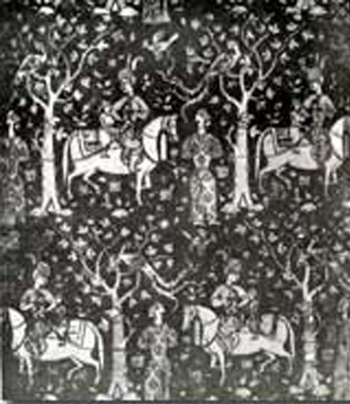
Among our pieces of the plot displayed at the Museum of Decorative Arts in Paris, one of them attracts special attention.
In the Museum of Decorative Arts of Paris we have one piece of original plot of 26 cm in length dating back to the XVI century.
Speaking about examples of French textile art, we should especially mention our carpets displayed in rich museum collections of this country. At present, the most valuable carpets of Azerbaijan both art and technology are in the Paris Museum of Decorative Arts and Louvre.
Let’s take a look at one of the carpets kept in the Paris Museum of Decorative Arts.
At present, this cultural center, which is considered one of the world’s richest museums, stores hundreds of pottery, tiles and artistic metal samples besides the weaving art we mentioned above.
In the Louvre museum we also have some rare samples of art metal made of silver, copper and bronze. Among them, a bowl with the original figure of 1190, made of bronze, attracts particular attention. This work of art is currently displayed on the first floor of the Louvre Museum, in the middle of the Hall of Oriental Art, on top of a high cut with a glass sleeve.
The originality of this bronze dish, which looks like a bird with a long beak, is not only in its shape, but also in its decoration. The decorations on the bowl consist of three different size belts and medallions placed in the spaces between them.
These ornaments engraved with the technique of forging and scratching were installed from stylized floral ornament elements and writing samples. In one of these writings the name of the master who created it — Osman Salman Oglu Nakhchivan was given.
Examples of Azerbaijani crafts in Switzerland. Examples of art in museums, private collections and antique goods stores in Bern, Geneva, Zurich, Basel, Lausanne can be considered a beautiful page in the history of Azerbaijani art.
Along with European and American material culture, many fine examples of Azerbaijani art are demonstrated in the historical museums of Bern.
The center of the museum’s exposition is a large mafrash stylized in combination of blue and red colors and woven with ornament motifs and a rug placed under it. Along with these samples of weaving art on a big label it was mentioned in German that he was woven in Azerbaijan in XVIII century. For its artistic and technological features, reminding the way of execution of Karabakh carpets, this Folk Art sample is considered one of the most beautiful exhibits of the Department of Oriental Art.
One of the interesting carpets kept in the Historical Museum of Bern is „Gollu Chichi“ carpet woven in Guba in 1830.
Dagger, sword, pistol and gunpowder containers made in XVIII-XIX centuries in Shamakhi, Goychay, Ganja, Sheki, Baku, Tabriz, Ardabil attract the attention of the audience. In number, the Historical Museum of Bern dominates the works related to the name of Shirvan Masters.
Among the artistic designs of our weapons displayed in the museum, we can see not only floral, geometric patterns, pictures taken from the animal world, but also small plot compositions.
By the way, it is necessary to talk about words and words written in Arabic alphabet, which are sometimes coincided with patterns of different shapes of these weapons. They are skillfully placed between the patterns and drawings of the item by the hand of a skilful craftsman, reminiscent of the beautiful decoration, forming an indissoluble part of the overall composition. In addition to decoration, these articles are also valuable historical sources. For example, on a beautiful silver gunpowder decorated with a tattoo, garasavad method we can see the words „Seyidzade from Shamakhi“ (inventory № 832), the places of nappies and barrels attached to the bed – „Amali Ali“ (inventory № 766) on a pistol covered with black literacy embroidered silver particles, „Amali Muhammad Ardabili“ (inventory № 1178) on a small dagger 38.2 CM and on a dagger with a curve, we read the name of both the master and the owner of the dagger.
The words „Baku“, „Guba“, „Amali Samad“, „Omar“ and other names are found on the weapons of Azerbaijan kept in the Historical Museum of Bern.
In addition, there are examples of copper home equipment widely used in the life of our people in XVIII-XIX centuries in the eastern section of the Historical Museum of Bern. Our copper utensils of this original shape are displayed in frames that remind us of the niche on a large stent attached to the wall of the museum.

Examples of Azerbaijani art in the Federal Republic of Germany. In the Federal Republic of Germany, Azerbaijani handicrafts are represented by one type of carpet art.
This disambiguation page lists articles associated with the title Bonn, Hamburg, Munich, Cologne, Dusseldorf, Frankfurt-Main, Manheim, etc. thousands of samples of carpet art are kept in museums, antique goods stores and private collections located in the cities.
Along with our carpets having ordinary mass character in this country, you can also find sample carpets which are considered very rare in our country woven in hundreds of different centuries.
In terms of originality Kazakh carpet of XVIII century demonstrated in antique goods store in Munich in 1960 also attracts attention.
With its constructive structure, these ornaments, widely spread in the Eastern world, reminiscent of swastika, the ends of which are separated in four different sides, are woven in such a realistic style that they rotate around one point and move. This ornament element is found not only in Kazakh carpets of this type, which received the name „stigmatized“, but also in other types of our decorative and Applied Art.
Examples of Azerbaijani crafts in Turkey. Among the Turkish cities, Azerbaijani examples of decorative, applied and fine arts are most concentrated in Istanbul.
The most ancient and beautiful samples of Azerbaijani art can be found in three large museums in Istanbul. These are the Topkapi Palace Museum, The Museum of Turkish and Islamic works and the people’s Museum. The most prominent place among our samples of crafts kept in Istanbul museums is various metals (gold, silver, steel, copper, etc.) arranged household items, jewelry samples and weapons.

The gold belt, which is kept in Istanbul’s Topkapi Palace Museum, among our samples of crafts made of metal, attracts particular attention.
The steel hood, dated 1528, kept in the Topkapi Palace Museum, is also considered to be one of the valuable monuments giving an idea of medieval Azerbaijani jewelry.
Bronze handicrafts made in Tabriz and Ardabil can be included in our list of metal art samples kept in Istanbul’s museums. Bronze alms were religious in the past, clinging to the hills of mosques, madrasa and minarets. Due to the fact that the trunk part of the Alamas was put on the top of the construction, the inside was empty, and the upper one was without ornaments.
The most beautiful part of alms is their upper rescue. It seemed that this part of the hands of a skilful jeweler was given both religious writings and symbolic figurines. At present, our hands are kept in Turkish museums mainly in two forms: horn and pear-shaped. We find on some of them the words of Allah, Muhammad, Ali, depicted in an artistic style, and in others symbolic images.
A number of rare samples of Azerbaijani textile art are kept in Turkish museums. Of these, pieces, artistic embroidery and carpets produced in Shamakhi, Ganja, Sheki, Shusha and Tabriz at the time should be especially noted.
At present, we have several high-level works representing our fabric and embroidery art in Turkish museums, which are mainly concentrated in Istanbul’s Topkapi Palace Museum. Within our fabric and embroidery art kept in this outstanding museum, two of them are particularly striking. One of them is a garment of water of the XVI century, and the other is a robe of gold.
Well-known in the world, Azerbaijani carpets are also considered the most beautiful pearls of Turkish museums.
Azerbaijani carpets are concentrated in four large museums in Turkey. These are in the Museum of Turkish and Islamic works in Istanbul, the Topkapi Palace Museum and The Carpet Museum, the Mevlana Museum in Konya.
The oldest Azerbaijani carpet kept in Turkey dates back to XIII century. According to the information given by Turkish art critics, this unique weaving art work of 254 length and 170 cm Width was one of the carpets of Ashraf oghlu jamesinin Nazir was given earlier in Beysahar. In 1932, he was taken to the Mevlana Museum in Konya.
We can also mention the complex painted vase exhibited in the Archaeological Museum in Izmir to the list of our original art samples kept in Turkey.
Samples of Azerbaijani crafts in Iranian museums. Currently, Iran’s museums, mosques and private collections hold thousands of unique examples of crafts created by the Azerbaijani people over the centuries. In this regard, the exhibits of the British, Gulistan, archaeological and carpet museums located in the capital Tehran attract special attention.
Artistic metal items found in Hasanli Hill among our art monuments displayed in Tehran’s Archaeological Museum attract particular attention.
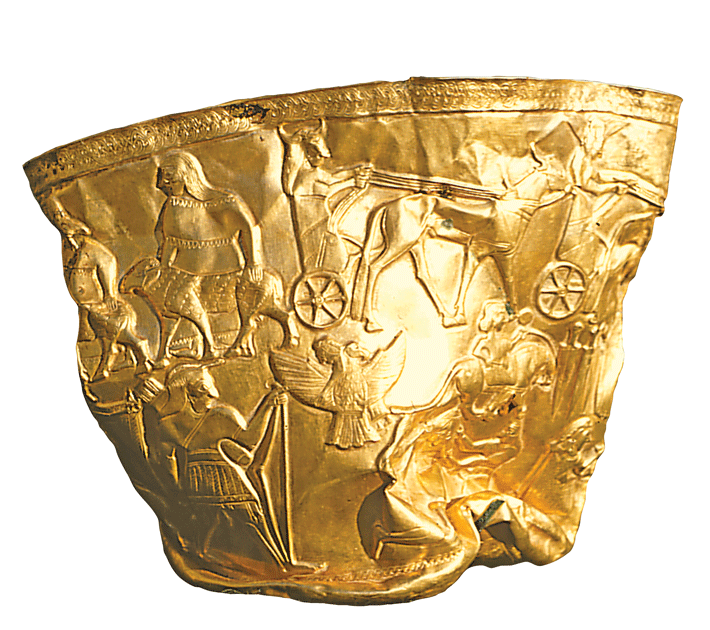
Iran Hasanli Hill is located in the Sulduz District of Azerbaijan. Having beautiful natural conditions, this place was one of the rich cultural centers in the Middle East a thousand years ago. Sources show that the manna tribe, which was part of the Great median state, once lived in this area. In 1956-1957, among the monuments of art found in Hasanli Hill, the golden glass, which is currently displayed in Tehran’s Archaeological Museum, attracted the attention of scientists from around the world.
There are also many scenes in the following row that attract attention. It depicts a hunter with a snake on his head, a naked woman standing on two Rams next to him, a man stretching his hands to the pahlav standing on the side to escape from the claw of a three-headed dragon. These scenes are located in the middle of the glass. In the relatively low parts of the glass is depicted an old man sitting in small sandals. A woman stands in front of him, stretching her little child to him. A man with his face towards the sandalwood stood on top of this scene holding an unknown pot in his hand. There are three other drawings in the picture above, the description of a hunter with a snake on his head.
The interaction of Azerbaijani culture with neighboring states during these periods is clearly evidenced by the golden chest found in the area of Lake Urmia, dating back to the VIII-VII centuries BC.
Carpets woven in Azerbaijan are also kept in Iranian museums. The carpet woven in Pirabadil village of Guba can be mentioned among them.
In the 90s of the XX century, as a result of the aggressive policy of Armenia, our cultural heritage was severely damaged, our national cultural monuments were brutally destroyed. Valuable items related to the history and culture of the Azerbaijani people, works of painting and culture, world-famous carpets, memorial items of prominent personalities of Azerbaijan and other valuable materials were plundered in our museums looted by Armenians.
Now, thanks to the care of our state, art samples of Azerbaijan are preserved and introduced in the world under the care of its owner and stand in the most honorable place. Since 2008, Azerbaijan’s material and cultural values have taken their place in the UNESCO Intangible Cultural Heritage list. This is a reliable guarantee to prevent the theft and embezzlement of our cultural monuments in the future. In this sense, the role and hard work of the Heydar Aliyev Foundation and its president Mehriban Aliyeva are undeniable.
AZERBAIJAN MUSEUMS
The creation of the first museums in Azerbaijan dates back to the 1920s. So, in 1920, the first museum „Motherland“ was created in Baku, and later, in 1938, the first memorial museum was founded in Sheki. Since the 30s of the last century, the first house-museums of various literature, art, history, music, theater, and famous cultural figures began to appear in Azerbaijan. The first exhibits of these museums were valuable works of art confiscated from Z.Tagiev, M.Nagiyev, M.Mukhtarov, and other famous millionaires and nobles.
The National History Museum of Azerbaijan is one of them. Even the building of the former mansion of the Baku millionaire Z.Tagiyev, which is considered a „museum within a museum“, is distinguished by its unusual exhibits, and is considered a magnificent historical and architectural monument of Azerbaijan.
Unusual natural buildings, caves and rocks, castles, ancient palaces, and monuments are considered open-air museum complexes. There are many such museums in Azerbaijan — the world-famous rocks of Gobustan, the palace of the Shirvanshahs, the palace of the Sheki Khan without nails, the tomb of Momina Khatun, and the city of Shusha.
Unfortunately, in the 90s of the last century, the material and cultural monuments of the Azerbaijani people were destroyed by the Armenian invaders. During the occupation, more than 760 cultural monuments, 22 museums with more than 40,000 exhibits, 4 art galleries were completely destroyed, natural resources were stolen, forests and plains were burned over a large area. There were 8 museums in Shusha, which were rightfully considered a city-museum, each of which was considered a material and spiritual value of Azerbaijan. Among the plundered and destroyed monuments — State Historical Museum of Karabakh, House-Museum of Uzeyir Hajibeyov, Memorial Museum of Bulbul, Memorial Museum of Music and Artist Mir Mokhsun Navvab, Shusha branch of Azerbaijan Museum of Carpet and Applied Arts, Memorial Museum of virtuoso tar player Gurban Pirimov in Aghdam and many others. After the great victory of our victorious Army, reconstruction work is underway on our liberated lands, former monuments and other historical buildings are being restored.
Today, there are 222 museums in Azerbaijan, 13 of which are applied arts, 7 literary, 16 historical, 71 local history, 60 Heydar Aliyev centers, 6 military history museums, a center of German culture in memory of the German settlement in Goygol, and 48 are museum houses.
Some large museum complexes are located in Baku. These are the H. Aliyev Center, the National Historical Museum, the National Museum of Literature, the Azerbaijan Carpet and Applied Arts Museum, the State Theater Museum, the State Museum of Musical Culture, and the Azerbaijan Independence Museum.
In Baku, there are also such museums as the Museum of Modern Art, Museum of Miniature Books, Maiden Tower, which is considered the hallmark of Baku, Castle Historical and Ethnographic Museum-Reserve, House-Museum of Nobel Brothers, Museum of Stone Book, Museum of Archeology and Ethnography, Museum of Malacology, War Booty Park and others.
HEYDAR ALIYEV CENTER

When many saw the architectural project of the Heydar Aliyev Center for the first time, they thought that it could be realized only as a result of a miracle. The construction of this unusual intricate structure was even considered theoretically unrealistic.
The construction of the center, which began in 2007, was commissioned on May 10, 2012, on the occasion of the 89th anniversary of national leader Heydar Aliyev. The building of the Heydar Aliyev Center, considered one of the pearls of world architecture, is considered one of the symbols of modern Baku. The author of the building project is the world-famous architect, winner of the Pritzker Architecture Prize Zaha Hadid. She is known as the architect of a number of building complexes around the world.
Straight lines were not used in the design of the center building.
The structure of the building — its undulating rise from the earth to the sky, and then filtering and reuniting with the earth — embodies not only the postmodern style of architecture but also its permanence and infinity.
Lines on the building also connect the past and the future.
The harmony and interaction of the interior and exterior design of the center building make this space closer to everyone. Because the Center seeks to unite everyone around its ideas, regardless of age, race, religion, or gender.
The building’s white color not only symbolizes a bright future but also aims to highlight the special elements here. Thanks to the white color, the rays of light move along the surface of the building and emphasize the selected parts of the project.
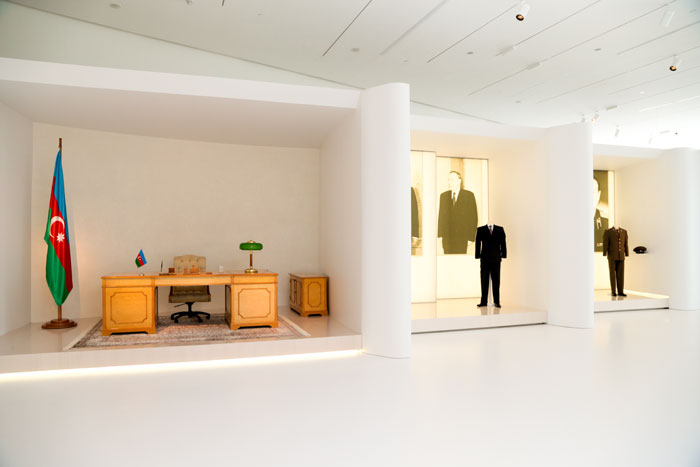
There is the Heydar Aliyev Museum inside the center.
The most attractive and interesting part of the Center, which is engaged in the study, popularization, and preservation of the heritage of Heydar Aliyev, is the Heydar Aliyev Museum.
Distinguished by its design and new technologies applied here, the museum is in harmony with the modern style of the Center.
Various aspects of the concept of activities implemented by Heydar Aliyev both in the Soviet period and in the years of independence are presented here in a virtual form. For those wishing to watch films about Heydar Aliyev, there is a special hall equipped with modern equipment. One of the interesting sections of the museum is the multimedia hall, which reflects the meetings of the national leader with the leaders of different countries.
In the „International Relations“ section of the museum, information is transmitted through a special globe. Thus, when the name of any country in the world is mentioned, the meetings held by Heydar Aliyev during his reign are reflected on the screen.
Also presented in the museum is a list of military and civilian clothes, tables, personal belongings, orders and medals awarded in different years, gifts received by world leaders.
NATIONAL HISTORICAL MUSEUM
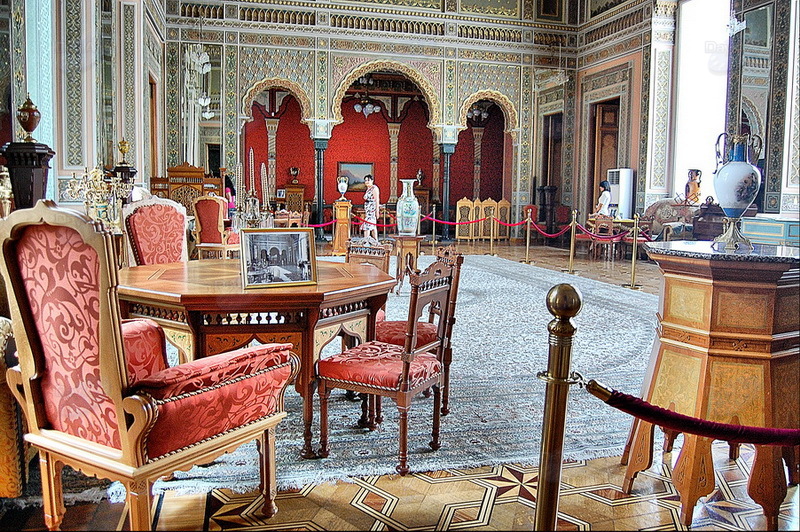
One of the largest museums in Azerbaijan, the State Historical Museum, founded in 1920, is located in one of the most beautiful places in the city, in the mansion of the famous oil magnate and philanthropist Haji Zeynalabdin Tagiyev, built-in 1895-96. The museum, which began work in May 1921, was called the State Museum of the Azerbaijan SSR until 1936 and played an irreplaceable role in the field of scientific research. On the basis of artistic and historical values in 1920-30, museums of nature, history, theater, literature, religion, and atheism, the Shirvanshahs Palace Museum-Reserve, a manuscript fund (later became the Institute of Manuscripts of the National Academy of Sciences of Azerbaijan) were created.
This museum is engaged in scientific research of all ancient material and cultural monuments on the territory of Azerbaijan. Thanks to the fruitful work of archaeologists in the 60-70s, the museum has become a leading center for archaeological research in the country. The museum has more than 300,000 samples of material and spiritual culture, which are stored in 6 sections. The fund of the department of archeology contains more than 93 thousand exhibits, covering the period of the history of Azerbaijan from the Paleolithic to the Middle Ages. Here are stored tools made of stone, work and household utensils made of copper, iron, earthenware, and porcelain dishes, samples of jewelry. The Numismatics Fund adorns more than 150 thousand coins and banknotes, which are of great importance in the study of the history and statehood of Azerbaijan in different periods. Gold, silver, and copper coins found in the territory of Azerbaijan are one proof of the history of our statehood and the existence of other states. Thanks to a large number of oriental coins in the numismatics fund, Azerbaijan at that time occupied one of the highest places in the USSR. In addition to money, the numismatics fund contains badges, seals, postage stamps, banknotes, which play an important role in the study of the history of our people.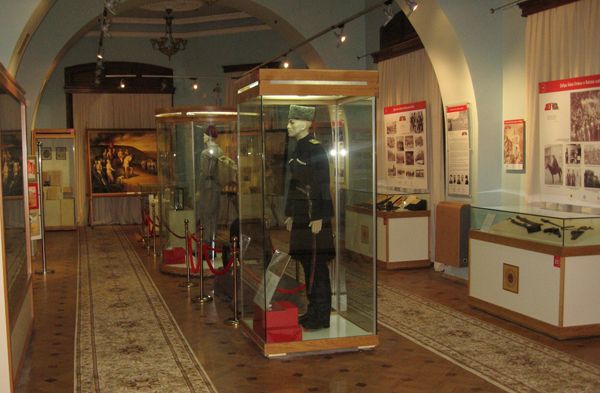
Since the founding of the museum, an ethnographic fund has been operating here, which includes 9000 exhibits related to the economic and everyday life of our people. Exquisitely decorated copper vessels, samples of men’s and women’s clothing, decorated with beautiful patterns from different regions of Azerbaijan, also have special historical and artistic significance. The museum has also managed to preserve its national value and high quality in the form of a variety of carpets and rugs — „chechim“, felt, woven bags, shopping bags, and many other works of art.
The exposition of the second floor shows the end of the 17th century, the beginning of the 19th century, the beginning of the Russian occupation of Azerbaijan — 1801-1813, And the end of 1826-1828, Northern Azerbaijan (1830-1870), XIX century, woodworking, carpet weaving and silk production, the development of trade, economics, science, education, and cultural life, as well as widespread beliefs, customs, the situation in the country during the First World War, the 1918 genocide, and the military-political situation in the country in modern times.
In 2007, a memorial room museum was created in the museum building, dedicated to the famous philanthropist and philanthropist Haji Zeynalabdin Tagiyev and his family. The museum consists of 9 restored halls: Haji Zeynalabdin Tagiyev’s room, an oriental-style living room, a library, a billiard room, a dining room, a boudoir, a bedroom, and a dressing room. Here you can see the original furniture and personal belongings of Tagiyev.
MUSEUM OF MINIATURE BOOKS
The Miniature Book Museum opened on April 2, 2002. The museum was created by Zarifa Salakhova on the basis of a unique collection collected over 20 years.
 The exposition of the museum is located in 35 showcases. The exhibition features 4,300 miniature books published in more than 60 countries around the world. The book fund of the museum has more than 6,000 miniatures. The founder of the museum, Zarifa Salakhova, collected them for over twenty years.
The exposition of the museum is located in 35 showcases. The exhibition features 4,300 miniature books published in more than 60 countries around the world. The book fund of the museum has more than 6,000 miniatures. The founder of the museum, Zarifa Salakhova, collected them for over twenty years.
Sections of the exposition, such as „Miniature Books Published in Azerbaijan“, „Rare Miniature Books“, „Religious Literature in Miniature Books“, „Pushkiniana“, including the poem „Eugene Onegin“, published in St. Petersburg in 1837 at life. A.S. Pushkin, are of great interest. Among them is the book “G.Aliyev. Contract of the Century ”, published in Baku in 1998, as well as“ History of England ”, published in London in 1815, and other rare copies. Museum visitors can get acquainted with miniature books published in Azerbaijan, Russia, USA, Japan, England, France, Italy, Germany, Czech Republic, Slovakia, Hungary, Cuba, Switzerland, and the former USSR. Published in 62 countries of the world, Very colorful books are presented to the attention of the audience. Most of the books are published in English. Their size ranges from 2 millimeters to 10 millimeters. The smallest book in the collection — 3 micro books published in Japan. The books are called „Birthstone“, „Signs of the Zodiac and Their Symbols“, „Language of Flowers“. These books were published in 1979. Their skin is made of sheepskin and measures 2×2 millimeters. Each book consists of 16 pages, which, in turn, contain 50-100 characters. They also have their own reading magnifier. Examples of exhibited books are 4 booklets 3.5 × 3.5 mm, published in Munich (Germany) in 1964, 19 booklets „Pushkiniana“ published in the USSR, as well as a collection of proverbs and parables. In 1985, the Moscow publishing house „Kniga“ published a five-volume book „The Miracle of Miracles“, consisting of 6×9 mm portraits and sayings of A.S. Pushkin and A.M. Gorky. This book has 24 pages of 9 lines on each page. At that time, only 200 copies of this book were published.
Rare religious books can also be found in the museum. These include seventeenth-century editions of the Qur’an, a four-volume Bible (1906), a Catholic prayer book, Torah, Buddhist stories, and more.
The total circulation of rare books is small. Sometimes the circulation of such books does not reach 100. Most of the books here are over 100 years old. The oldest book in the museum is the Koran, published in 1672 in Saudi Arabia. Also in the museum, there is a mini-book with the words of the songs of the famous group „The Beatles“ in only 5 copies.
On October 1, 2014, the museum was listed in the Guinness Book of Records as the world’s largest collection of miniature books.
The museum funds are constantly replenished with new publications, as well as donated editions.
Azerbaijani cuisine has been one of the ancient, rich and tasty cuisines in the world. The Azerbaijani cuisine is not only the basis for the meals and methods of their preparation but is also the material culture. The Azerbaijani cuisine comprises the culture of cuisine, its history, philosophy, meal psychology, customs, physiology, hygiene, chemistry, equipment, ethics, aesthetics, poetry and various other aspects, as well as practical skills created by the Azerbaijani people in the territories where they had historically lived in full harmony.
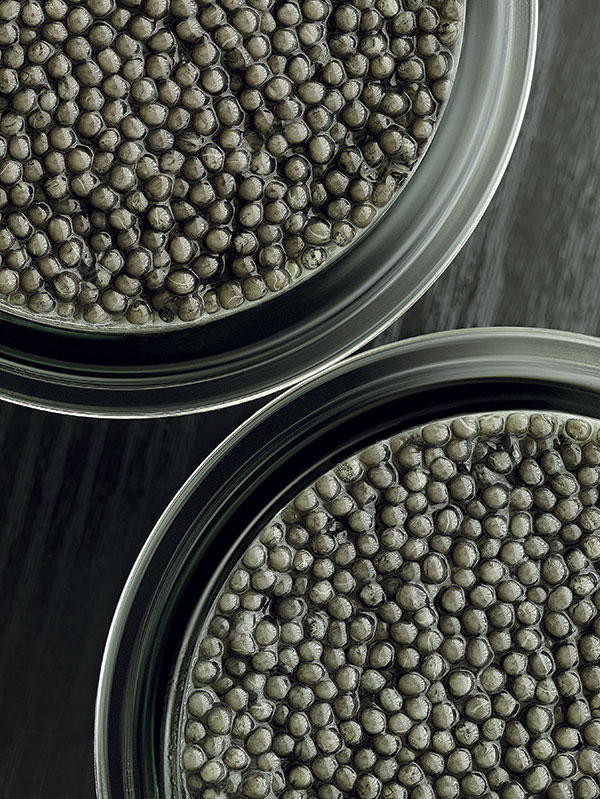
The Azerbaijani cuisine has been created by the genius of the Azerbaijani in today’s Republic of Azerbaijan, Southern (Iranian) Azerbaijan, Iravan Khanate, Zangazour, and Goyja provinces, where Azerbaijanis were forced out of their homes, in the territories of districts (Borchaly) where Azerbaijanis of Georgia have lived since the old times, in the territory of Dagestan, including Darband, which had been the centre for former Azerbaijani people, and surrounding territories.
Of course, the most important factor having an impact on the creation of the cuisine is the climate. It is sufficient, in this connection, to mention that 8 climate zones exist in the territory of Azerbaijan, and these conditions, in its turn, the diversity and richness of the flora and fauna of this region creates favourable conditions for the lives and development of all animals and plants. And they are the basis for the creation of rich cuisine.
In addition to using wild animals, birds, fishes, and plants in the creation of rich cuisine, the production of agricultural products is required in the later periods of development of the society. For this, a population has to have a high level of cropping and cattle-breeding culture. For example, complex meals made from dough and grain crops could only have appeared if the need for the production of agricultural products had been over the need for cooking bread and products that would replace bread. Only in cases when there had been the need for keeping grain for the sufficiently long term, there were opportunities to carry out experiments with complex meals and create them. As this had continued for centuries, gradually new meals appeared and remained in the memory of the people. Only the existence of “chatan” (archaic form of a colander) takes the history of preparing meals from grain crops back 5-6 thousand years B.C. and allows us to talk about stable crops and, accordingly, a high level of farming.
Production of a large number of grain products talks about the high level of farming culture, the existence of irrigation systems, and development of cattle-breeding etc.
All this could not have been possible without having a stable lifestyle.
It should be mentioned that in the Southern Caucasus raw products necessary for cuisine had mainly been produced by Azerbaijanis having a high level of farming and cattle-breeding culture. For example, Georgian scientist M.I.Tkeshelov wrote in 1888 about the Azerbaijanis living in the territory of Iravan khanate: „people in villages are engaged in grain-growing, farming and gardening. Of course, Azerbaijanis not only engage in cattle-breeding on plains, summer pastures in mountains, but they could also be named as farming people as they live at the banks of rivers. We can say that Azerbaijanis live everywhere at the banks of rivers, while Armenians are settled on uplands. E.K. Artamanov mentioned in 1889 when he wrote about Iran that “Grain is mainly supplied by Azerbaijan, Khorasan, Kirmanshah, Phars, Isfahan and Yazd”. G.V.Sologub wrote in 1852: “Armenians have mainly focused their activity on trade and collecting wealth. And Azerbaijanis, in turns, have focused their activity on farming and cattle breeding according to the places of residence and are the main producing element in Transcaucasus”.
I.V. Segalov mentioned in 1902 that “Muslim people mainly live at the banks of Bazarchay, Ayrichay, Bargushad, Okhuchay rivers and their branches, as well as of Araz River; and Armenians have scattered on uplands in places with sharp weather conditions. The majority of Armenian men (from 15 to 40) go each year to the coast of the Caspian Sea, Baku and Tbilisi for earnings. Here they are attracted by the job of servant and street life. As regards the Azerbaijanis, they live on plains and in good conditions for farming”.
This, of course, was in the progress of a natural process. Until other nations arrived, the local population had settled in productive lands and been using them. This is confirmed by an Armenian scientist G.A. Yezov (1908): “New homeland did not welcome Armenians, because they were very little lands for an independent state”.

Notes of travelers, scientists, traders, diplomats, and others, as well as archaeological excavations, prove that since ancient times people cultivated here large volumes of grain, rice, kunjut, soybeans, beetroot, melon, watermelon, grape, apple, pomegranate, quince and other similar farming, gardening, and melon/watermelon/gourd growing products. Not only local population had been provided with these products of plant-growing, as well as fresh and dried fish, caviar, honey, butter, and other cattle-breeding products, but these products had also been exported to neighboring, close, and far countries. This is an indisputable fact that for centuries-long the Caucasian markets were supplied with cattle-breeding and plant-growing products produced by Azerbaijanis. For example, Y.D.Angabadze and N.G.Volkova wrote referring to the sources in the book “Old Tbilisi”: Cheese was brought to Tbilisi markets by Ossetians and Azerbaijanis, and people from Borchaly (Azerbaijanis) too traded with cheese. There was a great demand in Tbilisi markets for salmon brought from Azerbaijan, “Goyja Lake” (After giving that area to Armenia it was renamed “Sevan Lake”.)
Thus, the Azerbaijanis had been the main nation to have the possibility to create and develop a rich cuisine in Transcaucasus and a strong raw product basis for the cuisine. Attachment of the source of the large majority of the meals in Armenian, Georgian, and Persian cuisines to Azerbaijani Turks, in terms of name, is just explained by this factor.
After the climate, the main factor having an influence on cuisine is the hearth. For example, in Slavic cuisine, especially in Russian cuisine, a number of sweet meals cookies, meals cooked in water or scalded meals have appeared with the possibilities of the Russian oven. The creation and development of Azerbaijani cuisine are largely associated with the existence of many types of open and closed hearths such as tendir, hearth, fire-place, kulfa (an oven built of bricks to bake bread), chala-ojag (pit-hearth), saj (iron disk for baking bread), brazier, etc.
Unique tableware and kitchen utensils have also had a certain influence on our cuisine. Even today our housewives have been using various tablewares made of animal skin, stone, wood, clay, glass, metal, etc.
In addition to gas and electricity, firewood, charcoal, manure briquette, etc. are used in Azerbaijani cuisine as fuel. The use of briquette is especially interesting. In places where briquette is used as fuel, cutting trees and shrubs for fuel is prevented. At places where briquette is used, there are no lung diseases and respiratory ducts. According to Indian doctors’ researches, the smoke generated as a result of burning briquette has antiseptic properties.
One of the indices of the level of a nation’s cuisine culture is how this nation treats water and its purification and its capability to use water. Since the old times, the Azerbaijani people have divided water into two parts, white and black. Water containing many salts, ions, metals is hard–black water. And water containing fewer salts, ions, metals are soft-white water.
Only soft white water is used in the preparation of drinks and meals. The weeping willow is planted at the banks of rivers, irrigation ditches, canals because roots, branches and other parts of a willow that have antiseptic properties make water healthier. For this purpose, branches of willow are cut and immersed in containers with water. Sometimes a silver item is thrown into the water. In the absence of them, the stone of apricot is thrown into the water in order to cause the settling of additional substances contained in water.
Maybe the first and best natural water purifier in history has been used by Azerbaijanis. This is a water stone used for the purification of water. Water stone is a pyramid-like black or white stone, which is craved to make a volume in the stone to contain water to be purified. It is placed, with the pick downwards, on special wooden supports and a container is put under it to collect the purified water. The stone is filled with water; in some cases, a silver item or branch of willow is thrown into the water. Water passing through the capillary of the stone is collected drop-by-drop in a container and during this process water is not only purified but also is cooled in a natural way due to the difference of pressures in the porosity of the stone and passing through the capillary.
It should be noted that the oldest (3700 years old) samovar was found in Azerbaijan (Sheki) and it is older than the Egyptian samovar being 2000 years old. And this was one of the main points of the culinary. Transfer of a hearth from outside the pot to its inside, change of water-air balance in water has caused the change of the volume of separation of food substances and, accordingly, the taste of the liquid.
The next important factor that has had an influence on the cuisine is the historical and geographical place of location of people and mutual relations with neighboring nations.
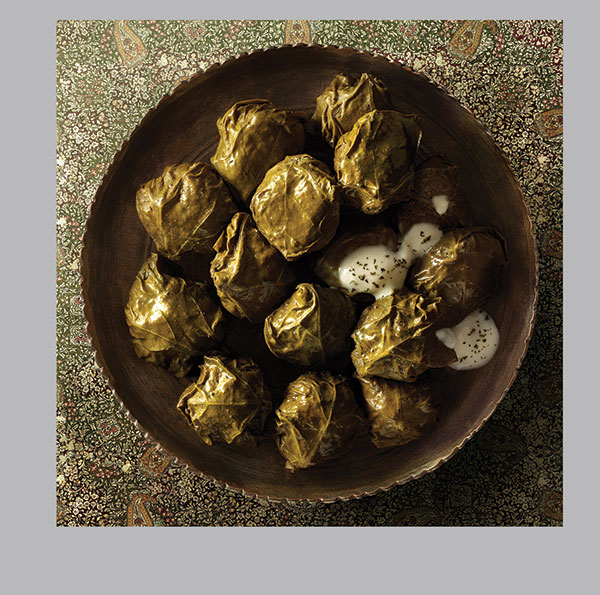
The fact that ancient trade caravans and military roads passed through Azerbaijan have had a certain impact on our cuisine. Although the relationship to all-Turkish ethnos has led to meals with the same root, the Azerbaijani cuisine may be considered as the crown of the all-Turkish cuisine. In terms of taste, Azerbaijani cuisine is much closer to Anatoly cuisine.
Long-term relations with Arabs gave us coffee, the historical “Silk Way” has brought tea from far China to these places. On the other hand, getting to know the Russian cuisine gave the Azerbaijani cuisine “shee” (cabbage soup) and “borsch” (it is famous among people as “borsh”), on the other hand, allowed us to get to know the European cuisine misinterpreted by Russia. A direct acquaintance had started at the end of XIX Century and at the beginning of XX Century due to the development of the oil industry (this process is being observed nowadays too), which has not only had an influence on restaurant cuisine but also taught people to use aluminum tablewares, and this intervention has not added anything positive, but harm to the health of people.
One of the factors that have had an impact on the Azerbaijani national cuisine was the religion and faith of the nation. (Zərdüştilik), fire warship and the Avesta philosophy have not only found their reflection in customs and mentality of the Azerbaijani people, but also in the cuisine. Respect for the first assistance of a cook — the hearth — comes, to our opinion, from here. Customs associated with meals formed under the influence of the faith in light and fire are living today. Christianity has for a long time existed in Azerbaijan and exists today, and this factor has left its footsteps in our cuisine. At the same time, the fact that the Azerbaijanis have been Muslims for more than a thousand-year and the influence of Islam on the cuisine is also indisputable facts. Refusal to use golden utensils, eat pork, forbidding drinking alcoholic drinks, etc. talks about the strong influence of Islamic traditions. Various holidays, ceremonies, and fasting have also had a strong impact on the cuisine.
Let us mention that the cuisine customs associated with religion, prohibition, recommendations are the subject of special researches. Here must be mentioned only one thing that the requirements of the religion, especially of Islam, regarding the meal and food products, have a serious scientific basis. For example, Islam recommends eating fruits and grain crops without removing their skin. However, it was only recently discovered that most parts of vitamins and microelements that do not dissolve in water are contained in the skin of the plants, etc.
Azerbaijani cuisine occupies a worthy place in the world in terms of taste and quality. Anyone who has tasted our dishes at least once admires them. In Azerbaijan, 2 of the 11 elements included in the UNESCO World Intangible Cultural Heritage List are associated with food: lavash (2016) and dolma (2017).
A lot has been written about the influence of the all-Turkish cuisine on Bulgarian, Yugoslavian, Russian, and other cuisines. It is interesting that Azerbaijani cuisine has also had a strong influence on Arabian and Persian cuisines. For example, Javad Heyat, a famous scientist, has mentioned in his book “Comparison of two languages” some 60 culinary terms among the other words transferred from the Azerbaijani language.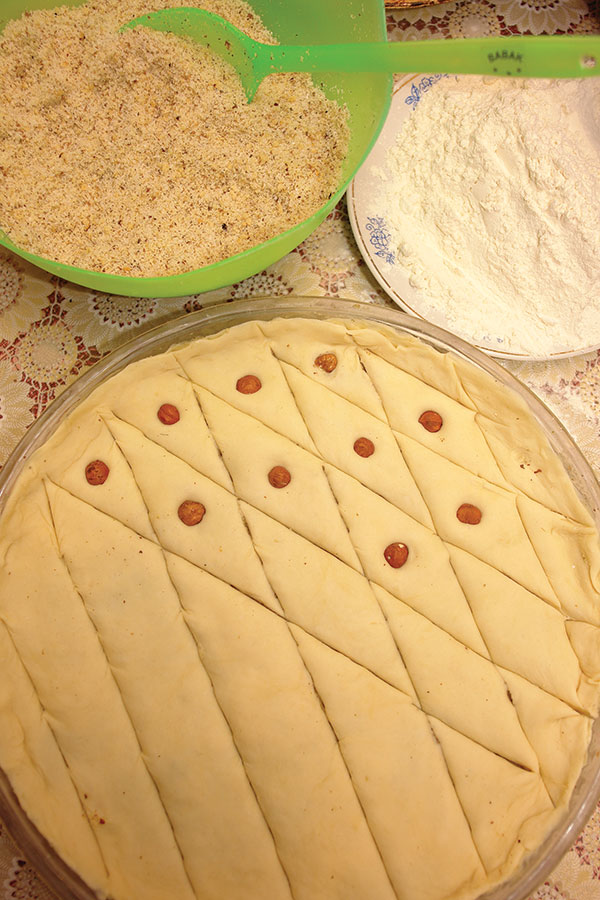
From the linguistics point of view, there is certain regularity in the generation of the names of dishes in the Azerbaijani language. The first regularity is that name of a dish conforms to the stages of its preparation, and forms and methods of impact.
For example, “gatlama”, “dolma”, “doghramaj”, ’’azma” shows the initial methods of technical impact; „gyzartma“, „portlama“, „govourma“, „bozartma“, „dondurma“ etc.. are the methods of heat impact; „dindili kufta“, „nazik yarpag khangaly“ (thin leaf khangal), „yukha“, „lyulya kebab“ etc. are geometrical forms of dishes; „Yarpag dolmasy“, „yarma khashil“, „duyu chinkuru“, „sabzi kyukyu“, „bal gaymag“ show the raw products used in preparing the foods; „gatyg“, „sulu khangal“, „hora“ are consistencies; „turshu“, „shoraba“, „shirin nazik“ are sensory features of the dishes; „saj ichi“, „tava kebab“, „kolfa chorek“ etc. show the names of hearths; „Ganja baklavasy“, „Tovuz khangali“, „Garabagh basdyrmasy“, „Sheki halvasy“ are the place where the meal has originated from.
It should be mentioned that mostly the name of a meal shows not one, but many of its types. For example, dolma has about 30 types; pilaf has about 200 types, etc.
The second regularity is that they are associated with the word “ash”. A number of words are generated from this word: ashpaz, ashchi ashkhana, khash (a meal from legs of animals — hot broth), khashyl (thick flour cereals), gashyq, and many others. We encounter the terms „ash“, „az» in a number of Turkish ancient written sources, including Orkhan-Yenisey and other written stone monuments.
The third regularity of generation of culinary terms relates to all Turkish languages. For example, similarity in the generation of the names of dishes such as, in Turkey “imambayildi” (mullah lost his consciousness from the taste of a meal), in Kazakhstan „beshbarmag“ (five fingers), in Azerbaijan „khangal“ (Khan, come), „tarkhan“ (young khan), „aghsag oghlag“ (lame kid), „tutmaj“ (do not let starve), „galaj“ (be hungry) may be shown as an example.
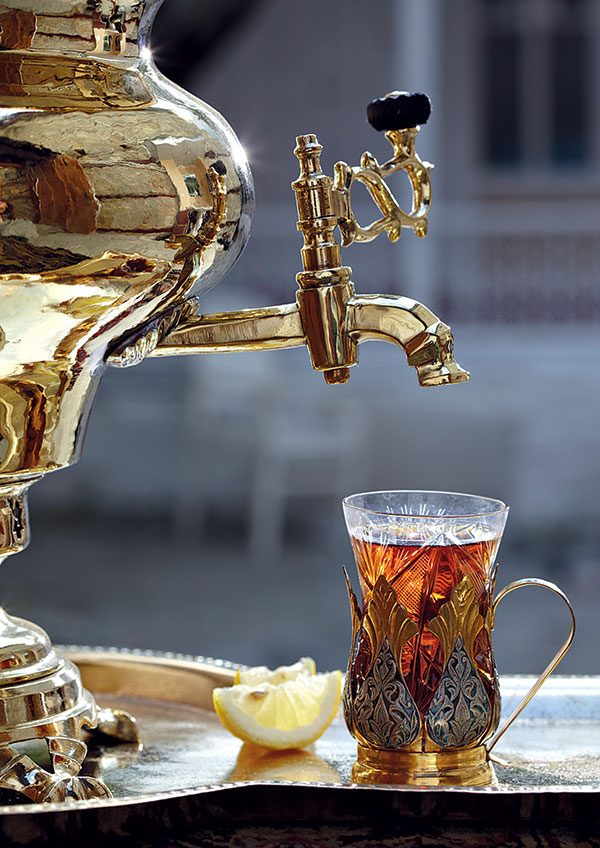
One of the sections of our cuisine rich in a diversity of types is drinks. Tinctures (“arag”) are made from mulberry and other plants and are used especially for medical treatment purposes. “Arag” in our language means “white drink” (ag – white, ar – drink, “ir” in the word “kefir” also means drink). On the other hand, the word “ar” originates from “arınmış” and means also pure and purified.
Various types of alcohol-free medical treatment tinctures, infusions, and other distillations are prepared from various plants by means of distillation. As an example, a tincture made from mint, “gyulabi” (rose water), “chal arag” made from mixed herbs may be shown. Since ancient times, “buza” (beer) has also been prepared in Azerbaijan. The Russian word “buzit” also originated from this word.
As in other Turkish cuisines, there are many drinks such as “ayran”, “atlama”, “bulama” made from milk and sour-milk products. Different types of sherbets are prepared from fruit juices, various types of herb infusions, and sugar. Sherbets are mainly served together with pilaf and are drunk at holidays and parties. Drinks such as „ovshala“, „gandab“, „dog-rose water“, „salab“ not only decorate our tables but also have treatment features.

Tea has its special place in Azerbaijani cuisine. It is impossible to imagine the table without tea. Coffee and cocoa are used less as compared with tea. In the morning’s hot milk and drinks prepared from milk are served.
Azerbaijani mineral waters such as “Istisu”, “Badamly” and “Sirab” etc. are famous. They are served to quench thirst; at the same time have treatment characteristics.
Drinks made from thick bakmaz cooked from mulberry juice, watermelon, sugar cane, beetroot, grape, wild dates quench thirst, at the same time are considered to be useful for health. A drink called “iskanjabi” is served together with “heavy” meals in order to quench thirst and facilitate the digestion of heavy and fatty meals; it is prepared from a mixture of honey and vinegar.
In some sources, it is called “vinegar honey”. Sometimes sugar is used instead of honey.
In our cuisine, “khoshab”s (stewed fruits-compotes) and “paloud”s (kissel) are related not too sweet meals, but to drinks. However, of course, the best drinks are the icy waters of Azerbaijani springs.
Our national cuisine is extremely rich. Some 2000 meals are known in the Azerbaijani cuisine. According to Anthony Jackinson, the English voyager, when he was a guest of Abdulla khan in Shamakhy, 150 types of meals had been served for his one lunch, and, after taking the tablecloth back at the end of the lunch, he was produced 140 types of meal. Such a rich cuisine had been historically created by housewives and specialists.

Such diversity was, at the same time, possible through the help of labour division between the specialists. Ottoman traveller Evliya Chalabi recalls that “thousands of people had been working here in 12 cook-houses associated with 12 imams.“ He referred to them calling them as baker, “yukha salan” (a man rolling out thin sheets of dough), shatyr (baker), ashchi (cook), “piti” cooker, kebab roaster, tea-server, “halva” maker, confectioner, “sherbet” maker etc. Specialists carrying the names of the same meal and products groups are working today at our catering establishments. Such internal division of labour and its development has caused an increase in the number of meals. For example, there are 200 types of pilaf, 20 types of dolma and 20 types of lyulya kebab.
Since ancient times, meats of neat and small cattle are used. The sources have shown the use of horse meat at the early stages of the development of the cuisine. Today Azerbaijanis do not use horse meat in their meal. Old people so far remember the taste of camel meat, especially gutabs made with camel meat. The meat of wild animals and cattle is widely used in our cuisine. The meat of male sheep, two-three-year-old sheep, castrated animals is considered to be softer and more tasteful. The meat of animals browsing on upland and foothill districts’ grass-plots, which resembles white marble, is given preference. In such meat, fat drops are in the cell structure itself. Fresh meat is preferred to frozen meat. In addition to meat, the fat of a sheep’s tail and auxiliary products are also used in meals.
In order to keep meat for a long time, it is cut into small pieces and fried together with tail fat and filled in a wineskin, special earthenwares and poured over melted fat. In addition, over dried meat also may be stocked.
The meat of poultry and wild birds, as well as their eggs, is used in our cuisine. Wild birds hunting begins after the snow has melted and the beaks and legs of birds turned red from the cold. Poultry such as goose, turkey, duck and chicken are widely used in meals. In many cases, birds are placed in special cages so that they did not move much. Here they are fed with feeding stuff containing more fat (corn, sunflower seed etc.). In this case, bird meat becomes fatty and tender. Bird fat is considered to be of better quality as compared with animal fat. Bird meat and animal meat are cooked wholly, in the form of large and small pieces, separately or together with other products.
Since ancient times, forcemeat is also used in our cuisine. In order to prepare dolma, kufta etc., and meat should be put through a mincing machine. Caspian Sea, Kur, Araz and other rivers, Goy-Gol, Jeyranbatan, Goyja and other lakes have enriched our cuisine with delicious meals made from fish. Many types of various meals prepared from fried, scalded, stuffed fishes adorn our tables. Fish meals are prepared from a whole fish, its large and small pieces, as well as stuffed fish. Black, red and pressed caviars are widely used.

Of the bird products, eggs of hen are used more in meals. Eggs of quail are being used in dietary cuisine. “Scrambled eggs”, “chalkhama”, “kyu-kyu”, “chyghyrtma” etc. adorn our tables. Azerbaijani milk cuisine has a very wide assortment and is rich. Milk, “ağız süd” (milk of a cow, which has just calved), “colostrums”, “sour clotted milk”, “cheese”, “dug”, “cream”, “chiye”, “buttermilk”, “curd” and other milk products and meals prepared from them — dovga, dogramaj, pilaf from buttermilk, atlama, milky porridge and other meals have since the ancient times enriched our cuisine.
The Azerbaijanis treat bread — different breads such as yukha, fatir, lavash, khangal, khamrali, tendir chorak etc. with different forms and thickness, which are the main wealth of our table, with great respect. If bread is served, Azerbaijanis first, as a sign of respect, reach for the bread, because they think bread is superior to everything. They respect bread as much as Quran and swear by bread.
Floury meals and culinary products play a special role in our cuisine. It should be noted that most of the meals prepared from meat and dough are related to allTurkish people. Historian Farig Sumer tried in his book “Oghuz people” to prove that saljugs were Turks and brings one more example that saljugs ate “tutmaj” (meal made from noodles and beans), “khangal” (watery khangal and leaf-khangal), “gurza”, “dushbara”, “khashyl”, “horra” and other floury meals. In the meantime, these meals were basically prepared in winter.
As the weather became warmer, meat and floury meals were replaced by meals made from cultivated and wild plants. Winter weed, spinach, leaves of beet, mint, eggplants, tomato etc. were used to prepare “kata”, “suyug”, “dovga”, “ajabsandal” etc. and various salads. Meals prepared from grain crops and leguminous plants such as “porridge”, “pilaf”, “govurgha”, “hadik” etc. take their worthy places.
However, the most respected meal is pilaf. In Azerbaijan, which can be considered one of the native countries of rice, there are about 200 types of pilaf. For some districts of Azerbaijan rice replaces the bread. For example, in the past, people in Lankaran were not using bread at all.

Sweets, confectioner’s products, and halva have their special place in Azerbaijani cuisine. The cause of this was the production of sugar in Azerbaijan since the old times. Sugar had been received from sugar cane. It was brought into Azerbaijan by prince Potyomkin from Russia by the order of Ekaterina. This sugar was called “wooden sugar”. This type of sugar was received from sugar-beet. Azerbaijanis received this type of sugar in a cleaned form, although refinement of sugar in Azerbaijan occurred in X Century. In addition to these types of sugar, fruit sugar- nabat were also produced. Large amount of honey and types of bakmaz received by means of cooking fruit juices had improved the assortment of the sweets. Our housewives and meal specialists are pride of “baklava”, “shakarbura”, “rahat lukum”, “richal”, “sujug”, “peshmak”, “peshvang”, “guymag”, “gatlama”, “yukha halvasy” etc. Abundance of sweet basis (honey, sugar, bakmaz) and fruits have caused the creation of delicious products in our cuisine. They include various jams, stewed fruits (compotes), sugared products prepared from cornelian cherry, quince, cherry, fig, and kernel of a nut and petals of a rose.
Preservation of vegetables by means of pickling and salting has been widely applied in Azerbaijan. Curing and dietary cuisine have a special place in Azerbaijani cuisine. “Umaj”, “khash”, “horra”, “guymag” and other meals had been used since the old times as a factor of treatment. Main part of the cuisine consists of meals for parties and holidays. Meals from malt are prepared only at Novruz Bayram, “qovut” only in Khydyr Nabi Bayram (Holiday), “hadik” and “govurga” (browned wheat) only when a child is cutting teeth, or old men over hundred lose their teeth, specially preserved watermelon is cut at “kichik chilla” (a period of twenty days of winter).

Among daily light snacks of Azerbaijani cuisine may be shown “yakhma” (open sandwich), “durmak” (a thin bread – yukha or lavash – fold up in the form of a pipe or bread baked in tendir, khamraly and other types of bread cut in half lengthwise and stuffed with butter, cheese etc.). It is also called “bukma” (from the word “fold-up”) or “jibli” (cutting bread in half lengthwise in the form of a pocket) accordingly. Durmak is served both in cold and also in hot conditions.
Appetizers-salads should also be mentioned among the snacks. Desserts (fruits, dried fruits, nuts, hazelnut etc. may) are served at the end of the meals. One of the factors defining the richness and diversity of the development of cuisine is sauces and broths. Famous Ottoman traveller Evliya Chalabi wrote in XVII: “There are, in addition, 12 types of sauces and broths here”. Sauces made from sour milk and garlic, vinegar and garlic, condensed honey or cream, fruit juices are used widely. Sauces prepared from marshmallow sticks (is prepared from thin fruit porridge) and lavasahana (dry marshmallow sticks) are used in various meals. Narsharab (sauce cooked from pomegranate juice) or sauce on the narsharab base is served together with fish meals.
Menu in the Azerbaijani cuisine is usually made up depending on the time of year, weather, age, lifestyle, place of location of a consumer, etc. Groups of meals such as meals for lowland, dietary meals, meals for a woman in childbirth, meal for a bride, meal for a bridegroom, meals for children, youth, and old men are known.
The Azerbaijanis that are the longest-leaving people of the world have at the same time created a healthy cuisine since it is difficult to live long without having a healthy cuisine. Traditional Azerbaijani culture of meal requires eating a meal with hands. Thin bread such as yukha, sanjak, and lavash is folded up like a spoon and the liquid part of a meal is eaten with such an improvised “spoon”. And the hard part of the meal is eaten using the hard part of the bread. Eating with hands has a number of advantages:

1) There are very sensible nerve tips on the tip of a finger. Extrasensory individuals do not without reason work with their hands, and blind persons as though see with their hands. Hands feel heat composition and consistency of a meal;
2) When taking a meal into the mouth by spoon or fork, the mouth cavity may be burned or caused to seriously shiver. In the case of eating with hand, food enters the moth cavity at a temperature close to that of the body, and at such a temperature taste receptors and ferments work better in the mouth cavity. Such food is not swallowed and is carefully chewed. Islam does not prohibit eating and drinking hot without reason, Islam recommends that they be taken in form condition;
3) While taking meals using metal forks or spoons, metal ions kill fluorine and iodine. And this results in the decaying of teeth;
4) Eating with hands makes people follow a high level of hygiene, hands are required to be carefully washed, and this turns the meal-taking into a small holiday and prepares people for easily taking of meal without any haste from the psychological point of view. According to custom, after the hands are carefully washed, fingers are moistened in rose water.
It should be mentioned that the condition of cuisine is possible to determine thanks to its influence on the cuisine of surrounding nations. If the Chinese cuisine has had an influence on Asian cuisine (Thailand, Malaysia, etc.), the French cuisine has had a strong influence on European cuisine, the Azerbaijani cuisine has been the basis for the neighboring nations. Thus, for its influence, the Azerbaijani cuisine may be compared with Chinese and French cuisines.
However, in Azerbaijani cuisine, the most important one is not tasty meals and aromatic drinks, nice fruits, but the guest. On the basis of the philosophy of Azerbaijani cuisine stands a guest. Therefore, welcome and please be our guest.
Dolma | Kebabs | Main dishes | Pilaf | Fish dishes | First meal |
Flour dishes | Sweets | Jam | Pickles | Salads and snacks | Syrup |













